- Tips & Tricks
- Tales from the Trails

The Ultimate Insider’s Guide to Trekking Everest Base Camp
CAMPING TIPS & TRICKS , Hiking / Camping / Tour Companies , TRAVEL | 0 comments
At 8,848 meters, 29,029 feet above sea level, Mt. Everest is the tallest mountain in the world, towering over the surrounding peaks in the Himalayas mountain range on the border between Nepal and Tibet.
Even if you’re not a diehard mountaineer, you can still explore this beautiful region of Nepal with a trek to Everest base camp (EBC).
Not only will you get lifelong bragging rights for completing the trek to base camp, but it’s also a beautiful trek in its own right. Amazing vista can be seen passing through the Sagarmatha National Park and the awe-inspiring Himalayas .
Although the trek takes about two weeks, it’s surprisingly accessible and has been completed by many first-time trekkers.
Everest Base Camp: A Brief Overview
Since the first successful summit in 1953 by Sir Edmund Hillary and Sherpa Tenzing Norgay, the imposing peak has attracted decades of adrenaline-seekers wishing to add their name to the list of successful summiteers. A good portion of these climbers never returned .
Despite the intimidating statistics, the sister trek through the picturesque Khumbu Valley to the base camp used by professional mountaineers is an attainable goal for many people.
Located at an altitude of 5,361 meters, 17,590 feet above sea level, you don’t need fancy equipment or mountaineering skills to reach EBC. Certainly, it takes just a positive attitude and a reasonable level of fitness.
There’s a sense of camaraderie and a tangible buzz in the air as the adrenaline of the would-be Everest summiteers infects everybody around them.
The scenery at these altitudes is breathtaking and varied, ranging from rhododendrons and pine fields to rivers; suspension bridges strung with prayer flags; glaciers, lakes, valleys, high mountain passes, and finally, the spectacular Himalayan mountain peaks!
The Sagarmatha National Park is home to rare animal species such as snow leopards and red pandas – though it’s very unlikely you’ll encounter them. You’ll frequently have to step aside (to the uphill side!) as you encounter yaks on the trail.
Whether you choose to follow the traditional EBC route or one of the alternative trails, it’s guaranteed to be an experience you’ll never forget.
In contrast to most multi-day treks where you’d be camping in a tent, trekkers to base camp stay in cozy tea houses. You can find several available in a range of budgets, which function as both hotels and restaurants.
The trek is dotted with Buddhist monasteries and tiny villages almost all the way up. The relaxed pace of the trek allows plenty of time for you to explore the villages and get to know the local Sherpa culture.
Mt. Everest is increasingly covered in garbage left behind by the hordes of people who have set out to conquer its lofty heights. When you go, please respect the environment and do your best to minimize waste.
The most popular time of year to do the Everest base camp trek is between February and May – the pre-monsoon season.
During these spring months, the weather is typically warm and dry and the mountains will be ablaze with colorful rhododendrons.
This is also peak season and while you’re unlikely to have the trails to yourself, you’ll enjoy a buzzing atmosphere at the tea houses on the way. This is also when most Everest climbers make their summit attempts.
The summer months bring the monsoon rains, resulting in slippery trails and a heightened risk of landslides. If that doesn’t deter you, the leeches and foggy weather might! It’s not recommended to attempt the trek in the summer.
It can also be difficult to fly into Lukla during the monsoon. Indeed, this is a good time to pick the Jiri trek over the classic EBC trek.
If you want fewer crowds, try going in September or October, the post-monsoon months, when you have the highest chance of clear skies, although temperatures are slightly colder.
You can even do the trek in the winter but be prepared for sub-zero temperatures most days and lots of snow.
Whenever you go, make sure you pack for unpredictable weather in case a snowstorm takes you by surprise.
Trekkers interested in the local culture might want to plan their trip dates around traditional holidays with celebrations in Kathmandu, such as Holi (February/March) or Indra Jatra (September).
Another thing to consider when planning your trip is flight prices, which can vary considerably. Check flights before booking as this might have a huge impact on when you want to go.
Lastly, be aware that it might be harder to find tour operators who provide treks in off-season months. Also, some of the paths might be closed.
Conversely, if you want a stab at actually sleeping in Everest Base Camp, then late spring is your best option. It will be rare to find tour operators who might be able to wrangle this.
Everest Base Camp Packing list
If this is your first multi-day trek, don’t forget to budget for all the equipment you’ll have to take with you.
You can choose between renting or buying your gear. Hikers who plan on doing more multi-day treks might want to invest in their own equipment.
If you’re doing a two-week trek, it makes more sense to rent your sleeping bag and down jacket. For trekkers who plan on trekking for a whole month, it makes more financial sense to buy.
The neighborhood of Thamel in Kathmandu offers plenty of options for buying and renting. However, the products on offer may be of questionable quality.
Further on, Namche Bazaar is a last-resort option if you find you’ve forgotten to pack any essentials. If you keep your receipts, then talk it over with the shop when buying. Some shops will buy your gear back from you, at the end of your trek, for a reduced price.
Almost everything available for sale along the trek has been carried up the mountain, either by yaks or people. This means things get more expensive the higher you go.
Packing strategically. This means bringing the items you can’t live without while avoiding overloading your backpack. Whether you hire a porter or decide to go solo, somebody will be lugging your things up the mountain. Indeed,think twice before including unnecessary items like an extra book or five spare shirts!
Aim to pack around 10kg if you’re carrying everything yourself, and 20-25kg if you’re getting help from a porter. Don’t forget that your water adds extra weight. Try packing your bag with full water bottles, to get a more accurate idea of how much you can bring.
This list is aimed at trekkers who will be sleeping in tea houses every night. Be aware that if you don’t book early enough, the tea houses may be sold out in high season.
If you think you might end up having to camp, Then you’ll need more supplies not covered on this list. Such as a winter insulated tent , sleeping pad , etc.
What to Wear
The clothes you pack will depend on which season you’re visiting in. Make sure you have enough clothing to keep warm, especially in the evenings.
Layers are crucial, as temperatures and weather conditions will change drastically between day and night and as you ascend and descend in altitude.
Tea houses often only heat the common areas, and then only in the evenings, so bring warm clothes for lounging around at night.
The higher you get, the less likely you are to have power in your tea house, or only for a few hours as they’re run off solar power .
Base layers: Your base layer should be comfortable and moisture-wicking. Stay away from cotton; go for merino wool or synthetics .
Pack a long-sleeved shirt (avoid short sleeves as you’re more likely to get sunburnt) and long underwear, if only for the cold evenings.
Fleece mid-layer: You’ll probably be putting this on and taking it off with every mountain pass. Indeed, try to find one that will fit easily into your day pack.
Outer layer: Get a down jacket with a good warmth-to-weight ratio, as you’ll be carrying it much of the time.
Waterproof windbreaker and pants.
Hiking pants: Well-insulated trekking pants , or trekking pants that can turn into shorts.
Waterproof hiking boots. We can’t stress enough how important it is to break your hiking boots in properly before your trek.
Don’t forget to bring a pair of comfortable sneakers or sandals for the evenings and for bathroom runs.
Socks: Woollen hiking socks are worth the investment – bring a few pairs that can handle very cold temperatures for the higher altitudes, and look for flat seams and padded spots to reduce blisters.
Sock liners and Vaseline are two other good ways to prevent blisters . You should also bring a pair of warm socks for base camp.
Gaiters: These will be especially useful during the rainier months.
Gloves : Pack a thin pair of “inner” gloves and a very warm pair of outer gloves. There will be at least one or two days where your fingers will freeze otherwise – for example, the day you summit Kala Patthar.
Scarf/balaclava/buff: The trail to EBC gets infamously dusty, provoking the “ Khumbu cough ” that plagues many hikers. A buff or something similar will keep you warm as well as provide you with a layer to breathe through to minimize the amount of dust in your lungs.
Beanie and sun hat , preferably with neck cover, to protect against the sun .
Underwear and sports bras: You’ll probably be reusing these, so get good-quality, non-cotton ones.
Accessories
Drinking water: Most tour operators provide purified water. Avoid bottled water, as this is expensive on top of being an environmental disaster.
We recommend bringing two big reusable water bottles (or a water bladder for drinking on the go). Tablets take a while to work and it’s nice to have one water bottle ready to drink while the other one is getting purified.
You can also fill a bottle with hot water and sleep with it in your sleeping bag if you’re cold during the night. If you’re purifying your own water, bring water purification tablets , LifeStraw , or a Steri-pen. But remember, these need charging, and charging on the trail costs money.
You may wish to add flavor enhancers to your water. Unfortunately, at Gorak Shep the water is very mineralized so you’ll need to buy bottled water.
Showering: Whether or not you shower is up to you. Expect to pay around $5 for a hot shower. Some people rely on wet or backpacking body wipes , especially since wet hair is no fun in negative temperatures!
Sunglasses: The combination of snow and altitude is brutal on your eyes, so invest in good polarized sunglasses with wraparound arms.
Sleeping bag : The teahouses will provide blankets and pillows but you’ll want your own sleeping bag and pillowcase.
Find a mummy sleeping bag rated to -20° C – or colder, depending on the season. Consider bringing a silk liner , especially if you’re renting your sleeping bag.
Toiletries: Sunscreen , SPF chapstick (this is better than lip balm as there’s no need to smear it on with your grubby fingers), quick-drying towel, tissue, baby wipes, period supplies, compressed toilet paper tablets or biodegradable toilet paper (remove cardboard and keep in ziptop bag), hand sanitizer, toothbrush and toothpaste, etc.
Always bring toilet paper with you. Most bathrooms are squat toilets and are located only in villages.
Tip : wet wipes are more expensive than toilet paper on the trail, so if you have to choose, stock up on wet wipes and buy toilet paper when you run out.
Shewee: Ladies, you’ll be glad not to have to pull your pants down in the freezing high-altitude weather. If you need to pee, then I recommend using a portable pee device, like PeeBuddy Reusable Female Urination Device . You stand and use the portable pee funnel, so you don’t need to squat.
If you get your period on the trail and you’re not comfortable with using the DivaCup, another good option is to keep used pads/tampons in a ziptop bag and dispose of them in the next garbage can.
Personal first-aid kit: Bring diarrhea meds, altitude meds, antibiotics, ibuprofen, paracetamol, aspirin, bandaids, blister plasters, tape/trekker’s wool, Vaseline, cough drops (to beat the Khumbu cough), cold medicine, rehydration salts.
Tour operators should provide the rest. Don’t forget to get your travel vaccines before you go.
TSA approved padlock for your luggage.
Backpack: What you pack your gear in will depend on whether you’re using porters. Most porters prefer you to pack your things in a soft-sided duffel bag. Check with the tour operator in case they provide these for you.
If you have a porter, then you’ll only need a daypack for yourself. If you’re not hiring a porter, then bring a collapsible daypack anyway in addition to your backpack. This is so you can leave your big backpack in the tea house during the one-day acclimatization hikes.
Try to get a backpack with straps for hiking poles and zippers to open it from the sides. Not to mention, you won’t have to dig everything out of your bag whenever you want to access something.
Dry bag or plastic cover for your backpack and daypack to prevent water ingress.
Hiking poles : These are a must! All the treks listed here will take you uphill, downhill, uphill and downhill again. Hiking poles will save your knees, and they’ll come in handy on slippery trails during the wet season.
Headlamp or flashlight : You’ll be glad to have this in the evenings after the power goes out, and during early-morning or late-night hikes. Remember to bring extra batteries.
Trekking map: If you’re going independently, a good trekking guidebook is essential – Lonely Planet is highly recommended.
Ziptop bags: These always come in handy for protecting electronics, etc.
Camera or GoPro with memory card and extra batteries.
Money: There are ATMs at select points such as Lukla and Namche Bazaar. But these have low daily withdrawal limits and high commission fees. What’s more, they have been known to take money out of your account without actually dispensing it to you.
Since currency exchange rates on the trail are sky-high, it’s best to bring a stash of local rupees with you. You’ll need rupees to pay for meals, showers, tips, etc.
Wi-Fi: A good option for staying connected is to buy a local sim card. It will give you data to about 4000m altitudes, and sometimes in EBC itself.
You can also check Everest Link for Wi-Fi data packages. The connection is supposedly available in most teahouses along the way, but it can be slow and unreliable so don’t depend on it too much.
Top Tip : Beware of phone updates. These will eat through your Wi-Fi and data limits before you realize what just happened!
Entertainment: EBC treks usually only schedule a few hours of hiking a day, to allow you time to acclimatize. Bring books, a Kindle , cards or other games for the many hours of downtime. Certainly, bring a journal so you can remember this once-in-a-lifetime experience!
Solar charger : Many teahouses offer power points where you can charge your devices for a nominal fee. Also, don’t forget to bring an adapter. It’s a good idea to bring your own solar-powered charger and extra batteries to minimize costs.
Tip : Keep batteries, base layers , and anything else you don’t want freezing in your sleeping bag with you overnight. Keep your phone in flight mode to save power.
Important documents: Bring printouts of your travel insurance information. And make sure one of your travel buddies knows what to do and whom to contact in case of an emergency.
Bring your passport, visas, money, etc. – I always keep these documents in a zip-top bag.
Trekking solo? Bring a safety whistle , compass , pocket knife , & duct tape, especially on the less-crowded trails
High-calorie snacks: These will make a huge difference to your experience. Snacks are exceedingly expensive on the trail, and they provide welcome calories on tough trekking days.
You’ll have to decide how many you want to bring and which ones you want to buy along the trail.
Cloth bags : Many trekkers use these to separate dirty laundry and organize different outfits.
Earplugs: You’ll be glad for these when the tea houses are alive with the sound of Khumbu coughs.
A Note on Trekking Insurance
Be very careful when purchasing travel insurance, because regular policies usually stop covering you once you ascend higher than 3,000m/9,840ft.
At these altitudes, you have a higher chance of getting Acute Mountain Sickness. Also, there’s a pretty good chance you’ll have to be airlifted out to a hospital for injuries . To clarify, injuries like a pulled muscle or twisted ankle at sea level can be more serious at higher altitudes.
Because of these higher costs and risks , insurance companies will charge you a premium for high-altitude trekking insurance.
Luckily, there’s no shortage of insurance companies that offer travel insurance specifically tailored to Everest Base Camp trekkers.
When purchasing a policy, make sure you’re covered for trekking up to altitudes of 6,000m/19,685ft. In addition, ensure it has search and rescue costs, preferably by helicopter.
Don’t forget to check if you’re covered for different travel-related illnesses (and make sure you get your vaccinations before going!).
It’s also nice to have compensation for delayed or canceled flights and repatriation in case of death (hopefully you won’t be needing this one).
Check the clause about lost, stolen or damaged luggage to see if it will cover most of the cost of your hiking gear.
If you’re traveling in winter or shoulder season, then check for trip cancelation insurance. This is to ensure you’re covered if your trek is canceled due to weather.
You’ll likely have other considerations depending on your personal situation. Don’t just take our advice for it – remember to do your research, ask questions and read the fine print of your travel insurance policy before you purchase.
I always keep my travel insurance information handy while on the trek. Additionally, I pass it along to someone else in my group. This is so they know whom to contact in case of an emergency.
Some travel insurance providers require you to confirm with them before ordering a helicopter. Check out this option on getting trekking travel insurance for more information.
How to Avoid Altitude Sickness
Most tour operators organize a relaxed trekking schedule and follow the mantra “climb high, sleep low”. In essence, this is to avoid the risk of altitude sickness.
Take it slow – once you finish hiking for the day you’ll have a lot of dead hours in the teahouse. For this reason there’s really no point in racing there.
It’s important to respect the acclimatization days. The acclimatization hikes are designed to help you adjust to tomorrow’s altitude.
Try to drink 3-4 liters of water a day, as dehydration will make the altitude sickness way worse. It also goes without saying that you shouldn’t drink caffeine or alcohol or smoke during your trek.
If you can, then cut out these vices about a week before you start hiking. So that you won’t suffer from withdrawal headaches.
Many people swear by Diamox as a preventative drug against AMS. It’s your choice whether to take this or not. I personally found the tingling fingers and toes to be very off-putting, but it probably helped me acclimatize.
Altitude sickness is unpredictable and doesn’t discriminate based on fitness or age. Listen to your body and descend immediately if you think you have signs of Acute Mountain Sickness.
Check out our article on altitude sickness for a more detailed overview.
Choosing a Tour Operator
Every year there are rumors that the Nepali government will make it compulsory to go with a guide.. But so far, it’s still possible to undertake the trek to EBC on your own.
Unless you’re going in high season, you’ll can drop in at tea houses and get a bed without a reservation.
Independent trekkers can choose whether to hike all by themselves. While others choose between ring a porter, a guide, or a guide and a porter. A guide will speak some English and can help with booking accommodation. However, a porter probably won’t speak English and will only carry your bag.
You can also hire one person who acts as a guide and a porter. Another upside to hiring a guide is that you’ll be providing someone with a job. And in turn, you’ll get to immerse yourself in the Nepali culture.
Alternately, you can opt to join a guided trek with a tour operator. While this is pricier, it’s a good choice for people who have never done such a long, high-altitude trek before.
Tour operators typically arrange flights, airport transfers, accommodation, visas and permits, porters and guides. Western tour operators will usually charge more, but provide a more trustworthy service. You can expect to pay about twice as much for a Western tour operator.
Check to see if your tour operator is registered with the Trekking Agencies Association of Nepal (TAAN). TAAN regulates trekking agencies in Nepal to ensure fair treatment of employees, respect for local communities and preservation of the environment.
The Kilimanjaro Porters Assistance Project mission is to improve the working conditions of porters. They advocate for fair treatment and wages, lend free mountaineering clothing, and encourage them to work for only ethical companies. Through providing education and training opportunities, guides and porters have received classes on porters rights, Leave No Trace and are certified in First Aid.
Please make every effort to ensure the porters and guides are dressed properly, stay within the weight limit including their own luggage. Also, ensure they have adequate sleeping arrangements and insurance and are paid a fair wage.
It’s better to go with companies that employ their porters and guides full-time instead of freelance because there’s a better chance the company is providing them with benefits, sick days and health insurance.
Tipping is always a tricky subject and suggested rates will depend on whom you ask. Aim for around 15 percent of salary (if you’re traveling in a group, this number refers to the total pooled tip) per porter and/or guide, and adjust accordingly.
The classic Everest Base Camp trek winds through the Khumbu valley; once reaching Everest Base Camp, you’ll retrace your steps back down to Lukla for the return flight to Kathmandu.
If you’re interested in escaping the crowds or doing circular routes that don’t involve retracing your steps, there’s a variety of alternate routes to choose from.
You can also opt to tack small detours onto your classic EBC trek. This is especially doable if you’re traveling independently or in a small group.
You shouldn’t have any trouble booking your trek, even on the classic EBC trek.
Classic Everest Base Camp trek
The classic Everest Base Camp trek takes about 14 days, including time in Kathmandu before and after.
From Kathmandu, you’ll fly into Lukla Airport (2,860m/9,383ft) with its famously short runway – try to sit on the left side of the plane so you can catch your first views of Mt. Everest.
It’s a good idea to leave yourself a few buffer days, as Lukla flights are often delayed due to weather. Flights should be included in your tour price; otherwise they’re about USD 300, plus USD 100 for your guide’s ticket.
From the airport, you’ll trek to Phakding for the night.
The next day you’ll set out from Phakding and follow the Dudh Koshi River, crossing suspension bridges and pine forests until you reach the Namche Bazaar (3,440m/11,286ft), in the Sagarmatha National Park UNESCO World Heritage Site .
Namche Bazaar is the region’s principal trading point, so use this opportunity to stock up on supplies you might have forgotten. If you’re there on Saturday, then don’t miss the market. From here you can also catch a peak of Everest.
You’ll take a day to acclimatize in Namche Bazaar – you can make the most of the Wi-Fi, stock up on any supplies you forgot, check out the Sherpa museum or just tool around the village.
The day after you’ll follow the former Tibet-Nepal trading route via Thame to Tengboche. These villages are known for legendary views, where you can visit one of the region’s biggest monasteries .
Next you’ll hike through Phangboche to Pheriche while admiring the views of Ama Dablam. You might be interested to know that Pheriche is where the Himalayan Rescue Association makes its base – but hopefully you won’t need to use this information!
Most people stay in Pheriche for a day to acclimatize and visit local attractions like the Imja Lake or Dingboche village, which boasts views of Lhotse and Island Peak.
Now that you’re rested, you’ll be ready to tackle the trek to Lobuche, which features a 600m/1,969ft elevation gain. You’ll skirt the perilous Khumbu Glacier and witness the many memorials to sherpas and climbers who perished in their attempt to climb Everest.
From Lobuche you’ll set out towards Gorak Shep, which is the world’s highest permanently inhabited village.
Finally, it’s time to push on through the moraine towards Everest Base Camp! Since actual summiteers of Everest have priority, don’t expect to spend too long there or even be allowed inside the base camp itself.
But don’t worry, the adrenaline-filled atmosphere extends all the way down to the trekker stop point! From here you’ll go back down to Gorak Shep for the night.
You can’t actually see the peak of Mt. Everest from Everest Base Camp, so the next day you’ll make a steep ascent up to the summit of Kala Patthar (5545m/ 18,192ft) to catch amazing views of Everest, Nuptse (7,861m/25,791ft) and Lhotse (8,516m/27,940ft).
Most groups try to do this at sunset on the same day as they reach EBC, or at sunrise the next morning, when Mt. Everest sometimes turns pink in the early-morning light.
Forging on ahead, you’ll descend to Dingboche or Pheriche, and from there past Tengboche and back to Namche Bazaar the next day. Keep an eye out for the massive fields of wild rhododendrons if you’re visiting in the spring!
Your last day of trekking will take you back to Lukla, where you’ll spend the night before catching the flight to Kathmandu.
- Pros : Comparatively gentle altitude profile, can be done independently
- Cons : Have to retrace steps on the way down, can be crowded
- Length : ~130km (12-14 days)
- Highest point : Kala Patthar (5545m/ 18,192ft)
Gokyo Lakes Trek
The Gokyo Lakes Trek is popular for its beautiful glacial lakes , nestled in the quiet Gokyo valley.
Like the classic Everest Base Camp trek, the Gokyo Lakes trek starts at Lukla, breaking off towards the northwest at the Namche Bazaar.
This trek is considered slightly more challenging than the classic EBC trek, with steeper ascents and more time spent at high altitudes.
It takes 2-3 days longer, detouring around some of the most crowded sections of the classic base camp trek but still finishing at Everest Base Camp.
You’ll see glacial lakes and summit Gokyo Ri (5,357m/17,575ft) where you’ll earn views of Everest, Lhotse and Cho Oyu (8,201m/26,906ft).
Fly into Kathmandu, spend a few days acclimatizing and then take another flight to Lukla. The next day, you’ll trek down through the Dudh Koshi Valley to Phakding past several Buddhist sites.
Hiking through pine forests and along the Dudh Koshi River, you’ll cross several suspension bridges including the Hillary Suspension Bridge. After entering the Sagarmatha National Park, you’ll continue hiking until the Namche Bazaar.
You’ll then separate from the classic EBC trek and head northwest towards Dole along the Dudh Koshi valley. You’ll get some of the first views of Everest, Lhotse and Ama Dablam today.
The next day brings a steep climb towards Machhermo, which is populated with yaks in the summer.
Allow yourself a day to acclimatize and enjoy views of Ngozumpa Glacier (the biggest glacier in the Himalayas). Once you’ve enjoyed the glacier, trek to the Gokyo lakes and you’ll eventually reach Gokyo village. If you are tired by now, you’re in luck because this is where you’ll bed down for the night.
This is another popular time to take an acclimatization rest day and explore the surrounding lakes, or summit Gokyo Ri, which stands almost 5,500m/18,045ft above sea level.
Stop to take in the stunning views of Everest, Lhotse and Cho Oyu, then continue back down to the Ngozumpa glacier and on into Dragnag.
The next day is a tough one. You’ll traverse Cho La, one of the “Three Passes” (5,420m/17,782ft), cross a glacier and then spend the night in Zonglha.
Joining up with the classic EBC trek, you’ll stop for a moment of reflection at the memorials to sherpas and climbers who perished in their attempts to climb Everest, and then continue on to Lobuche for the night.
From Lobuche, you’ll skirt the Khumbu glacier, hiking up past Gorak Shep and finally you’ll reach Everest Base Camp! Enjoy it while it lasts, because the priority at EBC is the Everest summiteers, especially in the spring months.
You’ll hike back down to Gorak Shep alongside views of the Khumbu icefall . Part of the highest glacier on Earth, the icefall’s deadly crevasses, unstable seracs and unpredictable avalanches have taken dozens of lives.
The next day you’ll hike up Kala Patthar, with more views of Everest and the neighboring mountain peaks, and then down to Dingboche along the classic EBC route.
It’s time to return to Namche Bazaar. The day after you’ll hike back to Lukla through the Dudh Koshi valley, and then fly into Kathmandu.
Because the trek is longer, expect to pay more than you would for the classic EBC trek. Trekkers are advised not to attempt this trek independently, due to the increased difficulty and the fact that there are fewer people on the routes.
Like the classic EBC trek, the best time to go is during spring or fall. Because the trek isn’t as popular, you shouldn’t have to worry about crowds for most of the way, so feel free to go during peak season.
- Pros : Fewer crowds, more challenging, more sights, get to summit a peak, see the world’s highest freshwater lake system, prettier landscapes than classic trek, circular route so no need to retrace steps
- Cons : More expensive than classic EBC trek
- Length : ~220km/136 miles (16-17 days, including a few days in Kathmandu before and after)
- Highest point : Kala Patthar (5545m/18,192ft)
Jiri to Everest Base Camp
This old-school route mirrors the route taken by the first Everest summiteers in the 1950’s, starting with an 8-hour bus ride from Kathmandu to Jiri instead of flying into Lukla.
From Jiri, you’ll pass through the towns of Sete, Junbesi and Numtala in the Solu Khumbu region.
After reaching Lukla, you’ll join up with the classic EBC trek, passing through Phakding, Namche Bazaar, Tengboche, Pheriche and Gorak Shep.
In total, the Jiri route takes about 5-6 days longer than the classic route.
Jiri route trekkers will have the chance to spend a lot more time with the locals. You’ll also spend more time at low altitudes – the route starts at just 1,800m/5,905ft above sea level – meaning landscapes will forests and streams with actual running water.
Much of the trek is off the beaten path, with fewer crowds than the EBC classic trek.
Tool around Kathmandu for a day and then take an 8-hour (190km/118 mile) bus ride, following the Sun Koshi River to Jiri and then Shivalaya.
The next day, you’ll cross a suspension bridge over the river and then explore several tea houses. Go through the Deorali Pass, taking a moment to check out the prayer flags and decorated walls, and then head down to Bhandar for the night.
From Bhandar, you’ll walk through fields and forests before embarking on a steep descent t
owards the village of Kenja. Uphill again, you’ll traverse the Lamjura Pass and arrive at the town of Sete.
The next day, you’ll return to the Lamjura Pass and pass through magnificent fields of pine trees, magnolia and rhododendrons. Without a doubt, you’ll appreciate the stunning mountain views. Next,hike down the other side and you’ll arrive at the town of Junbesi.
Back into the forest, you’ll see Mt. Everest for the first time. You’ll then cross the Ringmo Khola suspension bridge and arrive at the village of Ringmo with its gorgeous Tibetan architecture. Another forest and you’ll be at Nunthala.
In the morning, you’ll head out towards the Dudh Koshi River, crossing another impressive suspension bridge on your way to Bupsa.
The next few days will take you to higher altitudes as you pass through forests with monkeys and several small villages.
Arriving in Lukla, you’ll join up with the classic EBC trek. After reaching Everest Base Camp, you’ll summit Kala Patthar for the obligatory views of Mt. Everest at dawn and then return through Gorak Shep, Namche Bazaar and finally Lukla, for your flight back to Kathmandu.
Like the classic Everest trek, the Jiri route is best undertaken in spring or fall. Caution: some parts of the Jiri trek may be closed in the winter, so we don’t recommend going during this season.
The Jiri route is only slightly more difficult than the classic Everest Base Camp route, due to its longer duration.
The average day of hiking comprises 5-6 hours, covering about 15km/9 miles. On the bright side, due to the more gradual ascent compared with the classic trek, you’re less likely to get altitude sickness.
- Pros : More authentic, less touristy, chance to see Solo Khumbu landscapes (terraced farmland, forests, Dudh Koshi river, sherpas), gradual acclimatization
- Cons : 8-hour bus ride (but scenic!)
- Length : ~250km/155 miles (22 days, of which 18 days of trekking)
- Highest point : Kala Patthar (5,545m/ 18,192ft)
Three Passes Trek
As you might infer from the name, the Three Passes trek takes you across three high mountain passes (all higher than 5,000m/16,400ft). Thus, making it more difficult than the classic EBC trek.
After reaching Namche Bazaar, the Three Passes trek splits off from the classic trek. This takes you towards Thame and the Nangpa Valley. The trek takes around 19 days in total, of which 14-15 will be spent trekking. Getting a guide is highly recommended.
After flying into Lukla from Kathmandu, you’ll work your way down to Phakding.
The next day will take you across several suspension bridges on the way to Namche Bazaar. You’ll be there for a day of acclimatizing. After which you’ll split off from the classic EBC route and head to Thame.
Crossing the Bhote Koshi river, you’ll reach Lumde and catch your first good views of the mountain peaks. The next day, you’ll tackle the first pass.
The Renjo La (5,360m/17,585ft) lies near the Dudh Koshi valley and will reward you with views of Everest. Then you’ll pass the Gokyo lakes and the village of Gokyo, where you’ll summit Gokyo Ri and catch sight of Cho Oyu.
After spending some time acclimatizing in Gokyo, you’ll walk across the Ngozumpa Glacier. This is Nepal’s largest glacier, and you’ll then spend the night in Dragnag.
The next day is notorious. You’ll traverse the next pass, Cho La (5,420m/17,782 ft), which has a glacier and prayer flags at the top. On the other side of the pass lies Zonglha.
Joining back up with the base camp trek, you’ll visit Lobuche and Gorak Shep and take in views of the Khumbu Glacier, Everest, Lhotse and Nuptse.
You’ll explore Everest Base Camp and summit Kala Patthar before retracing your steps back through Gorak Shep and Lobuche.
The trek keeps on going, past the Kongma La pass (5,535m/18,159ft), down into the Chukkung valley and up to the summit of Chukking Ri (5,550m/18,209ft) with more mountain views.
You’ll trek through Dingboche, with its views over the Khumbu Valley. Eventually, you hike down through the rhododendron fields and the village of Khumjung, ending back at the Namche Bazaar.
From here you’ll cross the Dudh Koshi, following the classic EBC route back down to Lukla.
This trek can also be done backwards; it’s up to you whether you want to head clockwise or counter-clockwise after the Namche Bazaar.
Many people recommend doing the trek counter-clockwise to avoid crossing the difficult Renjo La Pass right off the bat.
You’re best off doing this trek with a tour operator, as it’s quite off the beaten path.
- Pros : See a little bit of everything, uncrowded trails, challenging elevation profile
- Cons : Riskier terrain than classic EBC trail, long stretches with no facilities
- Length : ~21 days (150km/90 miles)
- Highest point : Chukking Ri (5,550m/18,209ft)
Island Peak (Imja Tse)
Experienced trekkers who wish to try their hand at mountaineering might be interested in summiting Island Peak (6,189 m/20,305 ft).
To master the glaciers and icy headwall during the ascent of these peaks, you’ll need to use crampons, an ice ax and potentially a ladder and ropes to cross the crevasses, depending on the weather.
Tour operators claim you can learn these skills on the fly, but it’s better to have some prior mountaineering experience before you tackle these routes, which are significantly more challenging.
That being said, Island Peak is a relatively “easy” climb as far as climbs go, so it’s a good option if you’re looking to expand your repertoire.
Since a detailed itinerary of Island Peak is outside the scope of this article, be aware that the general packing list doesn’t include the specialized mountaineering equipment you need for this trek.
Likewise, ascending Island Peak takes you above 6,000m and will probably not be covered by standard travel insurance providers, so check with your local mountaineering association for options.
Practical Information
What will I eat? How much will the trip cost? These are the questions most frequently asked.
As a general rule, the tea house lodgings themselves are very, very cheap with the condition that you eat dinner and breakfast in the same lodge.
This is where your costs will really add up – food is very expensive – so check with your tour operator when booking to see if meals are included.
Food on the trek is repetitive but nourishing. The meals are carb-heavy – think pasta dishes, dahl baht or “sherpa stew” with veggies and noodles.
What other trek offers the convenience of stopping in at a tea house or bakery for a hot lunch or freshly baked pastry? Just be prepared for stretches where you won’t see a tea house for several hours.
Hot drinks are readily available, and a popular treat is a deep-fried Mars bar. Don’t leave without trying one!
Most people recommend going vegetarian during the trek. Sagarmatha National Park has a no-kill policy so all meat has to be carried up by porters or yaks and is never very fresh, so there’s a real risk of getting sick.
Much of the garbage that’s disposed of in the villages ends up getting burned on-site, which really makes you consider the impact of your waste.
Before wantonly throwing plastic into the garbage cans, try to reduce what you use and pack out as much as you can.
The budget for your trip will vary widely depending on whether you’re trekking independently or going with a tour operator.
If you are booking with a tour operator, the flight price and permit prices should be included – usually you’ll have to pay for your guide’s flight as well.
Tour prices run from about USD 1000 to 3000 depending whether you go local or get a Western tour operator.
Budget around USD 400 for the flight from Kathmandu to Lukla Airport, including your guide’s ticket. If you go independently, consider getting help from a local agency for buying your flight tickets.
Flights have a way of being overbooked and you’re more likely to get on the plane if a local agent is vouching for you. On this note, factor in a few buffer days for your flight from Lukla back to Kathmandu, in case of weather or overbooking delays.
Nationals of all countries except India will need a visa to enter Nepal, which costs USD 25 for 15 days, USD 40 for 30 days and USD 100 for 90 days.
You’re best off getting the 30-day visa even if your trek is only scheduled to take two weeks, as weather and other factors might extend the trip unexpectedly. For the most part, you can get your visa when you land in Nepal.
It used to be mandatory to purchase a Trekkers Information Management System (TIMS) card, but the laws on this are constantly changing and there is a new local tax being charged, so check before you go unless your tour operator is arranging paperwork for you.
You will need a Sagarmatha National Park entry permit, which you can get ahead of time or at Monjo, when entering the park.
The price of the permits will normally be included in the trip price if going with a tour operator. Bring several passport photos for the permits.
All Set: Are You Ready?
The name “Everest” may sound intimidating, but this is actually one of the more approachable multi-day treks out there.
If you have a reasonable fitness level and are comfortable walking uphill for several hours a day carrying a heavy backpack, then you should be able to complete the trek. The key is to go slowly to avoid altitude sickness.
You don’t need special mountaineering know-how or an incredible level of fitness. The hike to EBC is a relaxed one, as hikes go.
The pace is slow, to allow you the time to acclimatize, so you’ll have plenty of free hours to peruse the village cafés, tuck into a slice of apple pie and snuggle up with a good book or make friends over a game of cards back at the teahouse.
That being said, of course it’s a good idea to prepare for the trek by hitting the gym in the months prior to your departure, and plenty of practice hikes starting two months before you go.
Don’t forget to practice hiking with a heavy backpack on! Check out this article for more tips on preparing for an uphill hike .
In total, the trek is around 130km/81 miles round trip, with an elevation gain of 2,685m/8,809ft between Lukla (2,860 m) and Kala Patthar (5,545 m).
It’s usually done in just under two weeks, including rest days for acclimatization. The outward leg will take longer and you can expect to trek 5-6 hours per trekking day, covering an average of 15km/9 miles.
The hike from EBC back to Lukla will go much faster since you’ll already be acclimatized.
Plenty of people with no prior trekking experience manage to complete the EBC trek and you can too! Like any non-technical trek at altitude , the key is a proper pace, a decent level of fitness and most of all, a good attitude!
Have you been trekking in Nepal? Let us know about it in the comments section below!
Disclaimer : This post is for information only and is not intended to replace the advice of an experienced guide. Always do your research and check with local weather stations, etc. before attempting to undertake treks in the wild. Distances are approximate and routes may vary depending on your tour operator.
Photos via Depositphotos.
Recommended Reading: 21 Best Camping Games for Adults For a Memorable Trip
- Insider’s Guide to Hiking Machu Picchu
- Inspirational Mountains: Exciting Summits for Ordinary Hikers
- Climbing Kilimanjaro: Everything you Need to Know
- Four Pass Loop (This Hiking Trail Should Be at the Top of Your List)
Arc’teryx Alpha SL 23 Backpack Review: What to Know Before You Buy
Stay charged on the trail: best portable battery packs for hiking, 21 best camping games for adults for a memorable trip, 13 best budget winter sleeping bags under $175, review: rtic 45 hard cooler: top-tier quality for a low price, best mess kits for backpacking and camping, wilderness survival kit: the 19 must-have items, camping sleeping tips: a good night’s rest in a tent, hiking gear for women – 7 essential items every woman needs on a hike, how to build a campfire safely and quickly, beginner’s guide to tarp camping, do you need a camping car heater how to stay warm on long trips, backpacking safety women’s self defense kit.
Last update on 2024-04-22 / Affiliate links / Images from Amazon Product Advertising API
Submit a Comment Cancel reply
Your email address will not be published. Required fields are marked *
Save my name, email, and website in this browser for the next time I comment.
This site uses Akismet to reduce spam. Learn how your comment data is processed .
Automated page speed optimizations for fast site performance
APRIL SALE: Discover and book at up to 60% off!
Everest Base Camp Tours & Trips
Find the right tour package for you through Everest Base Camp. We've got 403 adventures going to Everest Base Camp, starting from just 4 days in length, and the longest tour is 94 days. The most popular month to go is October, which has the most number of tour departures. Find here the best Everest Base Camp trekking companies .
Filters applied
250+ everest base camp tour packages with 2,889 reviews.
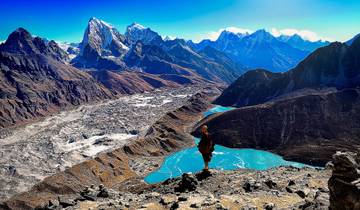
- Hiking & Trekking
- Mountain Hikes
- Christmas & New Year
Everest Base Camp Trek
The trek was even better than I could have imagined. The guides did an absolutely incredible job. The conditions can get hard, but our guides were always there to keep us smiling, laughing and they cared for us the whole way. I would highly recommend this trek to anyone.
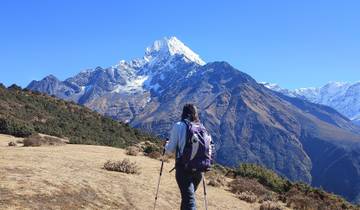
What’s not to like. These guys are amazing

Everest Base Camp Trekking
I recently completed the EBC trek return by helicopter, and I must say, the logistics and transportation arrangements made by this company were top-notch. Every detail was taken care of, ensuring a seamless and stress-free journey. Our guide Lakpa played a crucial role in making this trek a success. His knowledge about the area was impressive, and his friendly nature made us feel comfortable throughout. Despite it being the off-season, Lakpa managed to find excellent guest houses for us to stay in. I highly recommend this trek and the exceptional guide services provided by Lakpa and this company.

Everest Base Camp Trek 12 Days
I recently had the incredible opportunity to embark on a 12-day Everest Base Camp Trek with Sherpa Expedition, and it was truly a once-in-a-lifetime experience that exceeded all my expectations. From the moment I contacted them to inquire about the trek to the moment I said goodbye to my guide and porter at the end of the journey, Sherpa Expedition provided exceptional service and support every step of the way. The team at Sherpa Expedition was professional, knowledgeable, and passionate about ensuring that my trek was not only safe but also enjoyable. Our guide was experienced and had an in-depth understanding of the local culture, history, and geography of the region, which added so much depth to the trek. He was also very attentive to our needs, constantly checking in on our well-being and making sure we were acclimatizing properly to the high altitudes. The itinerary for the trek was well-planned and allowed us to acclimatize gradually as we made our way to Everest Base Camp. Each day brought new breathtaking views of the Himalayas, and the sense of accomplishment upon reaching Base Camp was truly indescribable. The accommodations and meals provided during the trek were comfortable and delicious, giving us the energy we needed to continue our journey each day.

AN incredible trip. Best to get active/be in shape beforehand to fully enjoy it. The guides are incredible and the sights are nothing I had ever seen before. I will remember this trip forever.
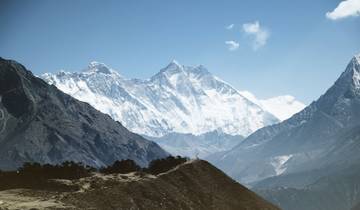
Everest Base Camp (13 Nights 14 Days) Trek
My dream come true...thank you World Travel Experiences team for perfectly arranging my trip to EBC. We really had a great time at Everest region. Highly recommendable..!!!
- 10% deposit on some dates Some departure dates offer you the chance to book this tour with a lower deposit.
- Book With Flexibility This operator allows you to rebook your dates or tours with them for free, waiving change fees.

We have recently completed the Everest base camp 9 day trek with Alpine Ramble. We would like to say a massive thank you to our guide Suresh for all the support and help he gave us while trekking to Everest base camp. It was the most wonderful experience and this was enhanced greatly by our wonderful guide and porter that we pre booked before the trip. Our guide was highly knowledgeable on how to keep us safe and made constant checks on us especially on myself, as I struggled when it got really cold. Since we were completing the trek without any acclimatization days our main concern was to not fall ill and get altitude sickness. Our guide made constant checks on us and regularly checked our oxygen levels. Dill, the manager of Alpine Ramble was also at hand and we had good communication with him before the trip, during the trek and after. I would highly recommend anyone wishing to do Everest Base Camp to book through Alpine Ramble and you won't be disappointed.

Everest Base Camp Trek 16-day
They are a group of local Nepalese professional guides who are outstanding in all aspects. It was a very good decision to entrust our first Nepal and Everest trek, including the Kathmandu tour, to them. Ganga, the leader, was very accommodating to any sudden health problems or schedule changes during the itinerary, and the guides worked together as a team and did their best to ensure the best memories for our guests, considering their physical condition. Thanks especially to Uttam! I will never forget seeing Everest at sunset from Kala Patthar. At the end of the trip, in addition to the Certificate, we received some nice souvenirs. The base hotel in the Thamel area of Kathmandu was also very comfortable. From the airport pick-up to the departure, everything was taken care of. I would recommend them to anyone considering a trip to Nepal.

Everest Base Camp Trek with Helicopter Return
Excellent trip to Everest base camp! If you are planning on exploring (the base of) the top of the world -please book with Nepal Trekking Routes. We had a wonderful experience- before we decided to even book our trip the owner answered every question in a timely manner (I asked a lot of questions). We were greeted at the airport and taken directly to our hotel (amazing perk after traveling over 24 hours). Our tour guide Nawin was fantastic, he catered to every request and was an excellent source of information and inspiration (emphasis on inspiration, hiking to EBC was challenging at times). We made it to EBC! Nepal Trekking Routes Really went above and beyond to make sure we had a great trip- upon our return to Kathmandu they also arranged transportation to the airport and even checked in to make sure we made it back to Miami (excellent customer service). Bottom line we had a magical trip through Himalayas-Nepal trekking routes made it possible!
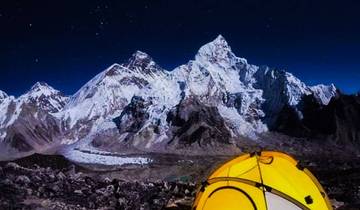
Ram was the perfect guide for our trip. When one of our party wasn’t feeling well he knew exactly what was required and sorted the whole situation. He is the guy you want in an emergency.

Everest Base Camp Trek 15 Days Full Board
Nepal Trekking Routes you guys were amazing. They were great to deal with from organising extra hotel stays to adjusting our trek by skipping a rest day (totally our choice) and organising our flights back on time without asking! Mr Bishnu was amazing! He was such a delight to have him along the way with plenty of laughter and jokes! He took care of us by checking on our health and ensuring we were comfortable each day. I loved that he would always walk behind us without fail so we could set the pace. He was always putting us first - Thanks Boss :) I would highly recommend the guys at Nepal trekking routes, very professional, organised and so easy to deal with! Thank you for organising a one in a life time experience for us. Skye & Dan

This was by far one of the coolest things i've done in my entire life. Super challenging and super rewarding all at once! Madan and Rupesh were some of the greatest trek guides that I've ever had on any continent - they were so knowledgeable about the history of the trek and they ensured that we were deeply rooted in the cultural experience along the trek. They were also incredibly caring - which is important when you are trekking to new altitudes that you have never been before. They would always be asking us how we felt and if they could get us anything at all. Overall, I would recommend this company to anyone who wanted to trek to EBC - and if you want to have the best experience, try to get a trek led by Madan & Rupesh! :)

Epic Everest Base Camp Trek
Fantastic trip! Couldn't have asked for a better guide/assistant guides! Very supportive and ensured that 7/7 of us made it to base camp!

Everest Base Camp Luxury Lodge Trek
The Everest Base Camp Luxury Lodge Trek was an extraordinary experience that exceeded my expectations. The lodges were truly luxurious, with spacious and comfortable rooms that provided a much-needed respite after a long day of trekking. The lodges were also equipped with modern amenities, such as hot showers and Wi-Fi, which made our stay even more comfortable. The staff at each lodge were incredibly friendly and accommodating, always willing to go the extra mile to ensure our comfort and satisfaction. They were also knowledgeable about the local area and offered great insights into the trek and the surrounding landscape. The trek itself was challenging, with steep inclines and rugged terrain, but the stunning views of the Himalayas made it all worthwhile. The landscape was simply breathtaking, with snow-capped peaks, deep valleys, and rushing rivers. The natural beauty of the region was truly awe-inspiring and left a lasting impression on me. Overall, the Everest Base Camp Luxury Lodge Trek was an unforgettable experience that I would highly recommend to anyone looking for a trekking adventure in the Himalayas. The combination of luxurious lodges, friendly staff, and stunning views made this trek an absolute dream.
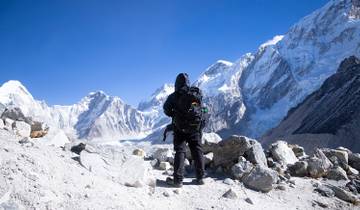
Everest Base Camp Standard Trek- 14 Days
Gyanu was a fantastic, knowledgable and well organised guide who was focussed on ensuring that the Everest trek was an amazing experience. Despite me having a stomach upset, Gyanu ensured I met my goal to complete the trek by advising me to eat Dal Bhat ‘for 24 hour power’ and spending and spending an extra rest day at Namxhe Bazaar. Thanks to Gyanu and his Sherpa Ratna te Everest trek will remain one of my most special and spiritual journeys in over 20 years of independent travel.
What people love about Everest Base Camp Tours
I have already done the review sent from g adventures - another one is duplication.
I couldn’t recommend Nepal Hiking team more highly. I was a solo female traveller, and it could not have been a better trip. From the initial booking process the team have been exceptional in their communication and this continued throughout the entire trek. Once arriving in Kathmandu, you are welcomed by a friendly team and the WoodApple hotel was a fantastic place to find your feet in a good location in Kathmandu that’s not too far away from Thamal to ensure you can buy any last minute gear you may need, the food in the rooftop restaurant was excellent and the views of Kathmandu are fantastic. Our Guides Dhurba and Indra were amazing and really helped to ensure this was a trip of a lifetime. The knowledge they have about the Himalayas ensured no question went unanswered and they set a perfect pace for the group to make sure we all reached base camp but also really enjoyed the entire experience with plenty of laughs along the way. If you are considering doing the EBC… do it! And if your considering which company to go with …. Book with ‘Nepal Hiking Team’.
My Everest Base Camp trek with Sherpa Expedition was nothing short of incredible. The team's attention to detail and dedication to ensuring a safe and enjoyable experience were evident throughout the entire journey. The guides were not only knowledgeable about the area but also incredibly supportive and encouraging. The breathtaking landscapes, challenging yet rewarding trails, and warm hospitality made this trek a once-in-a-lifetime adventure. I am grateful for the memories created and would wholeheartedly endorse Sherpa Expedition for their exceptional service
Everest Base Camp Tours starting in:
- Kathmandu (301)
- Group (380)
- Hiking & Trekking (348)
- Personalized (249)
- Fully Guided (226)
- Active (222)
- Partially Guided (193)
- Family (188)
- Custom (61)
- Explorer (53)
- Private (40)
- In-depth Cultural (22)
- Small Group (259)
- 7 Day Tours (6)
- 10 Day Tours (29)
- 2 Week Tours (137)
- 3 Week Tours (145)
- 4 Week Tours (10)
- Spring 2024 (316)
- Summer 2024 (270)
- Fall / Autumn 2024 (298)
- Winter 2024 / 2025 (257)
- Spring 2025 (192)
- Summer 2025 (147)
- Fall / Autumn 2025 (168)
- Winter 2025 / 2026 (151)
- April 2024 (304)
- May 2024 (312)
- June 2024 (262)
- July 2024 (228)
- August 2024 (240)
- September 2024 (297)
- October 2024 (296)
- November 2024 (284)
- December 2024 (256)
- January 2025 (181)
- February 2025 (171)
- March 2025 (189)
- April 2025 (189)
- May 2025 (182)
- June 2025 (145)
- July 2025 (128)
- August 2025 (134)
- September 2025 (167)
- October 2025 (168)
- November 2025 (166)
Travel Styles
- Budget (68)
- Luxury (35)
- Singles and Solo (211)
- For Couples (64)
- Seniors (119)
How to trek to Everest Base Camp

Jun 20, 2023 • 10 min read
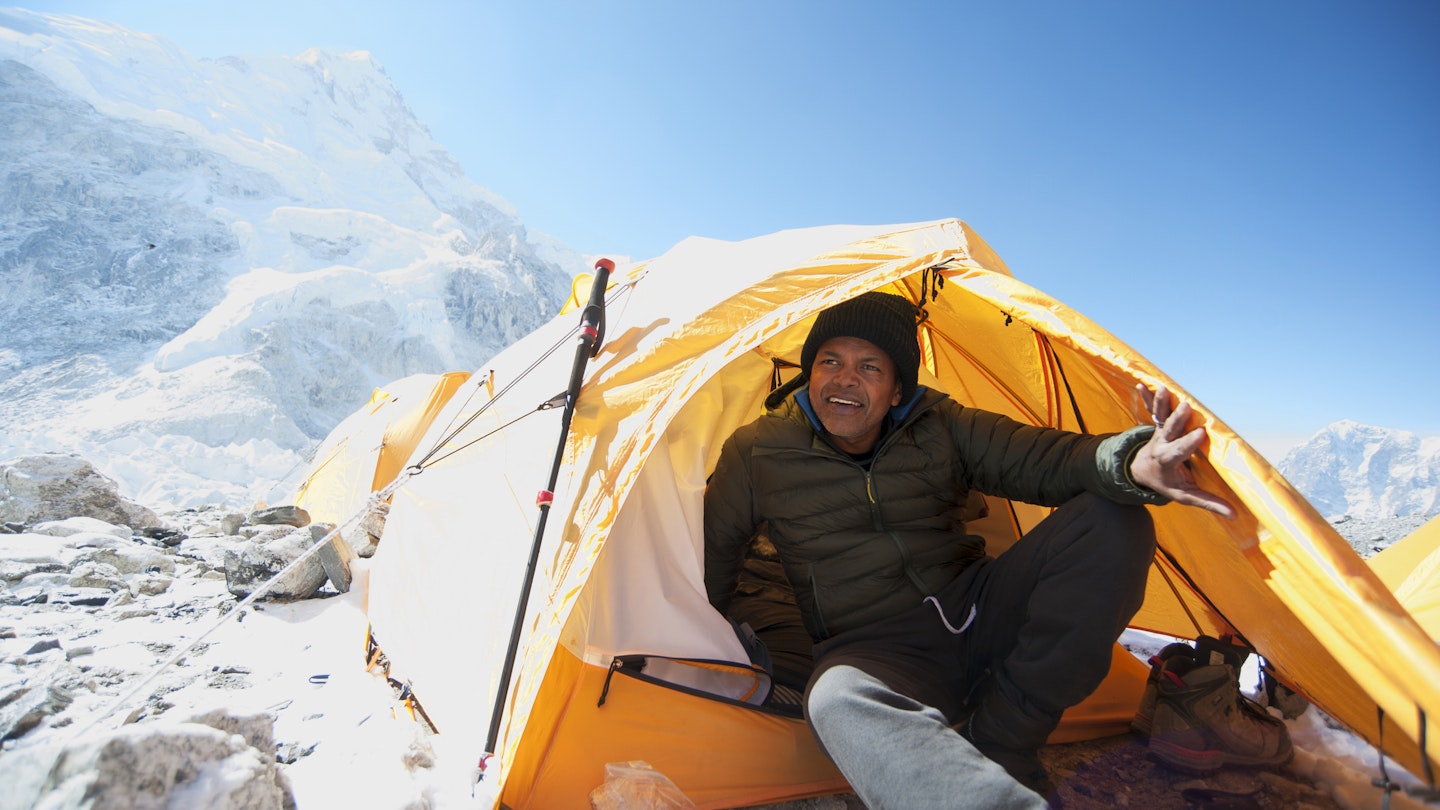
From permits to teahouses, here's everything you need to know about trekking to Everest Base Camp © Mint Images / Getty Images
Top of many people's travel bucket lists, the trek to Everest Base Camp is often the first thing people think about when they start dreaming of a trip to Nepal .
The walk takes trekkers past Sherpa villages and Tibetan-style monasteries, right up into the heart of the high Himalaya, into a breathtaking world (literally) of iconic glaciers, lakes and the tallest peaks on earth. It's probably the world's most famous trek.
But what is it actually like to trek to Base Camp? Is it something within your capabilities or budget? What should you bring? And, most importantly, can you get a proper coffee en route?
I just returned from trekking to Everest Base Camp for Lonely Planet's Nepal guide . Here’s what I think you need to know.
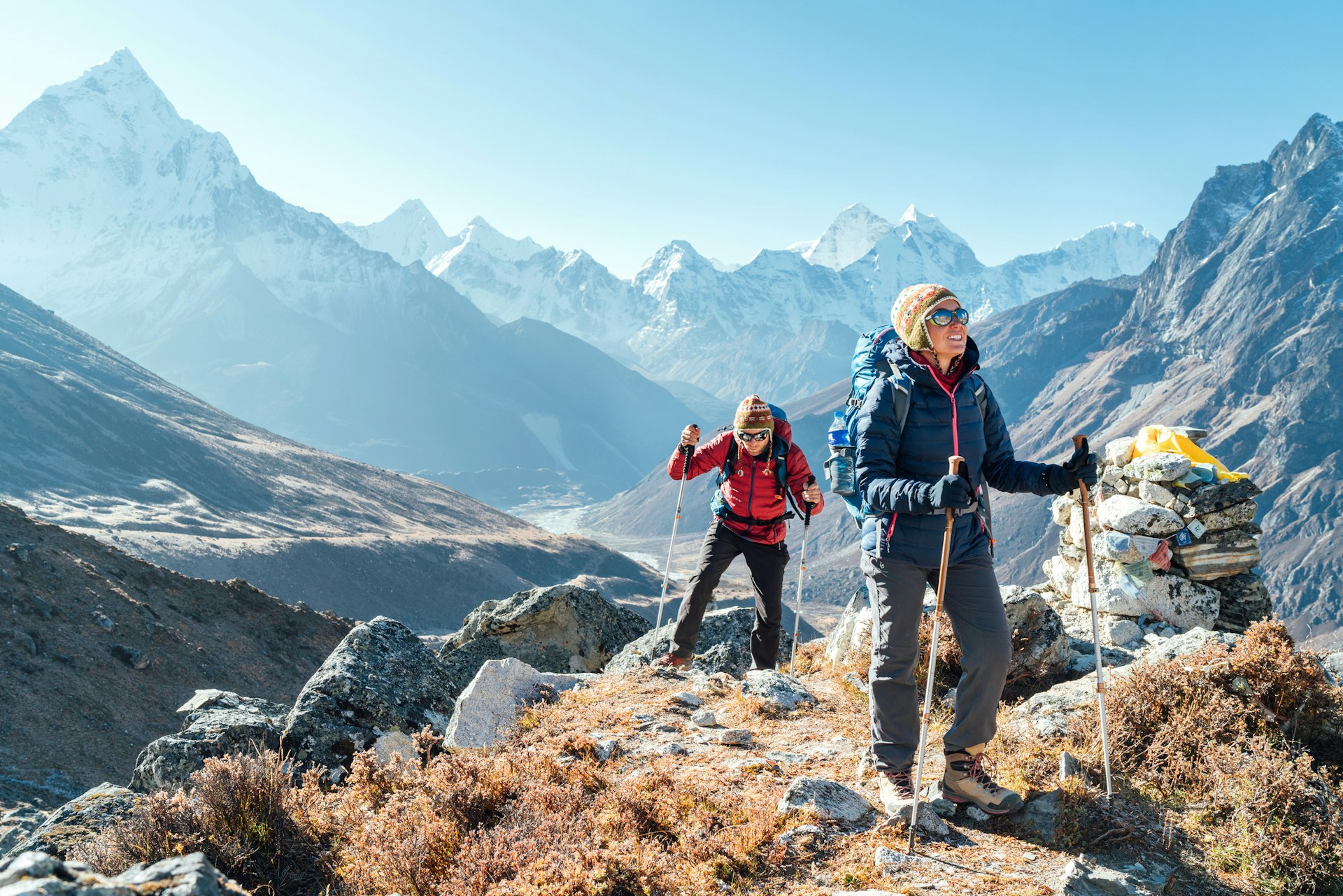
What's so great about the Everest Base Camp (EBC) trek anyway?
Firstly, the mountain scenery surrounding the world's highest peak is truly spectacular. The sublime views of Ama Dablam, Pumori, Nuptse and Thamserku peaks are unbeatable and constantly change as you progress along the walk. The Sherpa villages and monasteries are fascinating places to visit and the lodges (called teahouses) are the best in the world.
The knowledge that you are walking in the expedition footsteps of Hillary, Tenzing, Messner and others is a thrill. Anyone who has read Into Thin Air will be moved by the memorial stupas of Rob Hall, Scott Fischer and others who have lost their lives on the mountain. And then there's the fact that you will have reached the base of the world's highest peak; whether you call it Chomolongma (Tibetan), Sagarmatha (Nepali) or Everest, it’s a rush all the same.
And what’s not so great about the Everest Base Camp trek?
Well, if you force us to play devil's advocate… EBC is one of the busiest trails in Nepal. In the high season months of October and November you'll be walking with thousands of other trekkers, competing with them to get a bed, a lunch order or an airplane seat. There will be lines at checkpoints and even at moments on the trail itself. In bad weather you might be stranded at Lukla airport with hundreds of other trekkers, all trying to get on the first flight out. It's not quite the Zen-like wilderness experience you may have been imagining.
Bear in mind also that even after a solid week of walking, your view of Everest will be partial at best (for infinitely more dramatic Everest views visit the northern Everest Base Camp in Tibet ). If you trek outside of May's expedition weather window you won’t actually find much to see at Base Camp beyond a boulder hastily spray-painted with "Everest Base Camp".
If this has put you off, don’t worry; there are dozens of other fantastic treks in Nepal .
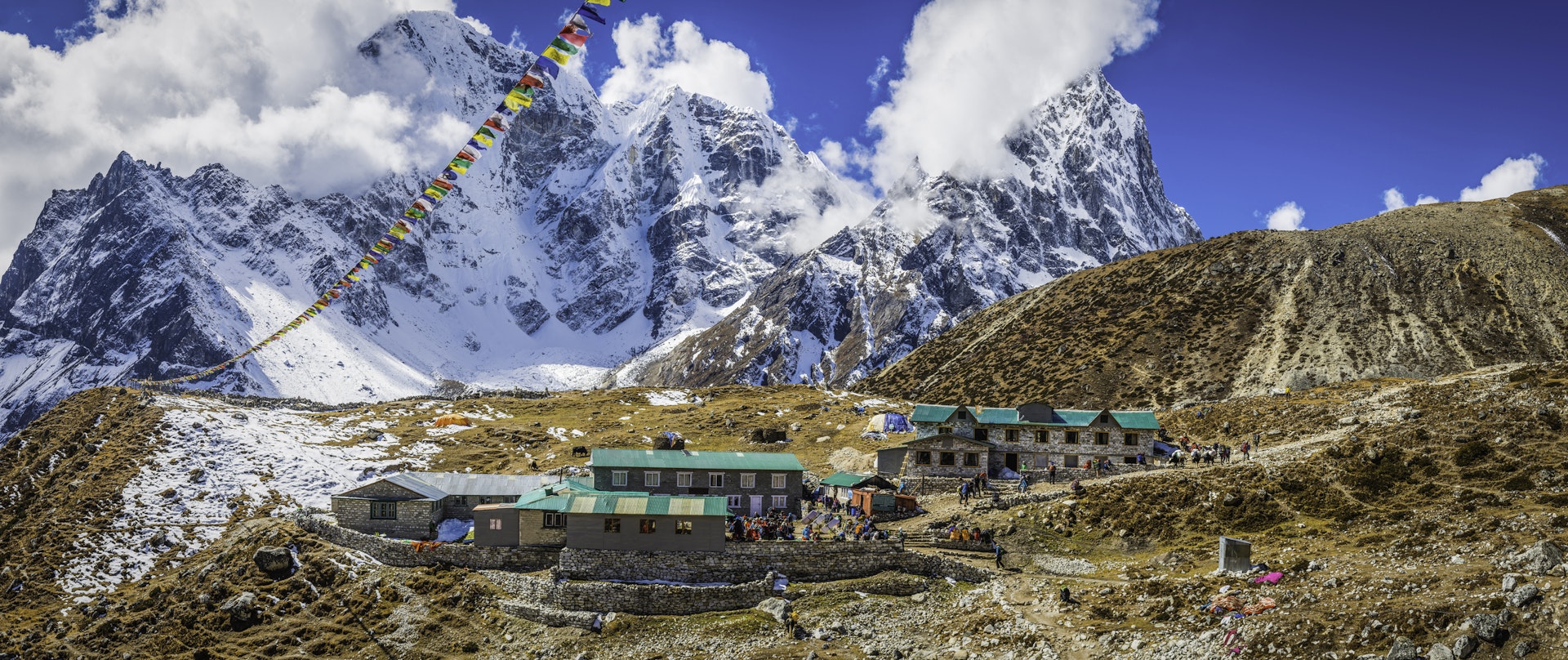
How long does it take to trek to Everest Base Camp?
The walk from the airport at Lukla to Everest Base Camp and back takes a minimum of 15 days. Several of the days are surprisingly short, but this is because you have to figure in time to acclimatize to the high altitudes.
If you can, it's definitely worth adding on a couple of extra days to this basic itinerary. Some of the most dramatic (and least visited) views are from detours off the main trail. I always add two days to visit Thame, two days to visit Chhukung and, if possible, three or four days to visit the lakes of the Gokyo Valley – probably the most beautiful scenery in the Everest region.
Be sure to also budget an extra day or two as a transport buffer. Weather-related flight delays in and out of Lukla are not uncommon (I had to wait six days for a flight to Lukla on my recent trip) so you need some buffer time if heading back for an international flight home.
How challenging is the trek to EBC?
In terms of physical effort, the EBC trek itself is not especially tough. There are only a couple of steep climbs, lasting about an hour each, and most days involve less than four hours of walking.
The thing that makes the EBC trek tough is the altitude. Base Camp is at 5600m (18,373ft) and you will need to spend one or two nights above 5000m (16,404ft). Above 4000m (13,123ft) you are going to feel increasingly lethargic and out of breath as the amount of oxygen in the air decreases. Combine this with the cold, the discomfort of being at altitude and the compounded tiredness from walking for two weeks straight, and you can see why the whole trek experience is definitely a physical challenge.
While you don't need to be an athlete to walk to EBC it is still a good idea to start a fitness regime in the weeks leading up to your trek. You'll enjoy the walk so much more if you are in decent shape.
When is the best time to trek to Everest Base Camp?
October and November bring the best weather and the clearest skies but these are also the most popular months. The second most popular season is April to early May, when spring blooms and expedition traffic bring extra interest to the trail. To avoid the crowds but still enjoy clear views, pack an extra thermal layer and come in December or March.
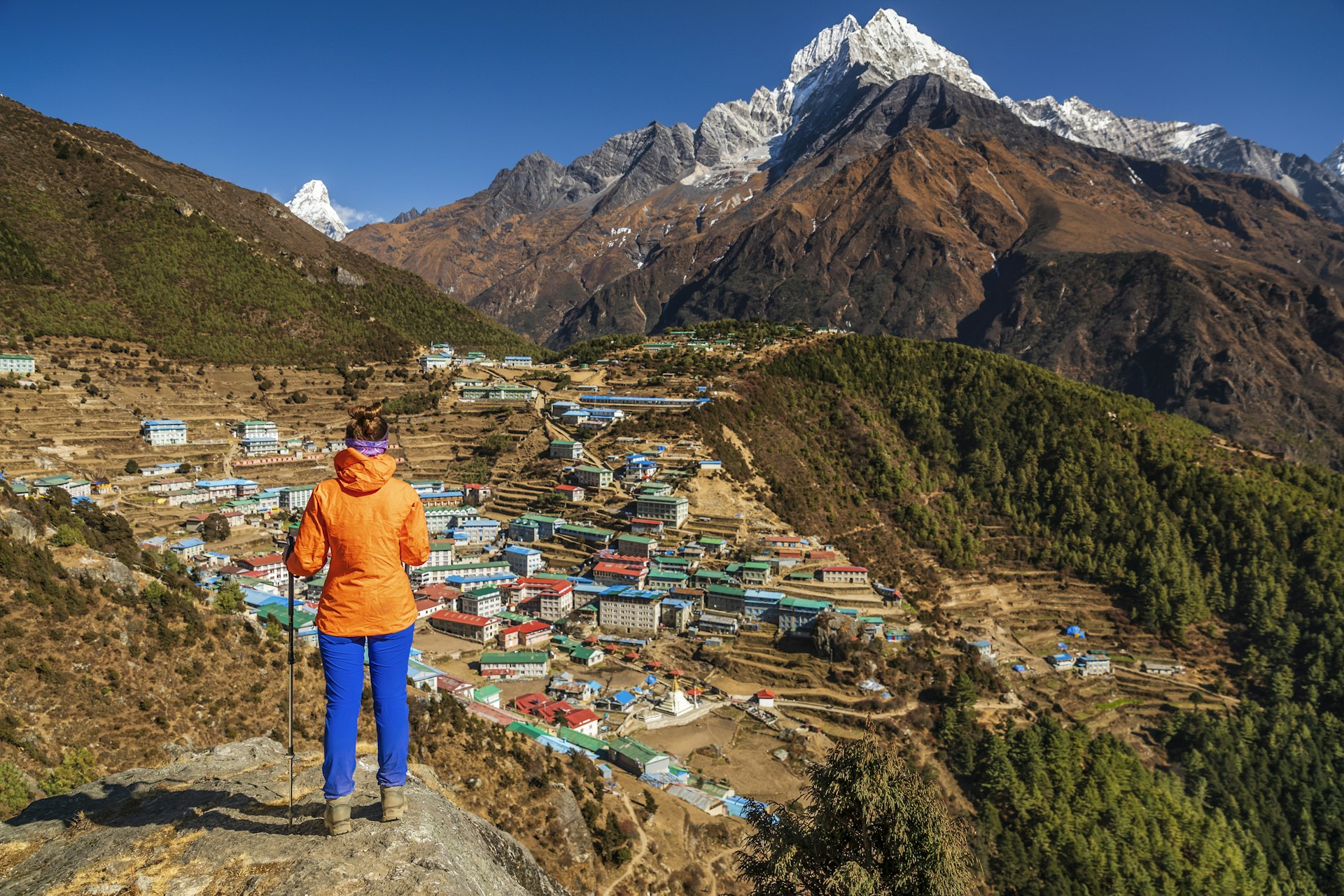
What can I do to avoid altitude sickness?
The majority of people who fail to reach Base Camp do so because they failed to acclimatize properly to the altitude. It's essential not to gain altitude too quickly by following the recommended overnight stops and limiting your daily altitude gain to a maximum of 400m (1312ft) when above 3000m (9843ft).
Be sure to add in acclimatization days at both Namche Bazaar and Dingboche, during which it's a good idea to hike to higher altitudes during the day, returning to sleep lower at night.
What are the teahouses like?
At lower altitudes the Everest lodges are the most comfortable in Nepal. Private rooms are the norm, many of which have private bathrooms. Showers are available at most places, though the hot water supply can be patchy. All have cozy dining rooms with tables arranged around a central dung-fueled stove. There are even a few luxury lodges along the trail.
In budget lodges, or when you get above Dingboche, things get simpler, with rooms offering little more than a collection of plywood walls, a solar light and a foam mattress. Toilets are a mixture of seats and squatters; sometimes outdoors, always freezing. A blanket is normally supplied but be sure to bring a four-season sleeping bag rated to well below 0°C (32°F).
What's the food like?
Menus in teahouses range from pasta and pizza to spring rolls, fried potatoes and soups, though the most popular meal is a daal bhaat , a set Nepali meal of rice, lentil soup and fried vegetables, normally served with a papad and pickle, and with a refill included. It's the most filling and environmentally sustainable meal you can order.
In villages such as Namche Bazaar and Dingboche you will also find bakery-cafes serving espresso and slices of delicious apple pie, plus shops selling everything from Snickers bars to bottles of beer. This is one trek where you might actually gain weight!
Can I get wi-fi or phone coverage?
Most lodges offer wi-fi, either free of charge or for a few dollars per day (at higher elevations). Above Namche Bazaar you will likely have to buy a scratch card, giving you unlimited data for twelve hours (AirCell) or a specific amount of data over a month (Everestlink). Depending on your network provider you'll likely get data and a phone signal at lower elevations, and possibly even at Everest Base Camp, but not at other high altitudes. So yes, in theory, you can Skype all your friends from Base Camp!
What should I bring?
Warm clothes are a must, and you should pack thermal underwear, a down jacket and fleece hat. Comfortable hiking boots and good, padded socks are also essential. Sun block, a sun hat with a brim and good sunglasses are important against the strong high-altitude light.
Morale-boosting snacks like chocolate and salami are always helpful, as is a book and smartphone with mapping software like Maps.me. Bring water purification of some sort. If you forget something, don’t worry, you can buy almost anything you might want in Namche Bazaar these days (from ice axes to cans of Pringles), though at prices higher than in Kathmandu .
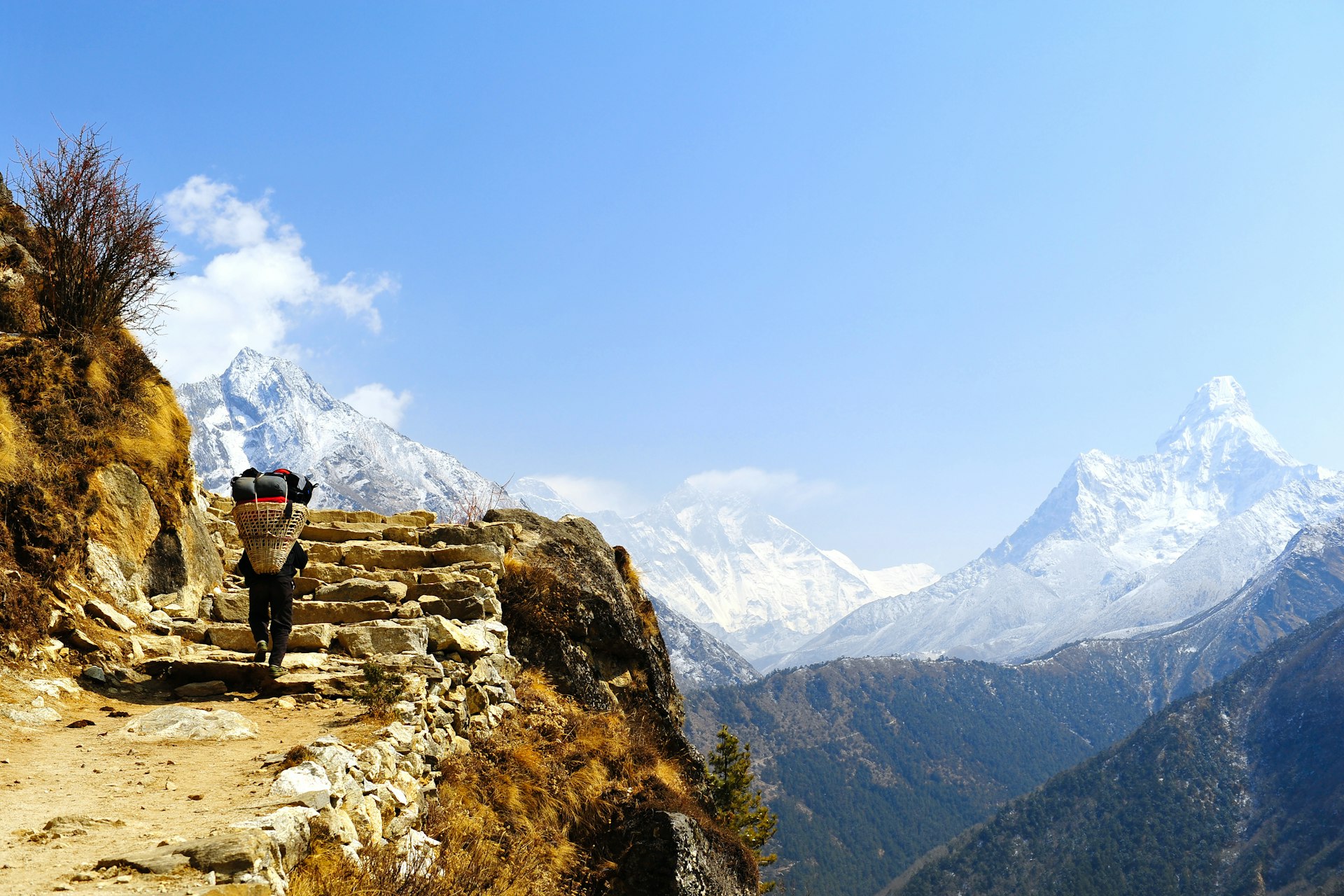
Do I need a porter and guide?
In terms of finding your way you don't need a guide if you are an experienced walker, as the route is clearly marked and well-trod. A guide can be useful for smoothing your way at teahouses, making sure you get your food on time and helping you pay your bill. It's important not to trek alone, so solo trekkers should find a companion or take a guide or porter.
A porter will carry a bag of around 15kg, freeing you up to pack a few extra chocolate bars and enjoy the walk with little more than a day pack. Not having the strain of carrying a full pack is worth its weight in gold for anyone over the age of 50. Trust me.
How much does the Everest Base Camp trek cost?
For a room in a lodge and three meals a day, figure on US$20–25 per person per day, a bit more if you want a room with a private bathroom and the occasional slice of apple pie. Add on another US$5 every time you want a shower. Figure on an additional US$20 per day for a porter, and US$25–30 for a guide, and budget 10–15% of that fee for an end-of-trip tip.
You'll pay a bit more to have a Kathmandu-based trekking company arrange your entire trek, and a lot more for the convenience and backup of an international trekking tour.
Do I need any permits?
You will need to buy an Everest region permit (US$20) at Lukla, as well as a Sagarmatha National Park entry ticket (US$30) at Monjo. Currently that's all you need.
How can I trek more sustainably?
With 60,000 trekkers and guides headed to the Everest region, it’s important to minimize your impact on the region. Firstly, don't buy bottled water on the trek, as the bottles are nonrecyclable and are a huge problem throughout the region. Bring a system of water purification, like a Lifestraw or Sawyer filter, a Steripen or chemical purification.
Secondly, carry all your trash out (especially batteries), and sign up for the Carry Me Back program, whereby you carry a 1kg bag of trash from Namche Bazaar to Lukla, for it to be recycled in Kathmandu.
Finally, be polite to the Sherpas and porters you meet en route, as well as your fellow trekkers. Walk clockwise around stupas and be respectful at monasteries and shrines.
How do I get to Lukla to start the trek?
Flights run multiple times daily between Kathmandu and Lukla, taking around 30 minutes. During high season however you may have to drive five hours from Kathmandu to Ramechhap airport to catch your Lukla flight there.
It's also possible to fly or drive to Phaplu and walk two days to Lukla from there, or walk from Shivalaya to Lukla in seven days as an excellent pre-trek warm-up.
This article was first published January 2013 and updated June 2023
Explore related stories
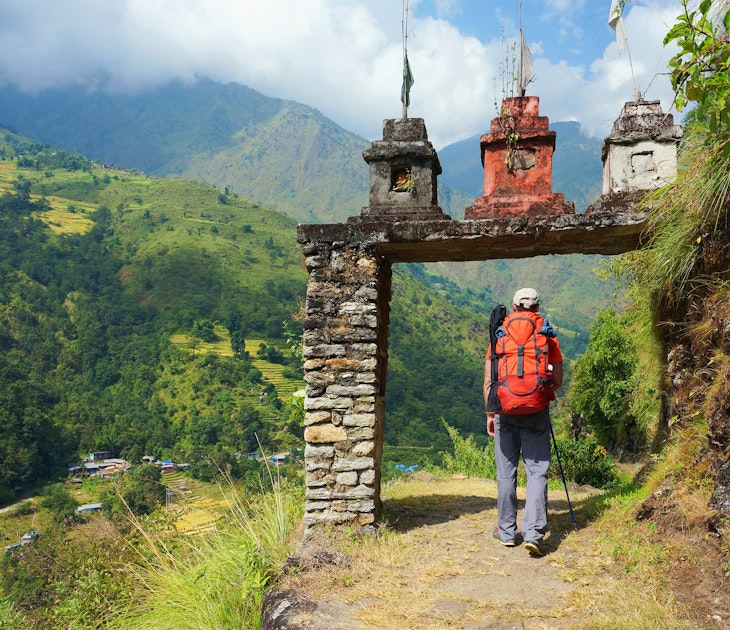
Mar 14, 2023 • 4 min read
To reduce accidents and promote jobs, Nepalese authorities recently announced a ban on solo trekking in national parks and conservation areas.

Jul 13, 2022 • 8 min read

Jan 31, 2022 • 6 min read
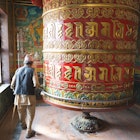
Jan 9, 2022 • 8 min read

Sep 14, 2021 • 11 min read

Jan 28, 2021 • 5 min read
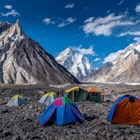
Jan 12, 2021 • 7 min read
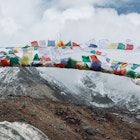
Dec 10, 2020 • 6 min read
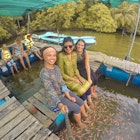
Jan 7, 2020 • 6 min read
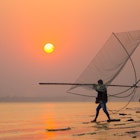
Oct 10, 2019 • 9 min read
Best Time to Visit
Weather & Climate
Kathmandu Airport Guide
Top Destinations in Nepal
One Week in Nepal
Tipping Guide
Getting Around
Top Things to Do in Nepal
Complete Guide to Kathmandu
Top Things to Do in Kathmandu
Top Things to Do in Pokhara
Sacred Sites
Amazing Festivals
Top National Parks
Must-Try Food
Annapurna Circuit
Manaslu Circuit
Himalaya Trail
Facts About Mt. Everest
Trek to Everest Base Camp
Everything You Need to Know About Trekking to Everest Base Camp
:max_bytes(150000):strip_icc():format(webp)/greg-rodgers-adventure-ed92646b25f247049e53af6d36f6c15f.jpg)
Jason Maehl / Getty Images
Everest Camp II
Trekking to Everest Base Camp in Nepal's Sagarmatha National Park is the adventure of a lifetime. Although actually climbing Mount Everest is out of reach for many of us, anyone with enough grit and good enough fitness can reach EBC and the Khumbu Icefall, the starting point for climbing Mount Everest. (You’ll need an $11,000 permit and some serious equipment to go any higher from there!)
The Himalayan scenery here is unrivaled on earth. Snowy sentinels will witness your struggle toward the top of the world , while stupas, prayer flags, and Sanskrit tablets will remind you of the spiritual significance of the area. Sadly, the numerous memorials to hikers who perished along the trail underscore the seriousness of your undertaking.
You’ll battle freezing cold, thin air, weather changes, and your own body as you ascend. Once at Everest Base Camp, you won’t even get to see the famous mountain itself unless you take a day to climb Kala Patthar (18,519 feet), an adjacent prominence that affords views of the “Holy Mother” when weather permits.
Read on for our complete guide to the Everest Base Camp trek, with information on what to pack, when to go, EBC tours, and more. Note that we’ll only cover getting to South Base Camp in Nepal, not North Base Camp in Tibet .
What to Expect
Trekking to Everest Base Camp involves hiking between lodges (or “teahouses”) found in villages along the trail. Some days may only consist of four hours or so of uphill trekking, depending on how much elevation is gained that day. Sometimes, you’ll have the option of pushing on to another village higher up—but no matter what, you will never gain more than 1,312 feet (500 meters) in a day.
Once above the tree line, the common rooms in your lodges will invariably be heated by yak dung-burning stoves. Weary hikers will hang around these stoves, warming themselves and socializing before retiring early to their unheated rooms. The shared toilets are sometimes located in snowy outhouses.
The village of Namche Bazaar (11,290 feet) is considered the last fully “civilized” stop on the trek to Everest Base Camp. Here, trekkers can enjoy treats from a German bakery while watching screened documentaries. You’ll find last-minute gear and souvenirs for sale along with the last ATM on the trail. You can even indulge at the “highest Irish pub in the world” on your way down after a successful trek!
When's the Best Time to Trek to Everest Base Camp?
The best time for trekking to Everest Base Camp is in either spring (March to May) or fall (September to November). If you want to see the camp in full form with climbers, support teams, and film crews, you’ll need to time your trip with spring climbing season, usually late April or early May. This is also the busiest time to be in Nepal .
For less traffic on the trails, consider making your trek to Everest Base Camp in September or October. Unfortunately, this means hiking in cooler weather with even less daylight than usual.
Avoid making the trek during monsoon season in summer. Humidity reduces beautiful views at lower elevations, and snowfall closes trails at higher elevation.
Adisorn Fineday Chutikunakorn / Getty Images
Should I Book a Tour or Go Independently?
There are three options for completing a trek to Everest Base Camp:
- Book a group tour and have all arrangements made for you.
- Make the trek to Everest Base Camp independently .
- Arrive in Nepal, then hire a guide and/or porter yourself.
No matter which option you choose, try to spend an additional day at Namche Bazaar. The extra time at 11,290 feet reduces some of the effects of elevation later; you’ll enjoy a better overall trekking experience and suffer less. The extra day isn’t “wasted”—many day hikes around Namche Bazaar provide beautiful views while giving your body time to adjust. Your chances of successfully reaching Base Camp vastly improve if you spend more time at Namche Bazaar.
Everest Base Camp Tours
Although the most expensive option by far, having everything organized before you arrive provides peace of mind. You’ll be taken care of all along the way, with access to better safety measures such as supplemental oxygen. Bigger companies use yaks to take your gear ahead; you’ll find it waiting for you in your teahouse room at the end of each hiking day.
You can book an Everest Base Camp tour online from home, or if time permits, do so after arriving in Kathmandu . Booking on the ground through a Nepalese agency saves money and better helps the local economy. You’ll find trekking agencies on every corner in Thamel, but unfortunately, not all are reliable. Choose a reputable agency that’s a member of the Trekking Agencies’ Association of Nepal . You can see in the member directory how long an agency has been in operation, and hopefully, make a better informed decision.
Independent Trekking
First, independently trekking to Everest Base Camp doesn’t necessarily mean solo trekking. Trekking alone in the Himalayas is dangerous no matter your experience level. A simple slip or unexpected weather change could keep you from reaching the next teahouse before temperatures plummet at night.
Independent trekkers can save a lot of money by foregoing organized tours and simply teaming up with other trekkers they meet along the way. (Everyone you meet in the lodges is going in one of two directions: up or down!) The well-marked trail to Everest Base Camp is busy during peak trekking seasons, giving you the best chance of meeting new friends who match your speed and fitness level.
Going independently does carry some risk, of course. You’ll be responsible for your own well-being and making important decisions. On the other hand, you’ll be able to set your own pace and make adjustments based on how well your body acclimatizes. A majority of hiker deaths on the trail each year occur when people in group excursions are suffering from Acute Mountain Sickness (AMS) but don’t speak up. They fear slowing everyone down, or don’t want to forfeit reaching Everest Base Camp.
If guiding yourself, pick up a good trail map in Kathmandu. Don’t rely solely on electronic devices for making survival decisions! You’ll also need to store your luggage at a trustworthy guesthouse or hotel in Kathmandu. Locking duffel bags and padlocks can be purchased in local shops; some owners will buy them back once you return from your trek.
Hiking Guides and Porters
Rest assured: Your pack is going to feel heavier at 15,000 feet than it does at home! Even as an independent trekker, hiring a local guide and/or porter are options. Hiring directly ensures money goes to the Sherpas instead of a Western tour agency that managed to rank well online. Expect to pay between $15 to $20 a day for a porter or $25 to $30 a day for a guide.
You’ll need to negotiate terms and contingencies before hitting the trail. Paying up to half of the porter’s fee up front is common, and you will also be expected to tip guides and porters after the trip. Finalize details and other expenses to avoid a potential disagreement. The agreed daily rate should include their meals, drinks, and accommodation so you aren’t asked for money later.
Guides will approach you on the street in Thamel, however, you should hire only a credible and licensed guide through either a trekking company or your accommodation. You may still be able to hire a porter later on the trail by speaking to the staff at your lodge.
How Much Does It Cost to Trek to Everest Base Camp?
The cost of trekking to Everest Base Camp depends entirely upon your needed level of comfort. One indelible rule holds on the trail: Prices rise as elevation rises. That 50-cent candy bar from Kathmandu is worth $7 at 17,000 feet!
Extremely basic accommodation in teahouses can be found for as low as $5 per night. You’ll be expected to have your meals where you stay. A hearty Nepalese meal of dal bhat can be enjoyed for $6 or less, but expect to pay much more for Western food. A can of Coke can cost up to $5; remember, it’s heavy and had to be carried up by a porter.
Other luxuries add to the cost of life on the trail. A (somewhat) warm shower can cost $5. Charging electronic devices and accessing the internet, if available, cost several dollars an hour, and the solar charging systems are often slow and provide only a weak charge. Depending on your food and drink indulgences, plan to spend $20 to $30 a day living on the trail. This excludes any fees you pay to porters and guides.
If not already covered, your greatest expense will be the short flight to and from Lukla. The 30-minute flight can cost around $180 each way.
Do You Need a Permit for Everest Base Camp?
You’ll need at least two permits for trekking to Everest Base Camp. Your tour organizer will probably provide these, but you’ll need to arrange them yourself if trekking independently.
- Sagarmatha National Park Permit: Get this at the Nepal Tourism Board office in Kathmandu (approximately $25).
- Khumbu Pasang Lhamu Rural Municipality Permit: You will get this permit from a checkpoint in Lukla; it isn’t available in Kathmandu (approximately $17).
- Gaurishankar Conservation Area Permit: You only need this permit from the Tourism Board if doing the longer trek to Everest Base Camp from Jiri instead of flying to Lukla (approximately $17).
The permit system changed in 2018. Disregard any information you read elsewhere about needing a TIMS card for the trek to Everest Base Camp.
Greg Rodgers
What to Pack
Kathmandu, particularly in Thamel, has more than enough outfitting shops for gearing up. Unfortunately, those same shops are stacked with counterfeit gear that probably won’t survive the hardships of the trek. Sifting through the piles of used gear in dark shops requires patience. Prices are inflated, so put your game face on and start haggling !
If you booked a guided tour, find out what your tour company plans to provide (e.g., hiking poles, down jackets, etc) before shopping. Consider bringing mission-critical items from home so that equipment failure doesn’t affect your experience. For instance, you’ll need quality sunglasses to prevent eye injury. Sunglasses for sale locally may have “UV Protection” stickers on them but don’t offer much actual protection.
- Good hiking boots. You should invest in high-quality, waterproof hiking boots and break them in properly before you leave home; painful blisters can ruin an otherwise-excellent trek.
- Lightweight sleeping bag. Rooms along the trek are unheated. Lodges provide weighty blankets for the freezing nights, but you'll appreciate having a layer between you and the unwashed bedding. Even a lightweight silk “sleep sheet” will do the trick.
- Alternate footwear. After removing your muddy hiking boots, a pair of lightweight shoes or sandals comes in handy for wearing around lodges and shared bathrooms.
- Water purification: As elevation increases, so does the cost of bottled water and need to reduce plastic waste. You’ll be drinking more than ever to counter dehydration in the dry air. Although there are many options, the two-bottle, chlorine dioxide system from Aquamira is a reliable solution.
- Trail snacks: Candy bars and nuts provide a much-needed boost to energy and morale while on the trail or in the lodge.
- USB power bank: Keeping batteries charged in the extreme cold is a challenge. If you plan to use a phone for photos or communication, you’ll want to bring along a rugged power bank.
- Diamox tablets: Diamox (acetazolamide) is medication for countering the dangerous effects of AMS. Guides should have some on hand, but independent trekkers will want to buy Diamox to carry. Beware of fake tablets for sale in Kathmandu. Purchase only from legitimate pharmacies—not from shops—and discuss how to use them.
If you won’t be taking your poles and other gear home after the trek, consider giving it directly to the Sherpas you meet in Lukla.
John Elk III / Getty Images
How to Get There
Fly into Kathmandu's Tribhuvan International Airport (KTM) and plan to spend a few days resting and preparing for the trek. Unless you’ll be starting the trek in Jiri—which requires a seven-hour bus ride and an additional five to seven days of trekking—you’ll need to book a flight to Lukla.
Taking the small prop plane from Kathmandu to Lukla (LUA) is one of the scariest and most scenic aviation experiences many travelers will have. Although not the highest airport in the world , weather and visibility changes have caused enough crashes at Tenzig-Hillary Airport in Lukla to earn it the title of “most dangerous airport in the world.”
The trek to Everest Base Camp begins in Lukla and finishes at the infamous Khumbu Icefall!
How Dangerous Is Everest Base Camp?
Although frostbite and rock slides are hazards along the trail, the biggest danger—by far—comes from the high elevation. Once symptoms of AMS begin (severe headache and nausea), you need to descend as soon as possible. Ideally, you’ll ascend slowly enough to minimize altitude sickness in the first place.
The CDC recommends never gaining more than 500 meters in one day and taking a rest day for every 1,000 meters gained. Whenever possible, you should descend to sleep at a lower elevation than the highest point reached during the day. Track and do the elevation math as though your life depends on it.
The high elevation and thinner air introduces additional risks. For one, your body will increase its production of red blood cells, causing excessive urination; be sure to drink plenty of water to avoid dehydration. Many trekkers will also experience the dry, hacking "Khumbu cough" from panting heavily in the thin air and breathing in the dust of the region. You can cover your face with a bandanna or balaclava for some protection. The cough usually goes away after time. Ultraviolet rays, too, are more damaging in the thinner air, so protect your skin, lips, and eyes by applying high SPF sunscreen and lip balm, wearing long sleeves, and donning sunglasses.
Finally, yak trains always get the right of way! Never share a bridge crossing with one, and always pass them on the “inside” of the trail. Startled yaks are unpredictable and sometimes knock trekkers off the trail.
Additional Tips
- Take your stocking up on snacks seriously. Pack candy bars, even if you wouldn’t ordinarily indulge at home. You’ll experience strong cravings at higher elevation. Hikers are willing to spend $7 or more for Snickers bars near Everest Base Camp!
- The weather in the Himalayas changes quickly and unpredictably. Flights to and from Lukla frequently become delayed by a day or two, maybe longer if a winter storm system sets in. Add some buffer days to your Kathmandu itinerary just in case this happens.
- Before retiring to bed, ask your teahouse staff to pour boiling water into your bottles and use them as bed warmers. Fair warning: They’ll probably be frozen next to you in the morning!
- Sleep with your phone and any batteries in the bed with you. Your body heat will protect battery life a little.
- Weight limitations imposed by airlines that fly to Lukla are strictly enforced. If an airline says 33 pounds (15 kilograms), that includes all baggage , stowed or carried. Don’t risk having to forfeit gear in Kathmandu Airport because you’re a pound or two over the allowance. You can stuff some items into your pockets, within reason.
How to Go Teahouse Trekking in Nepal
The Best 12 Hikes in Nepal
Solo Trekking in Nepal's Everest National Park
How to Choose and Prepare for a Hiking Trip
Independent Trekking in Nepal
The World's Highest Places and Attractions That You Can Visit
Five Amazing Hiking Routes Among the High Mountains of the Himalayas
The Most Beautiful National Parks in Nepal
A Guide to Tipping in Nepal
The Complete Guide to Climbing Morocco's Mount Toubkal
Nepal's Great Himalaya Trail: The Complete Guide
How to Trek Nepal's Manaslu Circuit
The Different Types of Adventure Travel
The Top 15 Destinations in Nepal
Where Is Mount Everest?
You are using an outdated browser. Please upgrade your browser or activate Google Chrome Frame to improve your experience.

- Trip Styles
- Destinations
Everything You Need to Know about Trekking to Everest Base Camp
- All Inspiration and Destinations
- Canadian Rockies
- New Hampshire
- New Zealand
- North Carolina
- Vancouver Island
- Washington State
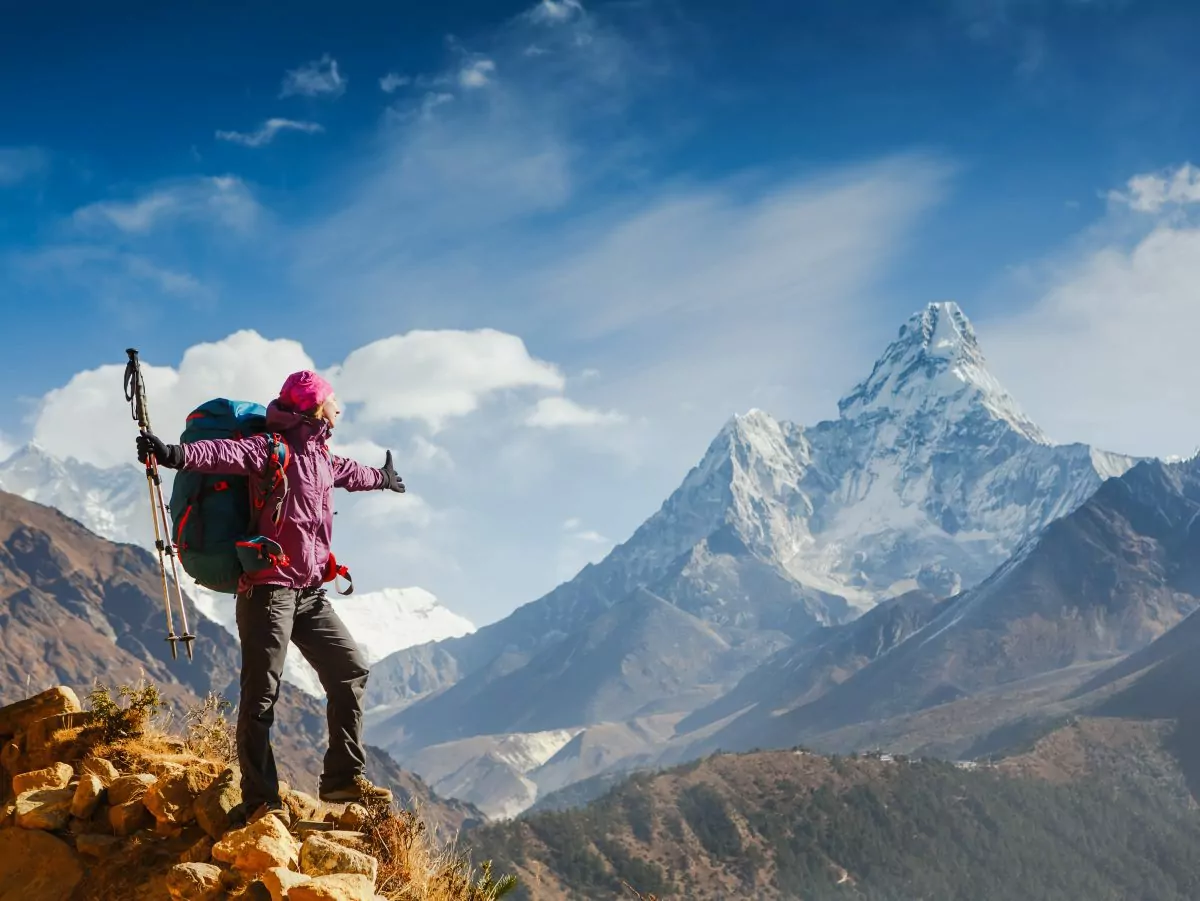
“Bisarti Janey-ho!” My guide, Pasang, exclaimed for probably the tenth time that day. The Sherpa saying meant ‘slowly we go!’, and it was one of Pasang’s favorite sayings. I laughed. Yes, I was moving slowly. Slowly, behind a train of yaks, loaded down with colorful expedition duffels and climbing gear, making its way towards Everest Base Camp. Slowly, behind other trekkers whom I had shared meals with in the teahouses, swapping stories about adventures around the world. Slowly, with the towering peaks of the Himalayas above me. I mouthed their names as our guide Pasang pointed them out. Lobuche, Nuptse, Lhoste. One stood above the rest, and I knew that it had to be Mount Everest. Sagarmāthā Pasang said, meaning ‘Goddess of the Sky’ in Nepali. I strained my neck, taking in its full relief stretching impossibly high. In just one more day of trekking, we would be at its historic base camp.
Trekking to Everest Base Camp (EBC) is a challenging yet rewarding goal for dedicated hikers and adventurers. Read on for everything you need to know about trekking to EBC.
Why Hike to Everest Base Camp
The allure of the Himalayas (and specifically Everest) has drawn many to their spectacular peaks. The trek to Everest Base Camp is one of the most iconic in the region; it is a challenging but achievable goal for anyone to undertake. Many hikers and world travelers (myself included!) have it at the top of their bucket list, and for good reason.
The hike to Everest Base Camp combines all the elements of a good adventure. Breathtaking scenery abounds, from lush forests, picturesque river valleys, mountain passes adorned with prayer flags, and the peaks of the Himalayas towering above. Apart from the literally breathtaking views and high altitudes, the trail is also steeped in the rich culture of Tibetan Buddhism and the storied history of exploration and climbing expeditions.
What to Expect
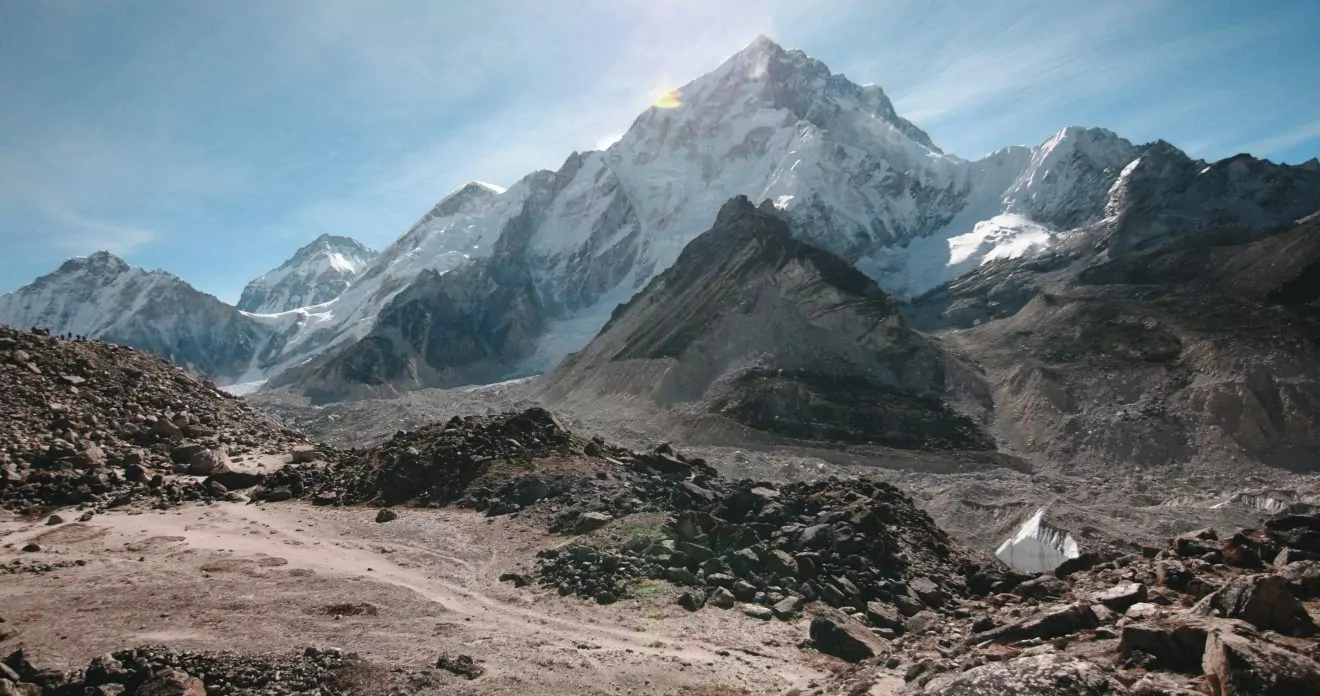
Photo by colour comet on Unsplash
The trek to Everest Base Camp is a 65 miles (105 km) out-and-back trail, and most hikers will take around 10 to 14 days to travel to and from Base Camp. This trip length will allow you adequate time for acclimatizing at a relaxed pace.
The trail begins in the relatively lush (though still high altitude!) river valleys of Lukla and Phakding, carrying hikers across suspension bridges adorned with prayer flags, before ascending through iconic villages in the Khumbu region of Namche Bazaar and Tengboche. Once past the Tengboche Monastery, a UNESCO World Heritage site at an altitude of 12,687 feet, you’ll get your first glimpse of Mt. Everest in the distance. The trail will take hikers through a glacial moraine, an ancient swath of rocks and ice deposited from the receding Khumbu Glacier. You’ll gain elevation slowly as you climb closer and closer to the heart of the Himalayas. Along the way, you will trek through Sherpa villages that dot the landscape, stopping for warm drinks and snacks and staying in rustic tea houses.
We recommend taking at least 10 days to complete the trek to Everest Base Camp, but you can easily extend the trip. Once acclimatized, many hikers will continue on to other treks in the region such as Gyoko Lake or the Three Passes Trek.
Everest Base Camp Itinerary
Pre-trip: kathmandu.
As eager as you may be to get into the mountains, many hikers enjoy spending a few days in Kathmandu to recover from jet lag and experience Nepali culture. I particularly enjoyed seeing Buddhist monks conduct the Kora at the Boudhanath Stupa, exploring the temples of Bhaktapur, and getting lost in the maze of markets and bazaars of Kathmandu.
Pro Tip: Before trekking, stock up on any last-minute outdoor gear or supplies in Thamel. This area is extremely visitor-friendly, and the many outdoor shops are a great place to cop knockoff down jackets and expedition gear.
Day 1-3 : Lukla – Phakding – Namche
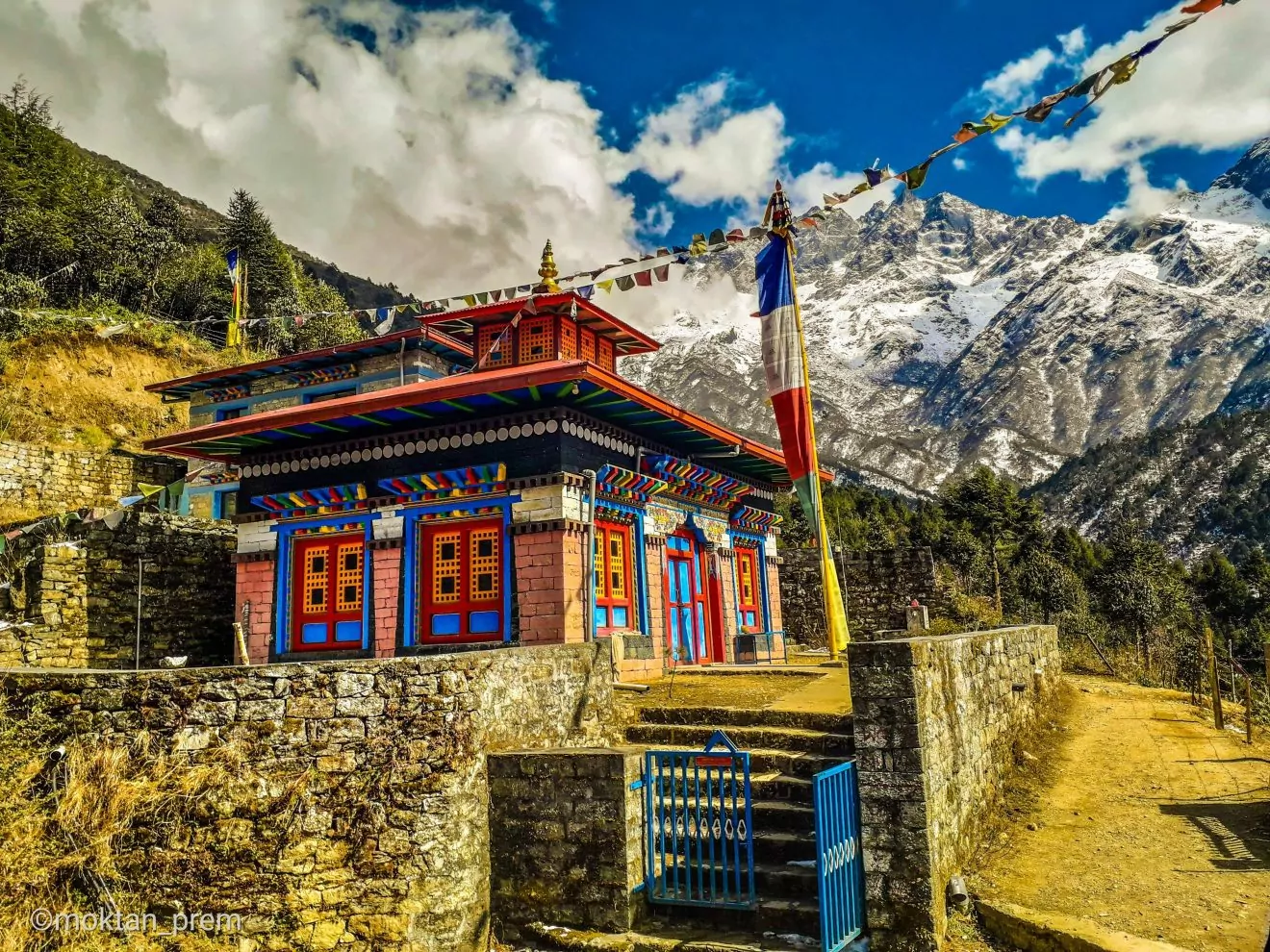
Photo by Prem Babu Moktan on Unsplash
The first few days of the trek are slow, allowing trekkers to acclimatize, stretch their legs, and enjoy being in the mountains. You’ll begin your trek by flying directly into the mountains to the small village of Lukla at 9380ft. Here, trekkers will meet their porters and guides, and spend the day acclimatizing to the altitude and exploring the town of Lukla.
The next day trekkers have the option of traveling a modest distance to Phakding, a small village along a picturesque river valley. Alternatively, you could challenge yourself to a longer hike ascending to Namche Bazaar, the gateway to the Himalayas at 11,286 feet. This portion of the trek ascends from the river valleys to the foot of the mountains, ascending steep hills and across staggeringly high suspension bridges.
Day 4-6: Namche – Tengboche – Dingboche
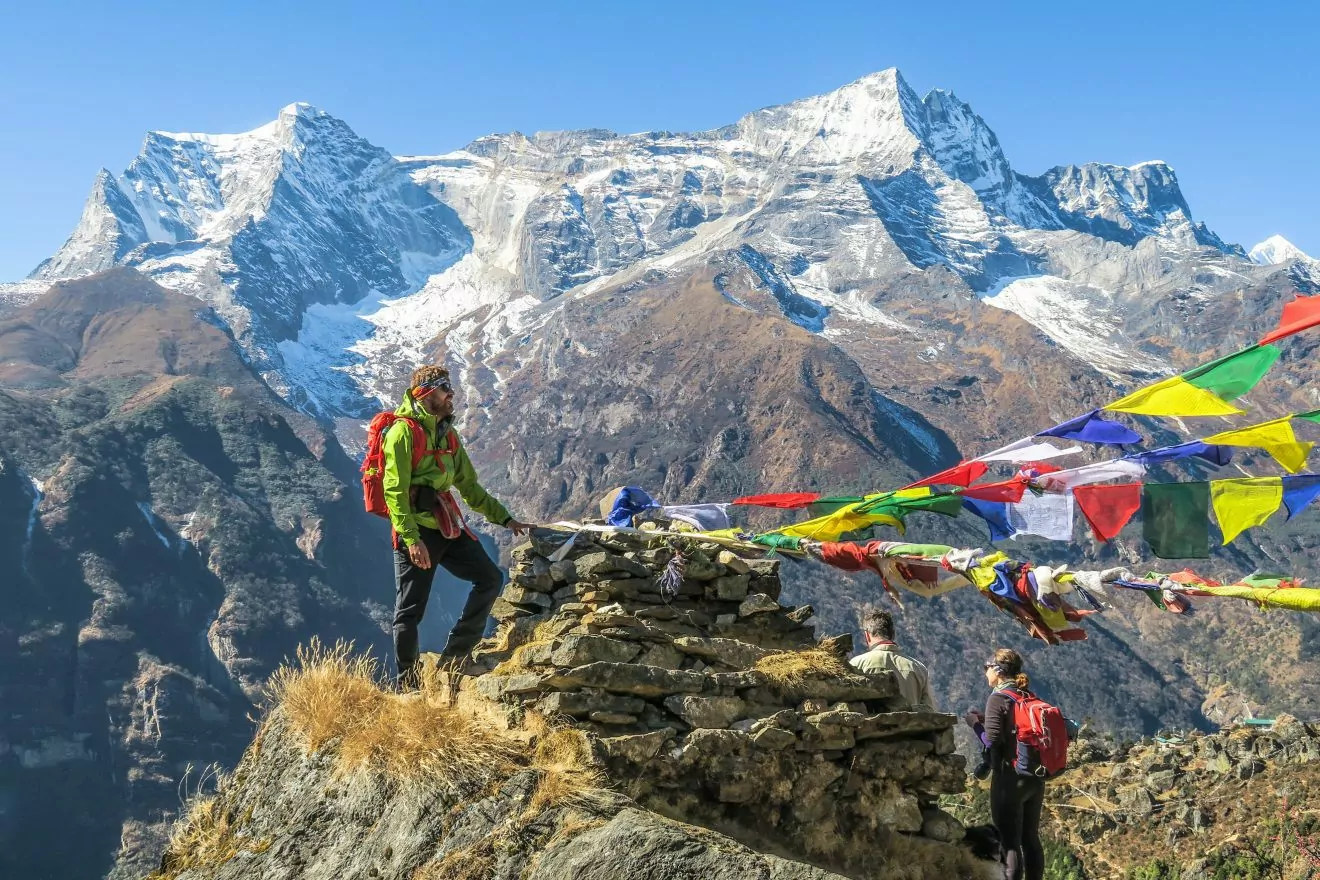
Photo by Sebastian Pena Lambarri on Unsplash
It is common for hikers to spend another day or two in Namche Bazaar to continue to acclimatize to the altitude. There are many trails around Namche that give spectacular views of the surrounding mountains, and trekking groups will hike one of these trails to continue to acclimatize. Namche, the largest town in the mountainous region, is the last place with robust tourist infrastructure like bakeries, internet cafes, bars, a theater, and even an Irish Pub.
Once you’re reasonably acclimatized to the altitude in Namche, you’ll ascend higher. The trail here offers the first glimpses of the peaks in the Khumbu Valley like Ama Dablam, Lhotse, and Mt. Everest in the distance. You’ll spend the night in a small picturesque village of Tengboche, home of the iconic Tengboche monastery – a UNESCO World Heritage Site. The monastery is available for tours, and, depending on the season, you may be lucky to witness the monks in prayer.
The next day you’ll hike to the small village of Dingboche, which is further up the valley and the start of an ancient glacial moraine. You are truly in the heart of the mountains now. From here on out, you’ll be in the alpine for the remainder of the trek.
Day 7–8: Dingboche – Lobuche
Like in Namche, many hikers will spend an extra day in Dingboche to acclimatize to the altitude of 14,100 feet, hiking the short viewpoint trails around the village. From Dingboche, the trail ascends further up the glacial moraine. You’ll ascend one of the most challenging climbs of the trek, but be rewarded with one of the most beautiful views imaginable, back down the valley that you had ascended the days prior. At the top is the Chukpi Lhara—a memorial for the Sherpas and climbers who have lost their lives on Everest and other mountains in the region.
Once past Chkupi Lhara, you’ll be hiking alongside the Khumbu glacier all the way until Everest Base Camp. Here, the weather turns decidedly cold, and it’s common for blustery winds to blow off the peaks and down the glacier, turning the air frigid.
That night, you’ll stay in Lobuche, a small town wedged between two glaciers, sitting at the foot of Nuptse, a 26,000-foot mountain towering above. Here trekkers begin their push to EBC, so it’s especially important to be diligent about hydrating and eating well. At an altitude of over 16,000 feet, you are now higher than any mountain in the lower 48 states!
Day 8-10: Gorak Shep – Everest Base Camp – Kala Patar
Today is the day of your push to EBC. You’ll wake a bit earlier than normal to continue hiking along the moraine to Gorak Shep, a small, intermediary village. After taking a short lunch in Gorak Shep and refueling on tea, a few more hours will bring you to the destination you’ve worked so hard to reach—Everest Base Camp. Right at the foot of the mountain, you’ll see the camp that is home to thousands of climbers in the spring. Past the camp, you can see the fabled icefall that mountaineers ascend, and the impossibly high summit of Everest stretching above. After a few group photos and celebrations, you will return to Gorak Shep to stay for the night.
The next day, trekkers will have the option of hiking Kala Patar, a small peak nearby for sunrise. Though the climb to 18,500 ft is challenging, the vantage from Kala Patar is unparalleled. Watching the sunrise over the tallest peaks in the world is often the highlight of the trek for many.
Day 10-13: Pheriche, Namche, Lukla
From Gorak Shep or Kala Patar, hikers begin the long, gradual descent back to the luxuriously lower altitudes. It is not uncommon to trek from Kala Patar in the morning back to Pheriche, a small village at 14,000 feet in altitude, and then from Pheriche all the way to Namche, eclipsing many of the villages you may have stayed in during the ascent. Typically, celebrations will be held in Namche, and it is a great opportunity to revel in that experience that you and your fellow hikers have had together.
EBC: Know Before You Go
Trail culture.
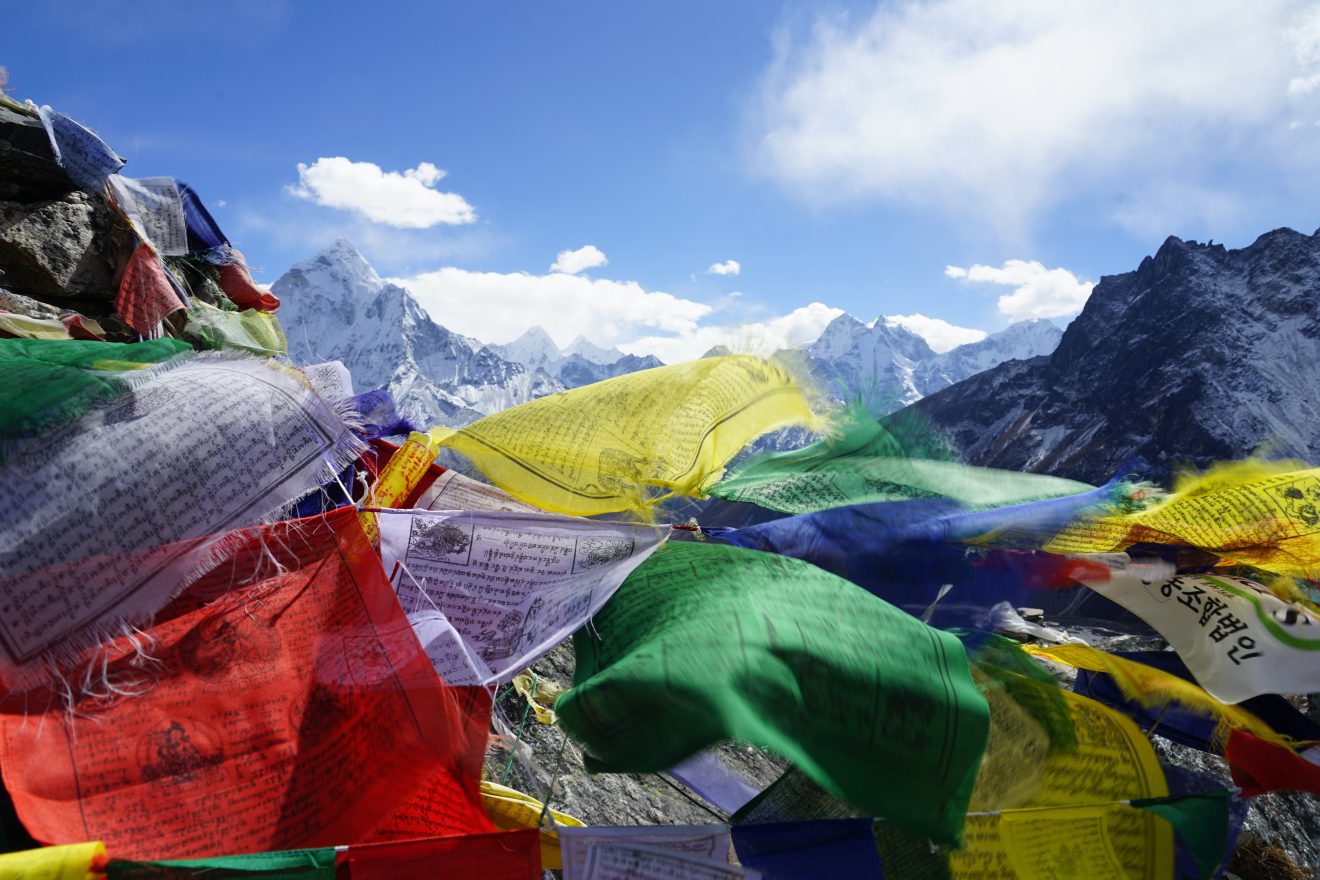
Many may view the Everest Base Camp Trek as being a remote journey full of solitude, but this is actually far from the truth. Instead, part of what makes the Everest Base Camp Trek so memorable is the people that you will meet along the way including Sherpas, porters, and other hikers. It is common to form hiking ‘bubbles,’ and as you move towards EBC, so too will other groups with whom you’ll cross paths. It is common to celebrate with others in the teahouses, share conversations over meals, and meet hikers from all over the world.
Additionally, it is highly recommended to learn about the Sherpa and porter cultures, and spend time with your guide (if you choose to hire one) to learn about their lives. All the Nepali people that you will encounter are friendly beyond measure and quick to smile. ‘Sherpa’ denotes a caste of Nepali people (ethnic group), whereas porter describes their job. Porters are often from all over Nepal or even other neighboring countries.
There are two common times of year to trek to Everest Base Camp: the spring and the fall. Spring is ideal as it lands before the seasonal monsoons. This is also when most major climbing expeditions are held, so you’ll be sharing the trail with climbers, Sherpas, and porters readying themselves for their expeditions.
In contrast, the fall is often a little quieter on the trail, with fewer climbers but more hikers. Many of the locals say that the Fall is a better time for photography and to truly get the most spectacular views. The snow-capped peaks offer dramatic contrasts with the barren valleys, and the air is clearer of pollutants after months of rain and snow.
No matter which season you go, the weather in the mountains is always unpredictable and varied, especially at higher altitudes. The sun can be quite strong during the day, however, you may also experience blowing wind, rain, and snowstorms as you ascend higher along the trek. The nights can be cold, and heating is limited in the teahouses. Expect to wear t-shirts and pants in the valleys, and full down jackets and thermal layers in the mountains.
WHERE TO STAY
Most hikers choose to stay in the many teahouses along the route, which are very well established to cater to hikers on their way to Everest Base Camp. The teahouses vary in services and comforts, but most have private rooms with two single beds (which you can push together if you’re traveling with a partner), communal dining rooms, and modest bathrooms (not always Western-style!) Sometimes, you’ll get the occasional shower. The tea houses also offer food for hikers with comically extensive menus, from chow mein, lasagna, pizza, and burgers to local favorites like Momos and Dal Bhat. Generally, the further along the trek and higher in altitude you go, the more rustic the tea houses and food options become.
Camping is possible, but not often done. Some guided groups will choose to camp in tents that are carried ahead by the porters and set up next to the teahouses.
PRO-TIP: Dal Bhat, a mixture of curried lentils and rice is a staple food for the Sherpa people, and is cooked in large quantities in each tea house. Ordering Dal Bhat in the teahouses often means bottomless refills, so eat up!
WHAT TO BRING
What to pack will depend heavily on if you choose to go guided or unguided. If the latter, treat the Everest Base Camp trek like any remote backpacking trip, with adequate warm clothing, a large backpack, four-season tent , sleeping bag, and personal toiletries.
If you trek as part of a group, we recommend you pack a medium-sized duffel for your porter to carry ahead each day, and then carry a light daypack for yourself with everything you need for a day of hiking. Though your porter will carry your overnight pack, it is recommended to pack as light as possible to lighten their load.
It is also recommended to bring a small number of Nepali Rupees with you on the trek, as there are small convenience stores along the way to purchase snacks, refreshments, trinkets, and other small items you may have forgotten.
GUIDED OR INDEPENDENT?
There are various options to trek to Everest Base Camp to suit all hiking styles. Due to the unique challenges of the trek such as remoteness, language barriers, and altitude, most will choose to go with a guided group as well as porters. Guides are an invaluable source of information, fun to be around, and always keep a watchful eye in case you need assistance or an emergency arises.
Wildland Trekking offers a 17-day Everest Base Camp Trek that includes acclimatization days, transportation, meals, and accommodations.
Alternatively, do not let the guided groups dissuade you from trekking independently—just be aware of the challenges there are to this. You will have to carry all of your own equipment, and you’re hiking at altitude. Take some time to learn about acclimatizing so you don’t get into trouble when you get into higher elevations. Additionally, you’ll need to secure accommodations in tea houses, which can often be full of other hikers or guided groups that have pre-arranged their stays. Camping is not recommended for self-guided treks.
Wildland Trekking Guided Hiking Adventures
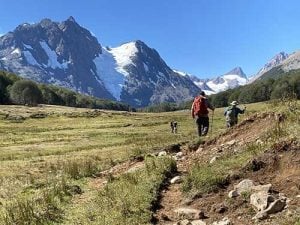
Wildland ADVENTURE TOURS
GUIDED BACKPACKING ADVENTURES : these are for people interested in an authentic wilderness adventures away from roads and crowds.
PORTERED TRIPS : on these innovative trips, guests hike with light day packs and camp in stunning backcountry locations.
INN-BASED HIKING TOURS : these tours are all-inclusive hiking packages with lodging, amazing daily hikes, expert guides, meals, transportation and more!
CAMPING TOURS : camping-based hiking packages provide all-around hiking experiences of of premier destinations on wonderful outdoor vacations.
LLAMA TREKS : unique, wilderness-based hiking/camping adventures on which our friendly llama trail companions carry the bulk of the gear and supplies.
About Eric De Paoli
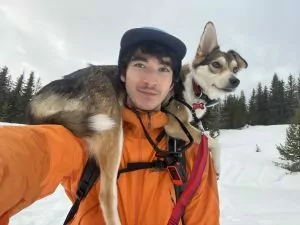
Eric is a freelance writer, photographer, and outdoors professional based in Squamish, British Columbia. Whether leading environmental education seminars, protecting natural resources as a park ranger, or creating writing and photography from his time outdoors, he is constantly inspired to better understand the relationships between people, place, and the environment. Nowadays, he is passionate about using communication tools to inspire others to engage and connect with the outdoors. When not working, you can find him trail running or backcountry skiing with his adventure-pup Neve by his side.

wildland Wires
Sign up to receive our exclusive Wildland Wire emails and stay up to date with Wildland Trekking's promotions, discounts, contests, outdoor tips and tricks, trip reports and more!

EVEREST BASE CAMP TREK

EVEREST BASE CAMP

Pin Tweet Share WhatsApp
THE ESSENTIAL GUIDE
In this guide we cover everything you need to know about the Everest Base Camp Trek in Nepal. This includes suggested itineraries and practical information about accommodation, costs, what to pack, independent vs. guided treks, transport, and more. We also offer a route map with GPX download for use on the trek. And along with this written guide, we also share ‘silent hiking’ films that work well as a visual guide to the trail.
A chance for an adventurous and exciting journey, the Everest Base Camp Trek serves up spectacular scenery and gets you close to the world’s highest mountains, and as one of Nepal’s best known treks, it attracts people of all ages and experience levels. The trek ascends to high altitude (5000 m +) and is challenging, but it is achievable with a sensible itinerary that includes proper acclimatisation. Read on to discover more and start planning your own EBC trek.
Use the drop down menu below to jump to each section of this guide
TABLE OF CONTENTS
EVEREST BASE CAMP TREK OVERVIEW
EBC TREK FILMS
EVEREST BASE CAMP MAP & GPX DOWNLOAD
ELEVATION PROFILE & 3D ROUTE MAP
EVEREST BASE CAMP ITINERARIES
- THE CLASSIC EBC TREK
- EBC TREK VIA KHUMJUNG & PHORTSE
- EBC VIA KONGMA LA (5514 m)
- EBC AND GOKYO LAKES TREK
- BUFFER DAYS
EVEREST BASE CAMP TREK SUMMARY
- LULKA TO NAMCHE BAZAAR
- NAMCHE ACCLIMATISATION DAY
NAMCHE BAZAAR TO DINGBOCHE
- ALT. ROUTE VIA KHUMJUNG & PHORTSE
DINGBOCHE ACCLIMATISATION DAY
Dingboche to everest base camp.
- ALT. ROUTE VIA KONGMA LA
EVEREST BASE CAMP TO LUKLA
- ALT. ROUTE VIA CHO LA & GOKYO LAKES
BEST TREKKING SEASONS
HOW TO GET TO LUKLA
HOW TO GET TO LUKLA WITHOUT FLYING
EVEREST BASE CAMP TREK PERMITS & FEES
TREKKING INDEPENDENTLY
TREKKING WITH A GUIDE (& PORTER)
RECOMMENDED TREKKING AGENCY
ACCOMMODATION ON THE EBC TREK
FOOD ON THE EVEREST BASE CAMP TREK
SAFE DRINKING WATER
WIFI, PHONE SIGNAL & CHARGING
EVEREST BASE CAMP TREK COST & BUDGET
MONEY & ATMs ON THE EBC TREK
WHAT TO PACK FOR THE EBC TREK
ALTITUDE AWARENESS & AMS
TRAVEL INSURANCE
GETTING TO NEPAL
NEPAL TOURIST VISAS
Nepal visa on arrival process.
WHERE TO STAY IN KATHMANDU
BUDGET KATHMANDU ACCOMMODATION
Mid-range kathmandu accommodation, high-end kathmandu accommodation.
MAPS, GUIDEBOOKS & APPS
*Some of the links in this post are affiliate links – if you purchase a product or service via these links, we may earn a small commission at no extra cost to you . This helps offset the cost of running this blog and keeps us travelling so that we can continue to produce great content for you. As an Amazon Associate, we earn from qualifying purchases. We greatly appreciate your support!*
- DISTANCE | 120 -143 km depending on route taken (incl. acclimatisation/day hikes)
- DURATION | 12 – 15 days depending on route (incl. flying to/from Lukla)
- START/END | Lukla
- PERMITS REQUIRED | Khumbu Trek Card 2000 NPR; Sagarmatha National Park Fee 3000 NPR (SAARC nationals 1500 NPR / Nepali nationals 100 NPR)
- TREKKING SEASON | Best Seasons: April to Mid-May , October to Mid-November ; Shoulder Seasons: March, Late May, September, Mid-November to December ; Avoid: June to August, January to February
- TREK DIFFICULTY | Moderate (challenging if including Kongma La or Gokyo Lakes)
- ELEVATION GAIN/LOSS | +/- approx 7600 metres (Classic EBC Trek incl. acclimatisation/day hikes)
- MAX ALTITUDE | 5611 m (Kala Patthar)
- GUIDE MANDATORY? | Khumbu Pasanglhamu Rural Municipality has stated that it is NOT mandatory to trek with a guide in the Khumbu region
- ACCOMMODATION | Teahouses/Guesthouses in villages along the trail
- TREK COST | $35 – $144 USD per person, per day (budget independent trekker to fully inclusive package)
- RECOMMENDED TREKKING AGENCY | Himalayan Masters , Quote HOGG5 for 5% discount
DISTANCE 120 -143 km depending on route taken (incl. acclimatisation/day hikes)
DURATION 12 – 15 days depending on route taken (incl. flying to/from Lukla)
START/END Lukla
PERMITS REQUIRED Khumbu Trek Card 2000 NPR Sagarmatha National Park Fee 3000 NPR (SAARC nationals 1500 NPR, Nepali nationals 100 NPR)
TREKKING SEASON Best Season April to Mid-May October to Mid-November Shoulder Seasons March, Late May, September Mid-November to December Months To Avoid June, July, August January and February
TREK DIFFICULTY Moderate (challenging if including Kongma La or Gokyo Lakes)
ELEVATION GAIN/LOSS +/- approx 7600 metres (Classic EBC Trek incl. acclimatisation/day hikes)
MAX ALTITUDE 5611 m (Kala Patthar)
GUIDE MANDATORY? Khumbu Pasanglhamu Rural Municipality has stated that it is NOT mandatory to trek with a guide in the Khumbu region
ACCOMMODATION Teahouses/Guesthouses in villages along the trail
TREK COST $35 – $145 USD per person, per day (budget independent trekker to fully inclusive package)
OUR RECOMMENDED TREKKING AGENCY Himalayan Masters , Quote HOGG5 for 5% discount
EVEREST BASE CAMP TREKKING FILMS
Get a sense of the Everest Base Camp trekking route in our ‘silent hiking’ style ambient films.
EVEREST BASE CAMP TREK MAP & GPX DOWNLOAD
MAP & GPX DOWNLOAD
We have created a detailed Everest Base Camp trekking map to accompany this guide. It shows the Classic Everest Base Camp trekking route along with the alternative routes outlined in this guide, going via Khumjung and Phorste, Kongma La, and Cho La and Gokyo Lakes. The main side/acclimatisation hike options are included too, and the overland route between Salleri and Lukla is also marked.
Detailed stats and an elevation profile are included for each route section. Guesthouse settlements and tea shops are also marked, as well as key sights and practical info such as checkpoints, hospitals, and transport hubs. Guesthouses as per our own trek itinerary are marked, including info about prices and services, phone numbers (where possible), and a copy of the menu. Photos are included with almost every pin.
You can use the digital map online, or download it for offline use with a mapping app such as Organic Maps, Maps.me or Gaia GPS. This is very helpful for navigation assistance on the trail. It allows you to quickly pinpoint key places and services along the way and calculate distances and elevation differences between destinations.
Note that while we’ve tried to be as accurate as possible when recording and mapping the route, changes on the ground are inevitable (especially on routes crossing glaciers) and this map should not be solely relied upon for navigation.
EVEREST BASE CAMP TREK ELEVATION PROFILE
ELEVATION PROFILE
The image below shows the elevation profile of the Classic Everest Base Camp trek, starting and ending in Lukla. The route shown here includes the various acclimatisation and side hikes as outlined in the suggested itinerary below. Elevation is displayed in metres and distance in kilometres.

3D ROUTE MAP
Watch our 3D relief map video to visualise the landscape and get a sense of the Everest Base Camp trek.
EVEREST BASE CAMP TREK ITINERARY
ITINERARY OPTIONS
There is more than one trekking route to Everest Base Camp . In this section we outline the Classic EBC trek itinerary, but also include three alternative itineraries which enable you to vary your route on the way to and from Base Camp and see much more of the Khumbu region.
We have created an overview table for each of the Everest Base Camp trek itinerary options. These include trekking distances and approximate trekking times for each day (excluding lunch stops, breaks, etc), as well as stats on elevation gain/loss and sleeping altitude. For each itinerary the assumption is that you will fly into Lukla on the morning of Day 1 and start trekking. You will need to add 3 – 5 days if you plan to travel overland from Kathmandu to Lukla or vice versa.
It is also possible to combine the following itineraries to create your own alternative EBC trek. For example, you could trek via Khumjung, Phortse and Kongma La on the way to EBC, or you could include both Kongma La and Gokyo Lakes. A few minor possible alternatives along the way are noted below each itinerary, such as alternate overnight stops.
If viewing the itinerary tables on a mobile device or tablet, scroll to the right to see the full table or flip your screen to landscape mode
CLASSIC EVEREST BASE CAMP TREK ITINERARY
A classic Everest Base Camp trek itinerary is 11 nights/12 days, following the exact same route on the way to and from EBC. If you have limited time, this is the shortest itinerary you can follow while sticking to safe altitude ascent rates.
DAY 1 ALT. INFO*
*Alternatively, continue to Monjo (2830 m) where fewer people stay overnight (a further 5.1 km, approx 2 hours trekking time) . Doing this means the trail will be less busy for both your Phakding to Monjo section, and the Monjo to Namche section the following morning.
DAY 4 ALT. INFO**
**Alternatively, continue to Pangboche (3950 m) where fewer people stay overnight (a further 4.2 km, approx 1.5 hours trekking time). Pangboche is a lovely village with fantastic views of Ama Dablam, and there are many guesthouses. Tengboche, on the other hand, only has two guesthouses and it can be difficult to get a room here in peak season. Continuing to Pangboche also means the trail will be less busy for both your Tengboche to Pangboche section, and the Pangboche to Dingboche section the following morning.
DAYS 8 & 9 ALT. INFO***
***On days 8 and 9 the classic itinerary that most people follow is to visit EBC after lunch at Gorak Shep, then hike up Kala Patthar in the dark for sunrise the next morning (when it is bitterly cold). If you swap these two around as per the above suggested itinerary, you are guaranteed to have a less busy experience at both EBC and on the trail up Kala Patthar. As the skies are usually clearer in the morning you are also likely to have better views at EBC, however it is possible that the views from Kala Patthar will be obscured by afternoon clouds. If you’re lucky and have clear afternoon skies, then you will be treated to a fiery sunset glow on Everest and the surrounding mountains. If you hike up Kala Patthar in the morning, your mountain views will be brief as the sun rises directly behind Everest and you’ll soon be looking directly into the sun.
ALTERNATIVE EVEREST BASE CAMP TREK ITINERARY VIA KHUMJUNG AND PHORTSE
Our first alternative Everest Base Camp trek itinerary is 12 nights/13 days. This itinerary follows a different route between Namche Bazaar and Pangboche on the way to EBC, by trekking via Khumjung and Phortse. The overall difficulty of this route remains moderate, and the additional day allows you to explore more of the region and gives more time for acclimatisation. It’s also a great option for avoiding crowds during the peak trekking seasons, as far fewer people trek this alternative route.
DAYS 9 & 10 ALT. INFO**
**On days 8 and 9 the classic itinerary that most people follow is to visit EBC after lunch at Gorak Shep, then hike up Kala Patthar in the dark for sunrise the next morning (when it is bitterly cold). If you swap these two around as per the above suggested itinerary, you are guaranteed to have a less busy experience at both EBC and on the trail up Kala Patthar. As the skies are usually clearer in the morning you are also likely to have better views at EBC, however it is possible that the views from Kala Patthar will be obscured by afternoon clouds. If you’re lucky and have clear afternoon skies, then you will be treated to a fiery sunset glow on Everest and the surrounding mountains. If you hike up Kala Patthar in the morning, your mountain views will be brief as the sun rises directly behind Everest and you’ll soon be looking directly into the sun.
EVEREST BASE CAMP VIA KONGMA LA TREK ITINERARY
Our second alternative Everest Base Camp trek itinerary is 13 nights/14 days. This changes the route taken between Dingboche and Lobuche on the way to EBC by crossing a high pass called Kongma La (5514 m). This section is more challenging than the rest of the route, but it offers incredible scenery and the chance to explore much quieter sections of trail than you’ll experience on the classic EBC route.
DAY 8 ALT. INFO**
***There are two viewpoints on the Chukhung Ri acclimatisation hike, the lower one (5380 m) which most people visit and the higher one (5516 m) which involves a tough and steep climb towards the end.
DAYS 10 & 11 ALT. INFO****
****On days 8 and 9 the classic itinerary that most people follow is to visit EBC after lunch at Gorak Shep, then hike up Kala Patthar in the dark for sunrise the next morning (when it is bitterly cold). If you swap these two around as per the above suggested itinerary, you are guaranteed to have a less busy experience at both EBC and on the trail up Kala Patthar. As the skies are usually clearer in the morning you are also likely to have better views at EBC, however it is possible that the views from Kala Patthar will be obscured by afternoon clouds. If you’re lucky and have clear afternoon skies, then you will be treated to a fiery sunset glow on Everest and the surrounding mountains. If you hike up Kala Patthar in the morning, your mountain views will be brief as the sun rises directly behind Everest and you’ll soon be looking directly into the sun.
EVEREST BASE CAMP AND GOKYO LAKES TREK ITINERARY
Our third alternative Everest Base Camp trek itinerary is 14 nights/15 days. This varies the route taken between Lobuche and Namche Bazaar on the way back from EBC, by crossing a high pass called Cho La (5368 m) and descending via the spectacular Gokyo Lakes. Again, this route is more challenging than the classic or first alternative EBC itineraries we suggest, due to the extra distance and overall elevation gain. However, it is a highly rewarding trek which includes some of the most spectacular locations in the Khumbu region. The sections of trail that you must repeat on the way to and from EBC are kept to an absolute minimum on this itinerary.
IMPORTANCE OF BUFFER DAYS
Building in buffer days to your Everest Base Camp itinerary is highly recommended, especially if you plan on flying to/from Lukla. Flights are regularly cancelled due to poor weather conditions, sometimes for a number of days. If everything runs smoothly, it takes half a day or less to get to/from Lukla at the start/end of your trek. However, if flights are not operating, it can take up to 3 days to travel overland from Kathmandu to Lukla, using a mixture of buses and jeeps, and by trekking too. Therefore, it’s wise to have at least 3 or 4 days between the end of your planned trek itinerary and any international flight. This would allow you time to get from Lukla to Kathmandu overland if necessary.
Of course, a delay could also happen at the start of your trek while trying to get to Lukla, and this might leave you struggling to catch up with your original itinerary. Having a couple of buffer days built in will mean you don’t have to drastically alter your itinerary, avoiding the need to walk extra long distances to save a day or skipping places because you don’t have time.
Buffer days also allow you to alter your itinerary on the go more easily. For example, if you get sick and need to spend an extra night somewhere, or the weather is bad and you want to wait it out before continuing your trek, then you have the extra days on hand.
It’s worth knowing that should everything go to plan and you don’t need to use any buffer days during your trek, it’s straightforward for a trekking agency to change the date of your flight, bringing it forward a few days for example. However, this is not so easy if you have booked your flight online, independently.
OUR RECOMMENDED TREKKING AGENCY
We partnered with Himalayan Masters for our Langtang Valley, Gosainkunda, EBC and Everest Three Passes treks, and found them to be professional and committed to a high level of service
To enquire about booking your own trek, get in touch via email at [email protected] and mention the code HOGG5 to get a 5% discount off the cost of your trip
ROUTE SUMMARY
LUKLA TO NAMCHE BAZAAR
The first two days of the Everest Base Camp trek are repeated in reverse on the final day of the trek. With only one route connecting Lukla and Namche Bazaar, unfortunately there’s no avoiding this.
This section of the trek passes through numerous villages and teahouse settlements, the last of which is Jorsale, shortly beyond the entrance to Sagarmatha National Park. There are five suspension bridges to cross, including the 125 metre high Hillary Bridge, and numerous smaller fixed metal bridges. The Khumbu Trek Card Registration desk (where you get your Khumbu Trek Card and pay your Sagarmatha NP entrance fee) is shortly beyond Lukla, and there are further checkpoints at Toc Toc, Monjo, and just before Namche Bazaar.
The route follows a mixture of wide stone paths, riverside paths, and forest trail, with plenty of up and down along the way. There is one notable ascent, a 700 metre climb immediately after crossing the Hillary Suspension Bridge, on the last stretch before Namche. This section is a pleasant couple of days and a good introduction to the trek, with greenery and the chance to see colourful rhododendrons and blossoms in spring, plenty of scenic river views, and a definite buzz thanks to all the people coming and going and the numerous villages dotting the trail.
With only one route up and down to Namche, traffic jams are common along this section, with trekkers, porters, and pack mules, yaks and their handlers all sharing the same trail. Bottlenecks are particularly common at suspension bridges and on the steep climb up to Namche. Be sure to wait on the side of the trail without a drop-off when letting pack animals pass, and don’t start crossing a bridge if you can see them coming in the opposite direction – let them cross first. Finally, stick to the left side when walking by any mani stones, mani walls and prayer wheels, as it’s both common practice and culturally appropriate.
For more detail about this section of the route, see Days 1 and 2 of our Everest Three Passes Route Guide .

The Hillary Suspension Bridge as seen from the valley floor, with the old bridge still in place below

NAMCHE BAZAAR ACCLIMATISATION DAY
It’s important to acclimatise properly throughout your Everest Base Camp trek. This allows your body time to get used to the ever-increasing altitude as you ascend to 5000 metres and above. Building in rest days, staying well hydrated, and going on acclimatisation hikes (where you climb higher during the day but sleep lower at night) are all good ways of helping your body acclimatise.
Unless you are already acclimatised (for example you have been at altitudes of 4000 metres and higher within the previous week), spending a second night at Namche Bazaar is highly recommended and this is standard on virtually all Everest Base Camp trek itineraries. You should do this even if it seems like you feel physically fine.
The most common destination for an acclimatisation hike from Namche Bazaar is the Hotel Everest View (3880 m) , where you can get lunch or a drink and enjoy fantastic views from the terrace. It takes around 3 hours to hike up to the hotel and back down again. A must-visit on the way is Sagarmatha Next , a learning / experience / visitor centre and gallery championing waste management solutions for the Khumbu region.

Morning view over Namche Bazaar from the northeast

Morning view of Namche Bazaar from the northeast
For a longer hike and the chance to see more of the local area, doing a loop via Khumjung is a great option. Khumjung is the largest Sherpa village in the region, with an impressive monastery and a school founded by Edmund Hillary in 1960. The original classroom is now the Sir Edmund Hillary Visitor Centre , another great place to visit and learn about the Khumbu region. The loop hike (including Hotel Everest View) is around 7.5 km, and you should allow up to 5 hours for the hike. It’s also possible to include a visit to Khunde village, home to another monastery. This would extend the loop route to around 9.1 km and you should allow up to 6 hours.
If you plan to overnight at Khumjung on day 4 of your trek, following the ‘Alternative Everest Base Camp Itinerary’ outlined above, you might want to opt for a shorter Namche acclimatisation hike. Hiking 100 metres up to the helipad on the western side of the village is a good choice. There is an excellent view over Namche from here, where you can see it curving around the sloping hillside in amphitheatre-like fashion.
Various Namche acclimatisation hiking routes are marked on our EBC Trek map .
CLASSIC ROUTE VIA TENGBOCHE
This two-day section of the Everest Base Camp trek offers fantastic mountain scenery and a beautiful trekking trail, passing through forest and open hillside. There is one notable big climb between Phunki Thanga and Tengboche but otherwise the trail is mostly straightforward, with just a few short steep sections, and plenty of flat, undulating, or gentle climbs. There are a handful of small villages along the route, two suspension bridges, a checkpoint at Phunki Thanga, and an impressive monastery at Tengboche which is well worth visiting (daily 7am – 8am, 9am – 11am, and 1pm – 5:30pm, monks chanting at 3pm). After Pangboche you are more or less above the treeline, surrounded by imposing mountains and expansive views.
For more detail about this section of the route, see Days 4 and 5 of our Everest Three Passes Route Guide .

Trekkers pass through Shomare on the way to Dingboche, with the twin peaks of Ama Dablam rising behind

Trekkers pass through the village of Shomare on the way to Dingboche, with the twin peaks of Ama Dablam rising behind
ALTERNATIVE ROUTE VIA KHUMJUNG AND PHORTSE
This three-day route section follows an alternative trail between Namche and Pangboche before joining the classic Everest Base Camp trail for the final stretch to Dingboche. Opting for this itinerary allows you to vary your route on the way to and from EBC and take advantage of much quieter trails. Plus, the extra day allows for a slower ascent pace, which is a good option for anyone who knows they are slow to acclimatise or prefers to follow a more cautious itinerary.
This route climbs initially to Khumjung, the largest Sherpa village in the region, then stays above the ‘Classic EBC’ route to Pangboche, offering fantastic views throughout. There is a small guesthouse settlement at Mong La (3970 m) which is the highest point on the way to Phortse, a scenic village with a number of guesthouses, local homes, and the Khumbu Climbing Centre .
There is plenty of up and down on this section of the trek, with some notable climbs to Khumjung, Mong La, and both before and after Phortse. However, this route is not considerably more challenging than the ‘Classic EBC’ route, especially as it is split over three days instead of two.
Spending two nights at Dingboche, a sizeable village situated at 4300 m, is advisable in order to ensure you ascend to very high altitude at a safe rate. Going on an acclimatisation hike is also an important part of acclimatising to such altitudes, and Nangkartshang Peak (5039 m) is a great option. This hill rises to the north of Dingboche and there are fantastic views throughout the climb, especially of Ama Dablam. There is an obvious path all the way to the rocky top, which is festooned with prayer flags and spacious enough for plenty of people. The 766 metre climb should take around 2.5 – 3 hours, with the descent about half that. It’s advisable to start early (around 7:30am) for the best chance of clear views and calm conditions.

After a 760 metre climb, people rest and enjoy the views at the prayer flags on Nangkartshang

For a longer and less busy acclimatisation hike, a great option is the side hike up the valley to the east of Dingboche to Chukhung Village and Chukhung Ri, a viewpoint situated at 5380 m. The views from Chukhung Ri are fantastic, looking back down the valley and across to an impressive ice wall, and you’ll be surrounded by numerous majestic snowy peaks including Lhotse, Nuptse, Island Peak and Ama Dablam. Allow up to 8 hours for this return hike.

Plenty of outstanding views to appreciate while hiking up to Chukhung Ri

Plenty of outstanding views to stop and appreciate while hiking up to Chukhung Ri
Whichever acclimatisation hike you decide to do, ensure you have plenty of water, snacks, and warm layers with you.
For more detail about these hikes, see Day 6 (Nangkartshang) and Day 8 (Chukhung Ri) of our Three Passes Route Guide.
CLASSIC ROUTE
If you’re following the Classic EBC route you’ll trek from Dingboche to Base Camp over 2 – 2.5 days, spending a night at Lobuche and then at Gorak Shep. From Gorak Shep you’ll do a return hike to EBC. Most people also include a side hike to Kala Patthar, the highest point of the trek at 5611 m, where you can get a view of Mt Everest (which isn’t actually visible from Base Camp.)
The route heads up the valley to the northwest of Dingboche, climbs to Thok La pass, then heads northeast, running parallel to the Khumbu Glacier all the way to Base Camp. It’s a gradual ascent for most of the way, but at these altitudes (4300 m – 5300 m) even a gentle climb can take your breath away. The climb to Thok La on the way to Lobuche, the short but steep climb on the way to Gorak Shep, and the undulating rocky glacier section immediately before Gorak Shep are among the most challenging sections.
The views are wonderful throughout and the final sight of Everest Base Camp, encircled by soaring peaks, is a memorable one. This is especially true if you’re trekking during the peak climbing season, when a sea of tents sprawls across the glacier at the foot of the Khumbu Icefall – seen from the trail, these tiny yellow dots emphasise the enormity of the surroundings even more.

First sight of Everest Base Camp from the trail

Posing for the obligatory photo on the ‘EBC Rock’
Seen from the Kala Patthar trail about 30 minutes before sunset , the clouds part to reveal the summit of Mount Everest (8849 m)
Lobuche is a small settlement of guesthouses on the edge of the Khumbu Glacier, a very busy spot where everyone going to and from EBC stops for food and/or spends the night. Gorak Shep is even smaller, busier, and more basic with just four guesthouses and no good water supply.
For more detail about this section of the route, see Days 10 and 11 of our Everest Three Passes Route Guide .
ALTERNATIVE ROUTE VIA KONGMA LA
This alternative route to Everest Base Camp is a three day trek between Dingboche and Lobuche, via Chukhung, Chukhung Ri and Kongma La. At Lobuche you rejoin the classic route for the final section to Gorak Shep, Kala Patthar and EBC. This is part of the Everest Three Passes trek and is a challenging but very rewarding addition to the EBC trek. With far fewer people trekking this route compared to the Classic EBC route, you can expect the trail to be much quieter.
The route follows a gently ascending trail up the scenic valley to the northeast of Dingboche before reaching the small guesthouse settlement of Chukhung. It’s advisable to spend two nights here, using the extra day for an acclimatisation hike to the spectacular viewpoint of Chukhung Ri (5380 m) before crossing Kongma La the following day. The scenery around the village is very dramatic, as are the views seen throughout the hike to Chukhung Ri, with Ama Dablam rising to the south, Island Peak to the east, and Lhotse and Nuptse to the north, along with countless other peaks and the dramatic ice wall of the Chukhung Glacier.
The trek to Kongma La (5514 m) involves a long ascent but other than a couple of short steep sections, it’s mostly a steady climb, and the landscape is striking. From the pass you have incredible 360 degree views and you can see all the way down to Lobuche, a small cluster of buildings on the far side of the rocky Khumbu Glacier. The descent is somewhat steep and slippery at first due to loose dirt, shale, and small rocks, but becomes less steep as you work your way down to the eastern side of the glacier. The final section, crossing the glacier itself, involves plenty of up and down as you work your way across jumbled rocks and around small glacial lakes; on the other side, a final downhill stretch leads to Lobuche.
For more detail about this section of the route, see Days 7 – 9 of our Everest Three Passes Route Guide .

On the final approach to Kongma La

The Classic Everest Base Camp trekking route follows the same trail on the return to Namche Bazaar, covering the distance in three days with overnights at Pheriche, Namche, and Lukla. As you drop in altitude more oxygen flows through your blood and the physical strain on your body reduces. This combined with the fact that you no longer need to think about acclimatisation enables you to cover a much greater daily distance than on previous days. The return section of the trek is not all downhill however, and three 17 – 19 km days in a row can be very tiring!
ALTERNATIVE ROUTE VIA CHO LA AND GOKYO LAKES
An alternative route connects Lobuche and Namche Bazaar via Cho La and Gokyo Lakes. This turns your trek into a loop hike commonly known as the Everest Base Camp and Gokyo Lakes trek. Following this route over six days, you’ll cross Cho La (5368 m), a high pass to the west of Lobuche, descend from the pass and traverse the rocky Ngozumpa Glacier to reach Gokyo and a string of brilliant blue lakes, then follow the Gokyo Valley back to Namche where you’ll join the trail to Lukla. The route takes in some of the best scenery in the Khumbu region and is a fantastic alternative to the Classic EBC trek, although definitely more challenging with the addition of the high pass.
This route diverges from the classic trail a little south of Lobuche, working its way around a hillside to the northwest to reach the small guesthouse settlement of Dzonglha. The ascent to Cho La on the next morning is initially gradual, after which there are a couple of steep sections and the crossing of an icy glacier (microspikes recommended) just before the pass. The descent starts off steeply (aided by a fixed metal rope) before becoming more gradual as it works its way down the valley to the guesthouses at Dragnag (Thangnak). On the following morning* you have to cross the Ngozumpa Glacier, the largest glacier in Nepal, with a rocky, undulating trail passing small glacial lakes to reach Gokyo on the other side. The descent onto and climb off the glacier is quite steep.
*If you are looking to save a day it is possible to continue to Gokyo after crossing Cho La, without spending the night at Dragnag (Thangnak). It will very much depend on your energy levels and the weather conditions on the day.

Trekkers crossing the icy glacier towards Cho La (5368 m), the rocky dip ahead

Gokyo, a medium-sized teahouse village, sits on the western side of the glacier, on the shores of Dudh Pokhari, or Gokyo 3rd Lake. The setting is beautiful. You can visit the 4th Lake on a side hike to the north, and climb the steep trail to Gokyo Ri early the next morning for some of the most impressive views in the region. The return to Namche Bazaar is via the Gokyo valley, following the Dudh Koshi river. A good option is to break your journey at the small village of Dole, then continue beyond Namche to overnight at Monjo before the final stretch back to Lukla.

Early morning at Gokyo

Beyond Dole the trail descends towards Phortse Tenga, then climbs to Mong La, on the same route as outlined in the ‘Alternative Route via Khumjung and Phortse’ section. From Mong La it’s possible to descend all the way to Sanasa and take the same trail back to Namche that you followed on the way to Tengboche, or stay higher and follow a trail to the large Sherpa village of Khumjung before descending to Namche. The route between Namche and Lukla is the same as at the start of the trek.
For more detail about the Everest Base Camp to Gokyo section of the route, see Days 11 – 15 of our Everest Three Passes Route Guide .
SEE MORE FROM NEPAL

Everest Base Camp Trek: The Essential Guide

Everest Three Passes Trekking Route Guide

Everest Three Passes Trek: The Essential Guide

Gosainkunda Helambu Trekking Route Guide

Gosainkunda Trek: The Essential Guide

Langtang Valley Trekking Route Guide

Langtang Valley Trek: The Essential Guide

What To Pack For Trekking In Nepal

Upper Mustang Trek: The Essential Guide

Upper Mustang Trek Itinerary: A Day By Day Account

Annapurna Circuit Trek: The Essential Guide

Annapurna Circuit Trek Itinerary: A Day By Day Account

Manaslu Circuit Trek: The Essential Guide

Manaslu Circuit Trek Itinerary: A Day By Day Account
Everest base camp trekking season.
TREKKING SEASON
Like many treks in Nepal , the peak seasons for trekking the Everest Base Camp route are April to mid-May and October to mid-November . These months typically offer the best chance of both clear skies and warmer temperatures, although weather patterns are becoming increasingly unpredictable in Nepal and across the world, so you should still be prepared for snow and colder temperatures during these periods.
The spring trekking season coincides with the Everest climbing season , so the Khumbu region is very busy with helicopters and yaks transporting supplies to Everest Base Camp. If trekking at this time, you will have the chance to see base camp fully set up with all the tents, and there is a great buzz about the place. Outside of the climbing season, there are no tents or any other infrastructure at EBC.

Trekkers crossing the moraine-covered glacier between Lobuche and Gorak Shep on a clear skies spring morning

Trekkers crossing the moraine-covered glacier before Gorak Shep on a clear spring morning
In autumn, expect less wind and higher temperatures than in spring, while in late March and April, blooming rhododendrons and other spring flowers are a beautiful sight at some lower elevations.
The shoulder seasons are March, May, September and mid-November to December. During these times it can be much quieter on the trail. There is typically cold weather in March and December. In March there is a high chance of lingering or fresh snow. December typically has sunny weather and clear skies throughout the day. In late May and early September there is a higher chance of early or lingering monsoon rains and cloudy skies.
The summer months of June, July, and August coincide with the monsoon season . Trekking during this period means lots of walking in rain, muddy trails, leeches, and poor visibility with clouds obscuring the surrounding mountains. Many guesthouses close during this period, and it is not a good time to trek. Flights to and from Lukla are likely to be cancelled regularly and for days at a time.
The winter months of January and February are considered too cold by most to trek and many guesthouses are closed.
PLAN A TREK IN THE LANGTANG VALLEY

PLAN YOUR LANGTANG VALLEY TREK WITH OUR COMPLETE GUIDE

DETAILED TRAIL NOTES AND OTHER INFO FOR THE LANGTANG TREK
Lukla is the gateway for all treks in the Khumbu region, including Everest Base Camp, Everest Three Passes , and Gokyo Lakes. Nestled in the mountains at 2855 m, the closest dirt-road access is approximately 1 day’s walk away, with a tarmac road 3+ days’ walk away. The majority of people arrive in Lukla by air, landing at the small runway or helicopter pad at Tenzing-Hillary Airport (LUA). If you prefer not to fly, it’s possible to get to Lukla overland in 3+ days, by taking a bus/jeep then trekking on foot.
FLYING TO LUKLA
Flights to Lukla operate year-round from either Kathmandu or Ramechhap/Manthali (approx 4 hours’ drive from Kathmandu), although cancellations and delays are common as flights can only run in favourable weather conditions. The flight time is 30 minutes from Kathmandu, and 15 minutes from Ramechhap/Manthali. The Lukla runway is just 527 metres long and is sloped at an 11.7% gradient, making taking off and landing challenging for pilots and a little daunting for passengers.
Flights are operated by Tara (Yeti) Air , Summit Air , and Sita Air , with each company using small 15 seater twin propeller planes . Flights usually only operate in the morning, when the skies are clearer and there is less wind. There is a weight limit of 10 kg checked baggage + 5 kg hand baggage . The cabin is not pressurised and it’s very noisy. There are no assigned seats. For the best mountain views, try to sit on the left while flying to Lukla and the right on the return flight.
During peak trekking and climbing seasons , Lukla flights operate to and from Ramechhap/Manthali in order to ease congestion at Kathmandu Airport. The dates change annually, but this is roughly April 1st – May 20th and September 20th – November 20th . See below for how to get from Kathmandu to Ramechhap/Manthali.

The runway at the Tenzing-Hillary Airport in Lukla, sloped at an 11.7% gradient and just 527 metres long

The runway at Tenzing-Hillary Airport in Lukla, on an 11.7% gradient and just 527 metres long
Flight tickets cost $180 one way from Kathmandu and $152 one way from Ramechhap/Manthali . You can book online directly with the airline, or via an agency in Kathmandu. If you are booking an inclusive trekking package, for example with our recommended local trekking agency Himalayan Masters , your flight will be organised for you. Booking the earliest possible flight time is best as clouds tend to move in and the wind picks up through the morning, with later flights more likely to be cancelled. Note that agencies sometimes have access to earlier flights than are available to book online.
It is free of charge to change your flight date (in advance by calling the airline or in person at the airport) and it’s a good idea to reconfirm the day before you fly to avoid being bumped onto a later flight. Again, if you have booked through a trekking agency, they can take care of any flight changes and reconfirmations for you. This makes the whole process much more straightforward than if you have booked independently (especially if you’re trying to make changes while trekking with limited phone service or internet connection).
Be aware that it can be a bit chaotic at the airport and being bumped onto a different flight time and/or standing around confused about what’s happening is pretty normal. The situation is certainly easier to manage if you are with a guide, who will be used to the process, speaks the local language, and will take care of everything for you.
FLYING TO PHAPLU/SALLERI
Sometimes when flights can’t depart for Lukla, there is an option to fly to Phaplu (2 km north of Salleri) instead. From Phaplu it’s possible to trek to Lukla in about 3 days, or you can take a jeep as far as Thamdada (subject to road conditions) and trek the remaining distance to Lukla in 1 day.
See stages 2 and 3 in the ‘how to get to Lukla without flying’ section below for more details.
HOW TO GET FROM KATHMANDU TO RAMECHHAP AIRPORT (MANTHALI)
You can get from Kathmandu to Ramechhap Airport (RHP) (also known as Manthali) by public bus, shuttle bus, or private car. The journey takes around 4 hours.
Public buses depart between approx 0600 – 1100 from Ratna Park (also known as Old Bus Park) near Thamel, costing approx 600 NPR ($4.50 USD). The journey takes around 4 – 5 hours. You will need to spend one night at a guesthouse in Manthali before flying to Lukla the following morning. There are guesthouses within walking distance of Ramechhap Airport. You can just show up and buy a bus ticket on the day. Buses arrive at the Manthali Bus Park .
Shuttle buses depart from the Thamel area of Kathmandu at 0130 and 0200, allowing you to fly to Lukla the same morning. They also depart at 1100, if you prefer to travel during the day and spend one night in Manthali before flying to Lukla. The journey takes about 4 hours. You must make a reservation in advance. You can do this via a local agency, ask staff at your accommodation to help, or book online via Viator or Get Your Guide . Tickets cost up to $30 USD.
A private car costs approx 14000 NPR ($100 USD), which can be shared by up to 4 passengers. The road condition does not require a jeep/4×4 vehicle. The journey takes about 4 hours, with door-to-door service. You can book a private car via a local agency or ask staff at your accommodation to help organise it.
For the return journey from Ramechhap/Manthali to Kathmandu you must pre-arrange your shuttle transfer or private car transfer. If travelling back to Kathmandu by public bus, you should be able to get one from the Manthali Bus Park after arriving on the flight from Lukla.
HELICOPTER TO LUKLA
It is also possible to fly from Kathmandu to Lukla by helicopter. Helicopters can often fly in weather conditions that would ground twin propellor planes, they are generally considered safer, and they operate out of Kathmandu Airport year-round (unlike planes which only depart from Ramechhap/Manthali during peak season). Flying by helicopter is considerably more expensive though, costing around $500 USD one way per person (assuming there are enough people to fill five seats). You can book via a local travel or trekking agency, or book online in advance via Viator .

Morning mountain views on the helicopter ride to Lukla

Morning mountain views on the helicopter ride
It’s possible to get to Lukla without flying by using a combination of bus and/or jeep and trekking. This takes 3 – 5 days. Eventually there will be a road built all the way to Lukla, but for now the closest you can possibly get by jeep on a dirt road is Thamdada (1 day walk to Lukla), and by bus or jeep on a sealed road is Salleri/Phaplu (3 – 4 days’ walk to Lukla). Buses and jeeps stop for food and toilet breaks along the way. As the road between Salleri/Phaplu and Thamdada is unsealed, its condition can vary greatly depending on how much rain there has been. Sometimes it’s not possible to drive all the way to Thamdada, and you may only be able to reach Bupsa, Kharikhola, or Adderi.
Although it may be possible to get all the way from Kathmandu to Thamdada in one day, we do not recommend this as it means travelling on a dirt road with challenging hairpin bends and steep sections in the dark. Instead, it’s advisable to spend one night in Salleri where there are lots of guesthouses and travel to Thamdada the following day. At Thamdada, there is a guesthouse (Kare Hotel) at the jeep stop and two more approximately 25 minutes’ walk from the jeep stop. Additionally, there are many more guesthouses at Paiyu, which is around 2 hours’ walk away. It’s also possible to stop shortly before Thamdada to stay at a guesthouse in Kare (approx 1 hours’ walk to Thamdada).
The trekking route from Salleri to Lukla goes via Ringmu, Nunthala, Kharikhola, Bupsa, Kari La (Thamdada), Paiyu and Surke. Common overnight stops are at Nunthala, Bupsa, and Surke, after which you join the classic Lukla (or Cheplung) to Namche Bazaar route. There is a lot of elevation gain and loss on the Salleri to Lukla trekking route, so expect plenty of tiring up and down. The driving route from Salleri to Thamdada goes via Adderi and joins the trekking route shortly before Kharikhola.
KATHMANDU TO LUKLA OVERLAND STAGES
Step 1 // drive kathmandu to salleri/phaplu.
9 – 12 hours travel time (mostly sealed road); Phaplu is about 2 km north of Salleri
B us is approx 1700 NPR ($13 USD); departs from Chabahil Chowk (approx 0430) or from Koteshwor Chowk (approx 0500); no advance booking required
Shared Jeep is approx 2600 NPR ($20 USD) per person; d eparts from Chabahil Chowk and Koteshwor Chowk ( approx 0500); b est to reserve seat in advance (ask local travel agency or accommodation staff)
Private Jeep is approx $280 (can be shared between up to 7 people); d oor-to-door service, depart any time in morning; b ook via a local travel/trekking agency
STEP 2 // DRIVE SALLERI/PHAPLU TO THAMDADA (or Bupsa, Kharikhola, Adderi or elsewhere depending on road condition)
6 – 7 hours travel time (unsealed road)
Shared Jeep is approx 2600 NPR ($20 USD) per person; d eparts approx 0600; b est to reserve seat in advance; (ask your accommodation owner to book when you arrive in Salleri)
Private Jeep is approx $235 (can be shared between up to 7 people); d oor-to-door service, depart any time in the morning; b ook in advance in Kathmandu via a local travel/trekking agency
STEP 3 // TREK THAMDADA TO LUKLA OR CHEPLUNG
You can bypass Lukla itself and join the trail to Namche at Cheplung instead (you can get your Khumbu Trek Card from the checkpoint at Toc Toc as you will not pass the checkpoint at Lukla). There is a lot of up and down on this section. It is possible to cover the distance over two days if you prefer, staying at a guesthouse along the way (for example at Chheubas or Surke). The route and villages/guesthouses along the way are marked on our map .
To Lukla: 13.3 km | approx 7 hours trekking time | +1870 m / – 1744 m
To Cheplung: 13.9 km | approx 7 hours trekking time | +1785 m / – 1825 m
EVEREST BASE CAMP TREK PERMIT AND FEES
PERMIT AND FEES
You need two permits for the Everest Base Camp trek. Both are issued locally in the Khumbu region so you don’t need to organise permits in advance in Kathmandu. You will need your passport and the fee in cash in Nepalese rupees.
Keep your permits in a safe place as you will need to show them at various checkpoints during the trek.
KHUMBU TREK CARD
Issued at checkpoint (Lukla or Toc Toc)
C an register in advance online (not mandatory)
SAGARMATHA NATIONAL PARK FEE
(1500 NPR SAARC nationals/ 100 NPR Nepali nationals)
Pay at checkpoint in Lukla or NP entrance beyond Monjo
TREKKING EVEREST BASE CAMP INDEPENDENTLY
The Nepal Tourism Board announced on March 9th 2023 that as of April 1st 2023, all international trekkers in Nepal are required to hire a licenced trekking guide and obtain the TIMS card through an authorised trekking agency registered with the government of Nepal.
However, the Khumbu Pasanglhamu Rural Municipality has confirmed that it is NOT mandatory to trek with a guide in the Khumbu region. This means that you do not need to have a guide for the Everest Base Camp trek , or indeed for any other trek in the region such as the Gokyo Lakes or Three Passes treks. We have included copies of the official press release from April 2nd 2023 and an info card from September 2023 stating that a guide is not mandatory in the Khumbu region. You can check the Khumbu Pasanglhamu Rural Municipality Facebook page for any further updates.

PROS AND CONS OF INDEPENDENT TREKKING IN NEPAL
While having a guide in the Khumbu region is not mandatory, this does not mean that trekking to EBC independently is the right decision for you, especially if you are an inexperienced high altitude trekker. If you are thinking about doing the Everest Base camp trek without a guide, here are a few thoughts on the pros and cons of independent trekking in Nepal.
This is the cheapest way to trek to Everest Base Camp. You won’t have to pay for anything extra beyond your daily food and accommodation costs, permit fee, and transport to/from the trailhead.
You have complete freedom and flexibility. You can choose how long to trek for each day, what route to take and where to stay. If you like somewhere, you can choose to stay an extra day without having to consult anyone else or consider their needs.
It is easier to enjoy a bit of ‘alone time’ on the trail. If you are trekking with a guide or group it can be harder or more awkward to branch out and enjoy walking alone with your thoughts.
You’ll likely have more interaction with locals. If you are trekking with a guide it is common practice for them to deal with everything at your guesthouse and act as a go-between. It’s normal for your guide to take your order, bring out your food, and settle up the bill on your behalf, which means you may have little interaction with the owner or staff yourself. But, you’ll be doing all that by yourself if you trek independently.
With freedom and flexibility comes more responsibility and the need to do more research, preparation and daily planning. You will need to spend time organising things both on and off the trail. You will need to sort out all the logistics like your permit, transport, and accommodation by yourself, and be confident in your route planning and navigation.
You are more vulnerable in an emergency situation or if you get sick. This is especially true if you are trekking solo. You should prepare as best you can with a comprehensive medical kit, emergency contact numbers at the ready, and ideally an emergency communication device like the Garmin inReach .
In peak trekking season you may find it harder to get a room. Many guesthouses prefer bigger groups with organised companies and will give preference to them over independent solo trekkers or those in small groups. Guides with existing local contacts often call ahead to book rooms, something which isn’t as easy for independent trekkers with no personal contacts. Tengboche, Lobuche, and Gorak Shep all have limited accommodation options and it’s not uncommon for guesthouses here to be full during the peak seasons.
You miss out on all the insights a knowledgeable, English speaking guide can offer. Your understanding of the region, and Nepal in general, is likely to be much broader after spending two weeks in the company of a Nepali guide rather than going it alone.
This is the cheapest way to trek the Everest Base Camp. You won’t have to pay for anything extra beyond your daily food and accommodation costs, permit fee, and transport to/from the trailhead.
You have complete freedom and flexibility. You can choose how long to trek for each day, what route to take and where to stay. If you like somewhere, you can choose to stay an extra day without having to consult anyone else or consider their needs.
It is easier to enjoy a bit of ‘alone time’ on the trail. If you are trekking with a guide or group it can be harder or more awkward to branch out and enjoy walking alone with your thoughts.
In peak trekking season you may find it harder to get a room. Many guesthouses prefer bigger groups with organised companies and will give preference to them over independent solo trekkers or those in small groups. Guides with existing local contacts often call ahead to book rooms, something which isn’t as easy for independent trekkers with no personal contacts. Tengboche, Lobuche, and Gorak Shep all have limited accommodation options and it’s not uncommon for guesthouses here to be full during the peak seasons.
TREKKING EVEREST BASE CAMP WITH A GUIDE (AND PORTER)
TREKKING WITH A GUIDE (AND PORTER)
Although not mandatory, many people choose to do the Everest Base Camp trek with a guide, and often with a porter too. If you are an inexperienced high altitude trekker we would absolutely recommend hiring a guide for this trek, but even if you are experienced, trekking with a guide is a great option. Not only can a guide be invaluable when it comes to your safety, a guide can also enrich your experience on the trail, giving you the opportunity to learn more about the history, culture, and geography of the land. Hiring a porter to carry your bag will put less strain on your body, making your trek much easier and perhaps allowing you to better enjoy the surroundings. Hiring a guide and/or porter also provides jobs and supports the trekking tourism economy.
One guide can accompany a maximum of five trekkers. A porter shouldn’t be asked to carry more than 25 kg, ideally no more than 20 kg. If you pack appropriately, one porter can carry two trekkers’ bags. Ensure that your guide and porter have appropriate clothing and equipment for the trail, including warm clothing for high altitudes (a down jacket, hat, gloves), boots, sunglasses, and waterproofs.
WHAT TO EXPECT WHEN TREKKING WITH A GUIDE
If you are doing the Everest Base Camp trek with a guide you may meet them in either Kathmandu or Lukla. If you meet in Kathmandu, you will travel to the trailhead together and return to Kathmandu together at the end. Professional guides in Nepal are both licenced and insured, and will speak English (sometimes other languages too).
During your trek a guide will walk with you on the trail, suggest the best spots to stop for lunch, and take you to their recommended overnight accommodation. At busy times, they may call ahead and pre-book a room for you. They will act as your go-between at each guesthouse, arranging your room, taking your food orders, and settling the bill. It’s normal for a guide to run through the following day’s itinerary each evening, giving you an overview of the trail, trekking time, and any other relevant information.

A guide can help with many practical things, provide insight into local culture, and be a good companion on the trail

Your guide will always be around at your guesthouse, but they won’t stick by you constantly. You will have plenty of freedom to hang out in your room or the dining room, read your book, chat with other guests, play cards, etc. Guides sleep and eat in the same guesthouse as you, always in a separate room. A guide’s meals and accommodation are usually provided free of charge by guesthouses in exchange for their trekking clients’ custom. If a guesthouse is busy, your guide may share a room with other guides or be obliged to sleep in the dining room.
WHAT TO EXPECT WHEN TREKKING WITH A PORTER
If you’re doing the Everest Base Camp trek with a porter, you will usually meet them locally at the start of your trek. It is not common for porters to travel with you from Kathmandu due to the expense of getting to/from the Khumbu region. Trekking agencies usually have a pool of porters that they work with regularly and can arrange a porter as part of any trekking package. As porters usually do not speak English, your guide will communicate and organise the day-to-day logistics with your porter during the trek.
Porters often go at their own pace so you won’t always trek with them. It’s common to pack your bag and have it ready for them before breakfast, and for your bag to already be in your room when you arrive at your guesthouse for the evening.

A porter putting in the hard work on the Everest Base Camp Trek

CONDITIONS FOR PORTERS IN THE KHUMBU REGION
Conditions for trekking porters across Nepal are far from ideal, however they are particularly poor in the Khumbu region. Unlike in other trekking regions, guesthouse owners in the Khumbu do not permit porters to sleep or eat in their guesthouses alongside trekkers and guides (with the exception of a rare few based on our own experience). Instead, porters sleep and eat at designated Nepali hotels or porter shelters in each village or teahouse settlement in the Khumbu region. Also, unlike in other regions, porters in the Khumbu must pay for their meals, with a large proportion of their daily wage being spent on food.
The conditions in which porters sleep, often in one dormitory-style room with up to 100 or more porters, are much more basic than those experienced by trekkers and guides in guesthouses. Sometimes porter accommodation is full, and porters must walk to a different village to find available accommodation, returning to meet their trekking clients in the morning. This is especially common at Lobuche and Gorak Shep, where limited accommodation means that porters often have to walk for hours, back to Thukla or Pheriche to spend the night before returning early the next morning.
You can read more in the informative paper ‘ Uphill Struggle: Impediments and Facilitators to Porter Health in the Khumbu Region ’ by Nate Barott (2018).

Porters stop for a break at Lawi Schyasa, between Namche Bazaar and Tengboche on the Everest Base Camp trail

HOW TO ORGANISE AN EVEREST BASE CAMP TREKKING GUIDE (AND PORTER)
The easiest way to arrange a trekking guide is via a trekking agency . You can book an inclusive Everest Base Camp trekking package which covers your transport, entrance fees, guide (and porter), accommodation costs, and three meals a day. Alternatively, you can pay for a guide (and porter) only, and then pay-as-you-go for your accommodation, food, transport, and entrance fees (although this involves more day-to-day hassle than opting for an inclusive package).
Choosing a trekking agency is often the trickiest part as there are thousands of registered agencies in Nepal and the quality of service can vary greatly between them. Many trekkers will choose a guide or agency based on a trusted recommendation from a friend or fellow trekker, and this is a good approach. An alternative option is to visit a number of trekking agencies in person when you arrive in Thamel (Kathmandu) to get a feel for a company that you like, or to contact agencies online in advance.
Having trekked with three different agencies and three different guides on three visits to Nepal, our best experience has been with Himalayan Masters . We partnered with them for our Langtang , Gosainkunda Helambu , and Everest Base Camp and Three Passes treks, and found them to be very professional, committed to a high level of service, and competitively priced.
We really appreciate the fact that Sandip, the agency owner, is super flexible when it comes to itinerary amendments that don’t just follow the norm. He’s also a problem solver and what we’d call a real ‘go-getter’, a trait that’s highly valuable to his clients, whether he’s retrieving a swallowed bank card from a Thamel ATM in record time, or fixing logistical issues when things go wrong last minute at 2am (both real life examples experienced by us or fellow Himalayan Masters clients we met on the trail!).
We’d also highly recommend our Himalayan Masters guide, Govinda Rai, who we spent over a month trekking with in Nepal. He is very professional, taking care of everything you would expect from a guide, but also tailoring his suggestions and advice specifically to his clients, resulting in a more enjoyable trekking experience overall. We quickly came to trust his choices for lunch stops and accommodation as we felt they were always among the best options available. His knowledge of the trail was excellent, and his advice on trekking times for each day (based on our own pace) was spot-on, making it easier for us to plan our itinerary and make on-the-go changes as we saw fit. And on a personal level, we found Govinda to be easy-going, friendly, and an all-round great person to spend time with.

Govinda, o ur Himalayan Masters guide

Govinda, our Himalayan Masters guide
We also met a number of other Himalayan Masters guides while out on the trail, including Dipak who we chatted with lots, as our Langtang Valley trek itinerary coincided for three nights at the same guesthouses. From our interactions with Dipak, and positive feedback shared over dining room chats with his two trekking clients, we’re confident that Himalayan Masters are working with great guides across the board.
In addition to our guide, Govinda, we’d also highly recommend our porter, Prakas Tamang, organised last minute for us by Himalayan Masters. He knows the trail inside out, portering on the Everest Base Camp route, along with various others in the Khumbu region, multiple times a season. We felt he went above and beyond his role as a trekking porter, especially when breaking trail for us in snowy conditions while crossing Ngozumpa Glacier and Renjo La.
To discuss planning your Everest Base Camp trek you can get in touch with Himalayan Masters at [email protected] and you’ll get a 5% discount off your trip cost by using our code HOGG5 .
HOW ABOUT TACKLING THE MANASLU CIRCUIT?

DAY BY DAY ACCOUNT
ACCOMMODATION ON THE EVEREST BASE CAMP TREK
Accommodation.
Accommodation on the Everest Base Camp trek is in the form of guesthouses, also known as teahouses or lodges. These can be found regularly along the trail in local villages (such as Namche Bazaar and Dingboche) or in guesthouse-only settlements (such as Lobuche and Gorak Shep). In general, the standard of accommodation is decent on the EBC trek, but it becomes more basic at higher altitude, with accommodation at Gorak Shep (5160 m) the most basic (and the toilets the most unpleasant) of the whole trek.

The accommodation at Gorak Shep (5160 m) is the most basic on the Everest Base Camp Trek, but the mountain views are spectacular

Guesthouses provide both accommodation and meals, and you are expected to eat dinner and breakfast at the guesthouse you sleep at. Lunch is usually at a different guesthouse along the trail, unless you arrive early at your destination for the day.
Rooms are basic, but comfortable. They usually have two single beds, although some places will have rooms sleeping three, or just one. Beds always have a sheet-covered mattress, a pillow with a pillowcase, and a blanket. We have seen plenty of bedding hanging out to dry which would suggest sheets, pillowcases, and blankets do get washed, however there is no guarantee that they will be freshly laundered for each guest. Personally, we always trek with our own sleeping bag and silk liner, using the blanket over our sleeping bag for extra warmth at higher altitudes.
There is always a light in the room, powered by mains electricity or solar. Often there is a small table, some hooks on the wall, and a bin, and there is almost always a window with curtains. Some guesthouses will have charging sockets in the room, but this is not always the case. There is no heating in guesthouse rooms, only ever in the main dining room.
DINING ROOM
Every guesthouse has a dining room where you can eat your meals, drink tea, and hang out. There are usually tables and benches around the perimeter of the room, with plenty of plastic chairs for huddling around the central stove. Expect to see a display cabinet of snacks and sundries for sale (eg. chocolate bars, biscuits, Pringles, toilet paper, soft drinks), and often a Buddhist prayer altar, too. The dining room is the only room with a stove. This is usually lit in the late afternoon or early evening as the sun goes down and it starts to get cold, making it nice and cosy.

The dining room of Mountain Paradise Lodge in Dragnag/Thangnak on the Everest Base Camp and Gokyo Lakes Trek

The dining room of Mountain Paradise Lodge in Dragnag/Thangnak, a small teahouse settlement on the Everest Base Camp and Gokyo Lakes Trek
TOILETS AND SHOWERS
There are usually rooms with attached bathrooms (ensuite) available as far as Dingboche. After Dingboche, rooms with shared (common) bathrooms are generally all that is available. If you have an attached bathroom this will usually have a toilet, sink (not always), and shower. Shared bathroom facilities normally consist of separate toilets and shower rooms, with a sink outside, although sometimes there is no dedicated sink and you’ll need to wash your hands/brush your teeth at an outdoor tap.
Toilets may be sit-down or squat style. Toilet paper is never provided , so you’ll need to pack your own and buy more as you go. Do not flush toilet paper down the toilet, always put it in the bin next to the toilet (this may be an old tin can, a cardboard box, a plastic container, or such like.) Sit-down toilets will likely have an automatic flush, although at higher altitudes in cold weather, the pipes can freeze and you may need to flush the toilet using a bucket of water. Squat toilets never have an automatic flush; you always need to flush using the scoop and bucket of water provided.
A gas shower is usually available although sometimes the water is solar heated. If neither are available, guesthouses can provide a bucket of hot water which you can use to wash. You can expect to pay up to 800 NPR for any kind of hot water shower at guesthouses between Namche Bazaar and Lobuche. There are no shower facilities at Gorak Shep.
COME JOIN US ON INSTAGRAM

FOOD AND DRINK
Every guesthouse serves meals and you are expected to eat dinner and breakfast at the guesthouse you are sleeping at, otherwise the cost of the room will be much higher. There are also a few bakeries, coffee shops, and tea shops along the route where you can pop in for treats.
Every guesthouse has a menu, and the options for breakfast, lunch, and dinner are similar at each. Prices increase the higher you go as food and fuel needs to be transported further via porters or pack animals, resulting in additional costs. Meat is on the menu at most guesthouses (usually buffalo, yak, or chicken), but it’s advisable to stick to vegetarian food; meat is not usually fresh or kept refrigerated and the chance of getting an upset stomach is much greater if you eat it.
EVEREST BASE CAMP TREK MENU
Click into the slider to see a typical example of a menu on the Everest Base Camp trek. This menu is from Dingboche, where prices are more expensive than at lower altitudes but fairly representative of prices above 4000 m.
We have included photos of the menu from every guesthouse that we stayed at on the Everest Base Camp trek in our accompanying map .

Breakfast dishes include porridge, muesli, eggs, Tibetan bread (a kind of fried dough), chapati (flat, unleavened bread), and pancakes . Honey, jam, peanut butter, apples, chocolate sauce, and yak cheese are common accompaniments on offer.
Breakfast options are generally priced between 300 – 1200 NPR (approx $2 – $9 USD), depending on location and item.
LUNCH AND DINNER
Dal Bhat is a ubiquitous Nepali meal , eaten twice a day by many locals. It consists of plain rice, a lentil soup, veggie curry, papad (poppadom), and some sort of pickle. Depending on the veggies available, you may also get saag (spinach) or something similar. Everything is served on a big plate, and you can get free refills of each item (apart from the papad!).

There are always free refills of rice, dal and curry with Dal Bhat , giving rise to the familiar catchphrase ‘Dal Bhat power 24 hour’

With Dal Bhat , t here are always free refills of at least the rice, dal and curry, giving rise to the familiar catchphrase, ‘Dal Bhat power 24 hour’
Other options include various soups (some fresh, some from a packet), basic pasta dishes (usually fried), fried rice, fried noodles, boiled or fried potatoes, and momos (steamed or fried dumplings). Ingredients more or less revolve around eggs, cheese, potatoes, carrots, cabbage, onion, garlic, and tinned tuna.
Lunch and dinner options are generally priced between 350 – 1200 NPR (approx $2.5 – $9 USD), depending on location and item.
Various hot drinks include black/green/milk/masala/mint/ginger lemon honey tea, instant coffee, and hot chocolate . You can order a single cup or a small/medium/large thermos (called ‘pots’). Cups or pots of hot water are also available.
Soft drinks like Coke, Fanta, and Sprite are available to buy at each guesthouse shop, along with bottled water (although we recommend purifying tap water to drink instead of buying bottled water). You can also buy beer (bottles/cans) and small bottles of Khukuri rum , however it’s best to avoid alcohol at higher altitudes as this dehydrates you and makes acclimatisation more difficult.
Hot drinks are on average about 80 – 350 NPR per cup ($0.60 – $2.60 USD), or up to 800 – 3000 NPR per large pot ($6 – $22 USD). Soft drinks are about 300 – 600 NPR ($2.30 – $4.50 USD), bottled water is about 100 – 500 NPR ($0.75 – $3.80 USD), and beer is about 800 – 1200 NPR ($6 – $9 USD).
SNACKS AND DESSERTS
You can buy chocolate bars, biscuits, and Pringles at most guesthouse shops. Other snacks like popcorn, papad, prawn crackers, yak cheese, or french fries are often available on the menu, and you can usually get desserts like apple, Snickers, or Mars spring rolls/fritters/pies/momos.

A typical example of what’s on sale in guesthouses

A fairly typical example of what’s on sale
Prices for Snickers/Mars start from 300 NPR ($2.30 USD), packets of biscuits start from 100 NPR ($.75 USD), and Pringles start from 600 NPR ($4.5 USD). Desserts range from 350 – 900 NPR ($2.70 – $6.80 USD).
BAKERIES AND COFFEE SHOPS
You’ll find bakeries and coffee shops (some with even proper coffee machines!) in various villages along the Everest Base Camp trekking route. These include Namche Bazaar, Tengboche and Dingboche. Common bakery treats include brownies, cinnamon buns, and apple pie. A few bakeries in Dingboche also show mountain-related films every afternoon.
Coffee costs around 300 – 400 NPR ($2.20 – $3 USD); bakery treats are usually around 400 – 600 NPR ($3 – $4.5 USD).
FANCY THE BIGGEST TREKKING CHALLENGE IN THE KHUMBU REGION?

PLAN YOUR TREK WITH OUR GUIDE

TRAIL NOTES AND OTHER INFO
SAFE DRINKING WATER ON THE EVEREST BASE CAMP TREK
Bottled water is available to buy along the trail, however a much better option (environmentally and economically!) is to treat tap water and drink this instead. Come prepared with a refillable water bottle and/or water bladder , and a method of treating the water to make it safe for drinking.
The cheapest option is to use water purification tablets . You drop these into the water, wait about 30 minutes, then your water is safe to drink (although it can have a strange taste due to the active chemical in the tablets, ie. iodine or chlorine). You can buy these easily in supermarkets and outdoor shops in Kathmandu.
Our preferred method of water sterilisation is to use a Steripen Ultra in conjunction with a filter . The filter screws onto the top of our Nalgene water bottle and ensures any weird floaty bits or particulates are filtered out. Then we stick the Steripen into 1 litre of water for 90 seconds and the UV light sterilises the water, making it safe to drink immediately and with no change to the taste. The Steripen Ultra model is rechargeable via USB, so we can charge it using our solar panel, power bank, or an electrical socket. We always carry water purification tablets as an emergency backup, although we’ve never had to use them during 6+ years of using the Steripen.
Other common sterilisation methods include a Lifestraw , Grayl , Water-To Go , or a squeeze filter system .
As pipes can freeze overnight at higher altitudes, be sure to fill water for the following day before going to bed . There is usually a tap where you can fill your water bottle, but if not your guesthouse owner/staff can fill it for you from their water storage container.
The only place on the Everest Base Camp trek where it is not possible/advisable to drink the local water is at Gorak Shep . There is no good water supply here. The local guesthouses have to fill water from a questionable spring and store it in containers for use in the kitchen. Given the scarcity of water and the effort involved to carry it to the guesthouse, staff will not fill your bottle for you. The only option is to buy bottled water (500 NPR) or do as we did and carry enough water with you from Lobuche. Given the poor water supply and likely less than ideal hygiene standards at high altitude Gorak Shep (5160 m), it is not uncommon for people to get sick here. We would advise caution with what you order, perhaps avoiding hot drinks (which may not have been properly boiled).

WIFI, PHONE SIGNAL, AND CHARGING ON THE EVEREST BASE CAMP TREK
WIFI, PHONE SIGNAL, AND CHARGING
Nepal Telecom SIM cards work best on the Everest Base Camp trek. With NTC you’ll have a phone signal and usually a data connection for most of the trek between Lukla and Pangboche . You’re unlikely to get much of a signal beyond here.
WiFi is available at most guesthouses and bakeries along the trail. Between Lukla and Pangboche the usual WiFi cost for unlimited use at a guesthouse is around 300 NPR ($2.30 USD), although sometimes it’s free. Beyond Pangboche you can connect to the internet via Airlink . To do so you buy a card with an individual access code and this costs 600 – 700 NPR for 24 hours. Poor weather conditions can affect WiFi connectivity so there are no guarantees it will be working 24/7.
Most guesthouses run off solar power, and free in-room charging isn’t usually available. Instead you pay per device , charging in the dining room. Prices increase the higher you go, with one phone battery full charge costing between 200 – 800 NPR ($1.50 – $6 USD), and a power bank full charge costing between 1000 – 2000 NPR ($7.60 – $15 USD). Some guesthouses do offer free in-room charging (and a hot shower) if you are paying for a more expensive room with an attached bathroom. Depending on how many devices/batteries you need to charge, paying for the more expensive room can sometimes work out better value overall. Some coffee shops (notably in Dingboche) offer free phone charging with the purchase of food or drink.

One of the cafes in Dingboche offering free phone/battery charging for customers

It’s definitely a good idea to pack a power bank (or two, depending on your usage), enabling you to charge your phone and batteries on-the-go. A portable solar panel allows you to charge your devices for free in sunny conditions, and may be worth buying if you’ll continue to use it on future trips.
EVEREST BASE CAMP TREK COST AND BUDGET
COSTS AND BUDGET
The cost of your Everest Base Camp trek will very much depend on how you choose to trek (independently or with a guide), how many people you share the costs with, how much you eat and drink, and how often you want to have a hot shower, connect to the internet, or charge your devices.
EVEREST BASE CAMP TREK BUDGET SUMMARY
An inclusive Everest Base Camp trekking package with a local agency such as Himalayan Masters (quote HOGG5 for a 5% discount! ) usually works out at around $125 per day . This normally covers your accommodation during the trek in a mixture of rooms with attached and shared bathrooms, three meals and three hot drinks per trekking day, a guide and porter, internal flights, all airport transfers, all permits, and a couple of nights accommodation in Kathmandu. You will need to pay for any extras during your trek such as hot showers, charging devices, WiFi, and snacks – budget about $20 per day to cover all of this. You should also budget for a tip for your guide and porter.
An independent trekker with a mid-range budget (travelling without a guide or porter) could expect to pay around $50 – $55 per day on the EBC trek. This would cover flights to and from Lukla, your permits, accommodation in a mixture of rooms with attached and shared bathrooms, three meals and three hot drinks plus one treat a day (such as a Coke, Snickers, or real coffee), connecting to WiFi, charging a power bank, and having a hot shower every other day, and charging a phone or camera battery every day.
The minimum that we estimate a budget independent trekker could spend on the Everest Base Camp trek is about $35 per day . This would mean trekking without a guide or porter, opting to travel overland by public transport (minimum 16 days required Kathmandu to Kathmandu), sharing a twin room and using shared bathroom facilities every night, eating three simple meals a day with no snacks or treats, and not paying for any WiFi, hot showers, or device charging.
DETAILED EVEREST BASE CAMP TREK BUDGET
Below is a complete breakdown of the average costs for an Everest Base Camp trek. This should allow you to plan your budget according to your own style of trekking. We have calculated these costs based on the actual prices charged at each guesthouse we stayed at, averaged out over an 11 night/12 day itinerary as outlined in our Classic Everest Base Camp Itinerary table above .
TRANSPORT COSTS
Flight: Kathmandu < > Lukla; $180 (one way)
Flight: Ramechhap < > Lukla; $152 (one way)
Helicopter: Kathmandu < > Lukla; $500 (one way)
Kathmandu to Ramechhap
Local Bus: Kathmandu < > Ramechhap; 600 NPR ($4.50) (one way)
Shuttle Bus: Kathmandu < > Ramechhap; $30 (one way)
Private Car: Kathmandu < > Ramechhap; 14000 NPR ($100) (one way) (cost can be shared among 4 people)
Kathmandu to Salleri
Local Bus: Kathmandu < > Salleri; 1700 NPR ($13) (one way)
Shared Jeep: Kathmandu < > Salleri; 2600 NPR ($20) (one way)
Private Jeep: Kathmandu < > Salleri; $250 (one way) (cost can be shared among 7 people)
Salleri to Thamdada
Shared Jeep: Salleri < > Thamdada; 2600 NPR ($20) (one way)
Private Jeep: Salleri < > Thamdada; $235 (one way) (cost can be shared among 7 people)
PERMITS/ENTRANCE FEES
2000 NPR ($15) Khumbu Trek Card
3000 NPR ($23) Sagarmatha National Park Fee (1500 NPR SAARC nationals / 100 NPR Nepali nationals)
Twin Room with attached bathroom: 1000 – 1500 NPR ($7.50 – $11) per night (cost can be shared between 2 people)
Twin Room with shared bathroom: 500 – 1000 NPR ($3.80 – $7.50) per night (cost can be shared between 2 people)
11 nights twin room with shared bathroom average cost 750 NPR ($5.70) per night (cost can be shared between 2 people)
11 nights twin room with attached bathroom where possible average cost 1200 NPR ($9) per night (cost can be shared between 2 people)
3 x meals with hot drinks, average 3150 NPR ($24 USD) per person, per day
Costs based on 1 x chapati with omelette (breakfast) + 2 x dal bhat (lunch and dinner) + 3 x masala tea per day
It will cost extra if you want to have soft drinks, snacks, desserts, etc.
For a detailed look at food prices, check out the menus for each guesthouse we stayed at in our Everest Base Camp map
Average 500 NPR ($3.80) per day (if using wifi every day)
PHONE/CAMERA BATTERY CHARGING COSTS
Average 400 NPR ($3) per day (if charging one phone or camera battery every day)
POWER BANK CHARGING COSTS
Average 550 NPR ($4) per day (if charging one power bank every day)
HOT SHOWER COSTS
Average 550 NPR ($4) per day (if taking a hot shower every day)
TREKKING GUIDE
$20 – $30 USD per day (cost can be shared with up to 5 people)
$18 – $25 USD per day (max weight carried 25 kg, cost can be shared between 2-3 people)
GUIDE AND PORTER TIPS
Guides and porters rely on tips to supplement their daily wage and it is expected that you tip at the end of your trek
Recommended minimum amount is:
500 NPR ($4 USD) per person, per day for guides
400 NPR ($3 USD) per person, per day for porters
For larger groups, tip 10% of total tour cost to be split between all trekking staff
Average 500 NPR ($3.80) per day (if using wifi every day)
PHONE/CAMERA BATTERY CHARGING
Power bank charging, money and atms on the everest base camp trek.
MONEY AND ATMs
You will pay for everything in cash on your Everest Base Camp trek. It is best to bring all the cash you need from Kathmandu , in Nepalese rupees . There are ATMs in Lukla and Namche Bazaar, but we advise you to think of these as emergency ATMs only and not to rely upon them. It’s a good idea to have a mixture of large and small bills, as guesthouses, shops, and bakeries don’t always have change.
ATMs in Nepal have maximum withdrawal limits (usually 35,000 NPR) and your bank card is also likely to have a max daily withdrawal limit . Be sure to plan ahead and start withdrawing cash a few days in advance. If this is not possible, for example you plan to depart for Lukla soon after arriving in Nepal, you will need to have enough foreign currency (USD is best) to exchange for Nepalese rupees.
If you are trekking independently you will need to carry quite a lot of cash. You will need less cash if you choose an inclusive trekking package as your guide will pay for accommodation and food during the trek, but you will still need enough to cover daily expenses such as hot showers, snacks, and device charging. You should also ensure you have enough cash to tip your guide and porter at the end of the trek, as one or both may not be returning with you to Kathmandu.
PLAN YOUR JOURNEY ON THIS CLASSIC NEPAL TREK

WHAT TO PACK FOR THE EVEREST BASE CAMP TREK
WHAT TO PACK
Everything you need for your Everest Base Camp trek is covered in our dedicated packing guide, What To Pack For Trekking in Nepal , so be sure to check this out for a complete rundown. You can also download our Nepal Packing List , a useful online or printable checklist for your trek.
In a nutshell, you will need layers suitable for trekking in warm and cold conditions and dry clothes for the evening, gear which you will use on the trail and at your guesthouse, any relevant electronics , hygiene and first aid items, and a few essentials such as cash , emergency contact details , your travel insurance documents, and your passport . We would highly recommend carrying microspikes (crampons) for crossing the icy glacier at Cho La, and in case you encounter any other snow or ice during the trek.
If you arrive in Nepal without the appropriate gear for trekking, you can buy and/or rent everything you need in Kathmandu (either fake or genuine items). Some trekking agencies provide gear free of charge to clients. Himalayan Masters , for example, provide sleeping bags, down jackets, trekking poles, water bottles, purification tablets, caps, T-Shirts, and a duffel bag if you’re trekking with a porter.
There are also lots of trekking shops in both Lukla and Namche Bazaar , with others dotted along the trail in various smaller villages. You can buy genuine gear from the likes of Icebreaker, Osprey, and Black Diamond at Sherpa Adventure Gear stores in Namche. There is also a branch of The North Face in Namche. Most other shops sell counterfeit/cheap gear.
You can leave any excess luggage at your hotel in Kathmandu and pick it up when you return from your trek.

WHAT TO PACK FOR YOUR TREK

Download our handy Nepal packing list to print or fill in digitally using a PDF reader
ALTITUDE AWARENESS AND AMS
Acute Mountain Sickness (AMS) , also commonly referred to as Altitude Sickness, can affect people at heights of around 2500 m and above . It can affect anyone regardless of age, physical fitness, or other factors. The higher you go the less oxygen there is, and it takes time for your body to adjust. Symptoms of AMS, such as headaches, nausea, vomiting, dizziness, fatigue or loss of appetite, can occur when your body is not properly acclimatised to being at a particular altitude.
The highest sleeping altitude on the Everest Base Camp trek is at Gorak Shep (5160 m). The highest point you are likely to trek to is Kala Patthar (5611 m) . These altitudes are considered ‘ very high altitude ’ in trekking terms.
AMS can develop into the life-threatening conditions of HACE or HAPE, therefore symptoms of AMS should never be ignored. Read up on the causes, symptoms, and treatments for AMS prior to your trek – it could save your life or that of a fellow trekker! We have found the altitude.org website helpful, along with the PDF booklet about Travel at High Altitude (available in a number of languages) produced by Medex . A number of other medical websites, such as the NHS , are also good resources.
In a nutshell, the best way to avoid developing AMS (or the life-threatening conditions of HACE or HAPE) is to follow medically advised best-practices . This includes ascending slowly, sleeping no more than 300 – 500 metres higher than the previous night, taking a rest day for every 1000 metres ascended above 2500 m, staying well hydrated by drinking lots of water, and going on acclimatisation hikes where you can climb high but return to sleep at a lower altitude.

Ascending at the correct rate and doing acclimatisation hikes like this one (Nangkartshang) will help your body adjust to high altitude properly

Ascending slowly and doing acclimatisation day hikes like this one (Nangkartshang) will help your body adjust to high altitude properly
If you develop AMS symptoms, do not ascend any higher. Rest, drink water, eat something, take paracetamol and ibuprofen to help with the pain, and assess whether your condition is worsening or improving. If it is worsening, you should descend to a lower altitude immediately. If it is improving or staying the same, rest at the same altitude for a night and allow your body more time to acclimatise before ascending.
Acetazolamide (Diamox) is a tablet that can be taken as a preventative to AMS, or as a treatment to help reduce the symptoms. It helps to speed up the acclimatisation process by causing you to breathe deeper and faster, resulting in higher oxygen concentrations in the body. It usually comes in tablets of 250 mg and the dosage is 125 mg twice a day. You can speak to a medical professional prior to your trip about taking Acetazolamide (Diamox). It is available to purchase over the counter at pharmacies in Kathmandu and trekking guides will often carry it in their first aid kit. Common side effects of taking Acetazolamide (Diamox) are tingling fingers, lips, and/or feet.
Note that many guides and locals will advise you to eat garlic soup as a remedy to AMS, but there is no medical evidence to support this notion.
TRAVEL INSURANCE FOR TREKKING IN NEPAL
You will have the chance to trek up to 5611 m on the Everest Base Camp trek. Trekking to this altitude is NOT automatically covered by most travel insurance providers , but you should be able to pay extra for an add-on ‘activity pack’ or such like which will cover you for trekking at such heights. When choosing your travel insurance policy, it’s also wise to ensure you have Search and Rescue cover and Medical Evacuation cover included.
Always check the inclusions and exclusions of your policy carefully. Some travel insurance providers have specific exclusions or conditions when it comes to trekking in Nepal. For example, the excess for helicopter evacuation may be considerably higher for Nepal than elsewhere. This is due in part to a scam in recent years whereby trekkers who become ill are pressured or encouraged to fly out of the mountains by helicopter for medical attention, with unscrupulous guides, helicopter companies, doctors, and even some trekkers themselves, profiting from the scam.
You should also make a note of the correct procedure for medical emergencies and the insurance company emergency contact number. Add this information to your phone, and keep a written copy with you while trekking.
Whether you are currently in your home country or are already travelling, two travel insurance policy providers that can cover you for trekking in Nepal are World Nomads (for residents of 140+ countries) and True Traveller (for UK and EEA residents only). We have purchased travel insurance policies from both of these companies on numerous occasions and have found their policies to be comprehensive, and their online claims and extension processes straightforward.
If you still need to organise your travel insurance, we’d suggest getting a quote from each to see which suits you best.
Click the links below to get a quote
Click the links to get a quote.
It’s possible to travel overland from India to Nepal, crossing the border at Sunauli. The route and details are described in this post on Seat 61 .
The easiest way to get to Nepal is by flying and this is how the vast majority of people arrive. A number of different airlines operate flights to Nepal’s only international airport, Tribhuvan International Airport, on the outskirts of Kathmandu. There are very few long distance direct flights to Nepal, so you can expect to transfer somewhere in Asia or the Middle East, depending on your direction of travel.
It’s best to book your flights at the earliest possible opportunity . During busy times, such as the peak trekking seasons in spring and autumn, flights are often fully booked.
CHECK FLIGHT OPTIONS HERE
Arriving at kathmandu airport.
There is a money exchange booth next to the visa payment counter , prior to passing through immigration. There is an ATM next to the visa payment counter too, however it is unreliable. More ATMs are available after passing through immigration, but it’s best to have some cash with you just in case.
You can arrange a SIM from NCell or Nepal Telecom at arrivals , and SIM cards are also available from many small shops in Thamel.
AIRPORT TAXI
A taxi from the airport to Thamel costs approximately 800 – 1000 NPR ($6 – $7.50 USD) and takes between 15 – 30 minutes depending on traffic and the time of day. There are prepaid taxi counters at arrivals, or you can negotiate a fare with a taxi driver outside (there are no metered taxis). You need to pay cash .
PLAN YOUR TREK TO UPPER MUSTANG

Tourist visas are available on arrival at Tribhuvan International Airport and at all land border crossings that are open to foreign travellers .
While tourist visas on arrival are available for many foreign passport holders, citizens of some countries are required to get a visa prior to arrival, while those from SAARC countries can get their visa free of charge.
See the Nepal Immigration website for more details.
NEPAL VISA ON ARRIVAL
There are three Nepal tourist visas available and three things you must have to get one on arrival:
- 15 Days – 30 USD
- 30 Days – 50 USD
- 90 Days – 125 USD
WHAT YOU NEED
- A passport valid for at least six months
- At least one blank page in your passport
- The visa fee in cash (US Dollars is best)
The Nepal tourist visa on arrival process is as follows:
- Go to the machines to the right as you enter the arrivals hall. You’ll need your passport details and hotel address . After filling in the required details on the screen, take a photo of the confirmation page on your phone (the printer doesn’t work).
- Next, you need to pay for your visa at the desk on the left as you enter the arrivals hall. You can show the confirmation on your phone. They want a cash payment for the visa. A sign indicates that a number of currencies are acceptable, including EUR, GBP, CAD, USD, AUD, JPY, KRW, AED, SGD, THB, MYR, CHF, DKK, QAD, SAR, CNY, HKD, KWD, and BHD. Note that they will NOT accept Bank of Scotland GBP notes, only Bank of England notes. You cannot pay in NPR. The sign says they accept card payments, but they will refuse and advise you that you must pay cash. If you insist hard enough, then they’ll send you to the desk on the far left to pay at a card machine with a $1 surcharge. The machine can be temperamental and the payment may fail to go through a few times. Also, it’s treated as a cash advance from your credit card, not a transaction, so you’ll probably be charged a cash withdrawal fee by your credit card company. After paying for your visa you’ll get a receipt .
- Take the receipt of visa payment, your passport , and boarding pass for your flight into Kathmandu to the immigration desk and get stamped through.
RECOMMENDED KATHMANDU ACCOMMODATION
Thamel is the main tourist hub in Kathmandu , with plenty of restaurants, bars, shops, and services aimed at trekkers. Here are some recommendations for accommodation before and after your Everest Base Camp trek, with something to suit all budgets.
Flock Hostel | Dorm and Private rooms, modern design, close to Thamel, rooftop bar and terrace, restaurant
Zostel Kathmandu | Dorm and Private rooms, terrace, bar, restaurant, close to Thamel
Flying Yak | Dorm and Private rooms, modern design, central Thamel, bar, terrace
Yakety Yak | Dorm and Private rooms, sleek modern design, rooftop terrace, bar, restaurant, central Thamel
Bag Packer’s Lodge | Budget private rooms with shared or private bathroom, rooftop terrace, restaurant, central Thamel location
9ine Thamel | Sleek minimalist design, central Thamel, excellent restaurant
Nomad Hotel | Tasteful modern design, short walk from Thamel, restaurant and terrace
Oasis Kathmandu Hotel | Good location in Thamel, restaurant, generically ‘nice’ decor
Kathmandu Aagantuk Hotel | Good location in Thamel, restaurant, generically ‘nice’ decor, some rooms with balconies
Hotel Roadhouse | Stylish Modern design with heritage feel, central Thamel, popular restaurant on ground floor
Dalai-La | Central Thamel, courtyard restaurant, artistic Nepali design
Hotel Thamel House | Classic heritage style with lots of brick and wood, leafy courtyard restaurant, central Thamel
Kathmandu Marriott Hotel | Sleek and minimal design, walking distance to Thamel, Nimsdai store on-site
Aloft Kathmandu | Modern design, Thamel location
Baber Mahal Vilas – The Heritage Hotel | Heritage boutique hotel invoking a range of historic styles
The Dwarika’s Hotel | 5* luxury heritage style hotel, half-way between airport and Thamel
SEE MORE KATHMANDU ACCOMMODATION HERE
Everest base camp trek maps, guidebooks and apps.
MAPS, GUIDEBOOKS AND APPS
You can easily pick up trekking maps of the Khumbu region in Thamel, Kathmandu, with many shops selling them. Check that your map covers the full Everest Base Camp route, plus the section to the south as far as Salleri if you’re planning to travel overland to Lukla (or plans change at the last minute and you need to trek instead of fly!).
Good guidebooks for the Everest Base Camp trek specifically, and the Khumbu region and Nepal in general, include A Trekking Guide to Everest: Everest Base Camp, Gokyo Lakes, Thame Valley, Three High Passes, Classic Everest, Arun Valley by Sian Pritchard-Jones and Bob Gibbons (available in paperback or kindle), Cicerone’s Trekking Everest: Base Camp, Kala Patar and Other Trekking Routes in Nepal and Tibet , Lonely Planet’s Nepal Guide , the Lonely Planet Trekking in the Nepal Himalaya guide, and The Rough Guide to Nepal .
We would also suggest having a mapping app on your phone that can be used offline . Our favourite is Organic Maps ( iOS / Android ) (very similar to Maps.me, but with less ads) which is easy to use and has a straightforward interface. You can download maps for the area beforehand and use it offline with the GPS on your phone. Our Everest Base Camp Trekking E-Map includes a KML file with the various routes and all relevant places pinned, which can be imported to Organic Maps or Maps.Me for easy navigation and planning.
We also use the Gaia GPS app ( iOS / Android ) when we want more detailed topographical info, ensuring that we’ve downloaded the relevant map region online in advance. Again, our Everest Base Camp Trekking E-Map includes a GPX file download of the routes and key places, which can be imported directly into your app.
THANKS FOR READING!
If you’ve found this guide helpful, please consider leaving us a small tip. Your support is greatly appreciated and helps cover the costs of running this blog.
Kim and Del Hogg
If you’ve found this guide helpful, please consider leaving us a small tip.
Your support is greatly appreciated and helps cover the costs of running this blog.
That’s it for our guide to the Everest Base Camp trek. We hope you found it useful. If you’ve any thoughts or experiences to share, or any questions about this trek, drop them in the comments below.
ORGANISE YOUR TRIP
Still not sorted your travel insurance it’s not too late get a quote now, liked this guide pin it for later, 3 leave a reply.
Wow, there is nobody ever who even talks about the Sherpa Porters in the region. Exactly, the porters have difficulty in getting the right accommodation and good food. I really love the way it has been explained in this guide. They should be paid more and they should have as good facilities as the guides. They are superhumans.
Thanks Naresh, we were happy to highlight this issue. Ultimately, porters do a valuable job and we believe that both they and trekking guides should be well treated and provided for.
This guide is truly the most comprehensive and accurate I have come across in over 30 years! Still I would like to make a few comments: – about guides and trek packages: some guides want to have total control and not just act as helpers and fixers. Getting a trek package which does not include food and lodgings helps in this regard, as you as the paying client are responsible to pick the lodge to the stay at and also can eat anything from the menu, or nothing in some cases, without the guide having anything to say about it. … Read more »

WORK WITH US
We use cookies to ensure we give you the best possible user experience on Going the Whole Hogg. By continuing to browse this site, we assume you're happy with this.
Cookie and Privacy Settings
We may request cookies to be set on your device. We use cookies to let us know when you visit our websites, how you interact with us, to enrich your user experience, and to customize your relationship with our website.
Click on the different category headings to find out more. You can also change some of your preferences. Note that blocking some types of cookies may impact your experience on our websites and the services we are able to offer.
These cookies are strictly necessary to provide you with services available through our website and to use some of its features.
Because these cookies are strictly necessary to deliver the website, refusing them will have impact how our site functions. You always can block or delete cookies by changing your browser settings and force blocking all cookies on this website. But this will always prompt you to accept/refuse cookies when revisiting our site.
We fully respect if you want to refuse cookies but to avoid asking you again and again kindly allow us to store a cookie for that. You are free to opt out any time or opt in for other cookies to get a better experience. If you refuse cookies we will remove all set cookies in our domain.
We provide you with a list of stored cookies on your computer in our domain so you can check what we stored. Due to security reasons we are not able to show or modify cookies from other domains. You can check these in your browser security settings.
We also use different external services like Google Webfonts, Google Maps, and external Video providers. Since these providers may collect personal data like your IP address we allow you to block them here. Please be aware that this might heavily reduce the functionality and appearance of our site. Changes will take effect once you reload the page.
Google Webfont Settings:
Google Map Settings:
Google reCaptcha Settings:
Vimeo and Youtube video embeds:
You can read about our cookies and privacy settings in detail on our Privacy Policy Page.
- / Himalayan Treks
- / Everest Base Camp Trek
THE BUCKET LIST TREK
Everest base camp trek.
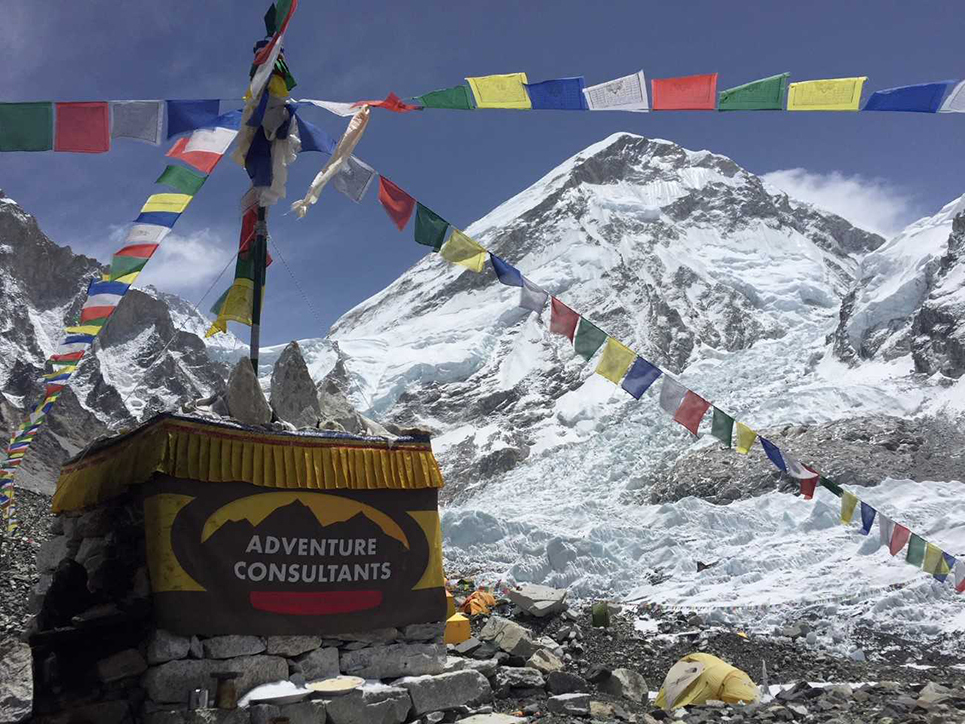
The trek to Everest Base Camp is among the most dramatic and picturesque in the Himalaya. The scenery is varied and spectacular, the lodgings and tracks are of a very high standard, and the interaction with the local Sherpa people is truly memorable.
Our pre-monsoon treks are unique in that we have the privilege of staying overnight at Base Camp. Our days spent exploring Base Camp give us an appreciation of the inner workings of expedition life, while our post-monsoon departure enjoys the clear skies and pristine views of the autumnal trails. Those joining our April 8 departure have the added experience of trekking alongside our Everest climbing expedition members enroute to Base Camp. We have specially developed the itinerary to combine a mix of fascinating cultural highlights into the journey. Initially you can enjoy the diversity of Kathmandu by visiting ancient temples that remain the spiritual focus for the Nepalese people. An experience not to be missed is the colour and bustle of the Thamel district, famous for its shopping and restaurants.
The trekking route ascends the Khumbu Valley on well-formed trails that provide foot access between villages for the Sherpa people. With many of the world's highest mountains to admire and all the varied and interesting people to see and meet, there is always plenty to see and assimilate along the way. Every day has the ability to astound you with new and interesting experiences!
- Discover the majestic Khumbu
- Stay in Sherpa homes and lodges
- Climb Kala Patar with dramatic views of Everest
- Pre-monsoon trips overnight at the AC Everest Base Camp
Intermediate
5,554m/18,222ft.
Arrive in Kathmandu, team briefing
Gear checks and sightseeing
Fly to Lukla 2,860m/9,383ft and trek to Phakding 2,610m/8,563ft
Trek to Namche Bazaar 3,440m/11,286ft
Rest day and sightseeing
Namche Bazaar to Tengboche 3,970m/12,696ft
Tengboche to Pheriche 4,270m/14,009ft or Dingboche 4,410m/14,469
Rest day in Pheriche or Dingboche, morning hike
Pheriche or Dingboche to Lobuche 4,940m/16,207ft
Rest day in Louche, morning hike
Trek to Everest Base Camp, overnight at AC Everest Base Camp 5,300m/17,400ft
Base Camp to Gorak Shep Camp in the afternoon 5,165m/16,950ft
Gorak Shep Camp to Kala Patar 5,550m/18,209ft , descend to Pheriche or Dingboche
Trek to Namche Bazaar
Trek to Lukla
Spare day for weather delays
Fly Lukla to Kathmandu
Depart from Kathmandu
Arrive in Kathmandu, team briefing
Fly to Lukla 2,860m/9,383ft , trek to Phakding 2,610m/8,563ft
Trek to Everest Base Camp 5,300m/17,400ft , return to Lobuche
Descend to Pangboche

Departures and Pricing
Looking for a specific date? Book a private trek
The trek to Everest Base Camp is challenging and you MUST train for several months before departure to make your trip as enjoyable as possible. Training should include regular walking on hills, in combination with swimming, light running or biking and gym work to develop strength. We recommend the Everest Base Camp Training plan from Uphill Athlete .
You must be well-balanced and confident when hiking variable, uneven terrain to achieve this trek.
No prior altitude experience required.
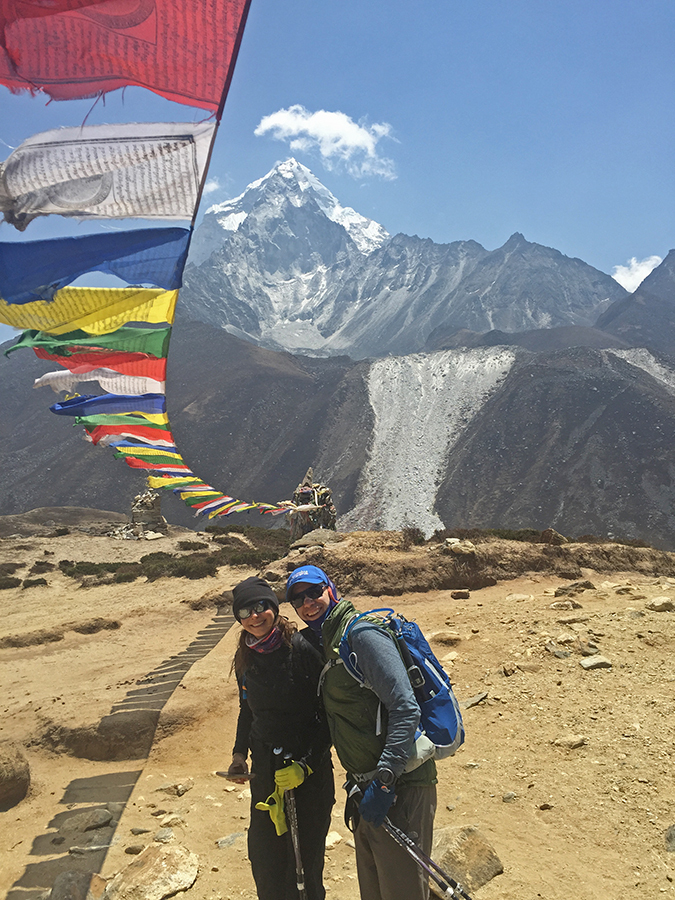
Because we want you to remember this trek for being so much more than just a hike, we at Adventure Consultants have taken enormous pleasure in planning a fusion of all the best components that we know make this a truly memorable experience.
We are renowned for our quality of service and the strategy applied to our treks. Our reputation is attributed to meticulous planning and experienced logistics coordination. We have a philosophy of investing in every trip to offer our trekkers the best possible experience.
We employ strong and specialised trek leaders and Sherpa staff, who are some of the most pre-eminent in the industry. We pride ourselves on operating with small teams and the best back-up and support available. This includes nutritious and ample quantities of food, comfortable base camp facilities, reliable communications systems and the necessary medical back up. Our staff are the most affable Western or Sherpa guides working in conjunction with our excellent cooking teams, to promise you the experience of a lifetime!
Many of our team members come to us because they have seen us in action on a previous trip and decide to opt for our level of service and proven experience. Others return because they know we do our very best to make our trips safe and successful.
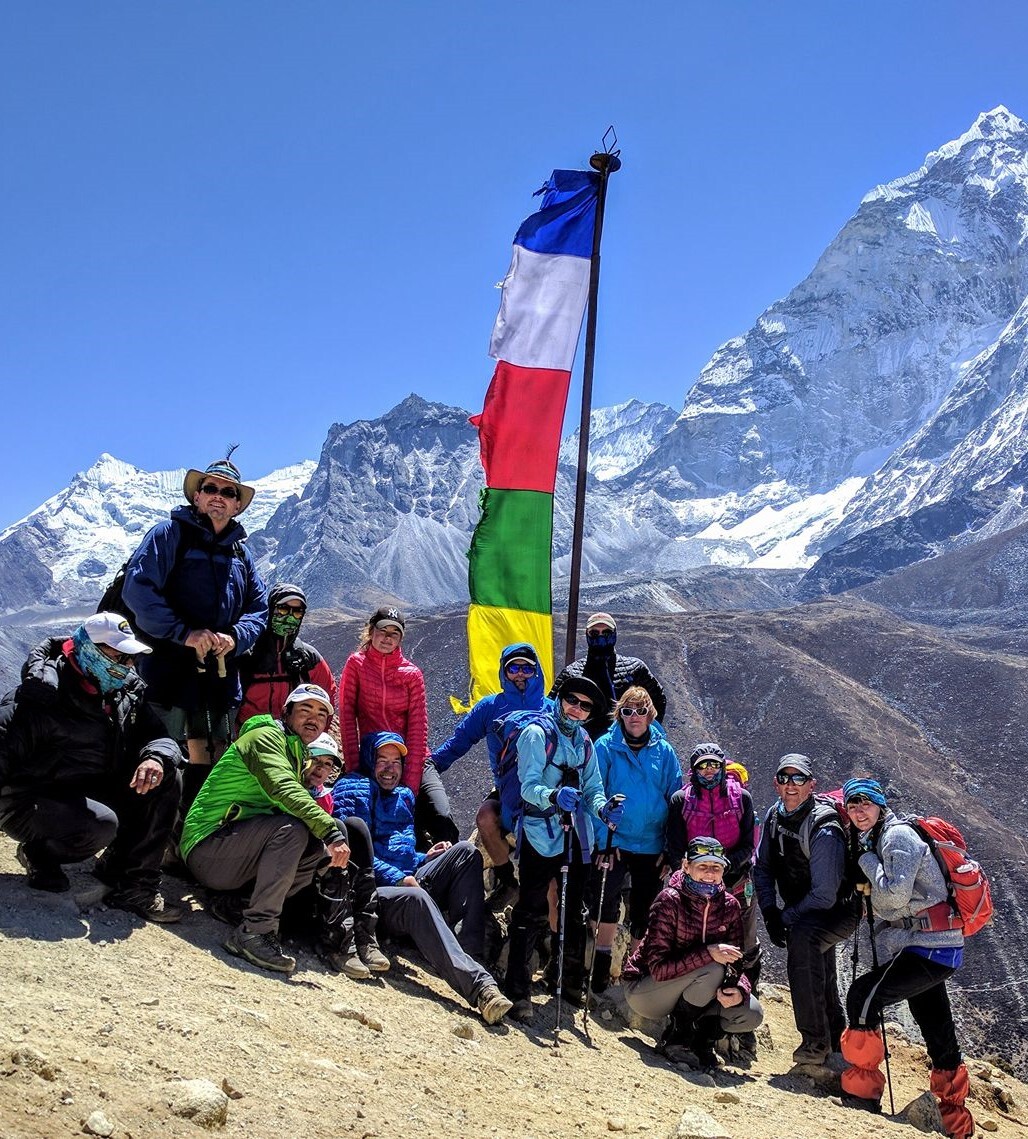
The price of your trek includes the following:
- Qualified and experienced trek leaders
- Helicopter flights Kathmandu-Lukla and return
- High end lodging
- Overnight at Everest Base Camp (pre-monsoon)
- Small groups
- Comprehensive pre-trip support from our New Zealand office
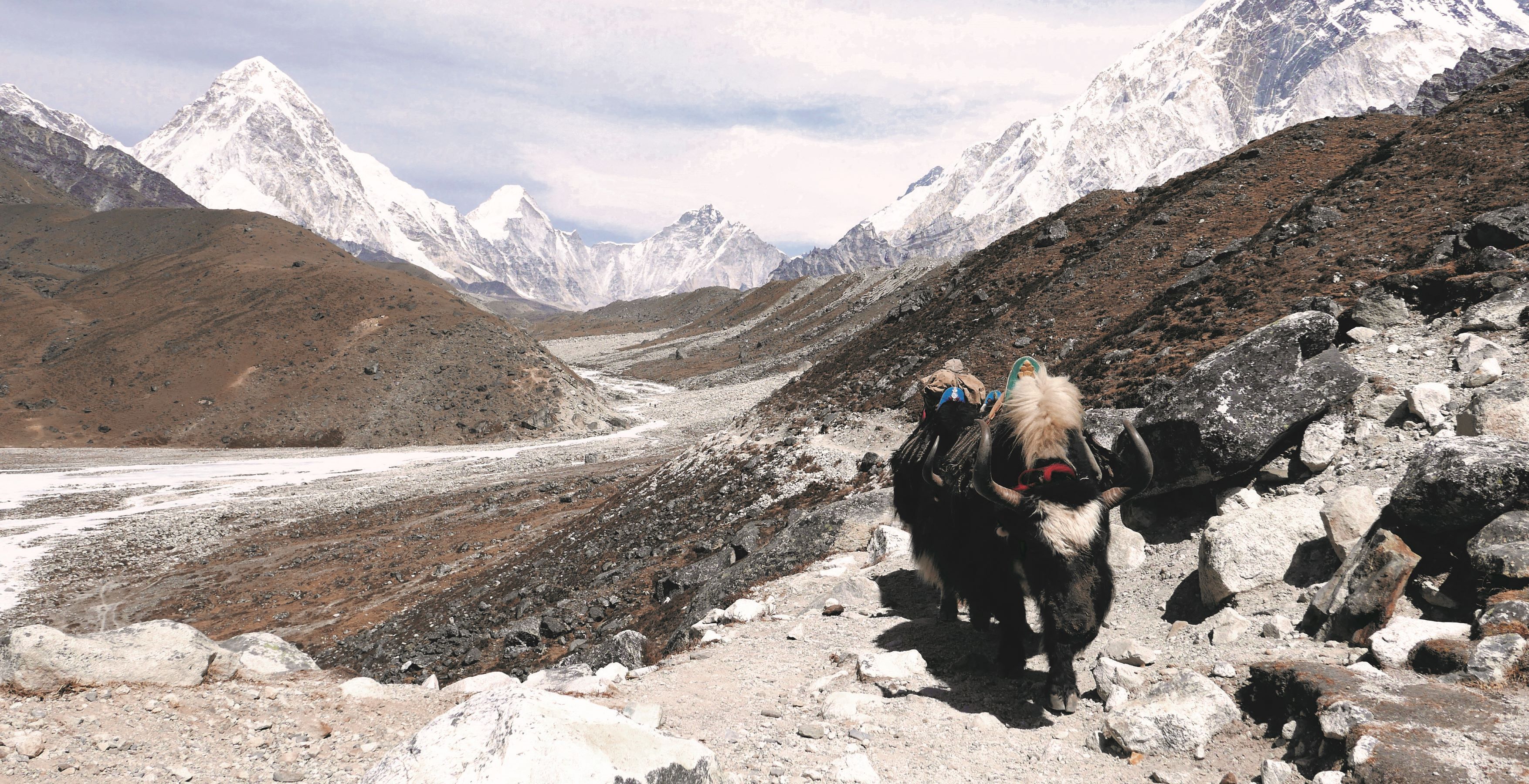
Wide open spaces at the top of the world! Our Everest Basecamp Trek takes you there and back in style seeing the best of the Khumbu Valley region, with our expert guiding, local knowledge from three decades of trek guiding and quality logistics.
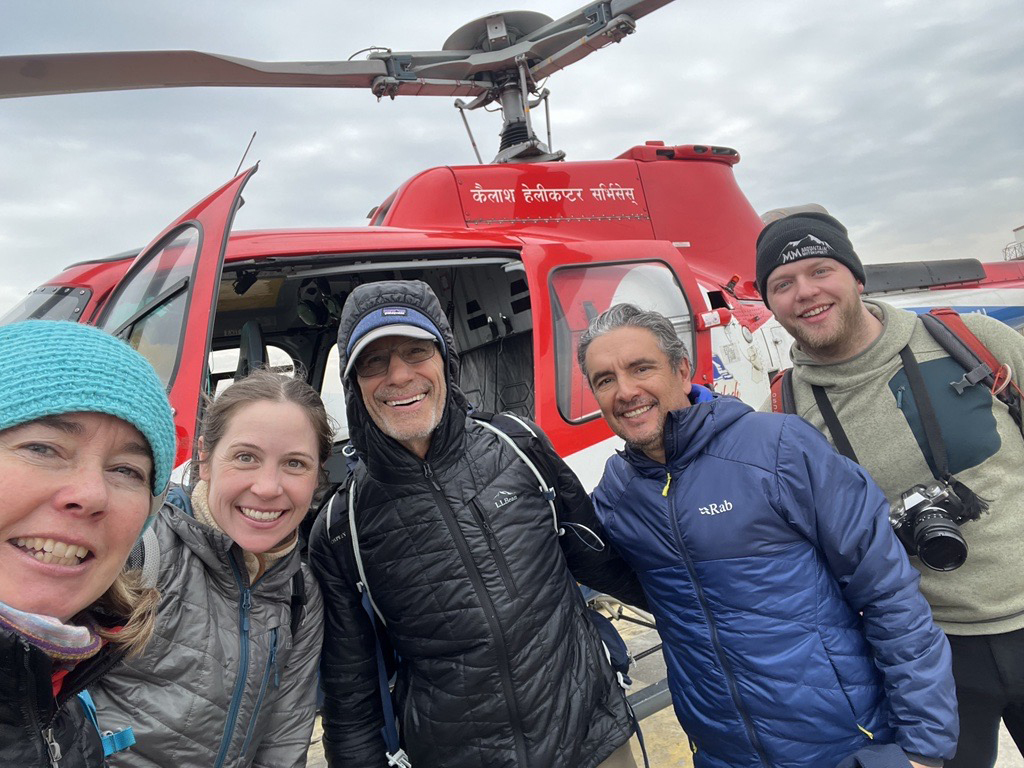
Adventure Consultants utilise helicopter transport for flights to and from Lukla. Helicopter egress is available from Everest Basecamp for those who prefer not to walk out and would like a shorter trip.
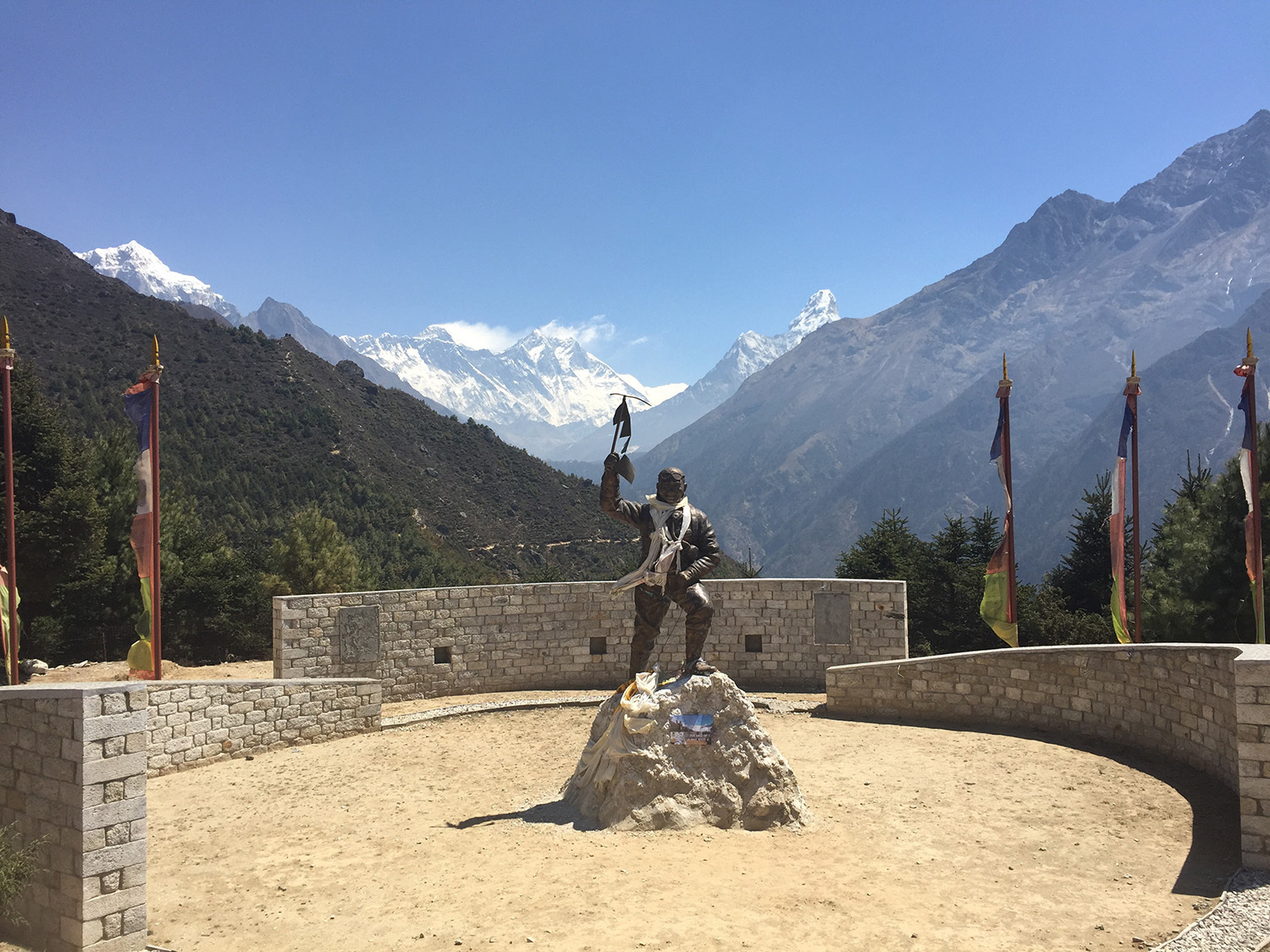
Iconic views of the big peaks of the Khumbu Valley including Everest, Lhotse, Nuptse and Ama Dablam make this a really special trip, plus visiting all the villages along the way.
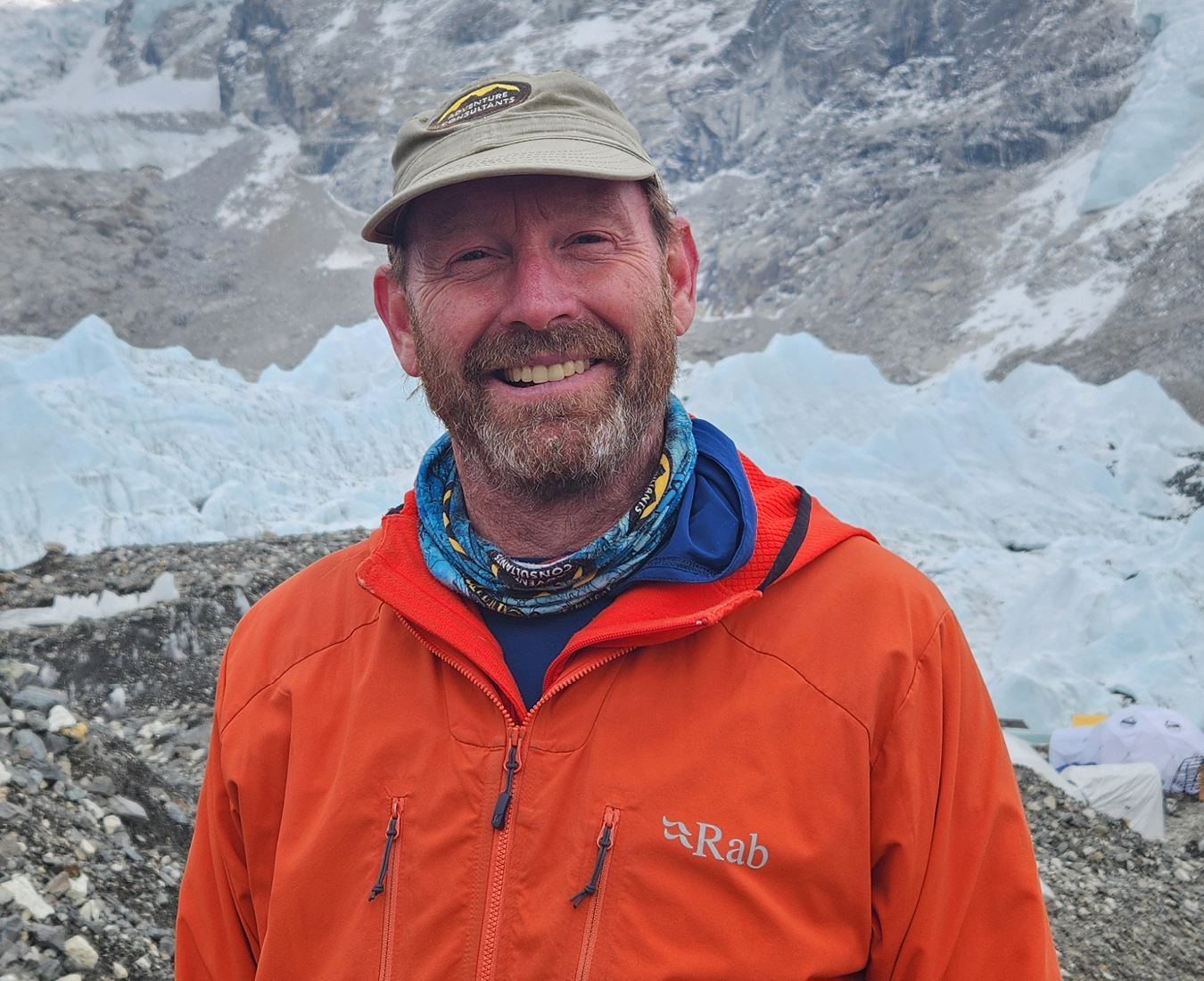
"The Everest Base Camp Trek was a lifelong dream for me. However, just because one has decided to pursue a life’s dream doesn’t mean one will return home with a trip of a lifetime. You were indispensable in me being able to handle the day-today challenges of the trek. For this I am forever grateful."
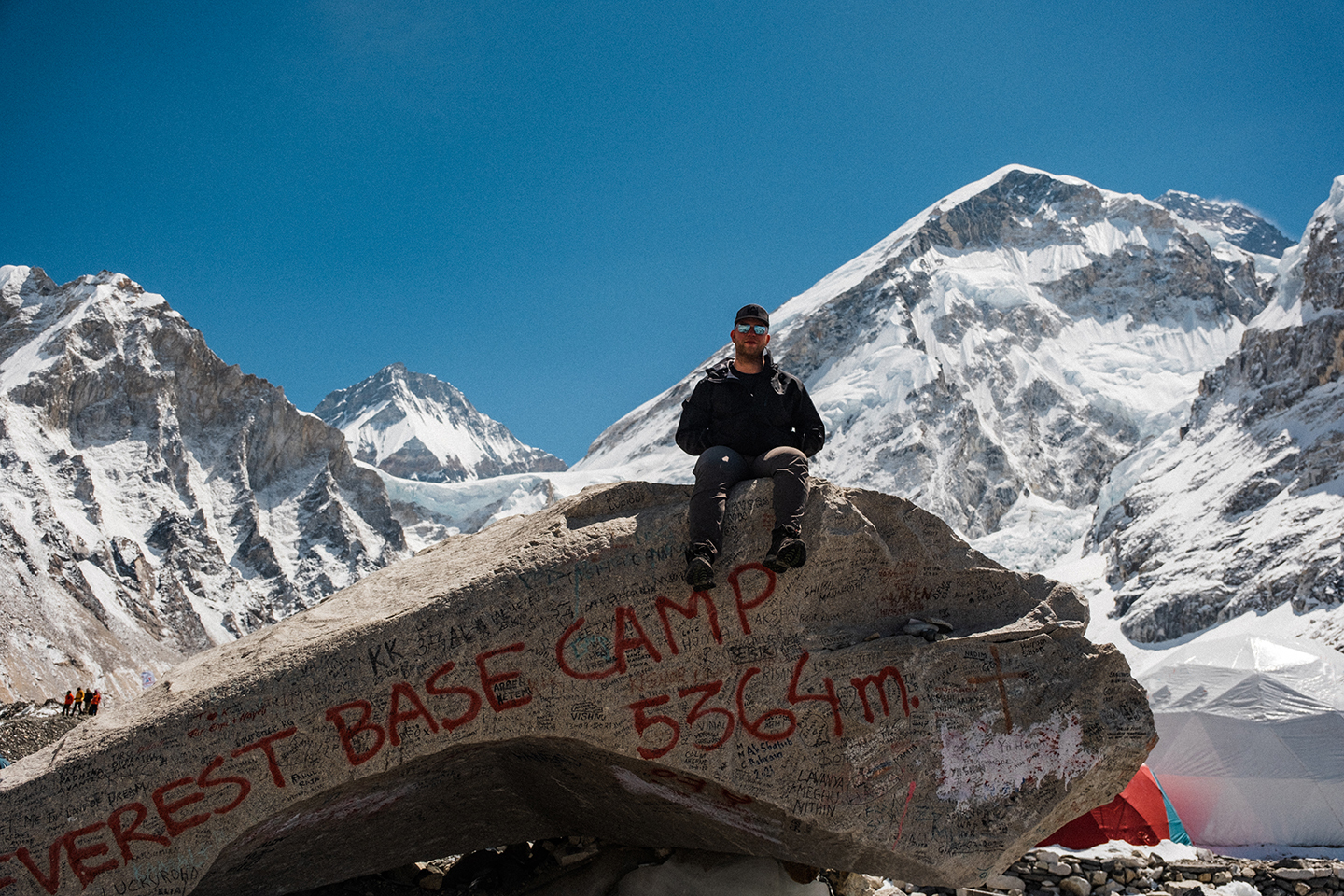
"Everest Base Camp was amazing!! I loved the food, facilities and all the wonderful people who served us while we were there – the food was wonderful – it couldn’t be improved on in any way shape or form and will always be a magical and memorable two days in my life. Thank you so much to everyone who was there...."
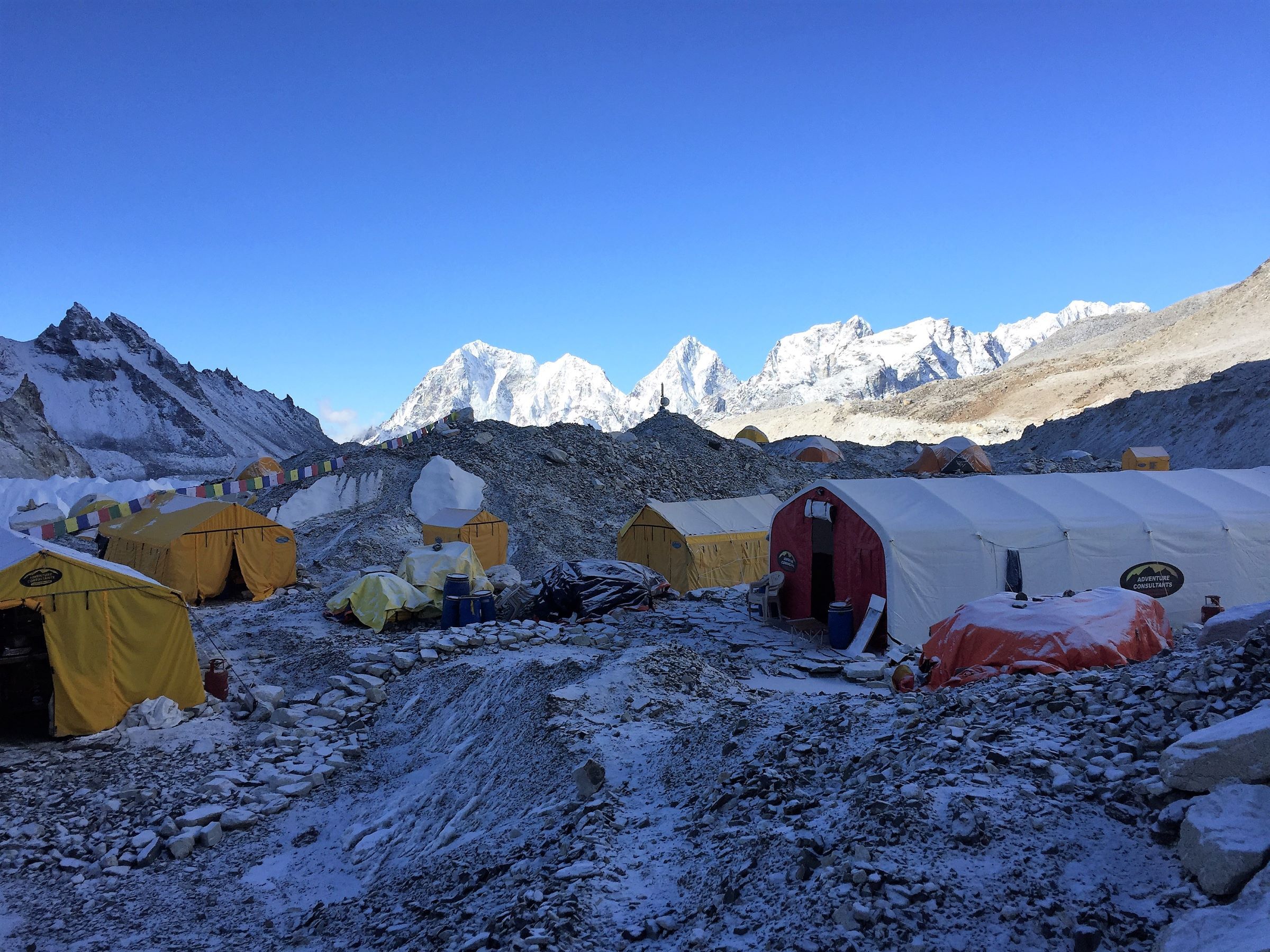
"Wow! We had a fantastic trip. Nepal has such a beautiful vibe , it has left me wanting to go back for more!"
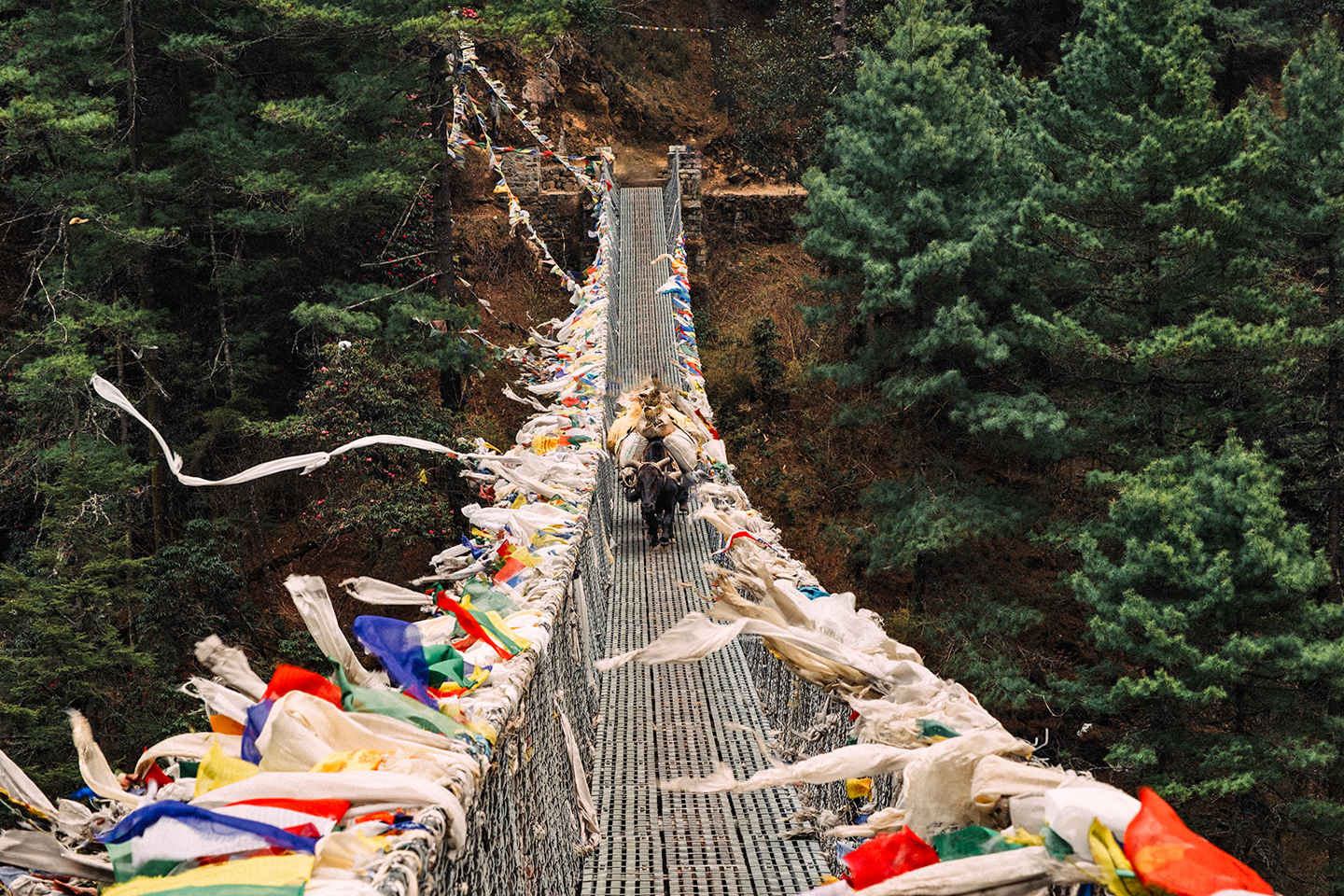
"I really want to thank you the entire Adventure Consultant Team for this lifetime experience . I will never forget walking on the clouds, crossing the bridges, the stupas, the praying wheels, and … the Himalayas. Everest and Ama Dablam, words and sights that I will never forget. Namaste!"

The highest point in Africa, Kilimanjaro , is perhaps one of the best-known mountains in the world. It is the easiest of the Seven Summits and definitely the most romantic!
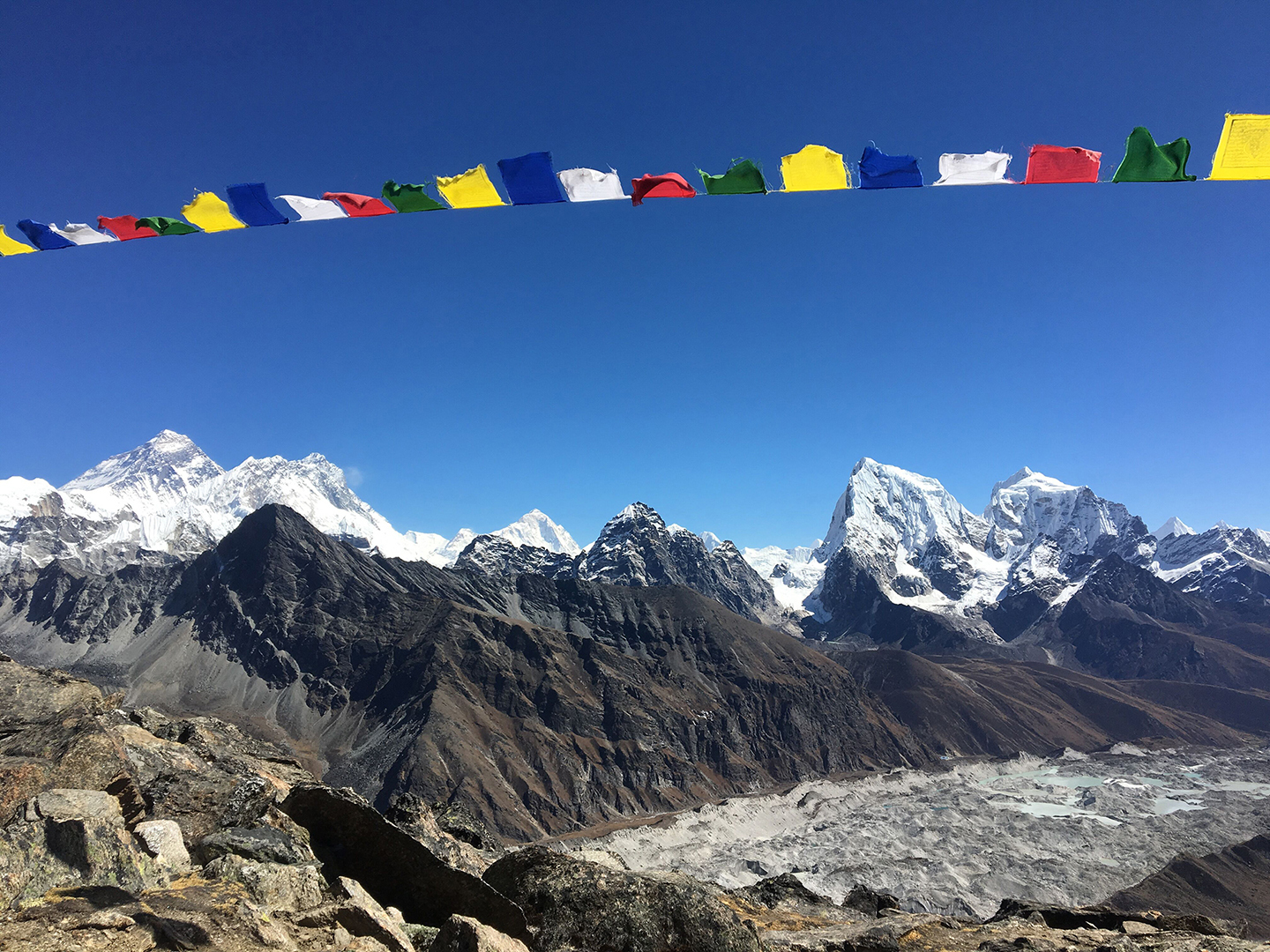
Grab your gear and let's go to Gokyo ! Extend your Everest Base Camp adventure by adding the breathtaking Gokyo Valley to your trek.
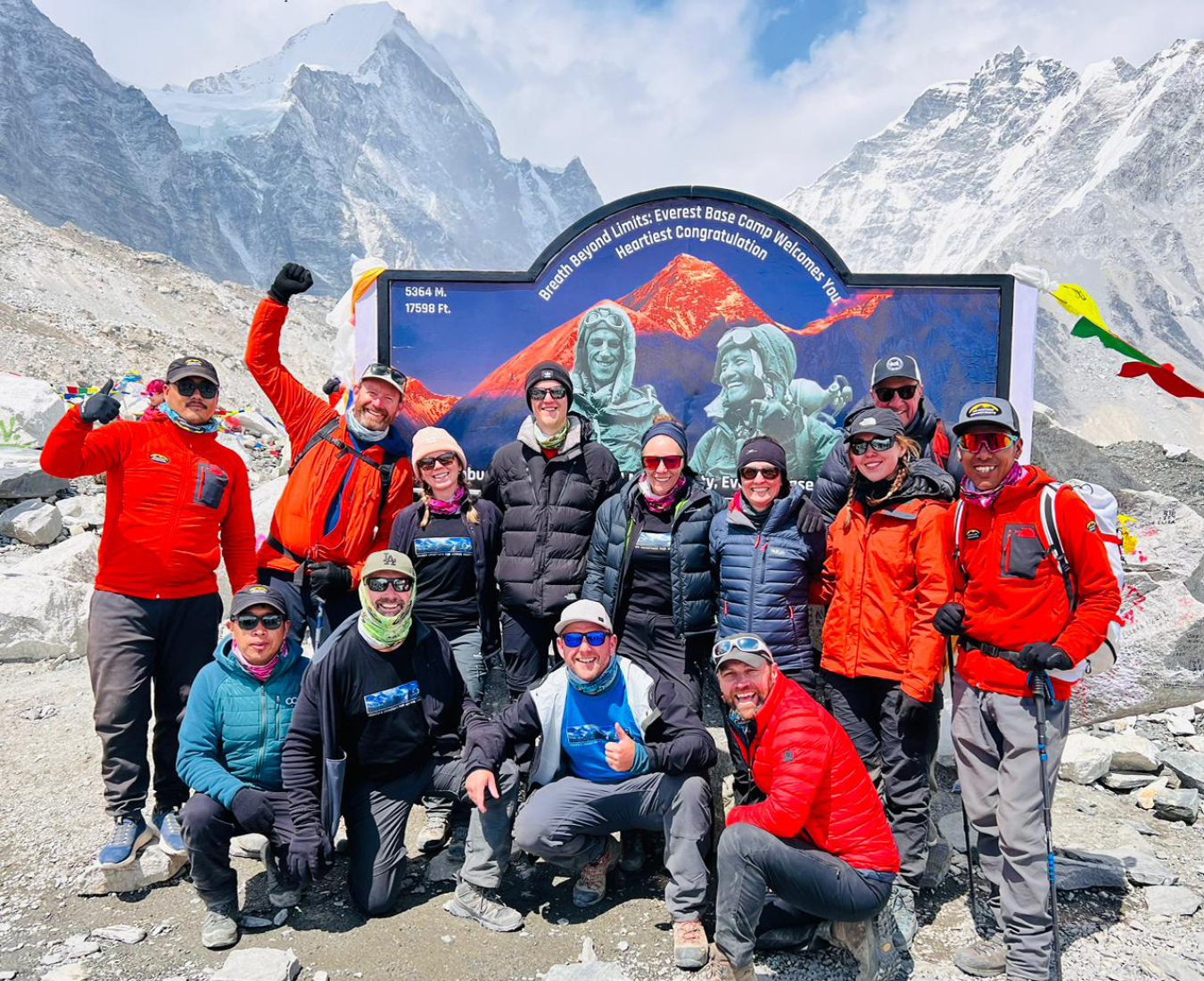

Everest Base Camp Trek – 13 Things to Know for Your Trip in 2024

Just a mention of the Everest Base Camp Trek (EBC) in Nepal is usually enough to stir the soul of hikers all over the world. Thousands of aspirational ramblers have gained valuable experience on this Himalayan route. Some see this hike as a rite of passage for all true trekkers. Others go on this trek because it’s a ticket to the soaring roof of the world, where an up-close encounter with the highest summit of all awaits. The Everest Base Camp in Nepal itself sits at an impressive 17,598 feet (5,364m) high, but more on its impressive heights later on.
Whatever your reason for wanting to strike the Everest Base Camp Trek from the bucket list this year or the next, this guide can help in your pursuit. It will run through all the basics of this iconic trekking route between Namche Bazaar and EBC in Nepal, detailing the best time of year to go, what sort of challenges can be expected along the way, what trekking gear you’ll need on such a trip, and so much more. Find answers to the most frequently asked EBC Trek questions here. Dive in!
Our experience on the Everest Base Camp Trek
Like many, we began offering the trek to Everest Base Camp largely because of its reputation as one of the most extraordinary adventures on the planet. As soon as our team set foot on this legendary path we could instantly see why it was the case. Travelers of all stripes, all nationalities, join together on this true Himalayan adventure. The EBC Trek has the feel of a true expedition as you fly into the small airport at Lukla and take your first steps on the wooded trail towards the small village of Namche Bazaar.
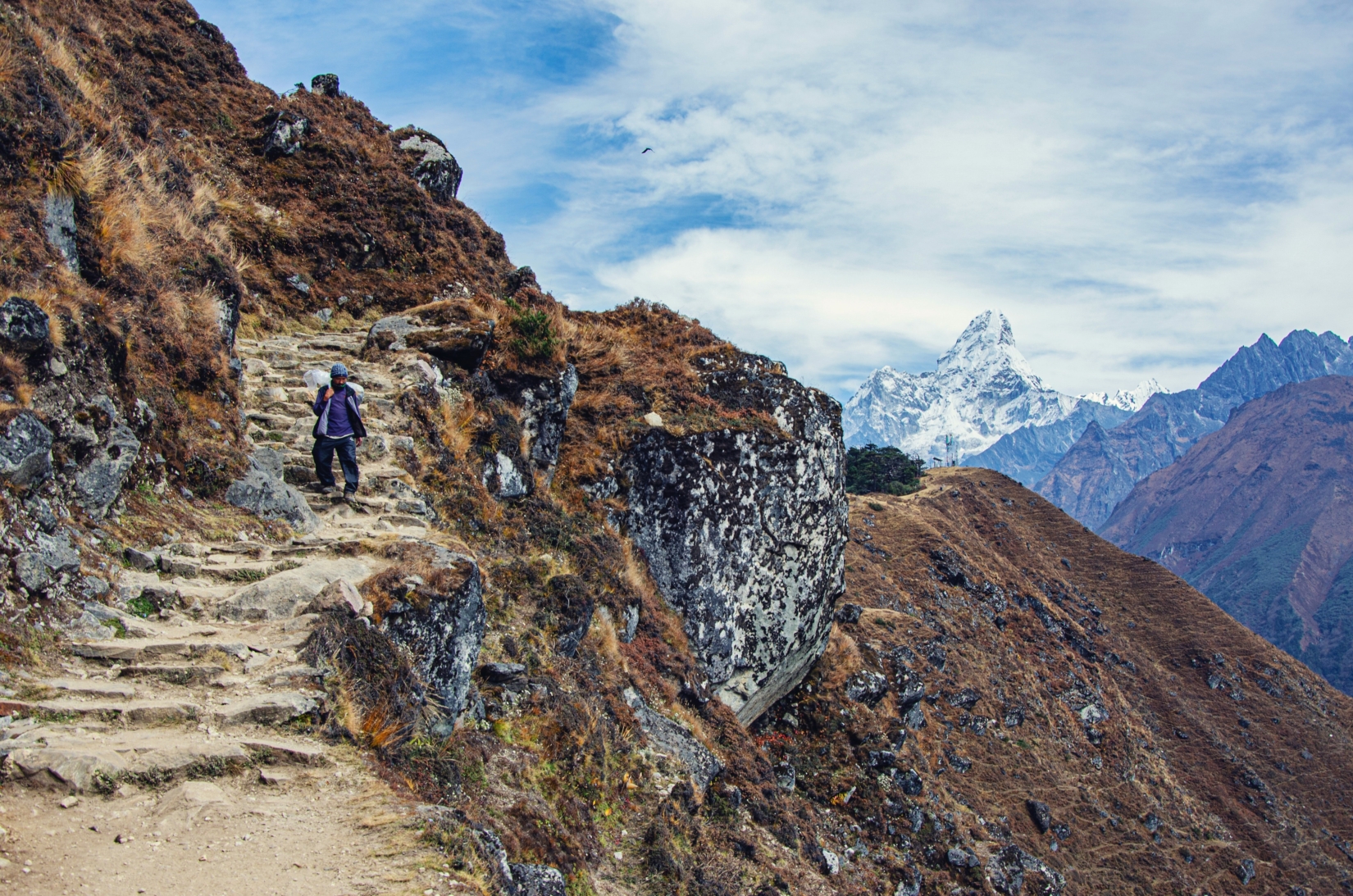
For me, Nepal is unlike any country I have visited. On my visit to this culturally rich and diverse nation I felt like I had entered into a new world. With the influences of both Buddhism and Hindi, the capital city of Kathmandu provides a window into the beautiful culture and history of the Nepalese people and bags you to explore more of this remarkable country.
What’s in this guide?
- Where is Everest Base Camp (EBC)?
- History of Everest Base Camp
- How long is the trek to EBC?
- Is it worth it? Things to see & costs
- How hard is the trek? Terrain, elevation, and altitude
- Food on the Everest Base Camp Trek
- Accommodations on Everest Base Camp
- When’s the best time to go? Temperatures & weather
- What gear and equipment should I pack?
- Should I use a porter service?
- Getting there
- Travel visas and permits
- A typical Everest Base Camp Trek itinerary
1. Where is Everest Base Camp (EBC)?
There are actually two base camps for Everest trekking: the North Base Camp in Tibet and the South Base Camp in Nepal. The Nepalese camp in the Khumbu region is the Everest Base Camp that most people talk about, and the endpoint of this legendary trek. It’s tucked away at the end of a long valley that carves through the Himalayas after splitting at the Sherpa village of Dingboche. The formidable Khumbu Icefall – the first obstacle for those attempting a summit push to Everest – begins right on the doorstep of the camp, leading up to the Western Cwm (also known as the Valley of Silence) and the peaks of Lhotse and Nuptse.
2. History of Everest Base Camp
Climbing on Mount Everest started at the beginning of the 1920s, when a team led by George Mallory (who some think may well have been the first person to reach the summit) came to map out the north face. However, Mallory and his team never established a permanent base camp on their trips, and the north route was all but shut when China invaded Tibet in 1949.
Then came the conquering expedition of Edmund Hillary and Tenzing Norgay . It took place on the south slopes in Nepal. Hillary and Norgay realized it made more sense to have a place to store supplies at the base of the mountain rather than trek the whole length of the Khumbu Valley whenever they needed gear. Thus, Everest Base Camp was born.
3. How long is the trek to EBC?
The Everest Base Camp Trek may be the single most famous trek in Asia, and arguably the world. Some say its booming popularity is the trek’s own worst enemy, and it’s true that the trail has suffered from overcrowding and some pollution in recent years. However, nothing can take away from the thrilling sense of adventure that comes with climbing towards the edge of the world’s highest peak. That reaches a fever pitch in the early days of your hike, when you’ll catch a jaw-dropping broadside of Mount Everest from a lookout on the south side of Ama Dablam.

Distance
The rewards of the trek don’t come so easily. EBC is a high-altitude path that requires considerable acclimatization over a good distance. You’ll typically need 12-14 days of full-on trekking (that’s right, your “rest days” involve walking too!) to complete the 80-mile (130km) roundtrip that starts from Lukla.
This distance is roughly divided into individual daily sections of 8-10 miles (13-16km), but the reason the whole adventure takes so many days is because it needs to be broken down into bite-sized chunks due to the altitude with acclimatization and rest days mixed in. Most itineraries will leave enough time to complete each leg on any given day at well below the average trekking pace.
Walking times
Most walkers find that they hike a maximum of 8 hours each day, though that can go up a little when you reach the higher altitude sections of the route – not just because of the physical challenge, but because you’ll be stopping often to take in all the breathtaking views!
4. Is it worth it? Everest Base Camp trip highlights & costs
The joy is in the journey here, as you trek further up to gaze from the roof of the world. Some of the best sightings of the famous Everest arguably come during the Everest Base Camp Trek itself, from various lookout points along the way. These magnificent views combined with mystical monasteries and Sherpa villages offer a host of intriguing trip attractions en route. For me, the best highlights of the trek are:
- Kala Patthar (Kalapathar) – Roughly translates to “Black Rock”. Detour to this soaring lookout point that’s 18,208 feet (5,550m) up on the ridges above Gorak Shep . It’s a real challenge (think a 1,640-feet / 500-meter ascent in 2 hours) but is hailed by many as the best view over Everest, with the Khumbu Icefall crashing through the valley below.

- Gorak Shep (Gorakshep) – A settlement that seems at the end of the world, this tiny town is the heartland of the Sherpa people and sits at the base of Kala Patthar.
- Sagarmatha National Park Museum – You’ll encounter this one very early on in the trek during your rest day in Namche Bazaar. It’s worth the climb to its perch above the village, mainly because the forecourt has incredible views of Everest and Nuptse – your first glimpse of the great mountain. Inside, you can learn all about the unique culture of the Khumbu Sherpa people .
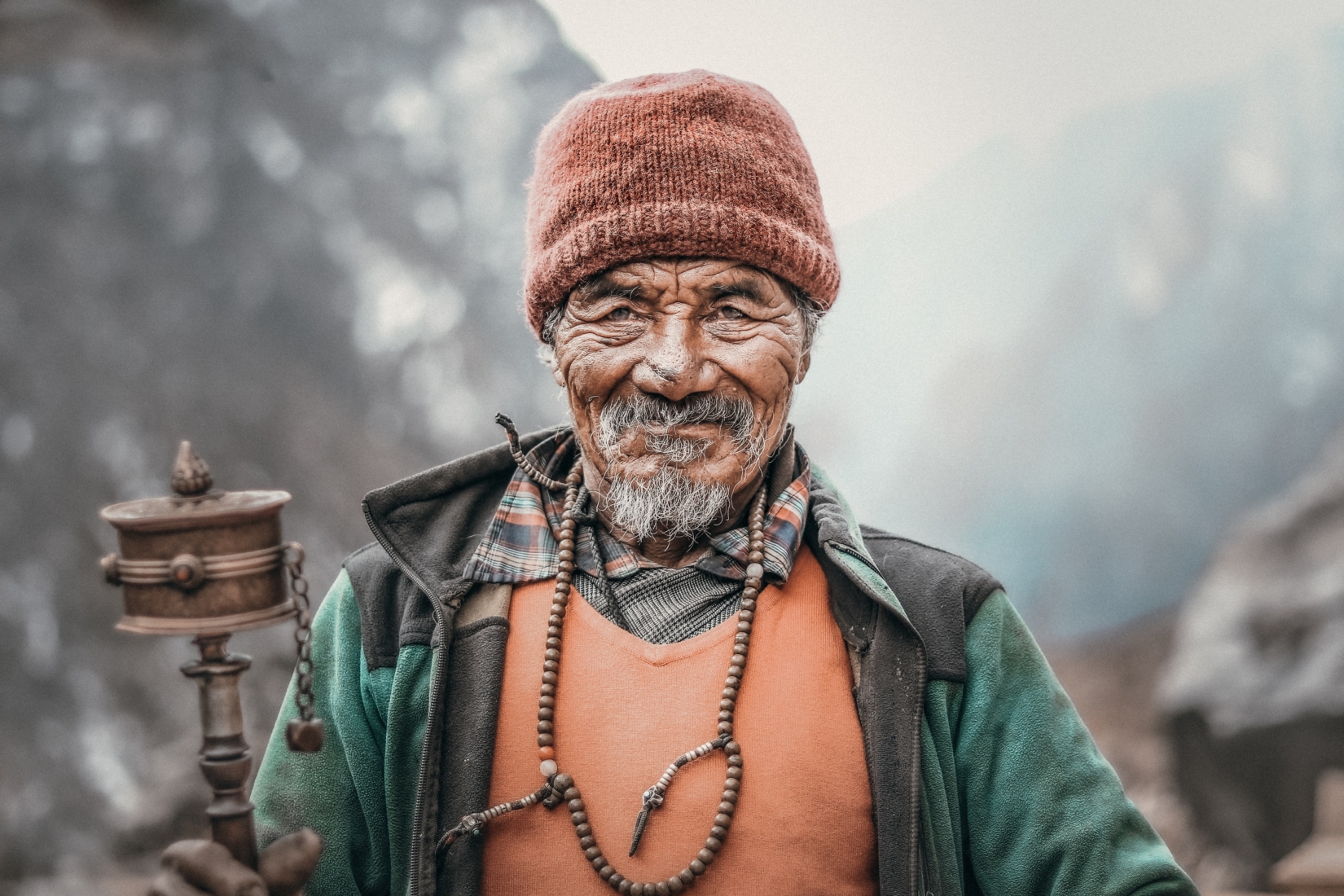
- Tengboche Monastery (Thyangboche Monastery or Dawa Choling Gompa) – The largest Buddhist gompa in the valley of Everest, Tengboche Monastery is a pitstop for determined trekkers bound for the summit. They come to light candles and ask for blessings.
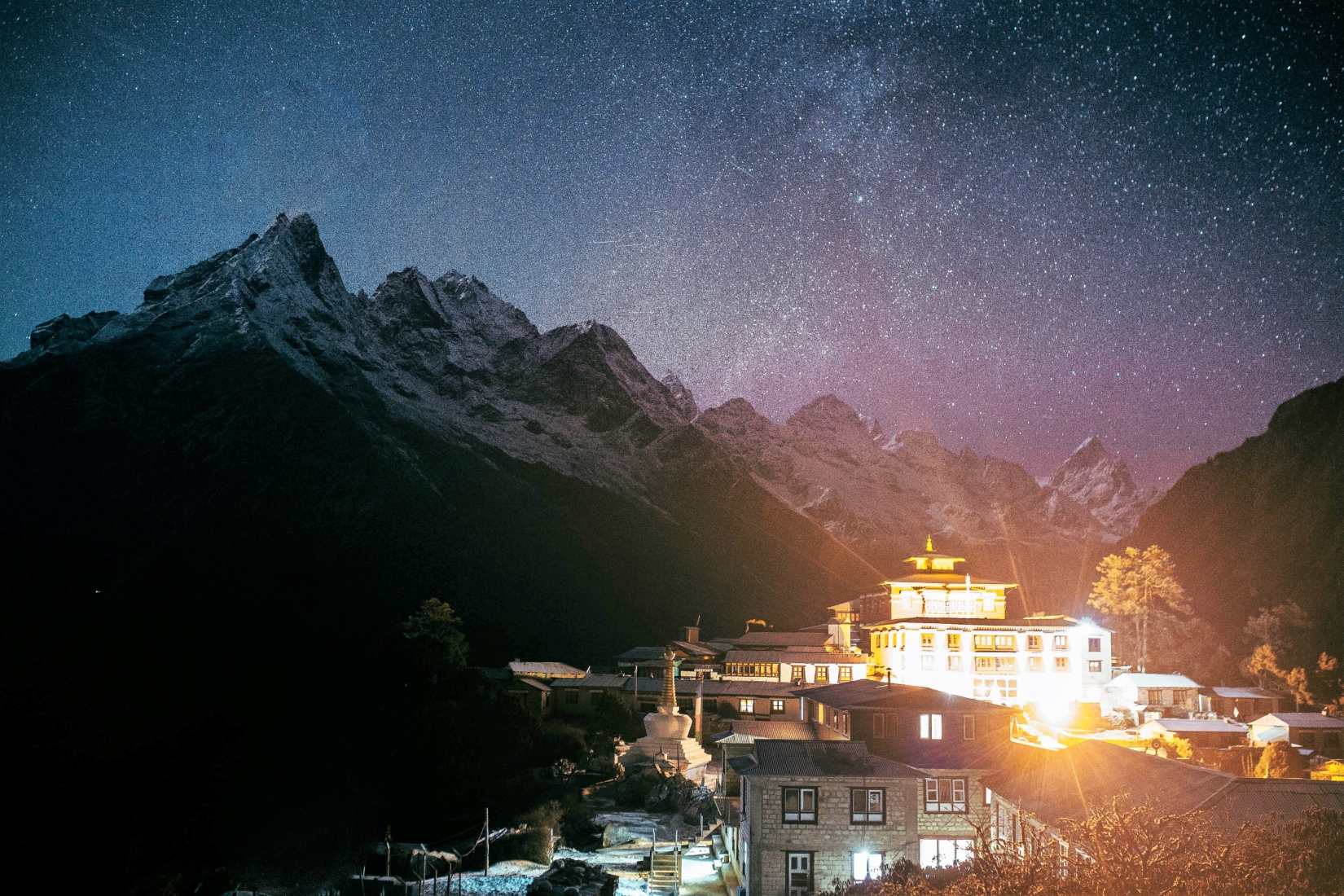
- Nangkar Tsang / Dingboche Viewpoint – Above the town of Dingboche, this detour off the main route is good acclimatization trekking and offers a panorama that takes in the Khumbu Glacier and the whole Imja Khola Valley.
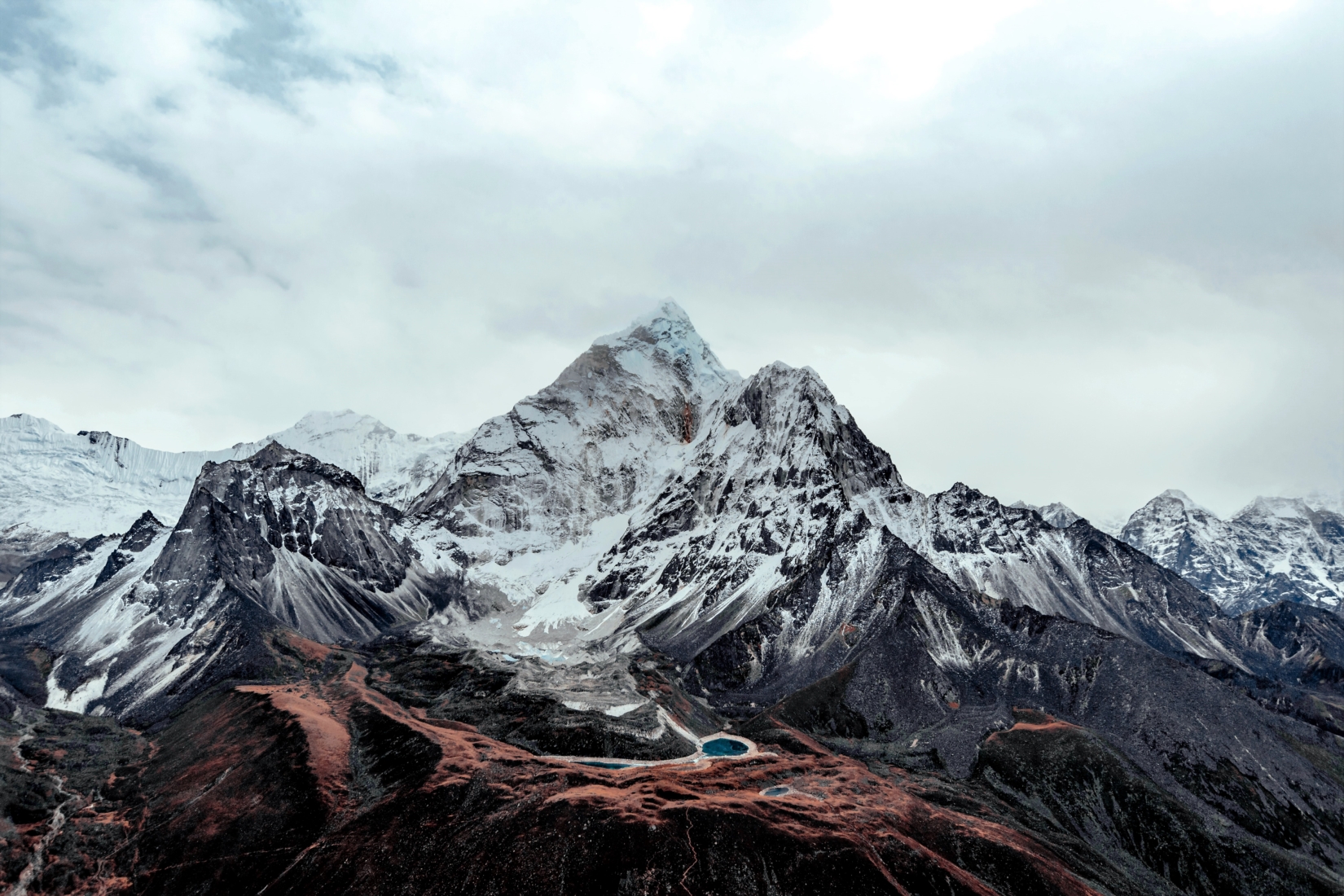
With so much natural beauty to be experienced, how much will it set you back? When it comes to pricing, costs of the Everest Base Camp Trek can range widely but the best all-inclusive tour packages start at around US$4,295 (including domestic flights to/from the trek start point) . If this number is giving you sticker shock, don’t let it deter you from the trip of a lifetime to Nepal, because my team at The Explorer’s Passage is always here to work with you and your preferences to craft a trip that fits your needs .
5. How hard is the trek? Terrain, elevation, and altitude
So just how difficult is the trek to Everest Base Camp? To answer this, you’ll have to consider the terrain and heights of EBC. Your physical fitness also plays a factor in the perceived difficulty of this adventure. Based on our Trip Activity Level Guide , we classify this trek as an advanced level, but you may be glad to know that no technical training or mountaineering experience is required.
Not sure if this Himalayan adventure is right for you? Contact us and we’ll walk you through details on the physical demands, recommended training, and more so you can make an informed decision.
The Everest Base Camp hike graduates from the alpine surroundings at the south end of the Sagarmatha National Park to the scree-covered ridges of ancient moraines in the final push towards the trekking finish line. The first sections are easier in terms of terrain but more difficult because they are constantly steep. You’ll notice this in the ascent from Lukla to Namche Bazaar, and then again from Namche Bazaar to Tengboche. The path there is largely shaded by pine and ironwood forests, muddy when wet but also interspersed with rocks wedged into the ground. You’ll stroll across suspension bridges to cross most rivers.
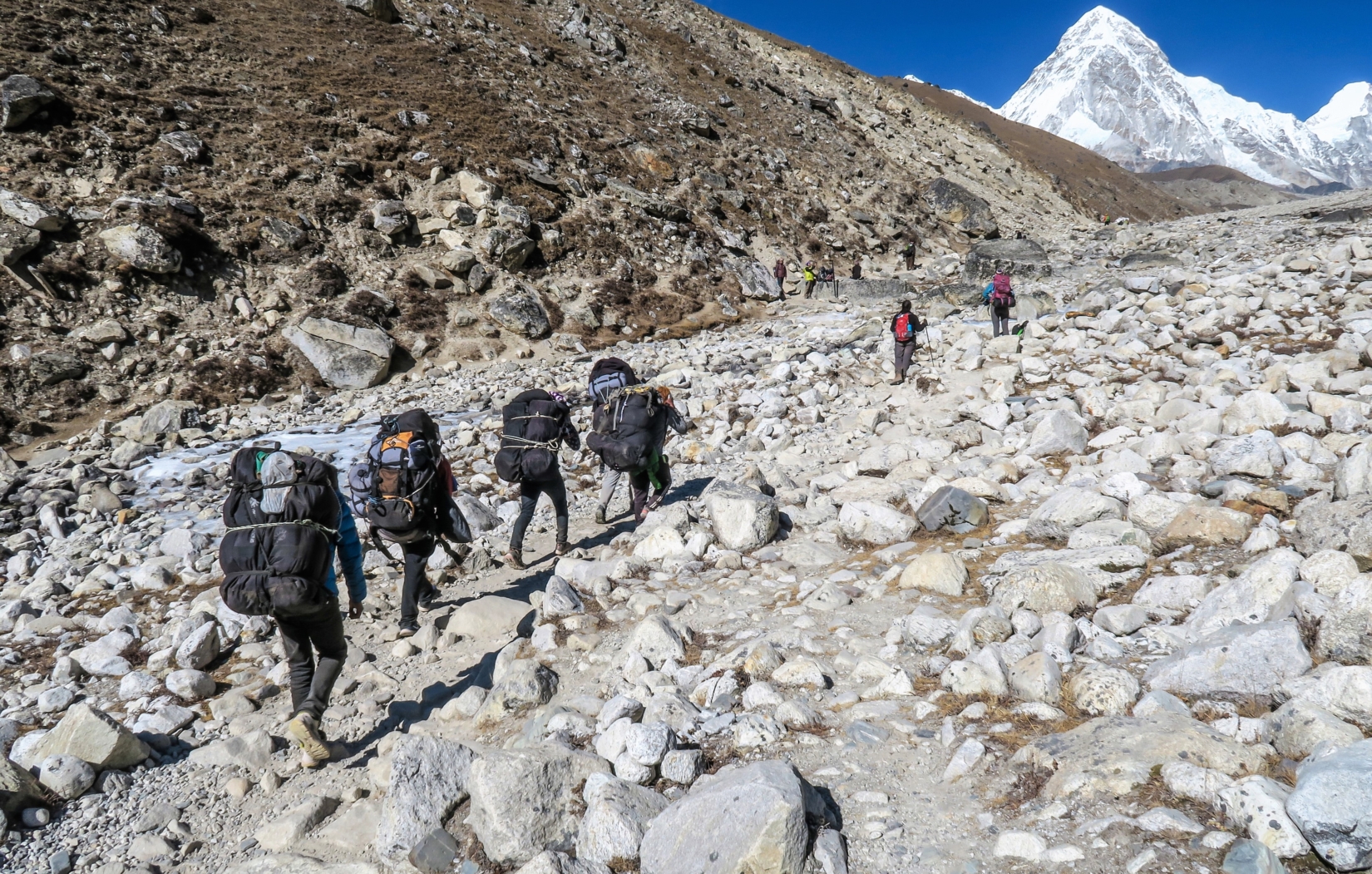
After the first few days of your trip, you’ll see that the trekking path levels a little as it skirts a wide, flat valley with the mighty Himalayas looming on all sides. This is where you lose the tree cover for good, so be sure to have the sunscreen handy. It’s rock and grit underfoot until you near Gorak Shep. There, the route sort of merges with the great pebble and rock moraine at the end of the Khumbu Icefall. It’s normal to find snow coverage in those parts, especially if you’re trekking between November and March.
Elevation and altitude
How high is Everest Base Camp? Well, altitude is commonly travelers’ biggest challenge on this tall trek. As mentioned before, you’re going to have to clock up a hefty 17,598 feet (5,364m) above sea level. You’ll manage 9,400 feet (2,865m) at the EBC trailhead, which is taken care of by the flight from Kathmandu to Lukla. The rest is up to your legs. You’ll knock out about 1,800 feet (549m) by climbing to Namche Bazaar. After that, days on the trail (not including acclimatization days) average around 1,200-1,600 feet (366-488m) in elevation gain, though it’s on less-steep paths once you cross the tree line around Tengboche. Everest Base Camp elevation is no joke and can be difficult for some.
Acute Mountain Sickness (AMS) – the mildest form of altitude sickness – is certainly a risk here. It can affect anyone over altitudes of 8,000 feet (2,438m), but usually has severe impacts at higher levels. Since the EBC Trek reaches altitudes of more than double the height where AMS can possibly kick in, there are usually two full acclimatization days planned in – one in Namche Bazaar and the another in Dingboche or Lobuche. These days aren’t for resting but instead used to climb high and then descend to sleep at lower altitudes, a common practice that’s known to help the body acclimate to conditions at higher elevations.
Don’t be surprised if your Everest Base Camp Trek guide constantly reminds you to drink enough water as it’s another way to combat AMS. Once you hit the higher altitude parts of the path, you can typically expect your guide to be prepared with a supply of oxygen, should you need it. You might also want to consider packing an AMS medication like Diamox on your trip to Nepal.
Even seasoned alpinists find the trip a challenge and lots of climbers struggle with Acute Mountain Sickness. Just remember: no pain, no gain on this most incredible of trails! On this trip, you’ll see the sheer majesty of the Nepalese Himalayas up close and scale to viewpoints that are simply some of the best you’ll ever hike to.
6. Food on the Everest Base Camp Trek
All that trekking is going to work up a serious appetite, you can be sure of that. Thankfully, EBC teahouses tout some decent grub for when it’s time to refuel. Don’t be surprised to find that the menus are virtually identical the whole way along, even if the dishes themselves vary greatly with the whims of different chefs up and down the trip route.
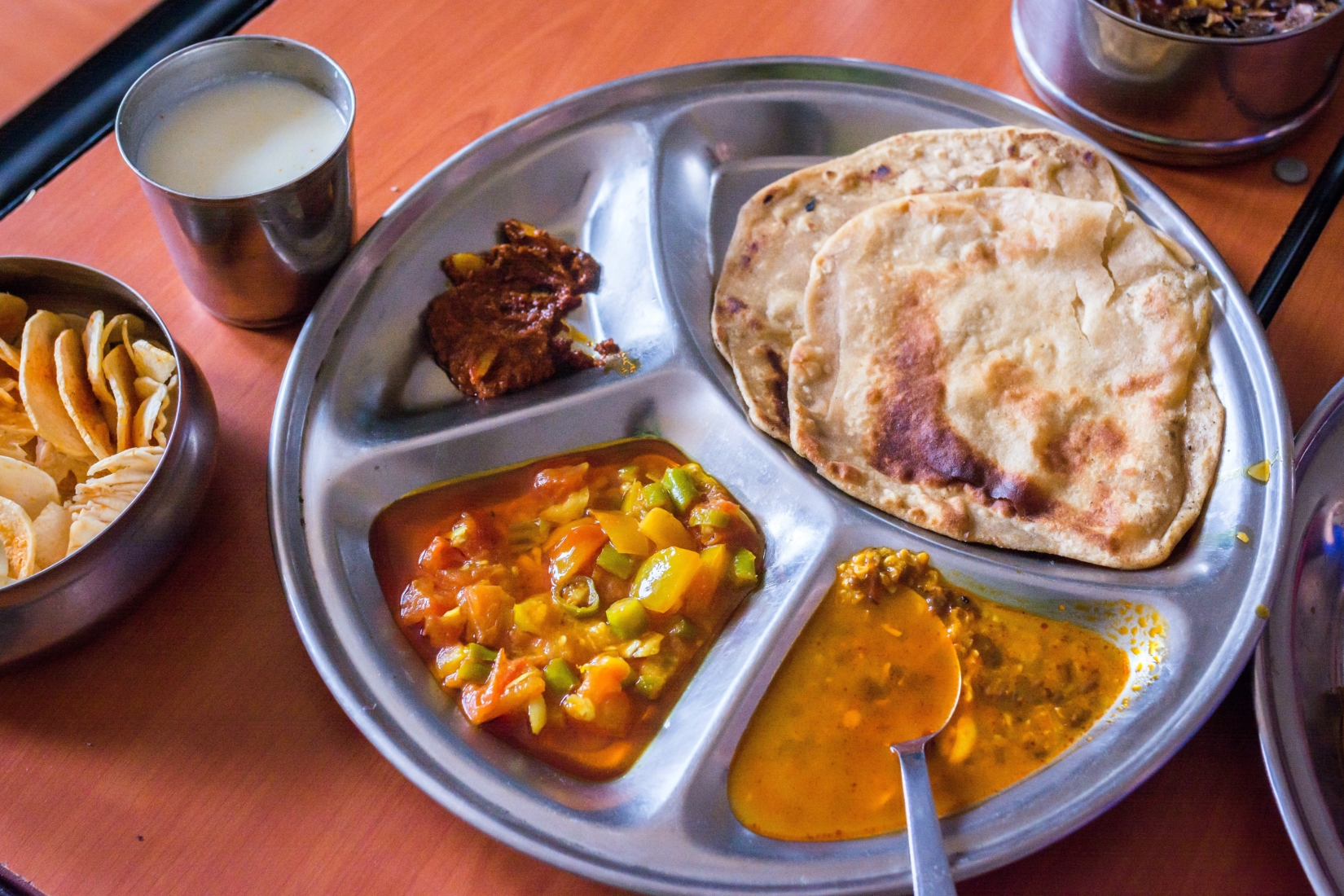
Common dishes include:
- Dal bhat – The most popular EBC meal of all. Every hiker who’s done the route has warmed up with this spicy lentil stew at least once. It’s usually served with rice and chapati flatbread.
- Egg and fries – A hearty option for those feeling really hungry, this one includes hand-cut, fried potatoes and a double-egg omelette.
- Shyakpa ( Sherpa stew ) – A classic favorite of sherpas in Nepal and a great vegetarian option that’s basically broth with cut potatoes, carrots, and other root vegetables.
- Pizza – Some teahouses try their hand at pizza. We’ll let you be the judge of whether or not the Italians would be proud.
Is your mouth watering yet? These dishes will surely give you the energy you need to power through the trek.
7. Accommodations on Everest Base Camp
Apart from the hotels in Kathmandu at the start and at the end of your quest, all of your accommodations on the Everest Base Camp Trek route are likely to be teahouses. Don’t let the name fool you – these aren’t just places to stop for a hot drink. They’re actually full-fledged bed and breakfast lodges purposely designed to host travelers.
EBC teahouse accommodations in Nepal are simple, clean, and comfortable. The general rule is that the quality is better towards the start of the trek, where the teahouses are both larger and better supplied. Rooms are usually minimally decorated. They have wood-paneled or plastered walls and, for the most part, a single window, along with low-rise beds with foam mattress pads. Some have in-room heating, while other teahouses are warmed by a central stove that’s kept alight in the evenings. Some places offer hot showers, but most only offer cold. Electrical charging of devices is on offer at most places, though that could come at an extra cost.
For more details on accommodations, check out our Everest Base Camp tour page .
8. Best time to trek to Everest Base Camp
There are two main seasons for trekking to Everest Base Camp in Nepal. The first is in the spring (late March to May) and the second comes in the autumn (late September to November) . Both high seasons essentially straddle the main monsoon season, offering more dryness and clearer skies without too much precipitation. Although, it’s important to note that zero rain can never be guaranteed this high up.
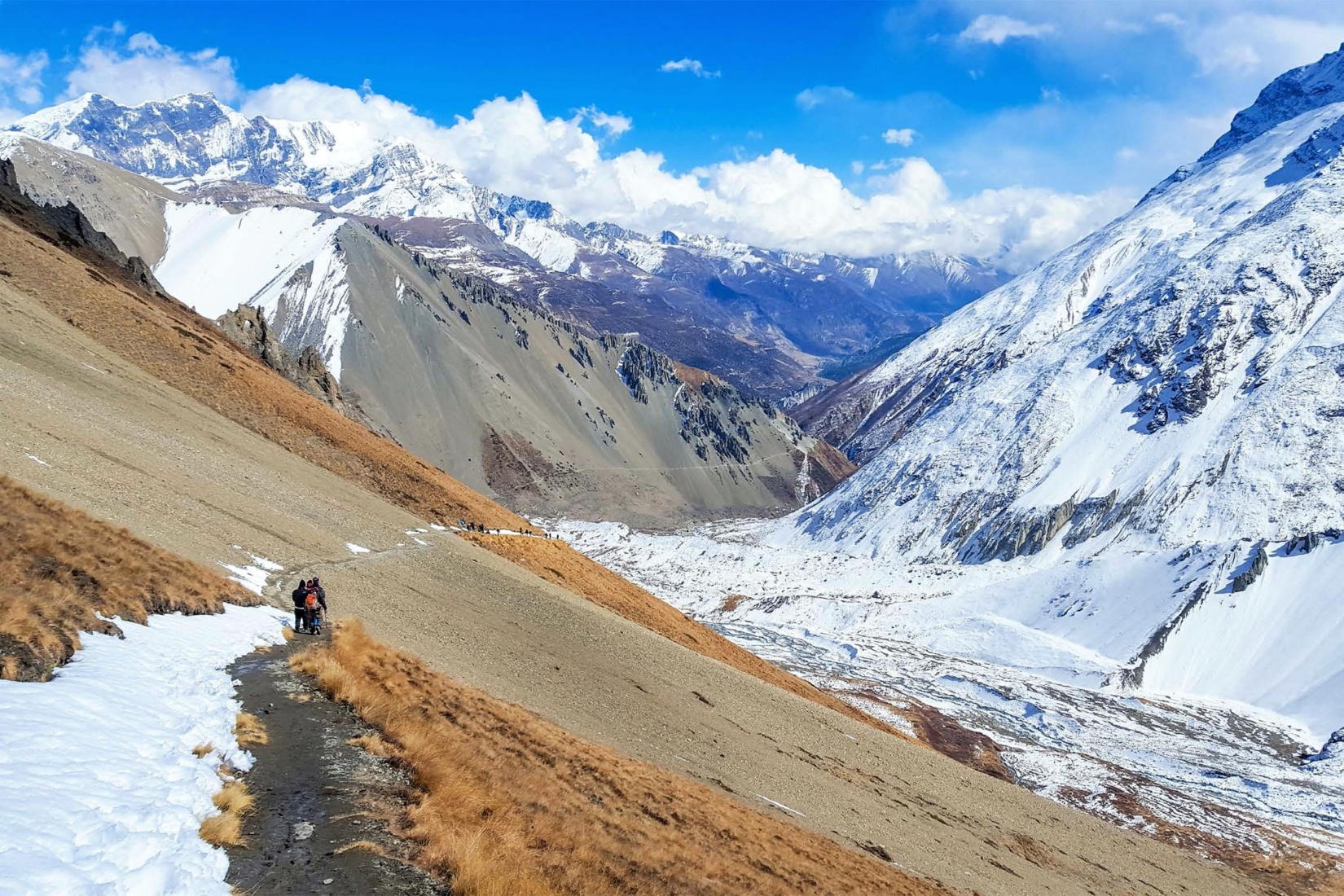
Here’s a breakdown of the best months to go:
- March – Marks the beginning of the trekking season proper but it’s not its peak. That means a good balance of smaller crowds, availability in teahouses and affordability. Most of the ground snow has melted by this point, but rising temperatures do mean there can be some heat haze to obscure the views.
- April – The busiest time of all on the Mount Everest Base Camp Trek, but for good reason: Clear skies abound, the views are wonderful, and temperatures are comfortable. You can also come in April if you’re keen to see the hardcore mountaineers prepping for a summit push up Mount Everest itself.
- May – The hottest month on the trail with less harsh conditions in the evening. Downsides include heat haze that can obstruct the views and the potential for some early-monsoon rains.
- September – The first month after the monsoon can see some rains stick around. However, that also means the lower-altitude parts of the trek between Lukla and Namche Bazaar are wonderfully lush with flower blooms and vivid greenery.
- October – Second only to April in terms of crowds of travelers. Lots of people hit the EBC trail at this time because there’s a great balance between comfortable temperatures and clear skies. In fact, I’d say that this is the clearest time of all, so it’s perfect for those wanting uninterrupted views of Everest.
- November – Cold winter conditions can start to set in by November. It’s not unusual to encounter snow at higher altitudes and you’ll need proper thermal gear to get through the nights. The payoff is super-clear skies and way fewer hikers on the trail.
December to February is the low season for one main reason: Snow. Temperatures during these colder days drop to an average of 25 degrees fahrenheit (-4℃) in the middle of the winter season, and that’s in Namche Bazaar, one of the lowest points on the trek. It’s not ideal for overnight hikes that rely on teahouses made of plywood walls. That said however, completing the EBC certainly isn’t impossible at this time, it just presents unique challenges. You’ll need way more thermal layering, special trekking equipment to handle the snowdrifts, and probably extra days to complete the trek. The upside is that winter days offer very clear skies and there’s rarely a big crowd on the trail.
9. What gear and equipment should I pack?
When considering what to pack for your trip, it’s good to know there are strict limits on the weight each passenger can take on that initial flight from Kathmandu to Lukla. What’s more, there are limits on the size and weight of bags that you can ask porters to shuttle up and back to EBC for you. Due to these limits, you’ll want to think very carefully about what to bring for this once-in-a-lifetime trek. As a general rule, it’s good to stick to about 22-33 pounds (10-15kg) in your main pack, with a small 30-litre day pack on the side to carry the things you’ll need on the trail.
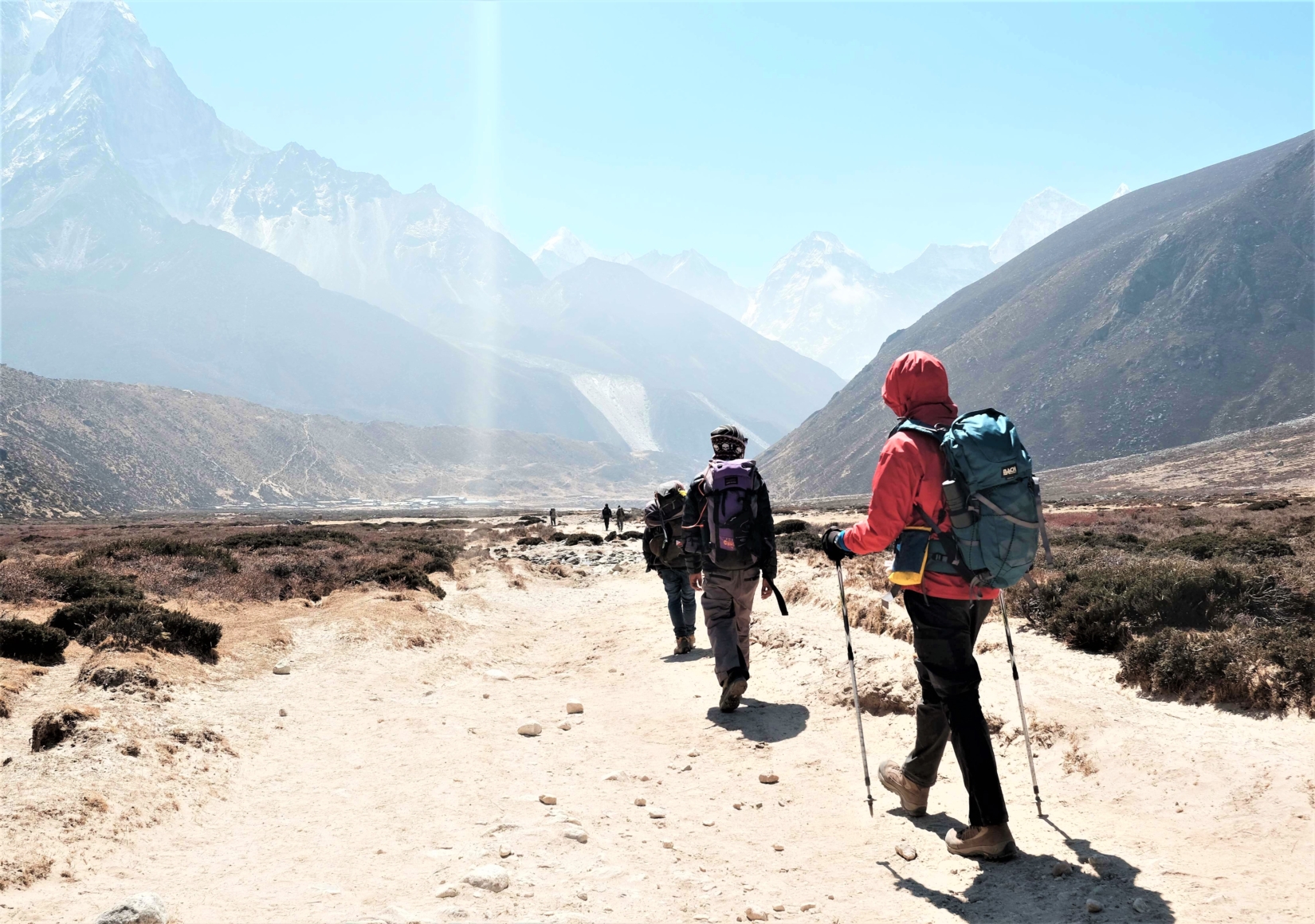
Layers are always key in the Nepalese mountains, as temperatures can warm up considerably during the day and drop suddenly at night. You’ll want to be able to add and remove fleeces and thermals on the upper body to match the fluctuating temperatures. For the lower body, I’d recommend bringing both shorts (mainly for the lower elevations of the trek where it can be positively balmy) and sturdy trekking pants (for higher elevations), backed up by good thermal-rated underlayers.
Waterproofs are also essential for your trip. Rain and snowfall can come without warning in the high Himalayas, and weather patterns on the EBC Trek have little respect for the so-called high season, so inclement weather can happen any time of the year. Winter trekkers will need to plan a little more, though, in order to deal with all that ground ice and much colder conditions.
On top of that, you’ll need to think about all those hiking essentials. Good boots, a pair of hiking poles you feel comfortable with, both a wool hat and a sun hat, strong sweat-resistant sunscreen, headlamps, and a decent-capacity water bottle should all be on your packing list.
That’s just scratching the surface, but The Explorer’s Passage will make sure you’re fully prepared for your chosen season on the EBC route when you plan with us – just ask us for a full packing list !
10. Should I use a porter service?
Put simply, porters are essential on the trek to Everest Base Camp. They’re very much the superheroes of the expedition, transporting the bulk of most trekkers’ gear and equipment from camp to camp outside of Lukla or Namche Bazaar. For larger groups of trekkers, some operators will utilize animal support for transport assistance. Porters will carry one standard rucksack or duffle bag per hiker. Usually, that’s limited to a weight of between 22-33 pounds (10-15kg) per person, though it can be lower or higher depending on the Everest Base Camp tour you pick. That leaves you to only carry what you need for the day. As mentioned above, a 30-litre pack typically works best, just enough for water, snacks, fleece and waterproof layers, your camera, and sunscreen.
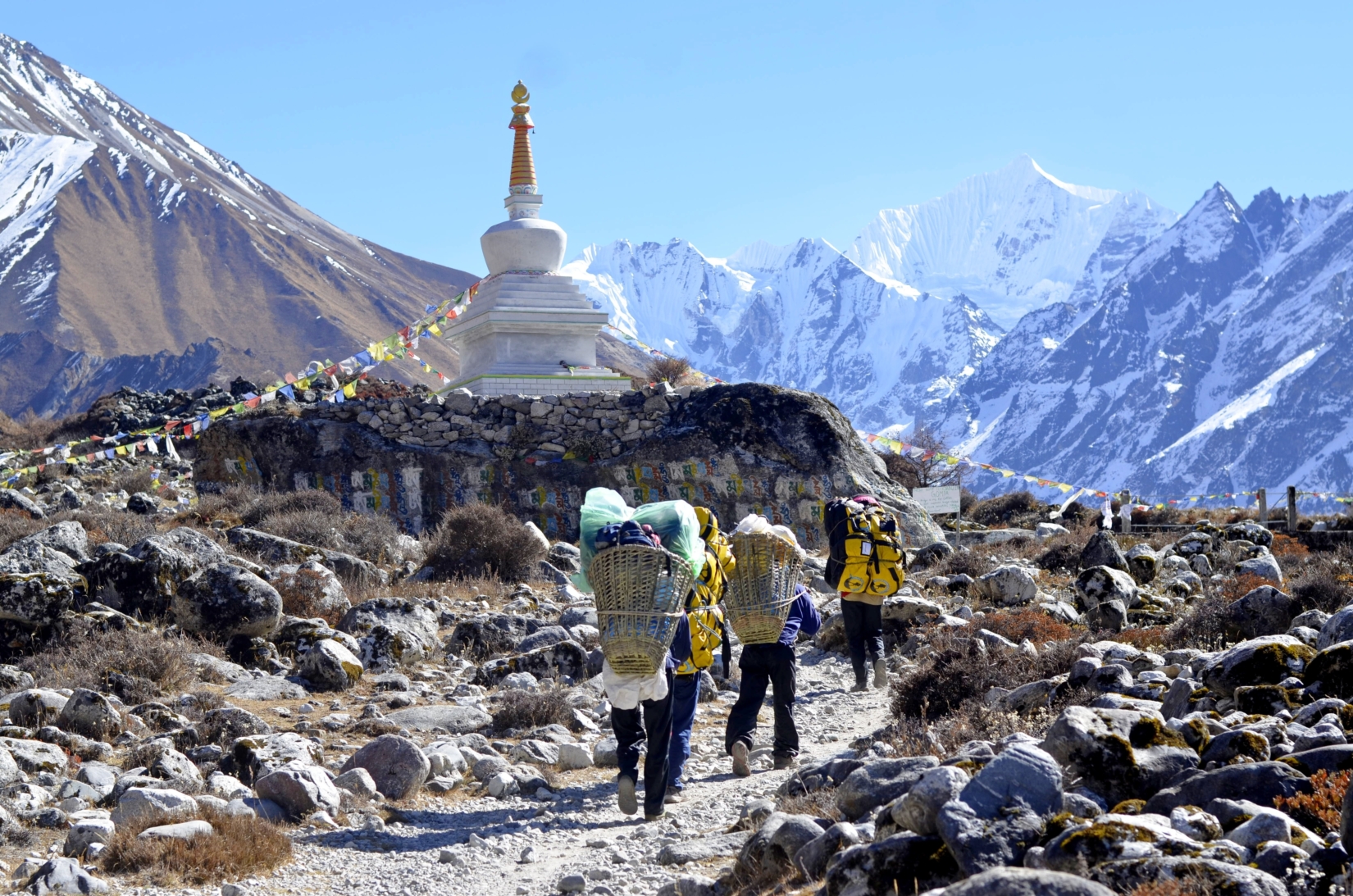
I do, occasionally, see people who choose not to engage a porter but that’s a tough task. Ultimately, when you’re deciding whether or not porter service is right for you, remember that the Mt. Everest Base Camp hike involves several days of walking at altitudes over 12,000 feet (3,658m) above sea level, on tricky terrain to boot. It’s a challenge even without 44 pounds (20kg) of gear strapped to your back!
11. Getting there
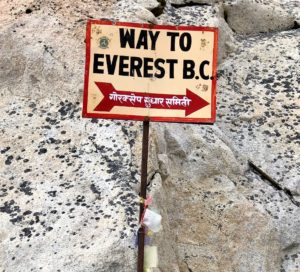
So now you know what this infamous excursion holds and you can’t wait another moment to go, how will you get there? The trip to the start of EBC is a journey in itself. You’ll first jet into Kathmandu, the heady, rickshaw-rattling capital of Nepal. It’s an amazing place, filled with UNESCO temples and the aromatic spices of Nepalese curry houses. We usually recommend that travelers arrive at least a couple of days before they are due to set off for the trek, not really to help with altitude acclimatization – Kathmandu is a relatively modest 4,500 feet (1,372m) up – but more for cultural acclimatization.
Doing that means you’ll have time to score any last-minute gear you might have forgotten for the hike itself. Kathmandu has plenty of decent outfitters that offer good deals on key items like down sleeping bags and thermals. It also means you’ll get to see some of the great cultural treasures of the country, including the tower-topped temples of Durbar Square and the colossal Boudhanath Stupa, which is usually writhed in prayer flags dancing in the wind.
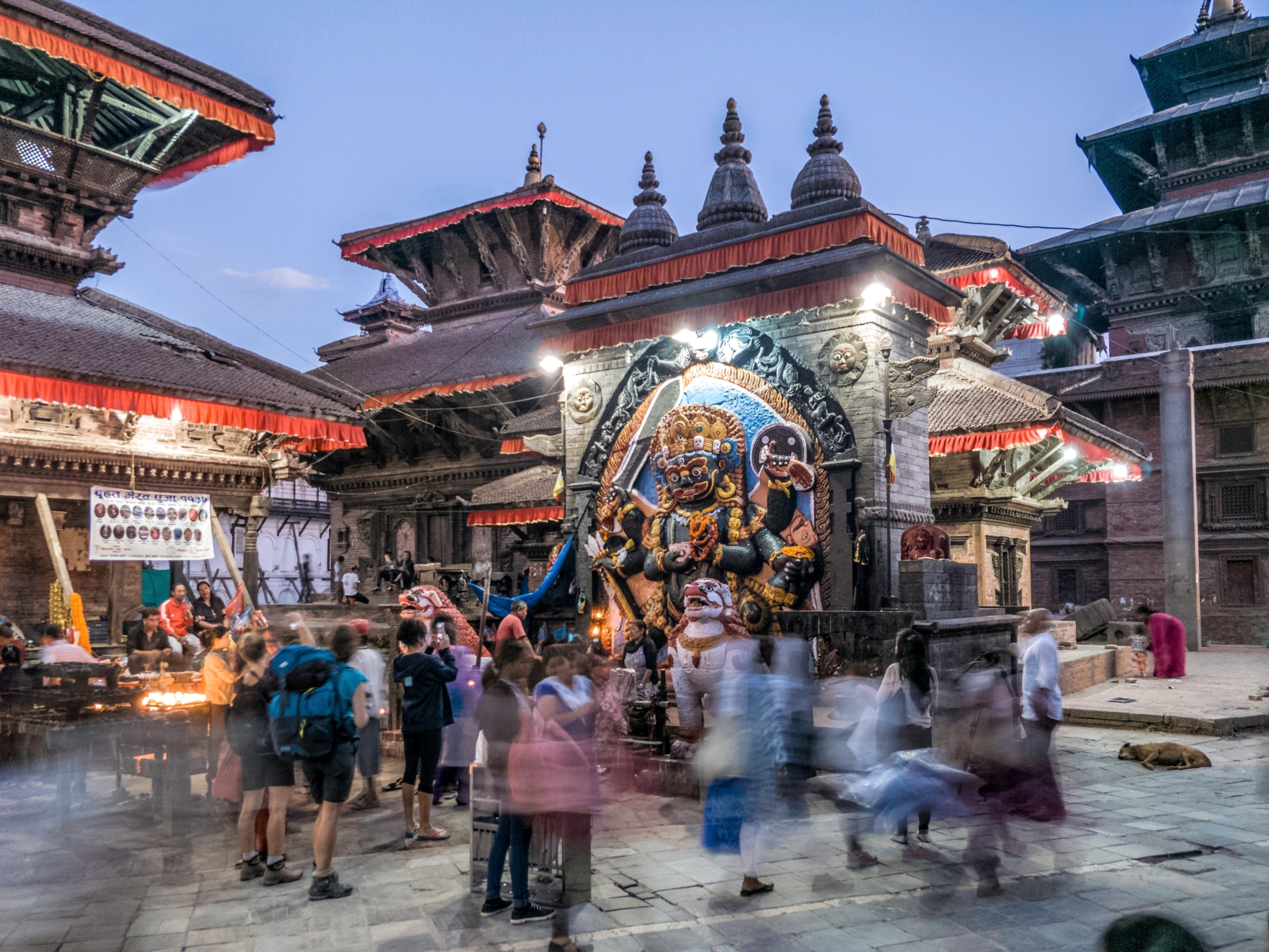
After Kathmandu, there’s a short-haul flight from the domestic terminal of Kathmandu Airport that takes you all the way to the trailhead of Everest Base Camp in Lukla. The plane ride is relatively quick – about 30 minutes total – and pretty spine-tingling, especially as the landing strip on the Lukla side sits a whopping 9,300 feet (2,835 meters) above sea level on a precipitous mountain plateau. It’s not a flight you’ll forget in a hurry!
12. Travel visas and permits
Some nationals of specific countries can enter Nepal without a visa, but most travelers will require one. For those who do, entry visas for tourists traveling into Nepal are generally available in advance or upon arrival at Tribhuvan International Airport and various land borders. If you’re unsure of which category you fall into, use this easy tool to double check your entry and health requirements .
When it comes to permits, there are no permits for the Everest Base Camp Trek itself, at least not like there are for the Inca Trail and some other bucket-list hikes elsewhere on the planet. However, there are limits to the number of guests teahouses can host (so it’s important to book early) and you will be passing through some regions and conservation areas that require visitors to obtain special passes, but no need to worry as The Explorer’s Passage will handle all of these details for you. Just make sure your travel documents and essentials are still valid.
For the route to Everest Base Camp from Lukla, there are two key documents that we will secure for you:
- Khumbu Pasang Lhamu Rural Municipality Entrance Permit – This is a pass for access to the whole Khumbu region.
- Sagarmatha National Park Entry Permit – This is your pass to enter the national park that contains Mt. Everest.
It is important to note, those looking to do the longer, 20-day extension to the EBC Trek, going from Kathmandu by road and then onwards by foot from Jiri, will also need a pass for access to the Gaurishankar Conservation Area.
13. A typical Everest Base Camp Trek itinerary
The temple-topped, bazaar-busting city of Kathmandu is likely to be where you enter Nepal. You’ll definitely want to take some time out of your trip to explore this amazing city first. Then, it’s time to head northeast to start your Everest Base Camp hike. Most travelers do that with a flight to Lukla and then walk from there, but it’s also possible to trek all the way if you have the time. Still, most Everest Base Camp Trek itineraries officially start at Lukla airport.
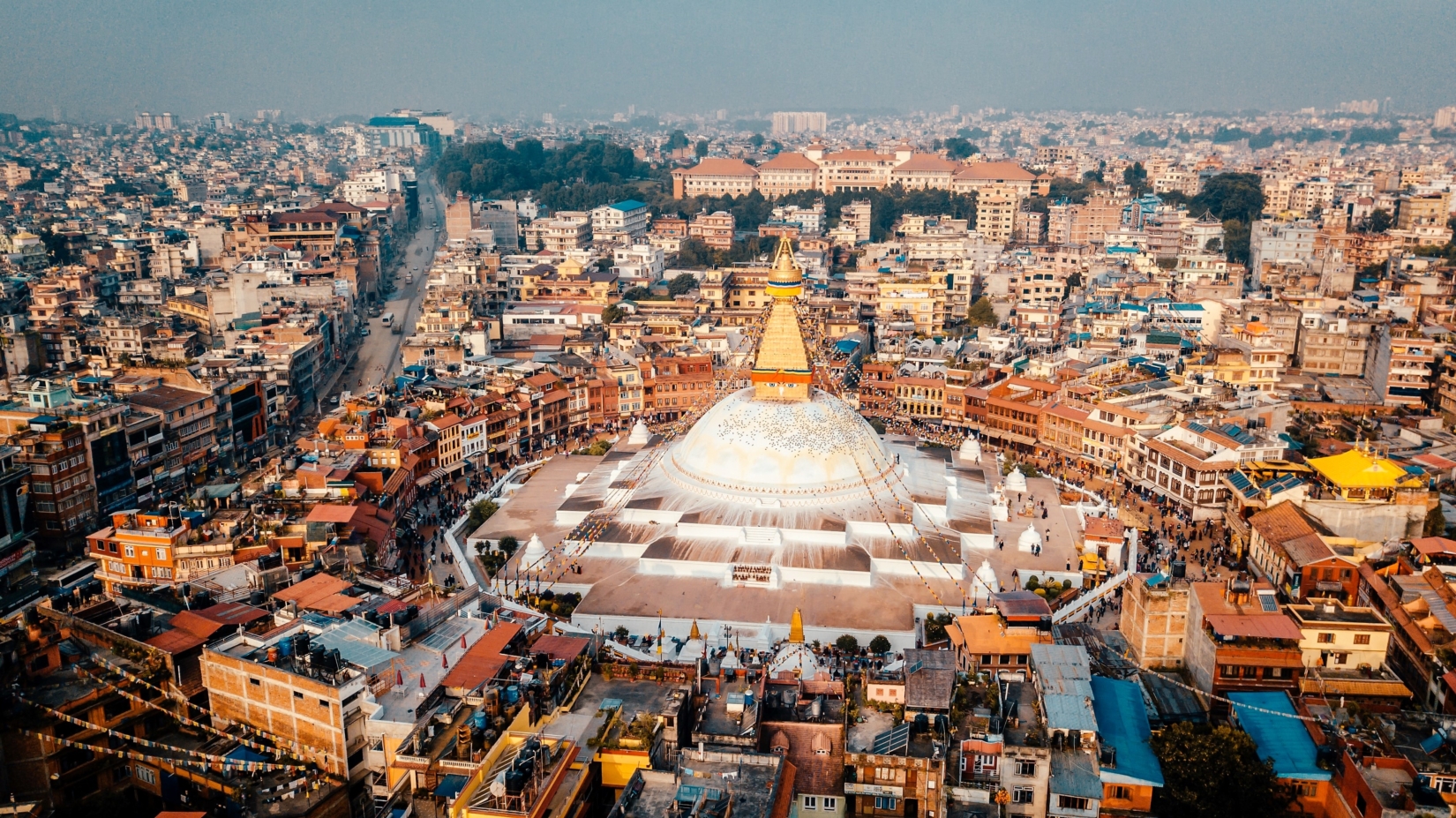
For a customized itinerary, connect with us to craft your ideal trip.
- Day 1: Namaste and welcome to Kathmandu! Get ready to experience one of the most awe-inspiring journeys our planet has to offer. You’ll arrive in Kathmandu and explore the dynamism, scenery, and history the city has to offer.
- Day 2: Today will be filled with cultural immersion. Begin by exploring three UNESCO World Heritage Sites. The first is Boudhanath, one of the largest stupas in Nepal. Next is Pashupatinath, a sacred Hindu temple located on the banks of the Bagmati River. Finally, you’ll visit Durbar Square, which sits in front of the old royal palace. Finish your day with one of the most classic walks through the old narrow streets of Kathmandu. In the heart of this city, soak up the buzzing atmosphere of the local markets and stores, before heading back to the hotel.
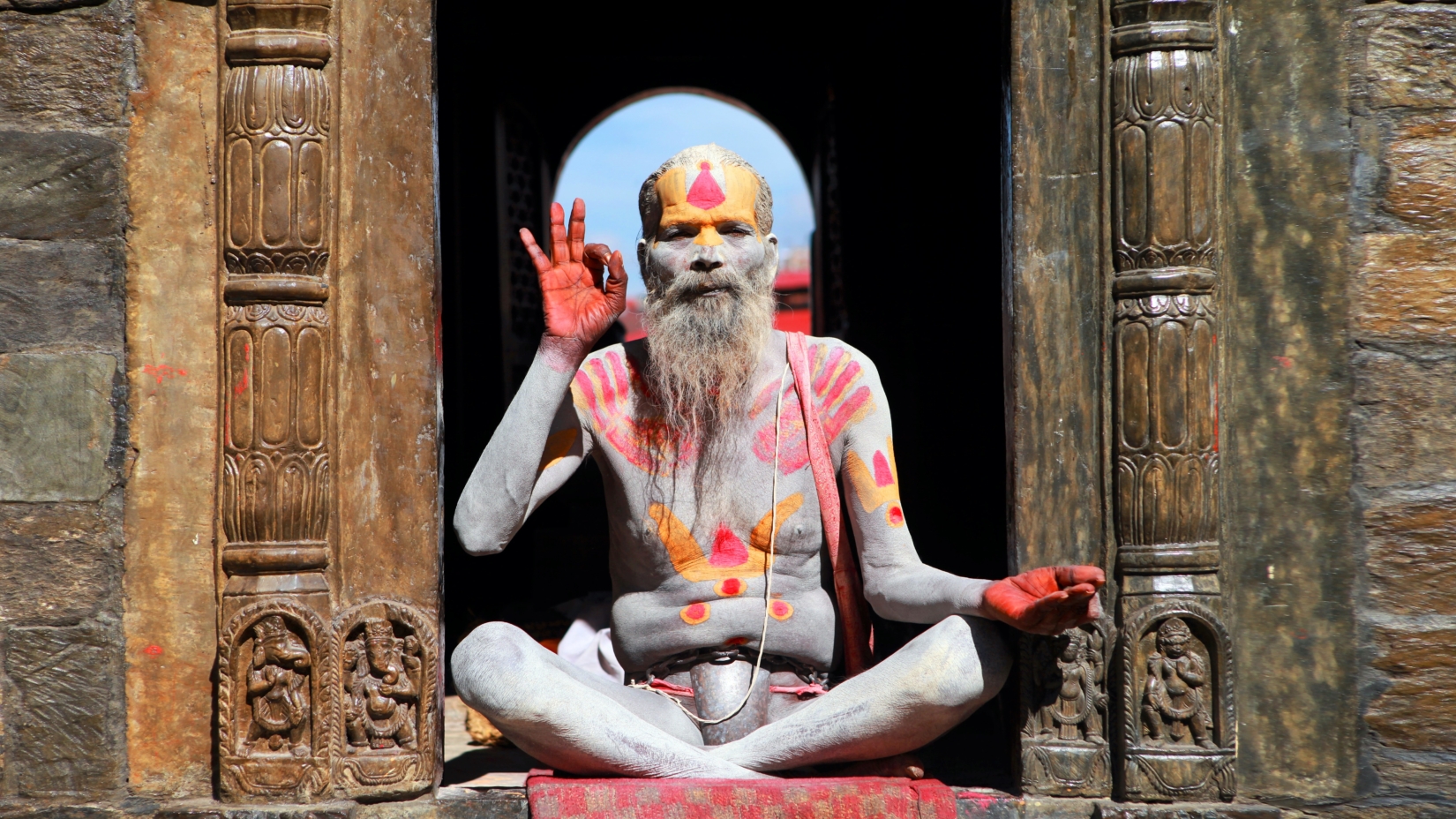
- Day 3: Kathmandu to Phakding (8,562 ft / 2,610 m) – After a short flight to Lukla, it’s a pleasant hike through dense pine forests and steep gorges traversed by swinging suspension bridges. There’s a real bustle about this part of the path, with oodles of hikers fresh onto the trail to chat to. It’s also the lushest part of the trail, with wildflowers and roaring riverways, more Alps than Himalaya.

- Day 4: Phakding to Namche Bazaar (11,286 ft / 3,440 m) – Today you’ll go up to the main hub of EBC: Namche Bazaar. This is a good place to stock up on any essentials you may have forgotten to bring on your trip. Enjoy the town that’s abuzz with hiker cafes and lodges, and comes with stunning views of the jagged Mount Khumbu Yül-Lha (Khumbila), loosely translated as “God of Khumbu” peak, to the north.
- Day 5: Namche Bazaar (11,286 ft / 3,440 m) – This is your first official acclimatization day. The best way to prepare for the altitude is to hike high during the day and return to lower altitudes in the evening to sleep. The Khunde and Khumjung Loop is the perfect option for that, taking you to long-lost Sherpa villages with mystical Buddhist stupas.
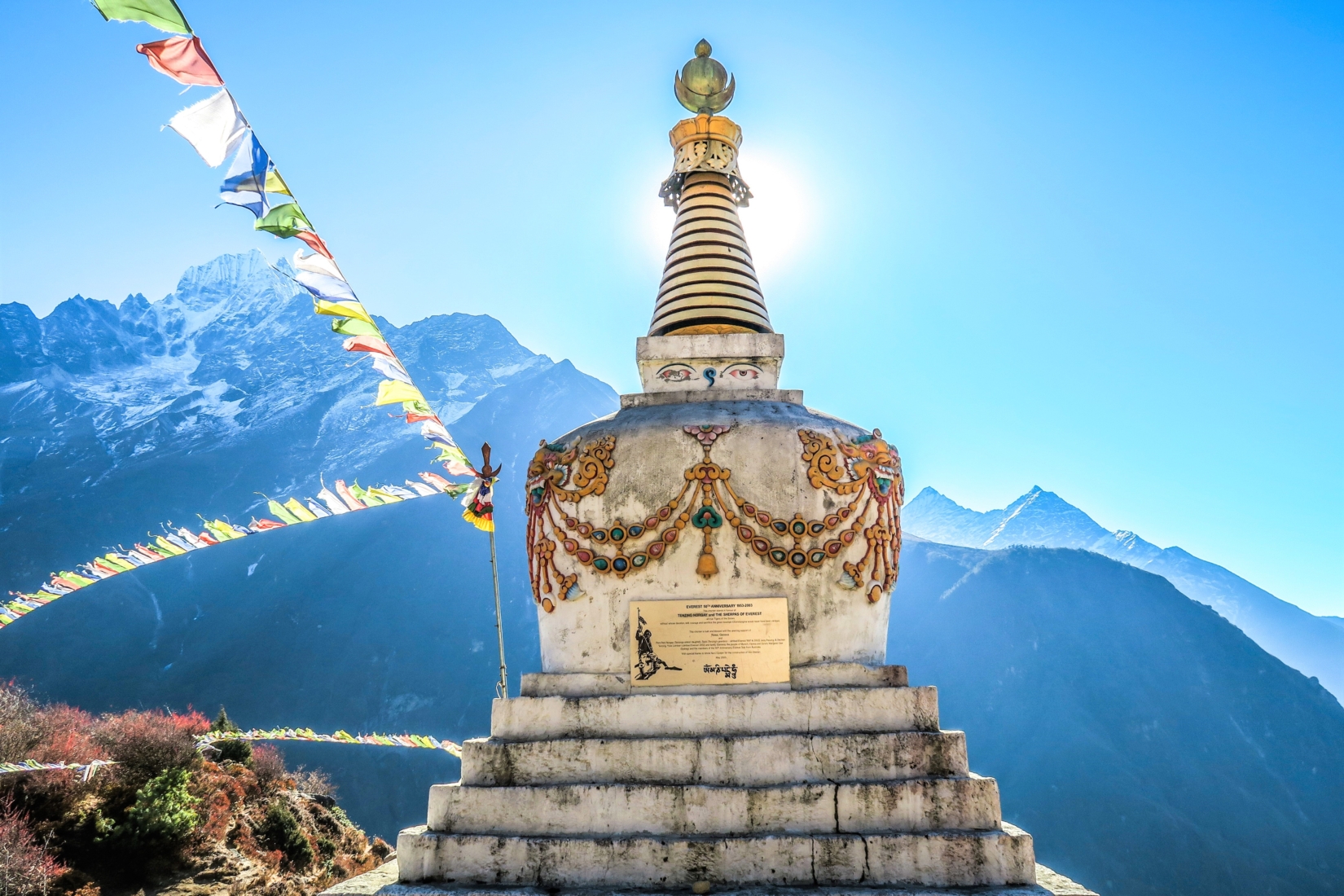
- Day 6: Namche Bazaar to Tengboche (12,664 ft / 3,860 m) – Your first steps on the Everest Base Camp Trek proper begin with a steep incline that takes you almost out of the treeline. The path levels and then emerges into a lunar-like world of big brown rocks where the Himalayas draw ever closer. The destination? The rhododendron forest, where you’ll stay for the evening.
- Day 7: Tengboche to Dingboche (14,470 ft / 4,410 m) – Expect exposed trekking except for some sections through high-altitude pine woods. Later in the day, the trail wiggles across the sides of Ama Dablam peak and you’ll get to appreciate the Everest massif in all its glory looming overhead.
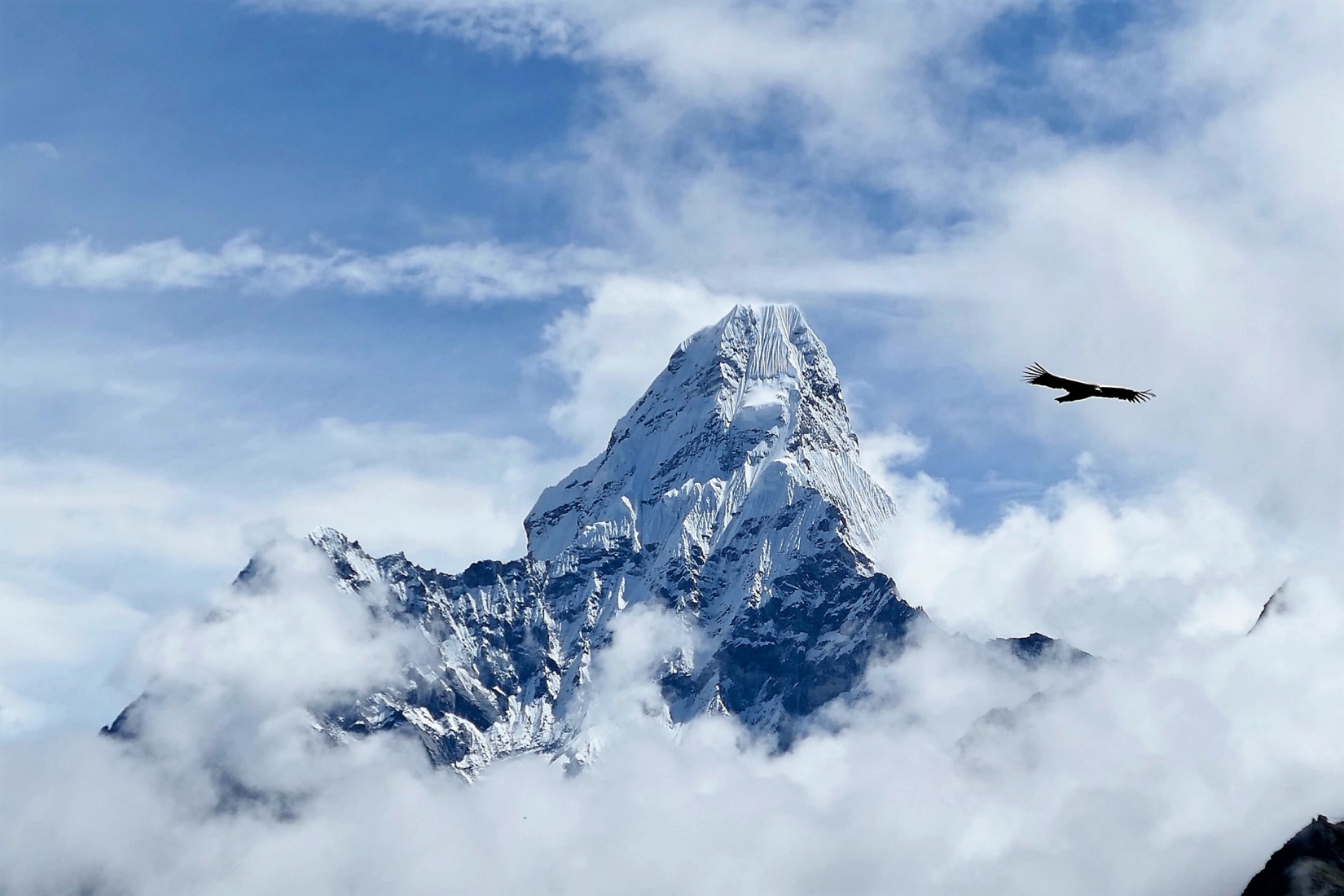
- Day 8: Dingboche (14,470 ft / 4,410 m) – A second acclimatization day is needed at this stage of the trip. Perhapstake some time to experience Chukhung (15,518 feet / 4,730 meters), a place traditionally used to raise yak. Lodges rise up amongst the peaks, making it a perfect spot for relaxation, observation and absorbing the scenery and local life.
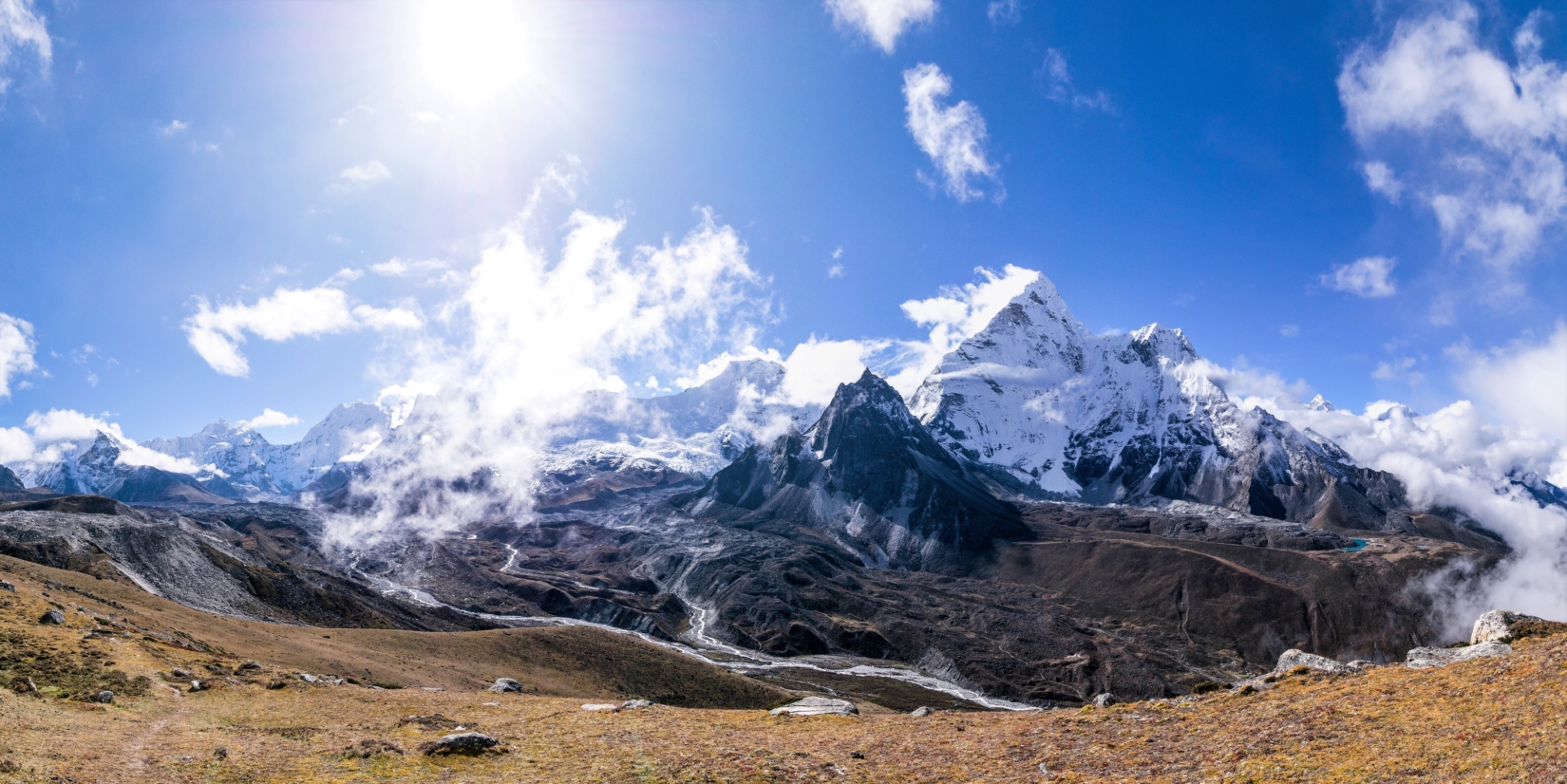
- Day 9: Dingboche to Lobuche (16,210 ft / 4,941 m) – You’re now onto the penultimate push towards Everest Base Camp. Welcome to the high Himalayas. Trees are long gone in this land of rugged rocks and the cascading tongues of glaciers. The day includes some amazing visions of the approaching Everest massif, especially the closer face of Nuptse.
- Day 10: Lobuche to Everest Base Camp (17,598 ft / 5,364 m) – The final part of the trail starts by weaving over rocky highland terrain and then passes through the Gorak Shep village, where a small trekking lodge clutches the edge of the Khumbu Icefall. There’s a chance of a small rest there, but not for long, because EBC is only another 1.5 hours up the valley!
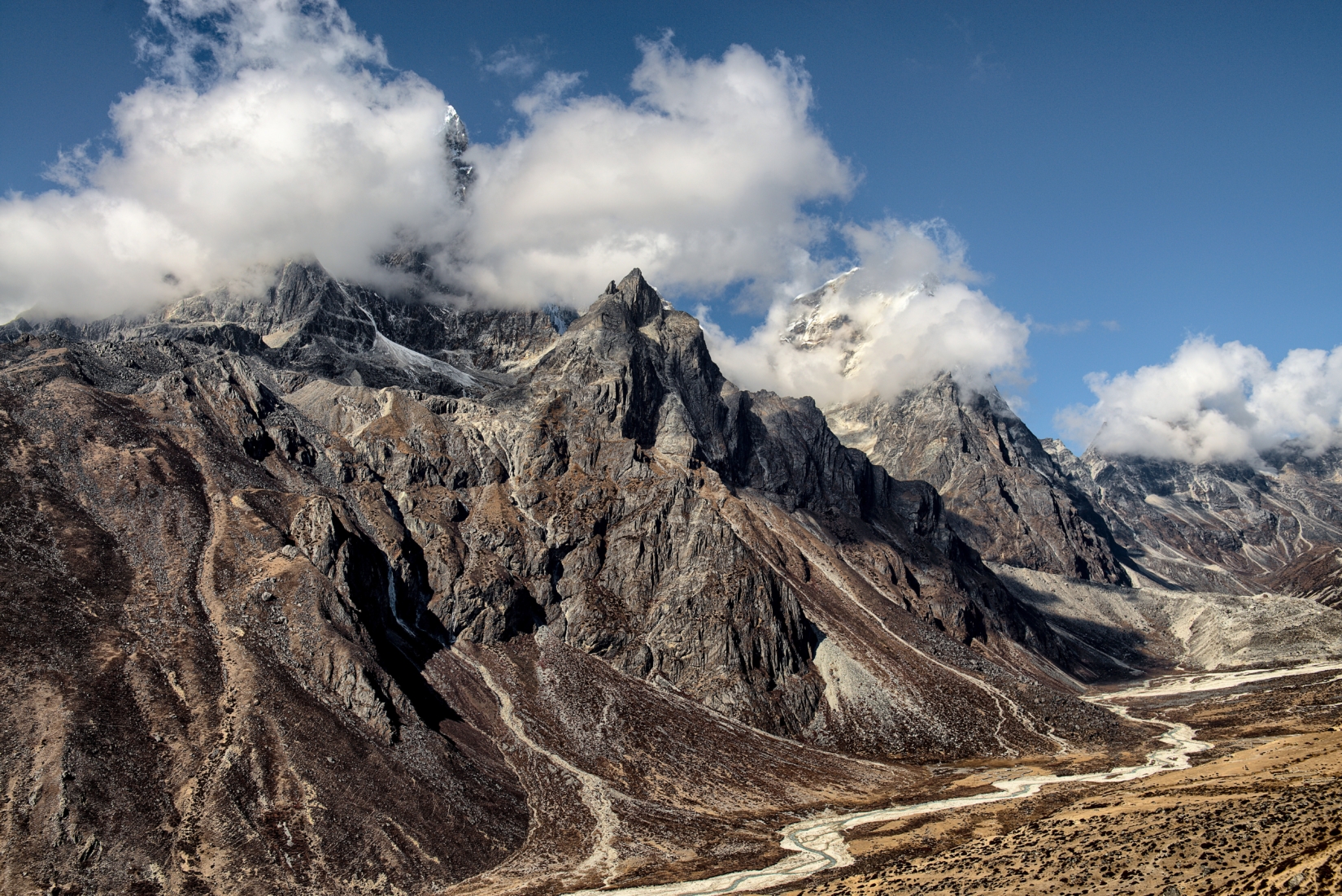
- Day 11: Everest Base Camp to Pheriche (14,340 ft / 4,371 m) – Today you’ll retrace your steps towards Pheriche, hiking first towards Kala Patthar. Oxygen begins to increase and much of this portion is downhill, and you’ll have the chance to take in the panoramic views with an easier trek.
- Day 12: Pheriche to Debouche (12,533 ft / 3,820 m) – You’ll work back via Deboche, passing the Old Nunnery. Follow the river back towards Debouche, a campsite, not far from the Tengboche Monastery.
- Day 13: Debouche to Namche Bazaar (11,286 ft / 3,440 m) – Today you’ll double back towards Namche Bazaar, the Sherpa village that is the hub of activity and local culture. Here you’ll see many porters like Norgay, who aid climbers and know this terrain better than anyone. Observe the local mountain life, as you continue on tomorrow towards Phakding.
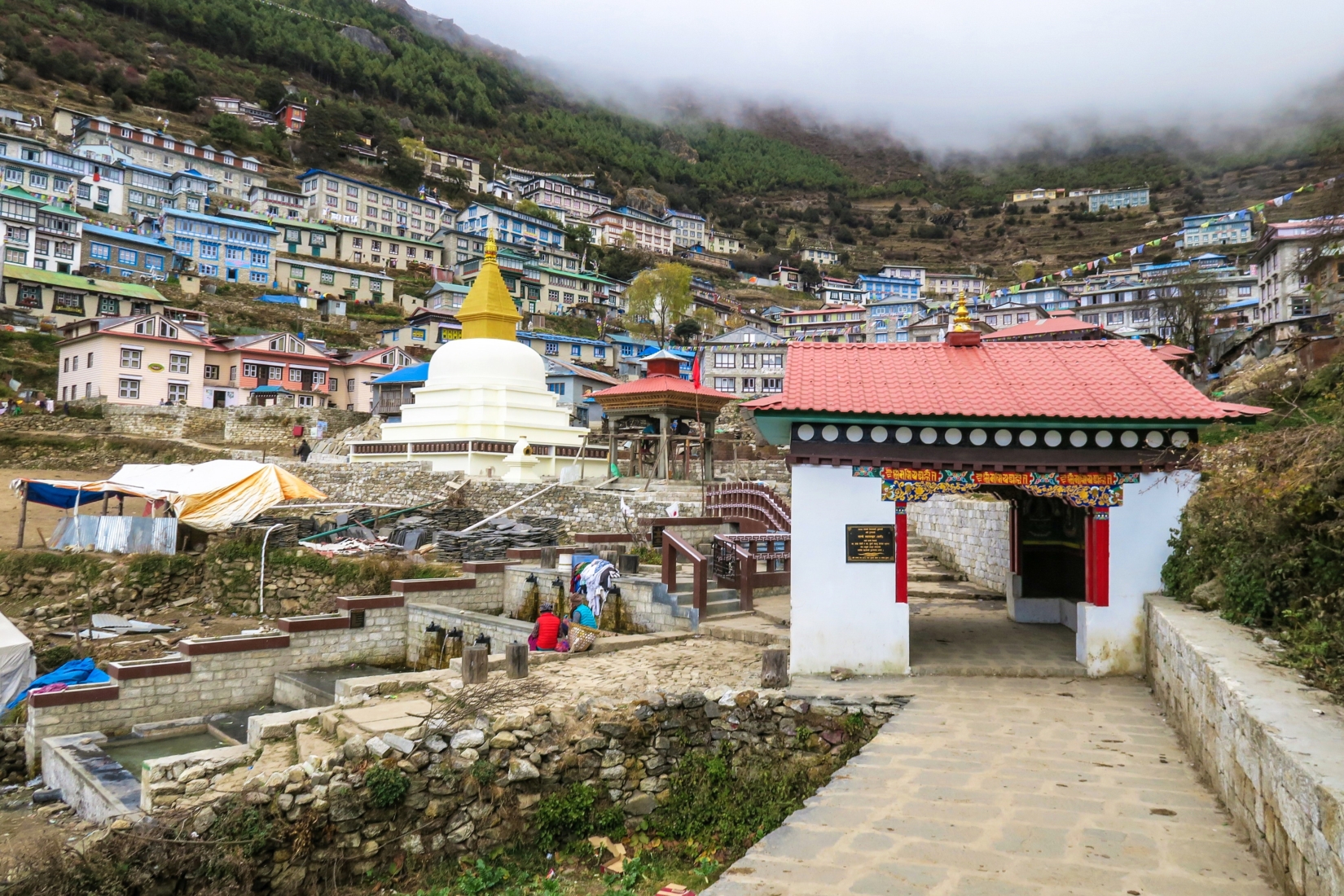
- Day 14: Namche Bazaar to Phakding (8,562 ft / 2,610 m) – As you continue downhill towards Phakding, observe the local agriculture and yak pastures as you pass by the majesty of the Himalayan peaks. You’ll spend the evening alongside the Dudh Kosi River, and take in the sights and sounds of the crystalline waters.
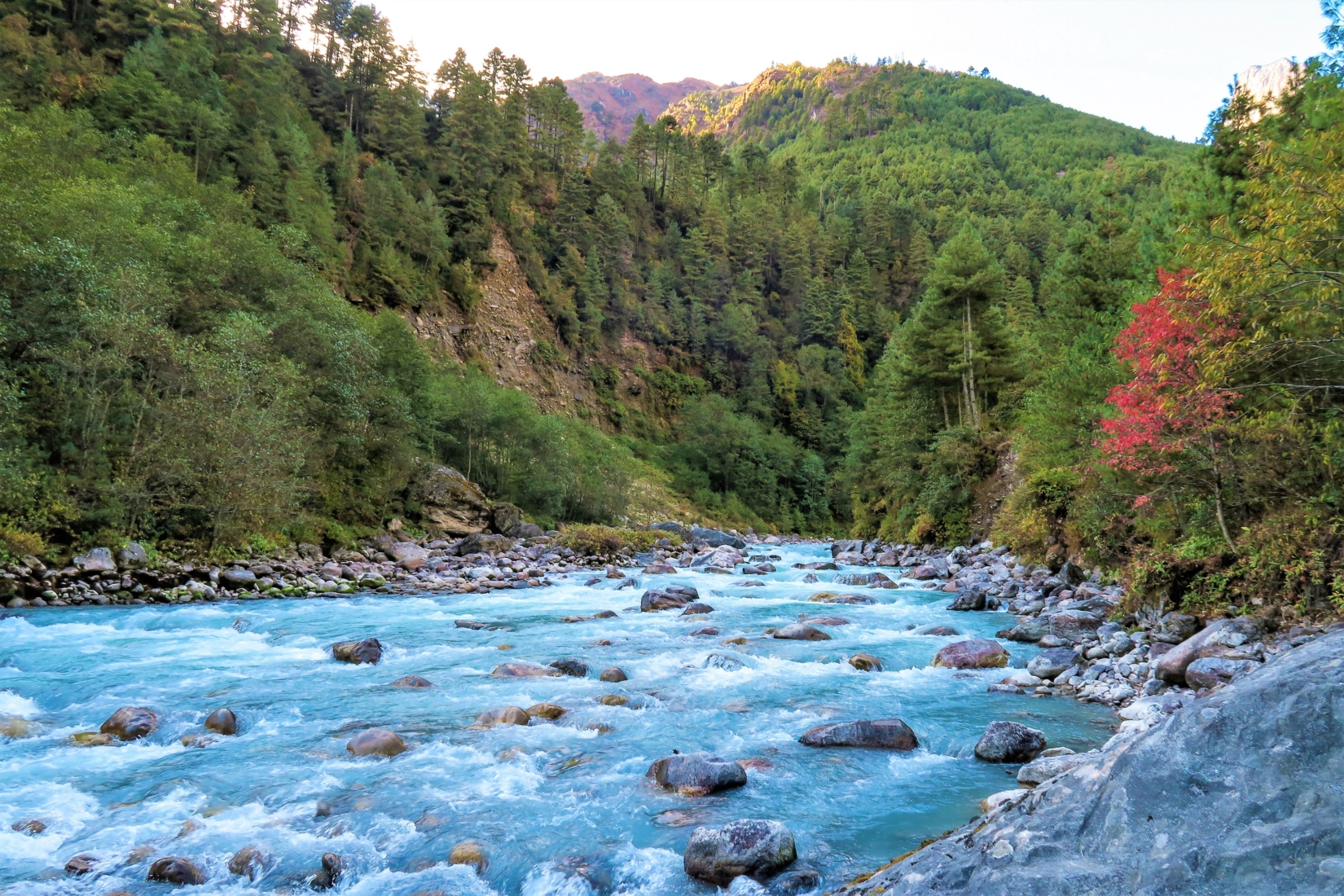
- Day 15: Phakding to Lukla – From Phakding, you’ll make our approach towards Lukla. Gather your new memories from the trip and enjoy your last days amongst unparalleled natural views in Nepal. You’ll stop for lunch in Lukla, with plenty of time to appreciate the clear landscape.
- Day 16: Lukla to Kathmandu – Returning to Kathmandu, you’ll have time and space to explore after having a chance to refresh and recuperate in your hotel. The Thamel district is a great place to wander with its many winding streets lined with souvenir shops, bars, restaurants, and more. There’s plenty to see and to try on the final day of your trip in Kathmandu. Soak up as much of the city’s offerings as you can as the end of our trip approaches.
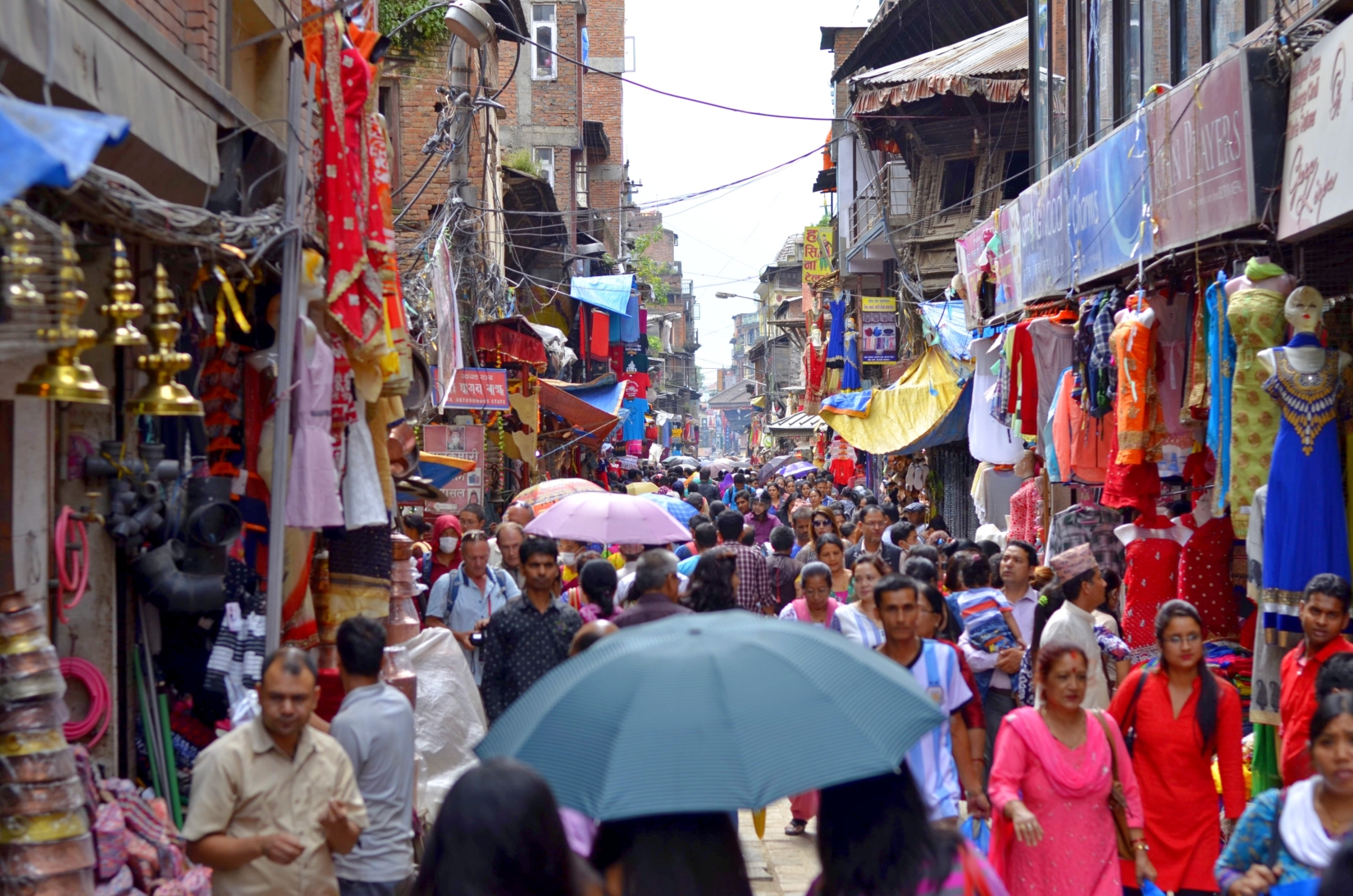
- Day 17: Today is your final day as an intrepid traveler exploring Nepal. You might have time to see some live music in Lazimpat or venture to Patan, which was originally known as Lalitpur, or the “City of Beauty”. Stop off at Newa Chen to add a visit to a 350-year-old Newari home, restored to its former glory and open to the public, to your trip. Be sure to experience as much of Kathmandu as you can, before you reluctantly head back home from this exhilarating adventure trip!
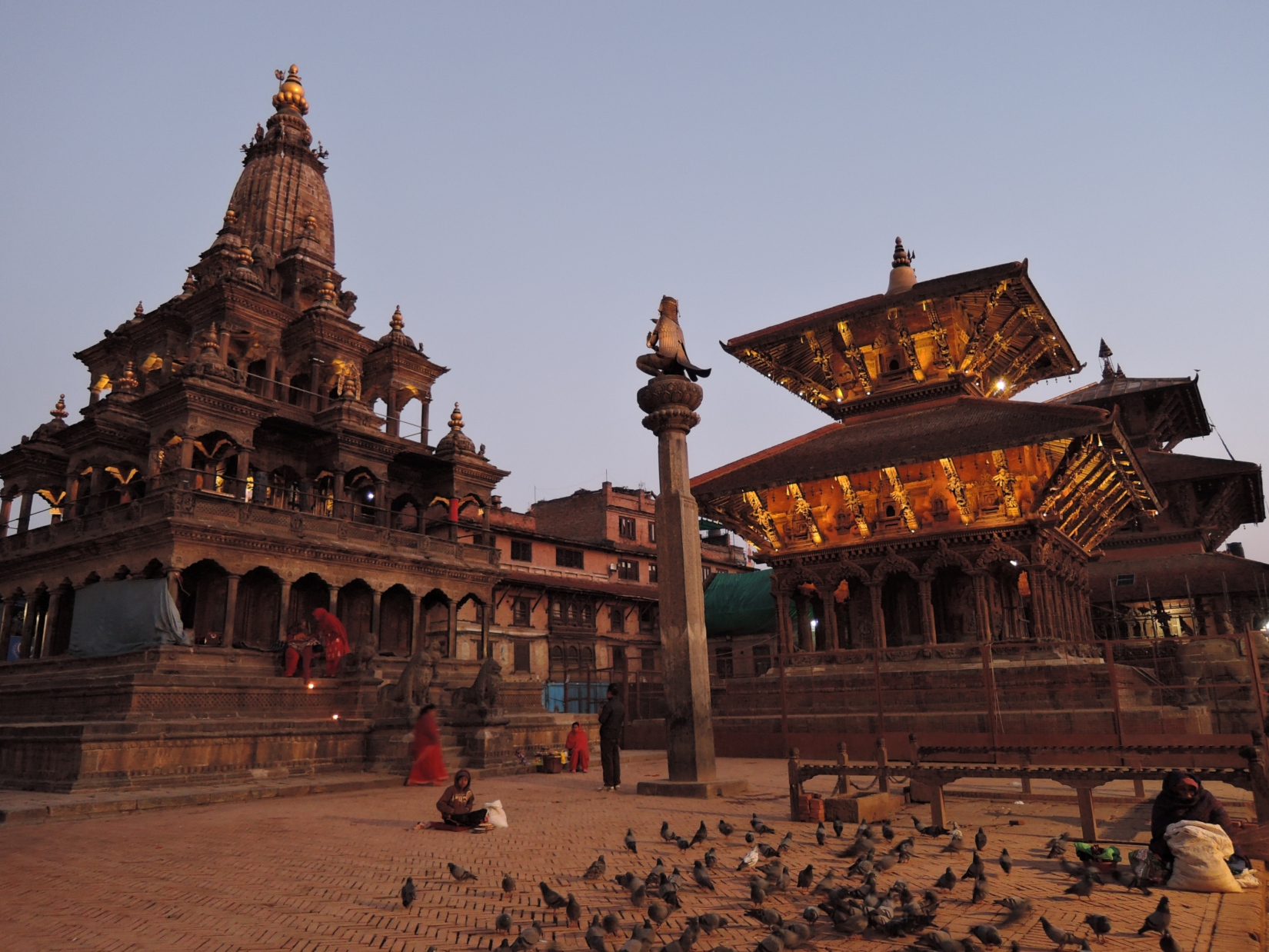
- Day 18: Depart from Kathmandu. Today you’ll return home having retraced many of Hillary and Norgay’s historic steps. You’re officially one of the lucky few who have witnessed the majesty of Everest up close!
Other Variations of the EBC Trek
The main up-and-back EBC Trek outlined above is by far the most popular route to the fabled camp on the slopes of Mount Everest, but there are also other options. Take the Three Passes Trek. It’s a circular romp that encompasses a trio of the highest traversable passes immediately around Everest itself, starting with Kongma La (18,175 feet) before pushing on through Cho La (17,782 feet) and then Renjo La (17,585 feet).
This is a considerably more challenging undertaking than the classic Everest Base Camp Trek, usually reserved for hikers with high-altitude experience. The reason? You spend multiple days walking at heights of over 16,400 feet. There’s also more chance you’ll have to contend with snowpacks – especially late and early in the main trekking seasons (April and November). The reward is a chance to explore all the nooks and crannies of the Khumbu Region, with visions of the gleaming Gokyo Lakes and remote Sherpa hill villages along the way.
Other variations include the dedicated Gokyo Lakes Trek, which involves portions of the Three Passes Trek at Cho La to offer a fuller visit of the Gokyo Valley before re-joining the route to base camp at Lobuche.
This trip guide is just a taste of what you should know before embarking on the remarkable trek to Everest Base Camp. For more details on general trip costs, accommodations, and more, check out the specifics on our Everest Base Camp tour page .
Better yet, if you have more questions on hiking to Everest Base Camp or need help planning your trip to the Himalayas, let’s connect! Our knowledgeable Adventure Consultants would love to hear from you so contact us and let us show you what’s possible .

Why travel with The Explorer’s Passage?
Experience the Everest Base Camp Trek with the best tour operator in Nepal. Our guides have been leading adventure trips in the Himalayas for over 30 years and are experts of trekking to Mount Everest Base Camp. They are also native to the Khumbu region of Nepal, the home of the Sherpa community, so you know you’ll enjoy an authentic experience.
We pride ourselves on delivering extraordinary tours based on travelers’ needs and are humbled by our guests’ testimonials . In fact, our dedication has earned us a 5-star rating on Tripadvisor , and awards by Travel+Leisure Magazine and Newsweek. Check us out and discover why so many travelers worldwide choose us . My team and I would love for you to join us on the trek to Everest Base Camp or any of our many other adventure trips !
I hope to go exploring with you soon!
Jeff Bonaldi Founder & CEO The Explorer’s Passage
About Jeff Bonaldi
Jeff Bonaldi is the Founder and CEO of The Explorer’s Passage, a premier adventure travel company. His mission is to provide travelers with the opportunity to transform their lives and the planet through the power of adventure.
Learn more about Jeff’s story and his company HERE .
Share This Amazing Location!
Related posts.
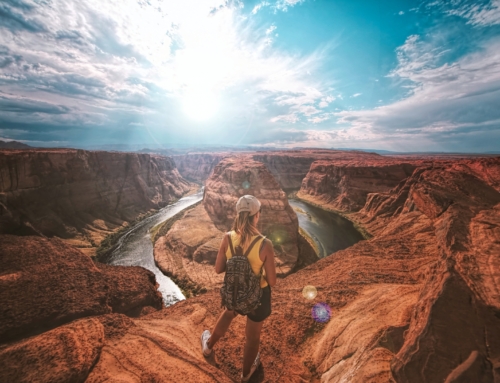
Expert Guide to Solo Travel & Top Destinations in 2024
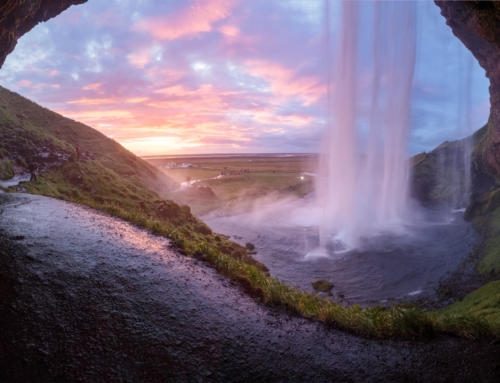
14 Best Places to Visit in Iceland in 2024
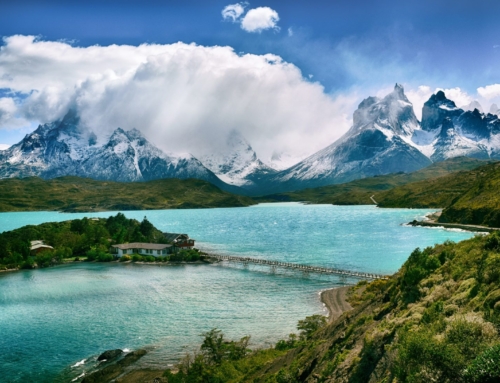
19 Things to Know Before Hiking the W Trek in Patagonia’s Torres del Paine in 2024

14 Things to Know Before You Climb Mount Kilimanjaro in 2024

The Ultimate Guide to Inca Trail Permits for 2024
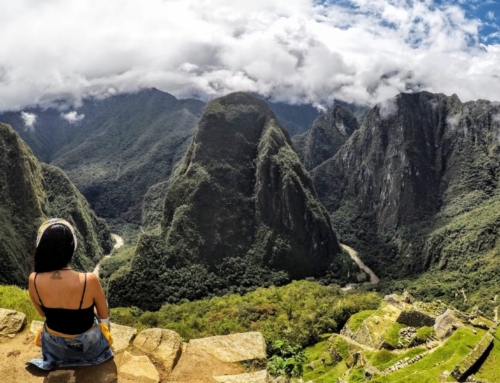
The Classic Inca Trail Route: A Day by Day Guide
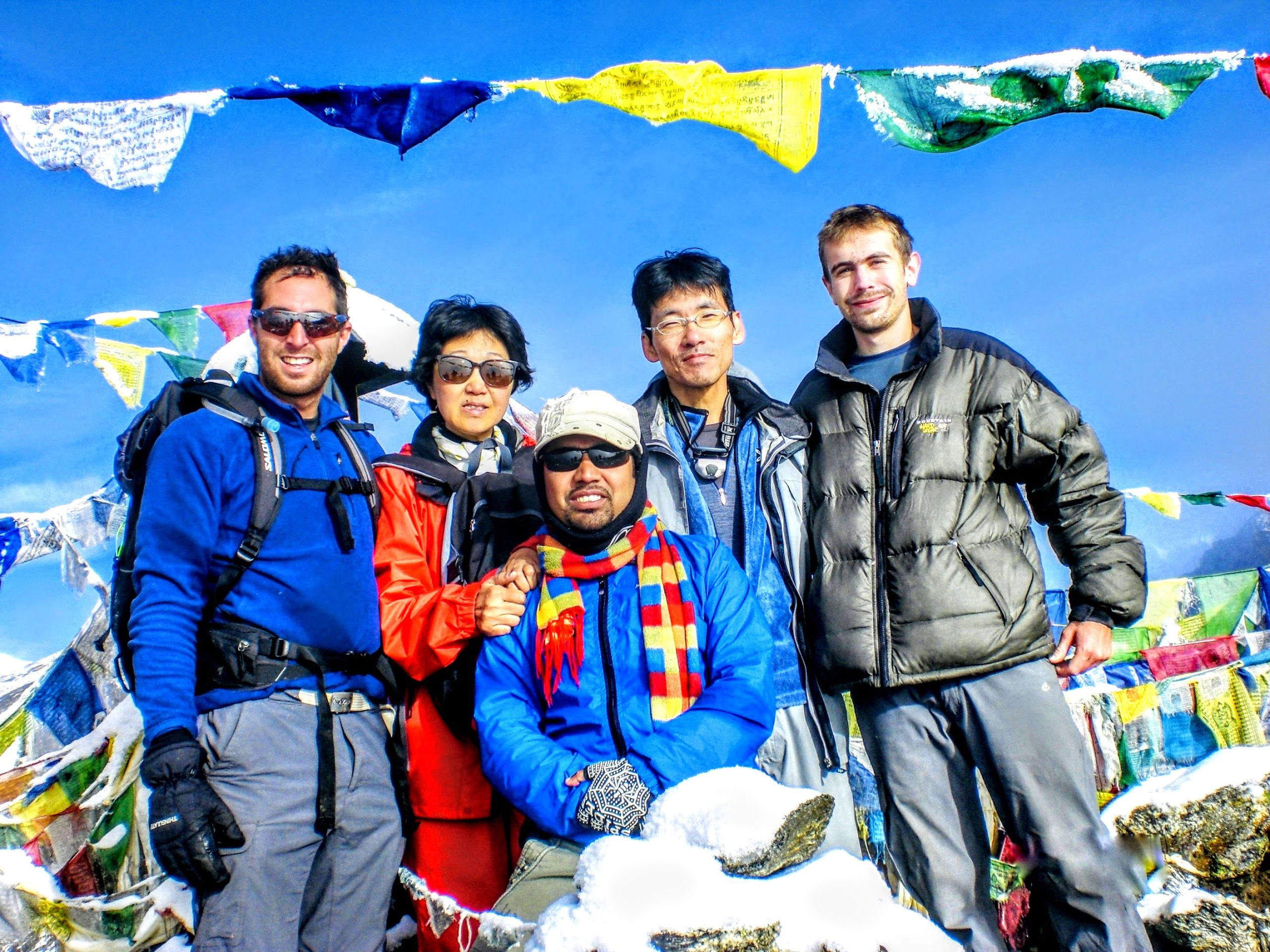
Everest Base Camp Trek
Good to know.
- Based on 15 reviews
Explore the wonders of the Himalayas on our Everest Base Camp Trek , an exhilarating journey that promises extraordinary experiences and stunning vistas. Starting in lively Lukla (altitude: 2,860 meters), our route leads you through the scenic trails of the Khumbu region, offering glimpses of majestic peaks like Thamserku (altitude: 6,623 meters) and Kangtega (altitude: 6,782 meters).
As your journey continues, you’ll gradually ascend higher into the Himalayas, taking in breathtaking sights such as the Tengboche Monastery (3,867 meters), nestled amidst towering peaks like Ama Dablam (6,812 meters) and Nuptse (7,861 meters). Along the way, you’ll trek through alpine forests and cross suspension bridges over roaring rivers, experiencing the excitement of adventure with every step. As Gorak Shep (5,164 meters), the last stop before Everest Base Camp, comes into view, the landscape becomes even more rugged and surreal.
At last, the pinnacle of the trek awaits upon arriving at Everest Base Camp (elevation: 5,364 meters), a surreal landscape surrounded by towering peaks including the renowned Mount Everest (elevation: 8,848 meters). Standing in front of the world’s highest mountain, you’ll feel a profound sense of awe and achievement, having reached one of Earth’s most iconic destinations. With breathtaking views of the Himalayan giants and the bond shared with fellow trekkers, the Everest Base Camp Trek is an unforgettable experience that will forever leave its mark on your soul, engraving the splendor and magnificence of the Himalayas into your memory.
- 1. Breathtaking Mountain Views: The trek offers unparalleled views of some of the world’s highest peaks, including Mount Everest, Lhotse, Nuptse, Ama Dablam, and more. The sight of these majestic giants against the backdrop of the Himalayan sky is truly unforgettable.
- 2. Namche Bazaar: The bustling Sherpa town of Namche Bazaar is a cultural and trading hub along the trekking route. It’s an ideal place to acclimatize, explore local markets, and immerse yourself in the Sherpa way of life.
- 3. Tengboche Monastery: Visit the ancient Tengboche Monastery, one of the most significant monasteries in the Khumbu region. Its stunning location amidst the mountains and the sound of monks chanting create a spiritual ambiance.
- 4. Kala Patthar Sunrise: Witness a mesmerizing sunrise from Kala Patthar, a vantage point renowned for its panoramic view of Mount Everest. The rising sun casts a golden hue on the peaks, providing a photographic spectacle.
- 5. Everest Base Camp: Achieve the thrilling milestone of reaching Everest Base Camp itself. Standing at the base of the world’s highest mountain is a surreal experience and a testament to your trekking prowess.
- 6. Sherpa Culture: Immerse yourself in the rich Sherpa culture as you pass through charming villages, interact with locals, and gain insights into their traditions and lifestyle.
- 7. Sagarmatha National Park: Trekking through Sagarmatha National Park offers encounters with unique flora and fauna, including rhododendron forests, Himalayan tahr, and elusive snow leopards if you’re lucky.
- 8. Scenic Flight to Lukla: The adventure begins with a thrilling flight from Kathmandu to Lukla, where the tiny, cliffside runway will get your heart racing. The views from the aircraft are incredible.
- 9. High-Altitude Challenge: The sense of achievement and self-discovery that comes with trekking at high altitudes is unparalleled. Pushing your physical and mental limits adds to the overall experience.
- 10. Friendships and Camaraderie: The shared challenges and triumphs of the trek often lead to lasting friendships with fellow trekkers from around the world. The camaraderie formed on the trail is a unique and enriching aspect of the journey.
- 11. Local Cuisine: Savor delicious Sherpa and Nepali cuisine along the way, including momos (dumplings), dal bhat (lentil and rice), and traditional Sherpa dishes. The warmth of a hot meal at high altitudes is a welcome treat.
- 12. Starry Nights: The clear, high-altitude skies of the Himalayas offer some of the most awe-inspiring stargazing opportunities. Marvel at a sky full of stars and perhaps catch a glimpse of the Milky Way.
The Everest Base Camp trek is not just a physical journey but a spiritual and cultural one as well. It’s an experience that will challenge you, leave you humbled by nature’s grandeur, and fill your heart with memories that will last a lifetime.
Important Note for Everest Trekking:
Please be aware that during the peak trekking season, which typically spans from October to November and March to April, there may be changes in the regular flight routes for travelers heading to Lukla, the gateway to the Everest region. Due to increased demand and limited slots at the Tenzing-Hillary Airport in Lukla, airlines may redirect flights from Kathmandu’s Tribhuvan International Airport to Manthali Airport in Ramechhap.
Reason for the Change:
The change in flight routes is primarily to manage the high volume of trekkers heading to the Everest region during peak season. The Tenzing-Hillary Airport in Lukla has a limited capacity, and adverse weather conditions can often lead to flight delays or cancellations. By diverting some flights to Manthali Airport in Ramechhap, airlines aim to reduce congestion at Lukla Airport and provide a more reliable and efficient service to trekkers.
Travel Considerations:
- Travel Time: The drive from Kathmandu to Manthali Airport in Ramechhap takes approximately 4-5 hours, depending on road conditions. Travelers should plan for this additional road journey before their trek to Lukla begins.
- Flexibility: Due to weather-related uncertainties in the mountains, it’s crucial to maintain flexibility in your trekking itinerary. Be prepared for possible flight delays or changes, and consider building extra buffer days into your schedule.
It’s a panoramic thrill flying into Kathmandu on a clear day. The views of snow-capped mountain peaks sprawling down below you are almost ecstatic, beginning a whole chain of memorable experiences that stay with you for a long, long time. And as your plane hits the tarmac, our waiting support team will meet and greet you at the airport and escort you to your hotel. Welcome drinks will be served.
Overnight Stay in Kathmandu .
A flight to Lukla and a landing on a steep mountain runway bring us to the start of our trek at the village of Lukla (2850m). After meeting the crew, we head up the Dudh Koshi Valley on a well-marked trail and then stay overnight in Phakding ( 2656m).
Overnight stay in Kathmandu .
From Phakding , we cross and re-cross the river on high-suspension bridges. Beyond Monjo (2845 m) is the entrance to the Sagarmatha National Park which was set up in order to protect and preserve the fragile mountain environment. We then take a steep hike to Namche (3340 m). If the weather is clear, we get the first glimpse of Mt Everest . Namche is the main trading village in the Khumbu and has a busy Saturday market – a meeting place for the Hindu traders from the lowlands and the Tibetan yak caravans that have crossed the glaciated Nangpa La .
Overnight Stay in Namche .
Today, to get used to the surroundings and to acclimatize, we’ll rest in Namche.
Namche is tucked away between two ridges amidst the giant peaks of the Khumbu and has an abundance of lodges, tea shops, and souvenir shops. It is an ideal place to spend a day, acclimatizing to the new altitude before heading off towards Tengboche . You’ll visit Khunde Hospital (3840 m) set up by Sir Edmund Hillary , or take a one-hour walk up to the Everest View Hotel above Namche for the sunset view of Ama Dablam , Nuptse , Lhotse , and Everest . There are also good views from the National Park Centre and Museum above the town.
From Namche , the trail contours onto the side of the valley, high above the Dudh Kosi . We get our first really good views of the great peaks of the Khumbu including Mt Everest , Lhotse , Nuptse, and Ama Dablam . Passing by several villages and numerous tea shops, we descend steeply to a bridge over the river at Phunki Tenga ( 3250m ). The village is an ideal stopover for lunch. Here we can rest before making the steep climb to Tengboche ( 3867 m) . Although the hike up the zigzag path is tiring, it presents us with many beautiful sights of rhododendron bushes with beautiful birds and superb mountain scenery. Tengboche is famous for its legendary monastery, the largest in Khumbu . A spectacular panorama of Everest , Lhotse, and Ama Dablam rising on the horizon can be seen from the campsite.
Overnight Stay at Tengboche .
We descend downhill through a forest, cross the Imja Khola and climb steadily to the village of Pangboche (3,985 m). This village is directly opposite Ama Dablam , and has exceptional views of the mountain, with the gompa, Mani walls, and scattered pine trees in the foreground. A further two hours walk brings us to Dingboche (4,410 m).
Overnight Stay in Dingboche.
This is a day for rest and acclimatization. We also get to wander up the valley to look at a lake, the Tshola Tsho ( 4510 m) , and the perpendicular walls of Cholatse (6440 m) and Taboche (6,495 m). We can climb up 5100 m which is called Nagarjuna Hill onto the ridge overlooking, Great Views of Ama Dablam , Mt Makalu , Dingboche for the view of the Imja Valley and the incredible south face of Mt . Lhotse , Island Peak , etc….
We continue up the wide valley beneath the impressive peaks of Cholatse and Tawache on the left. We then turn right and take a steep climb toward the foot of the Khumbu Glacier . The tea house at Duglha (4620 m) is a good spot to have lunch. The trail zigzags up through the boulders of the glacier’s terminal moraine. At the top of this climb, there are many stone cairns, built as memorials to the many Sherpas who have died while climbing Mt Everest. The path then climbs gently along the glacier, to eventually reach the cluster of houses at Lobuche( 4930m) .
Overnight Stay in Lobuche .
To reach our next stop, we follow the Khumbu Glacier . The trail offers superb views of the surrounding mountains, especially where the path is forced to rise to cross a tributary glacier. We stop for lunch at our Gorak Shep (5164m). Later in the afternoon, we go to Everest Base Camp (5364m) . It takes 5 hours as the trail weaves its way through ice pinnacles and past the crevasses of the Khumbu Glacier. On the return leg, we can take a higher route to get a spectacular view of the Khumbu icefall and the route to the South Col.
Overnight Stay in Gorakshep .
Early Morning we hike to Kala Pathar (5565m) which is one of the finest viewpoints Of Mt . Everest , including Nuptse , Amadamlam , Pumari , Lola , Lhumbute , etc…Today’s trek is mostly downhill. As we retrace our steps to Duglha and descend to Pheriche (4252m), we arrive at The Himalayan Rescue Association , a trekker’s aid post and worth a visit…
Overnight Stay in Pheriche .
We continue to follow the river and, after crossing it, climb back up through the birch and rhododendron forest to Tengboche (3860 m). Kwangde , Tawache , Everest, Nuptse, Lhotse, Ama Dablam, Kantega, and Thamserku are just a few of the Himalayan giants to be seen. From Tengboche, we descend to the bridge over the Dudh Kosi. At Phunki Tenga ( 3250m ) , we get to see the water-driven prayer wheels, on our way to Kanjuma (3550m). We continue walking to beautiful mountain town Namche.
Overnight Stay in Namche
Our final day’s trekking follows the Dudh Kosi down to Lukla (2800m). This last evening calls for a celebration because this is our last day on these fantastic mountains that were home to us all of these days. We have a party with our Sherpa guides and porters who’ve got close to us over the weeks & are now good friends. We sample some ‘chang’ (locally brewed mountain beer). Altogether, this is an end to a merry trip on a merry note. After supper, we relax under the starry skies on a moonlit night & reflect on the emotional experiences we had while hiking through these massive mountains that have probably helped us re-discover ourselves in ways least expected. We then slumber into blissful sleep.
Overnight Stay in Lukla .
We pack up early and head for the airstrip to hop on a flight back to Kathmandu. On touchdown, the rest of your day is free to do your own things. You could do some last-minute shopping and packing, send a few postcards home or even go down for a stroll to Thamel , an internationally known hub for tourists in Asia .
Kathmandu is the historical and cultural heart of Nepal and has been a popular destination for tourists ever since Nepal opened its doors to visitors. The city presents a wonderful mix of Hinduism, Tibetan Buddhism, and Western influence in the Valley. Patan and Bhaktapur , their two major neighboring cities bear immense historical, cultural, and religious significance. There will be a half-day guided tour to the famous and biggest Hindu shrine of Pashupatinath, Boudhanath – the largest Buddhist stupa in Nepal , Bhaktapur Durbar Square – the 15th-century palace of 55 windows, and Swoyambhunath . At the event, you will be briefed about your trip.
After we finish Sightseeing, You’ll be gifted with an evening farewell dinner in a traditional way and many other surprises, for they’ve had a quality time with you.
Overnight Stay in Kathmandu .
Our Nepalese support team will take you to the airport for your flight home. (Or stay longer for short tours such as game drive at National parks, do some white-water rafting, a Tibet tour or even mountain biking, etc – please don’t hesitate to let us know). We would be glad to help you. Thank you for doing this venture with us & it’s been wonderful knowing you over the weeks. Please do stay in touch in the months ahead. Bon Voyage & take care!!!
– Ensure that you have all necessary travel documents and flight arrangements in order.
– Reflect on the wonderful memories and experiences you’ve had during your stay in Nepal.
– Consider making plans for future trips to explore more of Nepal or other destinations.
Or,
Extend Your Stay in NEPAL.
– You can explore more trekking routes in Nepal, such as the Annapurna Region , Everest Region , Langtang Region , Mustang Region and many more……
– Experience additional cultural and adventure activities in Nepal, like white-water rafting, paragliding, or jungle safaris in Chitwan National Park.
– Deepen your cultural immersion by volunteering or taking part in local community projects.
– Enjoy more time to savor Nepalese cuisine, interact with locals, and appreciate the country’s rich heritage.
Not satisfied with this regular itinerary? Make your own.
Service Includes:
- Our airport representative Pick up from T IA by private vehicle
- Farewell dinner (Nepali Traditional meal) after trip
- Twin-sharing 3 night comfortable accommodation in Kathmandu 3 star Hotel on B/B basis
- 11 night Comfortable accommodation in lodge / Tea House during the trek in twin sharing basis
- Organic,hygienic,3 meals a day (Breakfast/Lunch/Dinner) , seasonable fresh fruits & Safe drinking water after dinner during the trek
- Sightseeing in Kathmandu (Pashupatinath Temple, Boudhanath, Shwayambhu, and Kathmandu durbar square)
- An experienced English-speaking ,Trained, educated ,professional and friendly Guide including to his food, accommodation, salary, insurance, equipment, flight ticket and airport tax
- Essential porters their food, accommodation, salary, insurance and equipment
- Hiking Himalayas Treks Duffel bag and trip completion certificate
- All necessary paper work and permits (National park permit, Local Permit & TIMS )
- A comprehensive medical kit(Presser/Sugar/Oxygen label, saturation etc measuring equipment)
- Portable Altitudes Chamber (PAC) for safety measures
- All government and local taxes
- Airport departure
Service Excludes :
- Nepal visa fee
- International Airfare to and from Kathmandu
- Food (Lunch & Dinner) before and after the trek in Kathmandu
- Personal Travel Insurance incase of Heli recue.
- Personal expenses (phone calls, laundry, bar bills, battery recharge, extra porters, bottle or boiled water, Hot and cold drinks,WIFI, shower etc)
- Additional costs- extra days stay, incase of flight cancellation due to the natural calamities, bad weather forecast and other unforeseen circumstances
- Kathmandu to Manthali and Manthali to Kathmandu by car/van
- Tips for guide and porters
Related Information
Trekking overview and trip information.
The Everest Base Camp Trek is a world-renowned adventure that takes you to the foothills of the world’s highest peak, Mount Everest. Nestled in the heart of the Khumbu region of Nepal, this trek offers a breathtaking journey through the Himalayas, taking you to an altitude of 5,364 meters (17,598 feet) at the Everest Base Camp. This comprehensive guide is designed to provide essential information for foreign travelers embarking on this iconic journey.
Geographical knowledge of the land you will tread:
The Everest region is one of those unique and fabulous destinations in Nepal, trekkers and mountaineers delight in their travails to this region. It offers a fascinating and enjoyable environment. This trek begins with a scenic flight to Hillary’s Lukla. It passes through many traditional farming villages, with beautiful views of the highest snow-capped peaks in the world, and continues on to Kalapathar, the highest point of the trek, for a breathtaking panorama of peaks and glaciers, including Mt. Everest, which seems only a stone’s throw from where Kalapathar is. Everest Base Camp has been designed to be supple, enabling you to enjoy and immerse yourself in the magnificent natural surroundings of this fantastic area, at your pace. The trip includes all the highlights of Sagarmatha National Park, including Namche Bazaar, Khumbu, which is the Sherpa capital, an unmatched view from Kalapathar (5,545 m.), and the ever-exciting Everest Base Camp, which is an extraordinary viewpoint for Nuptse, Everest, and Lhotse. This trek gives sufficient time and opportunity to visit Buddhist monasteries, both at Khumjung, one of the oldest in the area, and at Thyangboche, one of the newest, as it was rebuilt after being burned to the ground. All along this part of the trail, villages are interspersed with wonderful forests of rhododendron, magnolia, and giant firs. In both the early autumn and late spring, the flowers on this portion of the trek make it the kind of walk you will remember for a long, long time.
Trekking in this area has grown to immense proportions; ever since the first expeditions to the Nepalese side of Everest occurred in the 1950s. The trek follows the Dudh Kosi valley route with an ascent up to the Sherpa capital of Namche Bazaar. From Namche, you traverse along a high path from where you have the first good view of Everest. You head towards Tengboche Monastery located on top of a mountain ridge and then descend the Imja Khola and continue to the villages of Pangboche and Pheriche. After that, you arrive at the Khumbu Glacier. The trek through the glacier takes you first to Lobuche and then to Gorak Shep, where you finally reach your destination, Everest Base Camp at the foot of the Khumbu ice falls. The EBC trip is the kind that warms your heart to nature & brings you closer to God for all the good reasons…for many, this is an avoidable adventure…
Trail Overview and Cultural Experience Along the Everest Base Camp Trek:
The Everest Base Camp trek not only promises stunning natural beauty but also offers a rich cultural experience as you traverse the Khumbu region of Nepal. Here’s an overview of the trail and the cultural highlights you can expect:
- 1. Kathmandu to Lukla: Your journey begins with a flight from Kathmandu to Lukla, a tiny mountain airstrip. The 30-minute flight provides a breathtaking introduction to the Himalayas. Lukla is the gateway to the Everest Base Camp trek, and here you’ll meet your guide and start your trek.
- 2. Sherpa Villages: As you trek through the lower valleys, you’ll encounter several picturesque Sherpa villages, such as Phakding, Monjo, and Namche Bazaar. The Sherpas are renowned for their mountain-climbing prowess and unique culture. You can visit monasteries, interact with the locals, and learn about their customs and traditions.
- 3. Tengboche Monastery: One of the cultural highlights of the trek is Tengboche Monastery. It’s the largest and most famous monastery in the Khumbu region. You can attend the morning prayers and witness the intricate rituals performed by the resident monks. The backdrop of Ama Dablam and other peaks adds to the spiritual ambiance.
4. Mani Walls and Prayer Flags:
Throughout the trek, you’ll come across Mani walls (stone walls with inscribed prayers) and colorful prayer flags fluttering in the mountain breeze. These are integral aspects of Tibetan Buddhism and represent blessings and protection. Take a moment to spin the prayer wheels and offer your own prayers for a safe journey.
- 5. Sagarmatha National Park: The entire Everest Base Camp trail lies within the Sagarmatha National Park, a UNESCO World Heritage Site. The park’s visitor centers provide valuable insights into the region’s flora, fauna, and conservation efforts.
6. Khumjung and Khunde:
As you ascend further, you’ll reach Khumjung and Khunde, where you can visit the Hillary School and the Khunde Hospital. These institutions were established by Sir Edmund Hillary and are a testament to the positive impact of mountaineering in the region.
7. Acclimatization Days:
During your acclimatization days in places like Namche Bazaar and Dingboche, you can explore the local markets, interact with fellow trekkers, and engage in cultural exchanges with the Sherpa community.
8. Everest Base Camp and Gorak Shep:
Reaching Everest Base Camp itself is a cultural experience as you witness climbers from all over the world preparing for their ascent. The sense of camaraderie among climbers and trekkers is palpable. Nearby, Gorak Shep offers rustic teahouses and stunning vistas.
9. Return Journey:
Trip Duration:
The duration of a trek to Everest Base Camp can vary depending on several factors including the starting point, the chosen route, weather conditions, and the physical fitness of the trekkers. However, a typical itinerary for the Everest Base Camp trek spans around 12 to 16 days, allowing ample time for acclimatization and enjoyment of the stunning Himalayan scenery.
Here’s a breakdown of the trip duration for the Everest Base Camp trek:
- 1. Kathmandu to Lukla (Day 1): Most trekkers fly from Kathmandu to Lukla, a small town in the Khumbu region, which serves as the gateway to the Everest region. This flight usually takes around 30 to 40 minutes.
- 2. Lukla to Phakding (Day 1-2): After landing in Lukla, trekkers typically start their journey by hiking to Phakding on the first day. This is a relatively easy walk and takes around 3 to 4 hours.
- 3. Phakding to Namche Bazaar (Day 2-4): The trek continues to Namche Bazaar, the bustling market town and unofficial capital of the Khumbu region. This part of the trek involves some uphill climbing and takes around 6 to 8 hours, spread over two days to allow for acclimatization.
- 4. Acclimatization Day in Namche Bazaar (Day 4): It’s essential to spend a day in Namche Bazaar for acclimatization to the altitude. Trekkers usually take short hikes around the area to higher elevations and visit the Everest View Hotel for panoramic views of Everest and other peaks.
- 5. Namche Bazaar to Tengboche (Day 5-6): The trek continues towards Tengboche, home to one of the most famous monasteries in the Everest region. This part of the trek offers stunning views of Everest, Lhotse, and Ama Dablam. It takes around 5 to 7 hours of trekking.
- 6. Tengboche to Dingboche (Day 6-8): From Tengboche, the trail descends to the Imja Khola river before ascending again to Dingboche. This stretch typically takes around 5 to 6 hours. Dingboche is another acclimatization stop before heading higher.
- 7. Acclimatization Day in Dingboche (Day 8): Another rest day is spent in Dingboche for acclimatization. Trekkers may opt for short hikes in the area to further acclimatize and enjoy the surrounding scenery.
- 8. Dingboche to Lobuche (Day 9-10): The trail gradually ascends towards Lobuche, offering stunning views of peaks like Nuptse and Cholatse. This part of the trek takes around 5 to 6 hours.
- 9. Lobuche to Gorak Shep to Everest Base Camp (Day 10-11): Trekkers continue their journey to Gorak Shep, the last settlement before Everest Base Camp. From Gorak Shep, it’s about a 2 to 3-hour hike to reach Everest Base Camp. Trekkers usually spend some time at Base Camp, soaking in the atmosphere and taking photos, before returning to Gorak Shep for the night.
- 10. Gorak Shep to Kala Patthar and back to Lukla (Day 12-14): Many trekkers wake up early to hike to Kala Patthar for sunrise views over Everest before descending back to Lukla over the next couple of days. The return journey follows a similar route, but it may be completed faster as trekkers are descending.
- 11. Lukla to Kathmandu (Day 15-16): The trek concludes with a flight back from Lukla to Kathmandu, marking the end of an unforgettable journey to Everest Base Camp.
Overall, the duration of the Everest Base Camp trek typically ranges from 12 to 16 days, providing trekkers with a challenging yet rewarding adventure amidst some of the world’s most spectacular mountain scenery.
Best Time to Trek:
The Everest Base Camp trek is an adventure of a lifetime, but choosing the right time to embark on this journey is crucial for a safe and enjoyable experience. The best time to trek to Everest Base Camp largely depends on weather conditions, visibility, trail accessibility, and personal preferences. The two primary trekking seasons for Everest Base Camp are the pre-monsoon (spring) season and the post-monsoon (autumn/fall) season. Here’s a breakdown of each:
1. Spring Season (March to May):
- Spring is widely considered the best time to trek to Everest Base Camp. The weather is generally stable, with clear skies and mild temperatures, making for excellent visibility and stunning views of the Himalayan peaks.
- The trails are adorned with blooming rhododendrons, magnolias, and other wildflowers, adding vibrant colors to the landscape.
- Daytime temperatures at lower elevations range from 15°C to 20°C (59°F to 68°F), while temperatures at higher altitudes can drop below freezing, especially at night.
- The spring season sees a high number of trekkers on the trail, especially during peak months like April and May. Advance booking for accommodations and flights to Lukla is recommended.
2. Autumn/Fall Season (September to November):
- Autumn is another popular time for the Everest Base Camp trek. The weather is stable, with clear skies, minimal precipitation, and mild temperatures, making it ideal for trekking.
- The post-monsoon period offers excellent visibility, allowing trekkers to enjoy panoramic views of the Everest region without obstruction from clouds.
- Daytime temperatures at lower elevations range from 10°C to 15°C (50°F to 59°F), while temperatures at higher altitudes can be colder, especially in the mornings and evenings.
- The autumn season also experiences a high number of trekkers, particularly in October, considered the peak month for trekking. It’s advisable to book accommodations and flights in advance.
Other Considerations:
- Monsoon Season (June to August): Trekking to Everest Base Camp during the monsoon season is not recommended due to heavy rainfall, poor visibility, and increased risk of landslides and avalanches. Trails can become muddy and slippery, making trekking hazardous.
- Winter Season (December to February): While technically possible to trek during winter, it’s not as popular due to harsh weather conditions, including extreme cold, heavy snowfall, and limited visibility. Many teahouses along the trail may be closed, and certain sections of the trail may be impassable due to snow accumulation.
Ultimately, the best time to trek to Everest Base Camp is during the spring or autumn seasons when the weather is most favorable, offering clear skies, comfortable temperatures, and breathtaking views of the Himalayas. Trekkers should consider their preferences, fitness level, and travel constraints when planning their trekking adventure.
The optimal seasons for the Everest Base Camp trek are spring (March to May) and autumn (September to November). These months offer stable weather conditions, clear skies, and moderate temperatures.
Permits are an essential aspect of trekking to Everest Base Camp, as they ensure that trekkers adhere to regulations set by the Nepalese government and help preserve the fragile ecosystem of the Everest region. Here’s what you need to know about permits for the Everest Base Camp trek:
1. TIMS Card (Trekkers’ Information Management System):
- The TIMS card is required for all trekkers heading to Everest Base Camp. It serves as a tracking system to ensure the safety and security of trekkers in the Himalayan region.
- There are two types of TIMS cards: Independent Trekker (Green TIMS) for individual trekkers and Organized Trekker (Blue TIMS) for those trekking with a registered trekking agency.
- As of the latest information, the cost for a TIMS card varies depending on the trekking season and whether you’re trekking independently or with a trekking agency.
2. Sagarmatha National Park Permit:
- The Sagarmatha National Park, where Everest Base Camp is located, is a protected area and requires a permit for entry.
- This permit is obtained at the entrance gate of the Sagarmatha National Park in Monjo, along the trekking route.
- The permit fee varies for foreign nationals and Nepali citizens, with foreign trekkers typically paying a higher fee.
3. Local Area Permit (Khumbu Pasang Lhamu Rural Municipality Entry Permit):
- In addition to the Sagarmatha National Park Permit, trekkers may also need a Local Area Permit, also known as the Khumbu Pasang Lhamu Rural Municipality Entry Permit.
- This permit is required for trekking through certain areas within the Khumbu region, including Namche Bazaar, Thame, and Khumjung.
- The permit can be obtained at the Sagarmatha National Park entrance gate or in Namche Bazaar.
4. Gaurishankar Conservation Area Permit (Optional):
- Some treks to Everest Base Camp may pass through parts of the Gaurishankar Conservation Area, particularly if taking alternative routes.
- If your trek itinerary includes areas within the Gaurishankar Conservation Area, you’ll need to obtain the appropriate permit. However, this is not necessary for the standard Everest Base Camp trek route.
5. Permit Regulations:
- Trekkers are required to carry their permits at all times during the trek and present them when requested by park officials or checkpoints along the trail.
- It’s essential to obtain permits through authorized agencies or directly from the relevant authorities to ensure validity and compliance with regulations.
- Permits are non-transferable and cannot be exchanged or refunded once issued.
6. Validity and Duration:
- Permits are typically valid for the duration of the trek as specified in the itinerary.
- Trekkers should plan their trekking dates accordingly to ensure that their permits cover the entire duration of their trek.
Ensuring that you have the necessary permits before embarking on the Everest Base Camp trek is essential for a smooth and hassle-free journey. Compliance with permit regulations not only helps support conservation efforts but also contributes to the safety and sustainability of trekking in the Everest region.
You will need several permits to trek to Everest Base Camp, including the Sagarmatha National Park Permit, Local Permit and the TIMS (Trekkers’ Information Management System) Card. Your trekking agency will typically assist in obtaining these permits.
Guided vs. Independent Trek:
Choosing between a guided and independent trek to Everest Base Camp is a significant decision that depends on several factors, including your experience, preferences, budget, and comfort level with the logistics of trekking in a remote mountainous region. Here’s a comparison of guided vs. independent trekking options for the Everest Base Camp trek:
Guided Trek:
1. Professional Support:
- Opting for a guided trek means you’ll have the support and guidance of experienced trekking guides and porters who are familiar with the trails, local customs, and emergency procedures.
- Trekking agencies typically provide knowledgeable guides who can offer insights into the region’s culture, history, and environment, enhancing your overall trekking experience.
2. Logistical Convenience:
- Guided treks usually include pre-arranged accommodations, meals, permits, transportation, and equipment rental, relieving you of the burden of planning and organizing logistics.
- Trekking agencies handle the necessary paperwork, including permits, TIMS cards, and park fees, ensuring a hassle-free experience for trekkers.
3. Safety and Support:
- Trekking with a guide provides an added layer of safety and security, especially in remote and challenging terrain. – Guides are trained in first aid and altitude sickness management, and they can monitor your health and well-being throughout the trek.
- In case of emergencies, guides can coordinate evacuation procedures and communicate with local authorities and rescue teams.
4. Group Dynamics:
- Guided treks often involve trekking in a group with other travelers, providing opportunities to meet like-minded individuals and share the experience with fellow adventurers.
- Group dynamics can enhance the social aspect of the trek, fostering camaraderie and support among trekkers.
Independent Trek:
1. Flexibility and Freedom:
- Independent trekkers have the flexibility to customize their itinerary, pace, and route according to their preferences and interests.
- You can choose your own accommodations, meals, and rest stops along the trail, allowing for a more personalized trekking experience.
2. Cost Savings:
- Trekking independently can be more budget-friendly compared to joining a guided trek, as you have greater control over expenses such as accommodations, meals, and permits.
- You can opt for basic teahouse accommodations and self-catering meals to reduce costs, especially if you’re traveling on a tight budget.
3. Self-Reliance and Adventure:
- Independent treks offer a sense of adventure and self-reliance, allowing you to navigate the trails, interact with locals, and immerse yourself in the trekking experience at your own pace.
- Trekking independently requires a certain level of preparation, self-sufficiency, and confidence in outdoor navigation and wilderness survival skills.
4. Solo Trekking:
- Independent trekkers have the option to trek solo, which can be a rewarding and introspective journey for those seeking solitude and self-discovery.
- Solo trekking allows for greater autonomy and solitude, providing opportunities for personal reflection and connection with nature.
Ultimately, whether you choose a guided or independent trek to Everest Base Camp depends on your preferences, level of experience, budget, and comfort level with the logistical and physical challenges of trekking in a remote mountain environment. Both options offer unique advantages and experiences, and the decision should be based on what aligns best with your individual preferences and goals for the trek.
While it’s possible to trek independently, many travelers opt for guided tours. Guides are familiar with the terrain, can help with logistics, and provide cultural insights. They also ensure safety and proper acclimatization.
Physical Fitness:
The EBC trek is moderately challenging, but a good level of fitness is essential. Regular cardiovascular exercise and strength training before the trek will enhance your experience.
Packing List:
Pack essentials like warm clothing, a good-quality sleeping bag, sturdy hiking boots, and a backpack. Be sure to bring altitude sickness medication, a first aid kit, and water purification tablets. It’s advisable to consult your trekking agency for a detailed packing list.
Accommodation:
Tea houses and lodges along the trail provide basic accommodation and meals. Rooms can be simple, with shared bathrooms. Advance booking during peak seasons is recommended.
Altitude Sickness:
Altitude sickness is a potential risk. Acclimatization days are included in most itineraries to help your body adjust to higher altitudes gradually. It’s essential to listen to your guide and monitor your health closely.
Travel insurance that covers high-altitude trekking is crucial. Follow your guide’s advice and pay attention to weather updates. Emergency evacuation services are available if needed.
Facilities & Accommodation on Everest Base Camp Trek
Facilities and accommodation along the Everest Base Camp Everest Base Camp trek can vary significantly based on the location and altitude of the trekking route. Here’s an overview of what you can expect in terms of facilities and lodging options:
1. Tea Houses and Lodges: –
- Along the EBC trek, you’ll find a network of tea houses and lodges in most villages and settlements. These are basic, family-run accommodations that offer rooms and meals to trekkers.
- Tea houses provide a rustic and cozy atmosphere. Rooms typically have twin beds with basic bedding, and shared bathrooms are common.
- The quality of accommodation may vary from place to place, with some tea houses offering more comfortable rooms and services than others.
2. Dining: –
- Tea houses and lodges serve a variety of meals, including Nepali, Tibetan, and international dishes like pasta, pizza, and rice and curry.
- Food options can be limited at higher altitudes, and the menu may become more basic as you ascend.
- It’s recommended to try local foods like dal bhat (rice and lentils), momos (dumplings), and Sherpa stew for a cultural experience.
3. Electricity and Charging: –
- In many tea houses, you can charge your electronic devices (e.g., smartphones, cameras) for a fee. However, power supply can be unreliable, especially at higher altitudes.
- Some lodges may have solar or hydroelectric power, and you may need to charge your devices during specific hours.
4. Hot Showers: –
- Hot showers are available in some tea houses, but they usually come with an extra cost. As you ascend higher, the availability of hot water may decrease.
5. Wi-Fi and Internet: –
- Wi-Fi is available in some tea houses, mainly in lower-altitude villages like Namche Bazaar and Lukla.
- Be prepared for slow and intermittent internet connections, and expect to pay for access.
6. Toilets: –
- Toilets in tea houses and lodges can range from basic squat toilets to more modern sit-down toilets with flushes.
- As you trek higher, expect more basic facilities, including outdoor toilets.
7. Clean Drinking Water: –
- Safe drinking water is essential during the trek. You can buy bottled water, but it’s more sustainable and cost-effective to use water purification tablets or a water filter to treat tap water or spring water.
8. Supplies and Gear: –
- You can purchase trekking gear, snacks, and other supplies in Namche Bazaar and other larger villages along the way.
- Prices may be higher at higher altitudes, so it’s a good idea to stock up on essentials in lower-altitude towns like Lukla or Phakding.
9. Medical Facilities: –
- Basic medical facilities and pharmacies are available in some villages, but they may have limited supplies.
- It’s advisable to carry a basic first-aid kit and any necessary medications with you.
While the facilities and accommodations on the Everest Base Camp trek are basic and may not offer the comforts of city life, they provide the essentials needed for trekkers to enjoy the journey and experience the natural beauty and cultural richness of the Everest region.
Can Beginners Trek to Everest Base Camp?
Trekking to Everest Base Camp is a challenging adventure that is feasible for beginners, but careful preparation and awareness of certain factors are crucial. Beginners should focus on building physical fitness, particularly endurance and strength, in the months leading up to the trek. Altitude acclimatization is vital to avoid altitude sickness, so selecting an itinerary that includes gradual ascent and rest days is essential. Joining a guided trek with experienced guides can provide valuable support and enhance the overall safety and enjoyment of the journey. While it’s an ambitious undertaking, with the right mindset, preparation, and guidance, beginners can successfully trek to the iconic Everest Base Camp and savor the breathtaking Himalayan landscapes and cultural experiences along the way.
Alternative Treks You Can Consider in Everest Base Camp
While the Everest Base Camp trek is one of the most popular and iconic treks in the Everest region of Nepal, there are several alternative treks you can consider if you’re looking for a different experience or want to avoid the crowds. Here are some noteworthy options:
1. Gokyo Lakes Trek: –
- This trek takes you to the stunning Gokyo Lakes, a series of turquoise glacial lakes situated at a higher altitude than Everest Base Camp.
- Highlights include panoramic views of Cho Oyu, Everest, and other peaks, as well as crossing the challenging Cho La Pass.
- The trek also offers cultural experiences in Sherpa villages like Namche Bazaar and Gokyo.
2. Three Passes Trek: –
- The Three Passes Trek is a challenging and adventurous trek that crosses three high passes: Renjo La, Cho La, and Kongma La.
- It offers incredible vistas of Everest, Lhotse, Nuptse, and numerous other peaks.
- This trek is less crowded compared to the standard EBC route and is suitable for experienced trekkers looking for a more strenuous adventure.
3. Everest Base Camp via Jiri: –
- If you prefer a longer and more traditional approach, you can start the trek from Jiri, which adds approximately a week to your journey.
- This route allows you to gradually acclimatize and enjoy a quieter, less touristy trail while passing through charming villages.
4. Pikey Peak Trek: –
- The Pikey Peak trek offers fantastic views of Everest and other Himalayan giants from the summit of Pikey Peak.
- It’s a less-visited area, providing a more remote and tranquil experience.
- This trek also allows you to explore the culture and traditions of the local Sherpa and Rai communities.
5. Makalu Base Camp Trek: –
- For a truly off-the-beaten-path experience, consider the Makalu Base Camp trek, which takes you to the base of Mount Makalu, the fifth-highest peak in the world.
- The trek offers pristine wilderness, lush forests, and a chance to explore the cultures of the Limbu and Sherpa people.
6. Arun Valley Trek: –
- The Arun Valley trek is another less-visited option, taking you through the beautiful Arun Valley, known for its rich biodiversity.
- You’ll experience a mix of landscapes, including terraced fields, dense forests, and high alpine meadows.
- This trek is an excellent choice for nature enthusiasts.
7. Rolwaling Valley Trek: –
- The Rolwaling Valley trek explores the remote Rolwaling region, known for its rugged terrain and pristine wilderness.
- Highlights include Tsho Rolpa Lake, the serene Na Gaun village, and the challenging Tashi Lapcha Pass.
- This trek is ideal for those seeking solitude and a sense of true wilderness.
Before embarking on any of these alternative treks, it’s essential to plan thoroughly, be adequately prepared, and, if possible, hire a local guide or join a trekking group to ensure a safe and enjoyable experience. Each trek offers its own unique charm and adventure, allowing you to explore different facets of the stunning Everest region.
Conclusion:
Trekking to Everest Base Camp is a once-in-a-lifetime adventure, offering an opportunity to explore the Himalayas and experience Sherpa culture. Proper planning, physical preparation, and the guidance of experienced professionals will ensure a safe and memorable journey. Immerse yourself in the natural beauty and cultural richness of Nepal on this extraordinary trekking expedition.
Just get friendly with us at: [email protected] , we’d be glad to help with any queries you have.
Gallery & Video
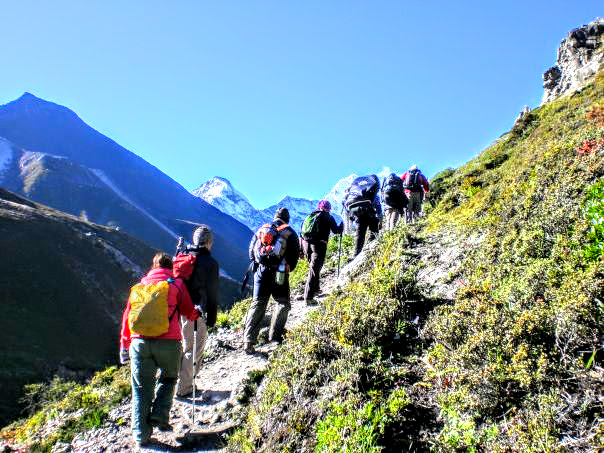
Trekking Equipment
Preparing for the Everest Base Camp trek requires careful planning and packing to ensure your safety and comfort during the journey. Here’s an equipment checklist for your Everest Base Camp trek:
- 1. Base Layers: – Moisture-wicking thermal tops and bottoms
- 2. Insulating Layers: – Fleece or down jacket – Insulated pants or trekking pants
- 3. Outer Layers: – Waterproof and windproof jacket with a hood – Waterproof and windproof pants – Gaiters (to keep snow out of your boots)
- 4. Headwear: – Warm beanie or hat – Sun hat with a wide brim – Neck gaiter or scarf – Sunglasses with UV protection
- 5. Handwear: – Lightweight gloves for trekking – Warm, insulated gloves or mittens for cold weather
- 6. Footwear: – Sturdy, waterproof trekking boots with good ankle support – Gaiters to keep snow and debris out of your boots – Moisture-wicking socks (bring several pairs) – Insulated socks for colder days – Camp shoes or sandals for relaxation at tea houses
Trekking Gear:
- 7. Backpack: – A comfortable, durable backpack with a rain cover (around 40-50 liters)
- 8. Sleeping Bag: – A warm sleeping bag suitable for cold temperatures (down or synthetic)
- 9. Trekking Poles: – Adjustable trekking poles for stability on steep and uneven terrain
Miscellaneous:
- 10. Headlamp: – With extra batteries and spare bulbs
- 11. Water Purification: – Water purification tablets or a portable water filter
- 12. Duffel Bag: – A sturdy duffel bag for carrying your gear, to be carried by porters
- 13. Toiletries: – Toilet paper, biodegradable soap, toothbrush, toothpaste, and other personal hygiene items – Hand sanitizer
- 14. First Aid Kit: – Including bandages, antiseptic wipes, pain relievers, blister treatment, and any personal medications
- 15. Trekking Map and Guidebook: – Useful for navigation and information about the trail
- 16. Travel Insurance: – Ensure it covers trekking at high altitudes and emergency evacuation
- 17. Trekking Permits and Documentation: – Necessary permits and identification documents
- 18. Cash: – Local currency (Nepalese Rupees) for expenses along the way
- 19. Camera and Binoculars: – Optional, but the scenery is breathtaking
- 20. Snacks: – Energy bars, trail mix, and other snacks for the trek
Remember that you can rent or purchase some equipment in Kathmandu or Lukla if you don’t want to bring everything from home, but it’s essential to ensure that rented gear is of good quality and in proper condition.
Additionally, your choice of clothing and gear may vary depending on the time of year you plan to trek and your personal preferences. Be sure to check the weather forecast for the time of your trek and consult with experienced trekkers or a local guide for additional advice on what to bring.
The duration of the Everest Base Camp trek typically ranges from 12 to 14 days, allowing for proper acclimatization and enjoyment of the journey.
The optimal trekking seasons are spring (March to May) and autumn (September to November) when the weather is most favorable, offering clear skies, moderate temperatures, and stunning views.
While the trek is challenging, it is suitable for trekkers of all levels of experience. However, proper physical conditioning and acclimatization are essential for a safe and enjoyable journey.
No prior trekking experience is required, but it is recommended to have a reasonable level of fitness and stamina. Our experienced guides will provide support and assistance throughout the trek.
Everest Base Camp is located at an altitude of 5,364 meters (17,598 feet) above sea level.
While it is possible to trek independently, many trekkers choose to hire experienced guides for safety, navigation, and cultural insights. Guided tours also provide logistical support and enhance the overall experience.
Trekkers require a Sagarmatha National Park entry permit, local permit and a TIMS (Trekkers' Information Management System) card, which can be obtained through registered trekking agencies or the Nepal Tourism Board in Kathmandu.
Essential items include sturdy hiking boots, warm clothing layers, a sleeping bag, trekking poles, sunscreen, a first aid kit, and water purification tablets. It's important to pack light but adequately for changing weather conditions.
Altitude sickness is a potential risk due to the high elevation. It's crucial to acclimatize properly, stay hydrated, and listen to your body's signals. Our guides are trained to recognize symptoms and provide assistance if needed.
Accommodation along the trekking route typically consists of tea houses or lodges, offering basic but comfortable amenities such as shared rooms, hot showers (for a fee), and meals.
Altitude sickness can be a concern due to the high elevations reached during the trek. It is essential to acclimatize properly, stay hydrated, and ascend gradually to minimize the risk of altitude-related illnesses.
Bottled water is available for purchase at teahouses along the trekking route, but it is advisable to use water purification tablets or a filtering system to minimize plastic waste.
ATM facilities are not available along the trekking route, so it is advisable to carry enough Nepalese currency (in cash) for expenses during the trek. Some teahouses may accept card payments, but this cannot be relied upon.
Some teahouses along the trekking route offer charging facilities for electronic devices such as phones and cameras, usually for 1-5 $. However, power availability can be limited, so it's advisable to bring a power bank or spare batteries as a backup.
Most teahouses along the trekking route have basic toilet facilities, which are typically squat toilets. Some teahouses may also have Western-style toilets, but these are less common.
Travel insurance that covers medical emergencies, evacuation, and trip cancellation is highly recommended for the Everest Base Camp trek. It provides peace of mind and financial protection in case of unforeseen circumstances or emergencies during the journey.
While it is possible to trek to Everest Base Camp solo, it is recommended to go with a guide or as part of a group for safety reasons. Solo trekkers should have prior trekking experience, be well-prepared, and have a good understanding of the trekking route.
Teahouses along the Everest Base Camp trek route offer a variety of meals, including Nepali, Tibetan, and Western dishes. Common food items include dal bhat (rice and lentils), noodles, soups, momos (dumplings), and tea or coffee.
Laundry facilities are limited along the trekking route, but some teahouses may offer hand-washing services for a fee. It's advisable to pack enough clean clothing for the duration of the trek or hand-wash items as needed.
The cost of the Everest Base Camp trek varies depending on factors such as the duration of the trek, choice of trekking agency, accommodation preferences, and additional services. On average, the cost of a guided trek with basic amenities ranges from USD 1,000 to USD 2,000 per person.
While there are no specific age restrictions for the Everest Base Camp trek, trekkers should be in good health and have a reasonable level of fitness to undertake the journey. It is advisable to consult with a healthcare professional before embarking on the trek, especially for older adults or individuals with pre-existing medical conditions.
Map & Elevation

Carmen Lopez-Group Camaraderie – Mexico
- Reviewed October 2, 2023
Trekking with a group on the Everest Base Camp trek was fantastic. We forged lasting friendships thanks to Hiking Himalayas’ well-organized group dynamics. I would like to recommend this agency for the Life time memorable journey .

Lars Jensen-Safe and Well-Organized Trek
- Reviewed September 28, 2023
Safety was a top priority during the Everest Base Camp trek with Hiking Himalayas. Their meticulous planning and experienced guides ensured our well-being.
Sofia Rossi – Solo Trekking Success – Everest Base Camp
- Reviewed September 25, 2023
As a solo trekker, Hiking Himalayas made me feel safe and supported throughout the Everest Base Camp journey. It was a tremendous personal achievement.
Jeff- An Unforgettable Journey to Everest Base Camp
- Reviewed September 10, 2023
Trekking to Everest Base Camp with Hiking Himalayas was a life-changing experience. The breathtaking views, expert guides, and warm hospitality made it an unforgettable journey.
Claudia – Everest Base Camp – A Dream Come True
- Reviewed September 4, 2023
Trekking to Everest Base Camp with Hiking Himalayas was a dream come true. The guides were knowledgeable, and the views were absolutely breathtaking. It’s an experience I’ll cherish forever.
Speak to an Expert
Do not hesitage to give us a call. We are an expert team and we are happy to talk to you.
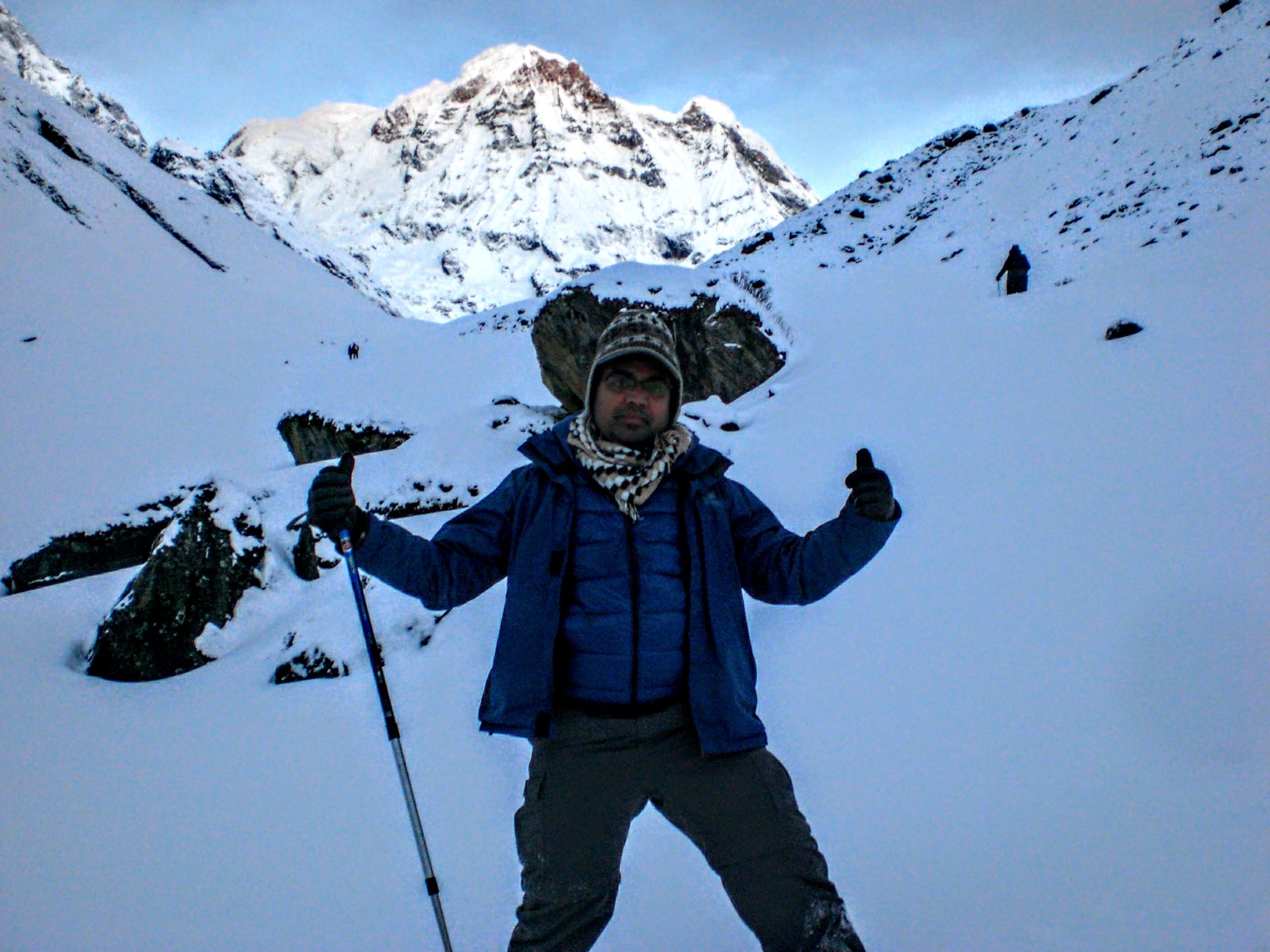
Vishma Raj Nepal
Whatsapp: +977-9851051658, things you should do before booking your vacation.
- Manage Your Cash Flow
- Check the Average Weather for your Trip Dates
- Check Local Event Dates
- Check for Travel Warnings and Travel Alerts
- Make Sure your Passport and Visas are up to Date
- Budget Everything and More
Related Trips And Packages
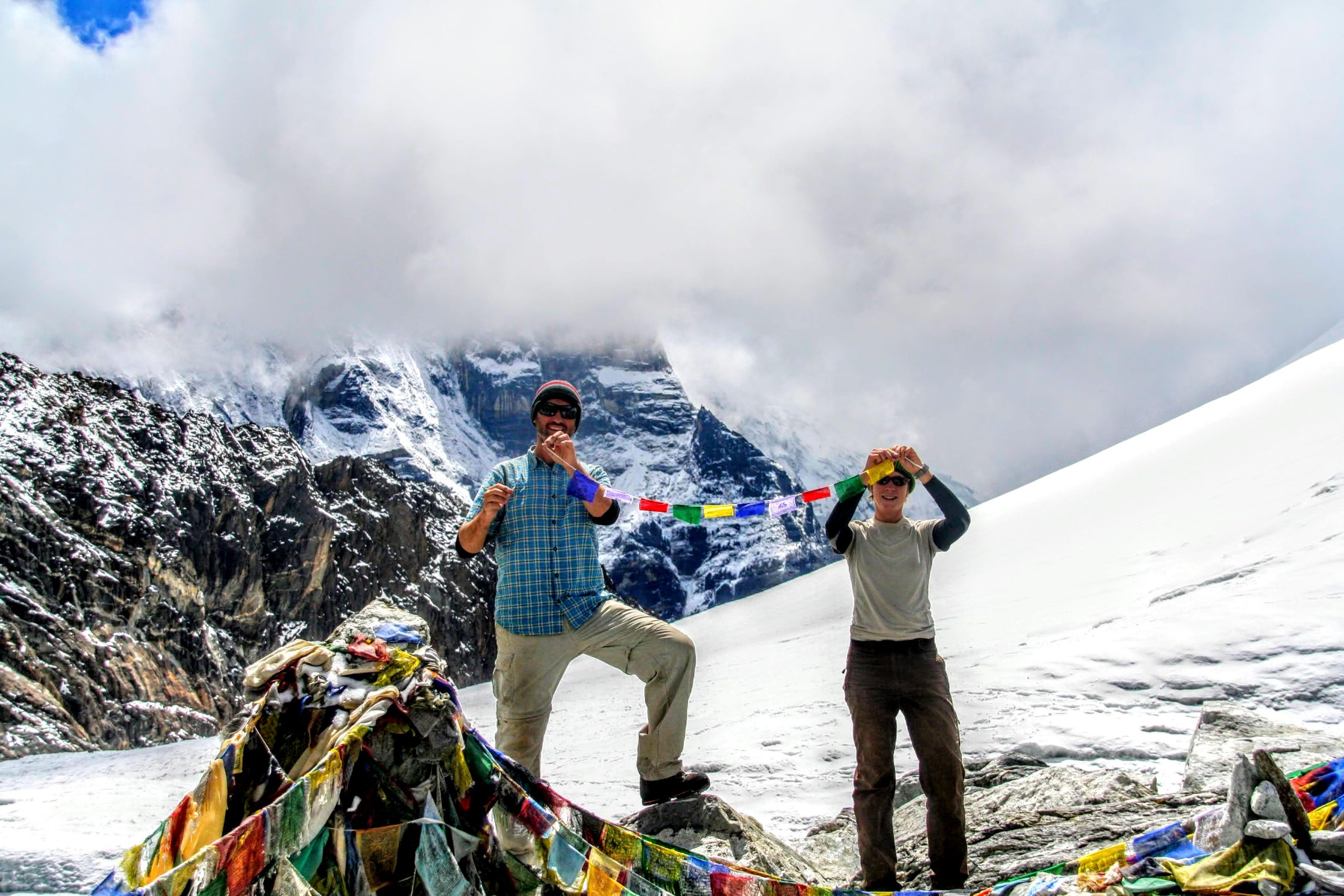
Everest Three Passes Trek
$1995 / pp $ 2100 .
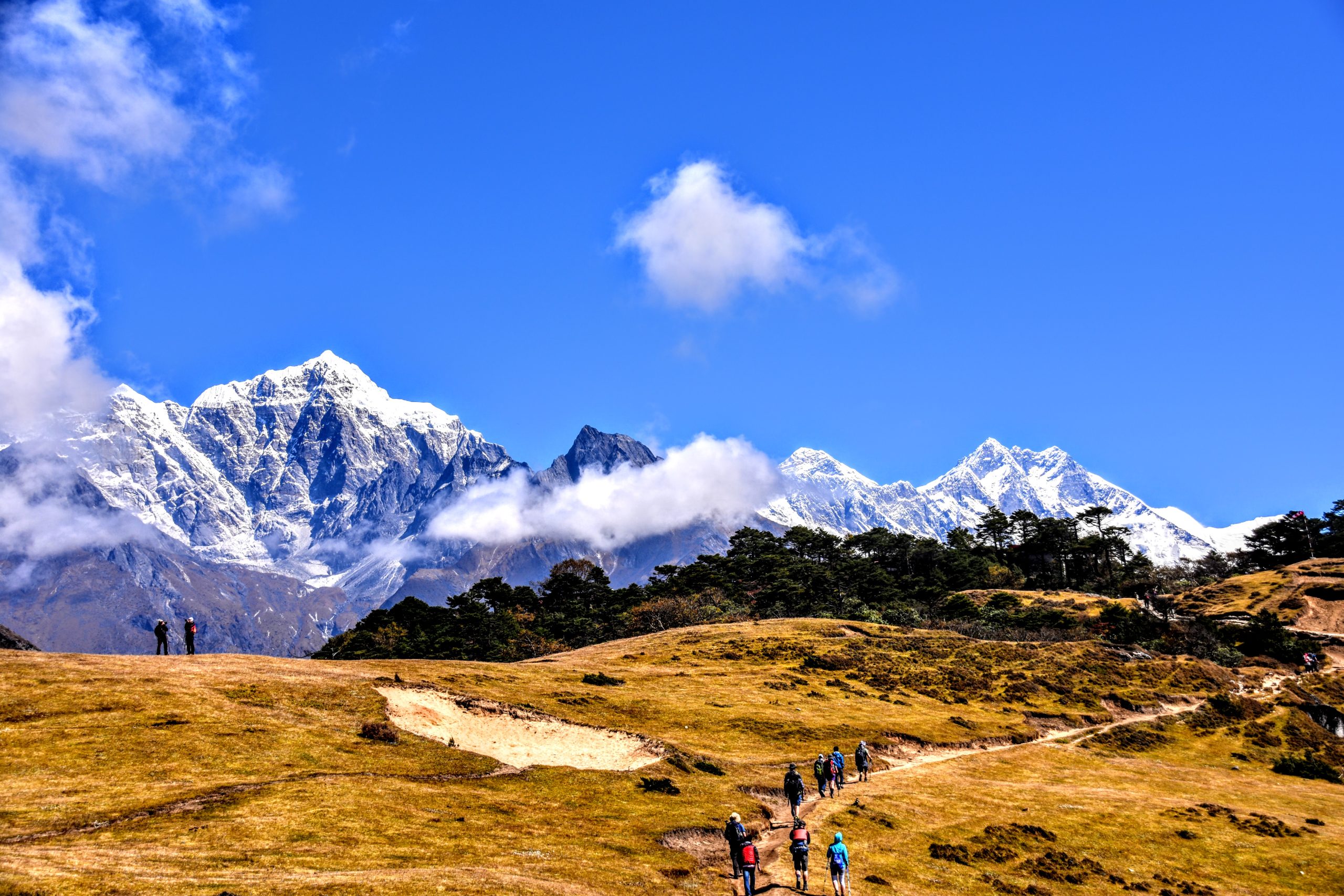
Everest Base Camp Luxury Trek
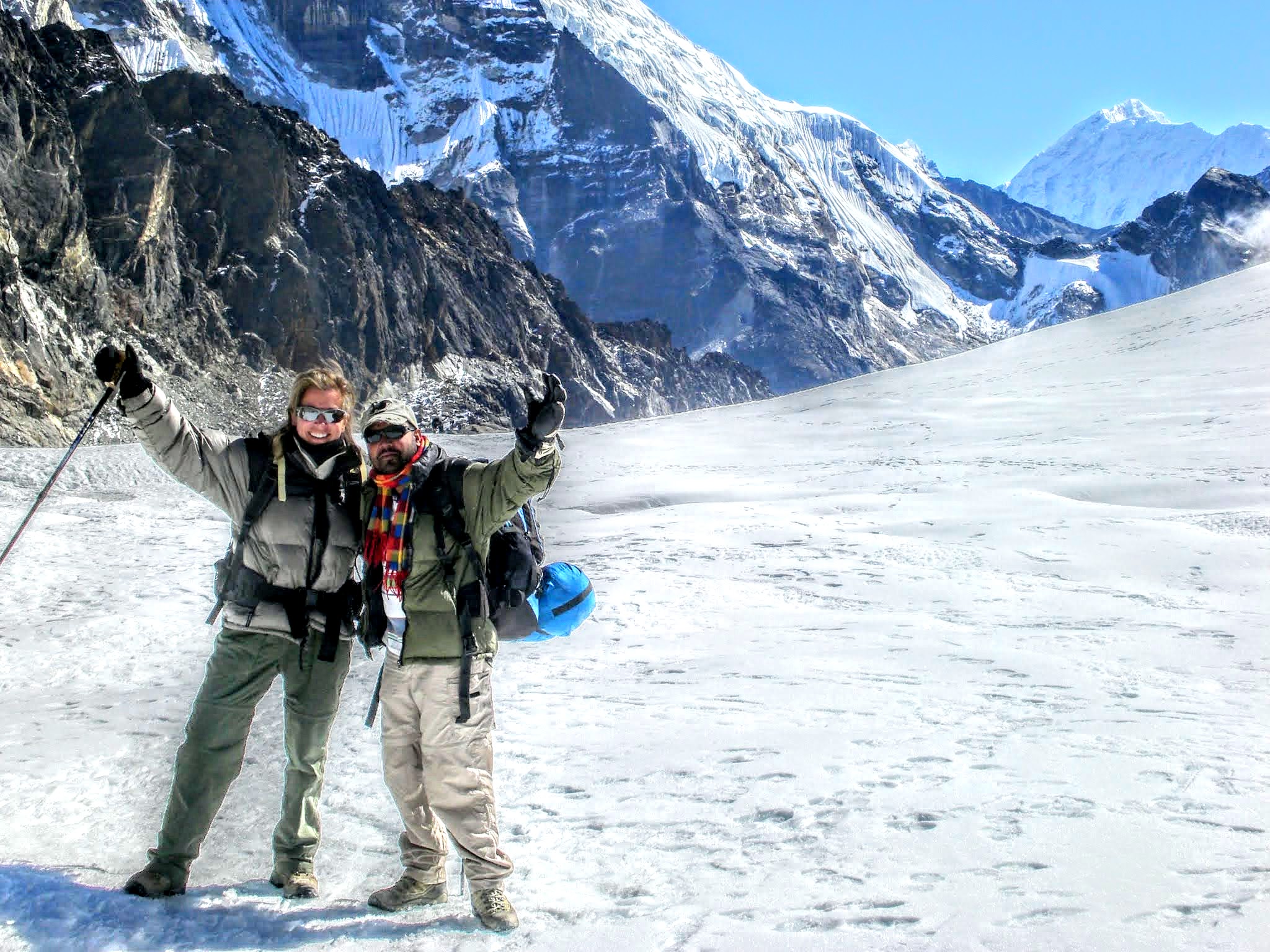
Gokyo-Cho La Pass – E.B.C Trekking
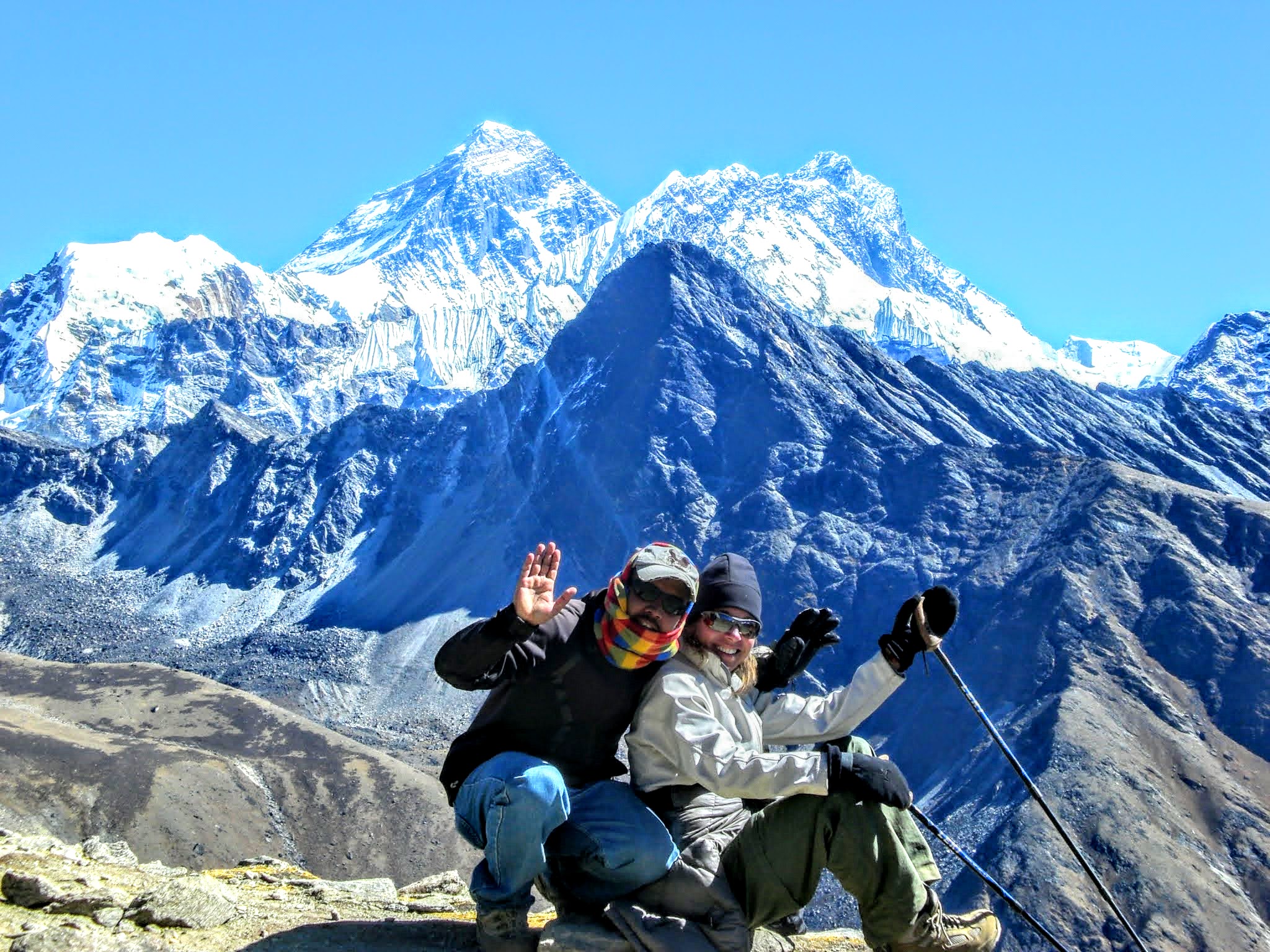
Gokya-Renjo La Trek
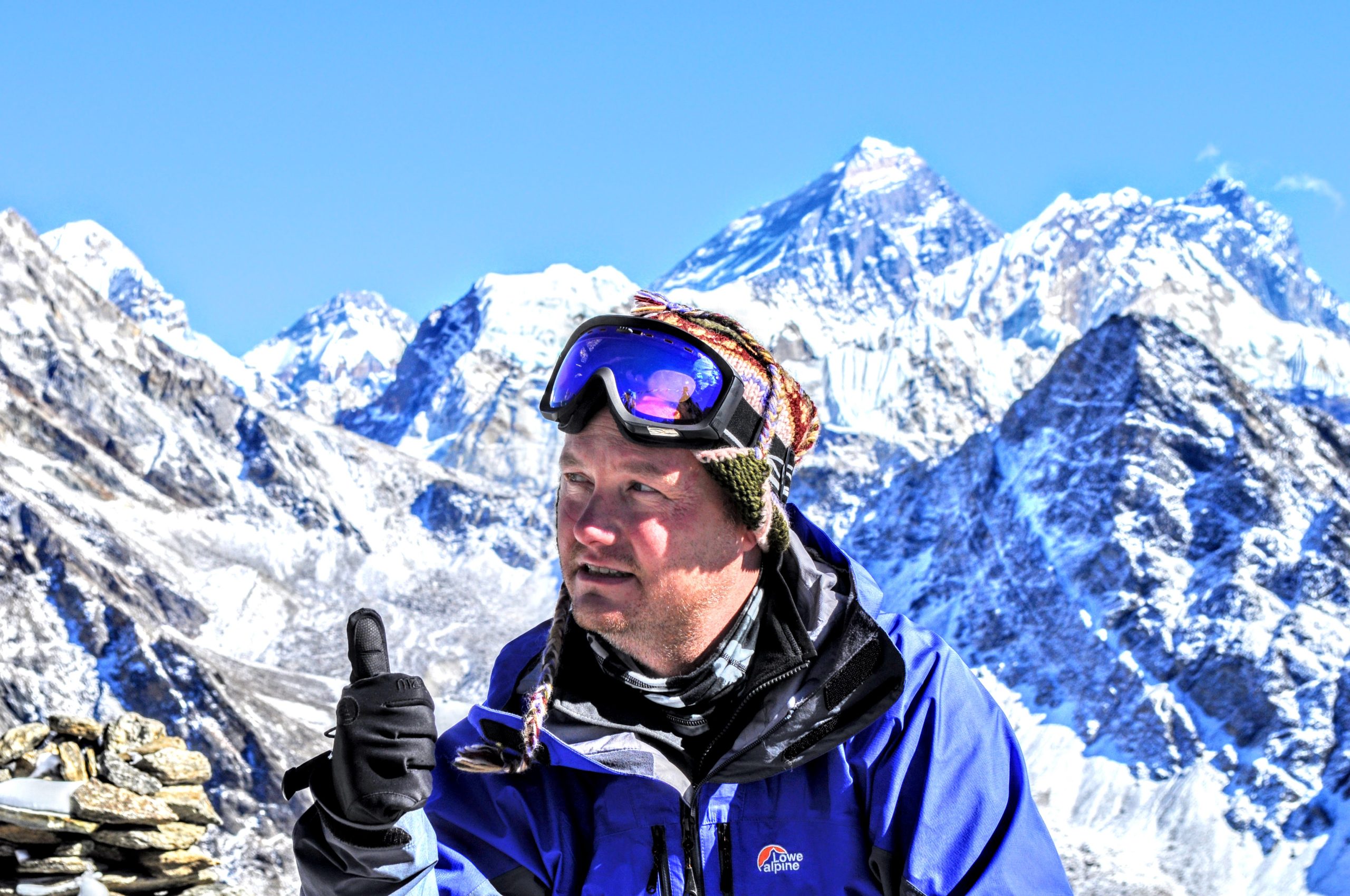
Gokyo Valley Trek
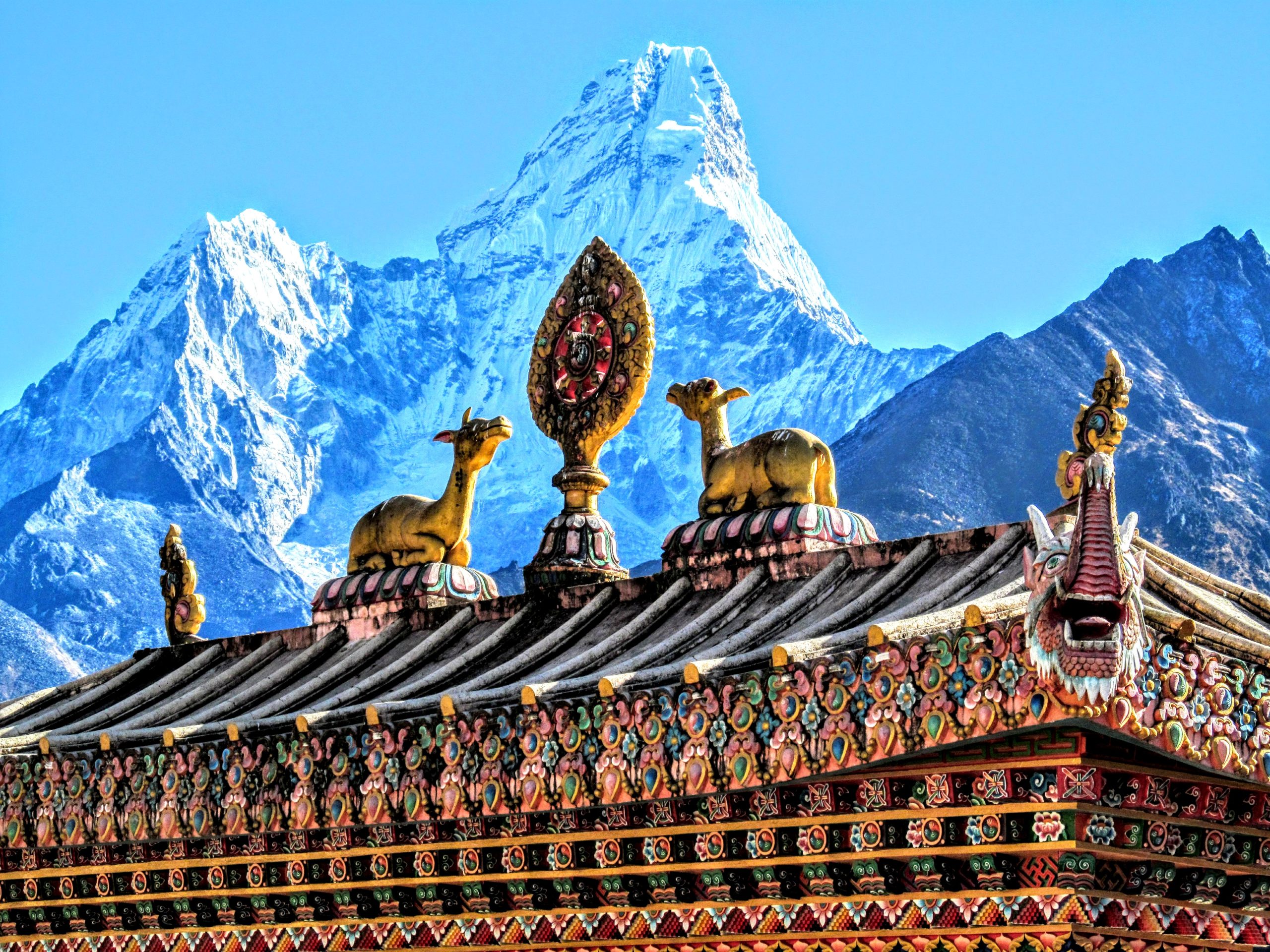
Ama Dablam Base Camp Trekking
Review us on:.

We're affiliated & Join with:
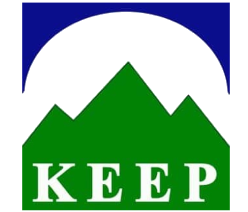
Our International Partner:
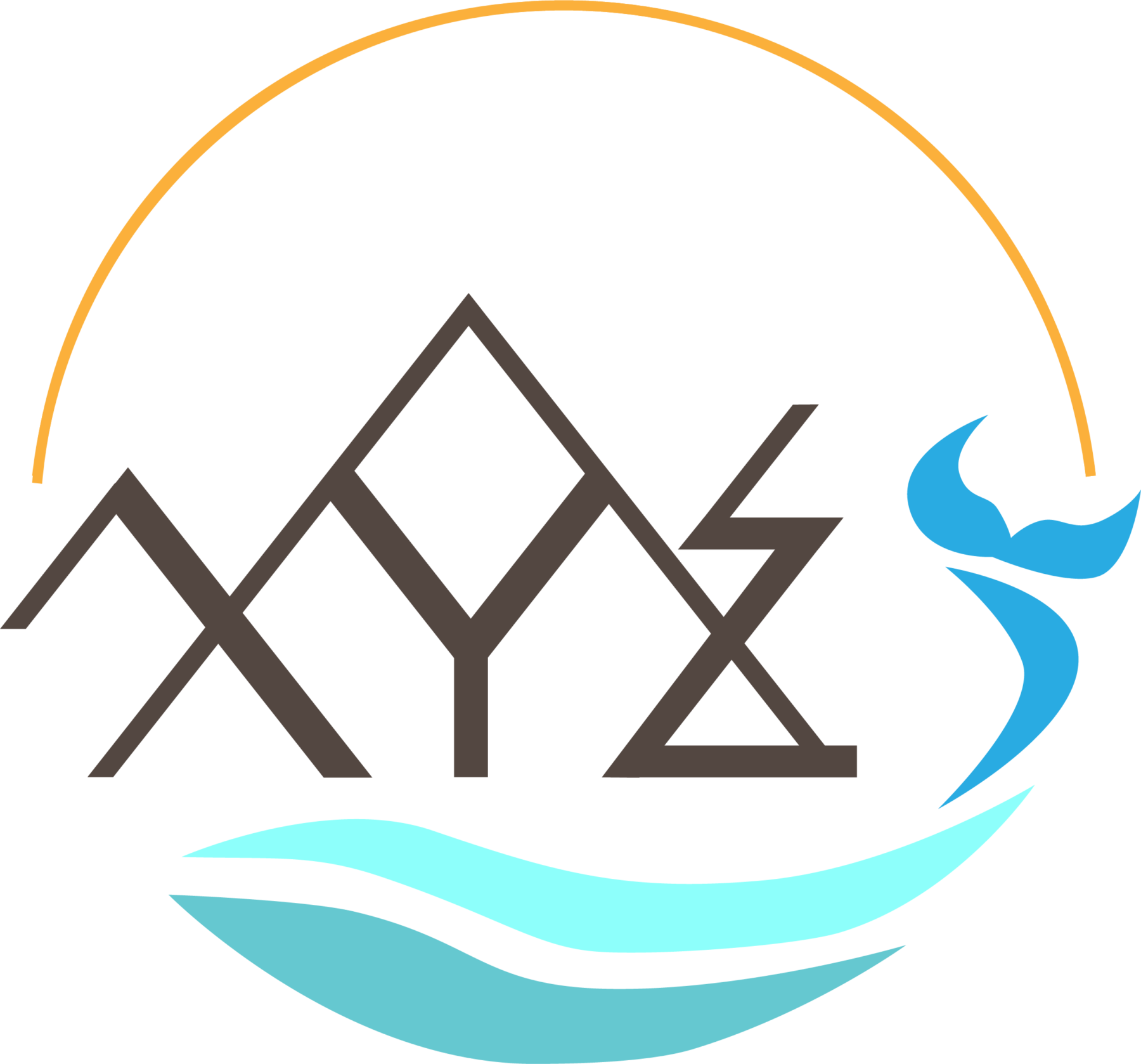
If you are going to use a passage of Lorem Ipsum, you need to be sure there isn't anything embarrassing hidden in the middle of text
Travel Services
- Travel Protocols
- Hotel reservation
- Sustainable Tourism
- Charter Flight
- Transport Services
Everest Base Camp Trek
15 days | walk among giants, test your limits and discover your strength.

Base Camp. Two little syllables that conjure up dreams as immense and powerful as the Himalayan Mountains themselves. This 15-day trekking trip is your chance to make these dreams come true, to challenge yourself and discover both the majesty of the mountains and your own potential. Walk among giants of nature and revel in the sense of freedom that comes from leaving Wi-Fi and Netflix behind for card games in tiny teahouses, learning about Sherpa life and watching the sunrise over Everest. Plus, Intrepid's commitment to the rights and fair treatment of porters and trekking guides means you can rest assured knowing you’re doing the trek of a lifetime the ethical way. ALTERNATE ITINERARY: In case of weather conditions leading to cancellations or delays in included flights, this trip will operate on an alternate itinerary. Please see day 1 of the itinerary for more details.
Trip overview
- In addition to immense rugged mountains, witness everything from still alpine lakes and glacial plains to frothy rivers and valleys covered in pink blossoms, depending on the season.
- A trek like this is the bonding experience of a lifetime and the genuine comradery formed between members of your small group will stay with your forever.
- Get your first glimpses of the mighty Himalayan range on the included flight from Kathmandu to Lukla – the famous airport in the sky.
- Hike with an experienced and passionate English-speaking local leader as well as a team of guides and porters who will introduce you to rich Sherpa culture.
- Intrepid partners with local mountaineering and porter welfare programs, so you can trek easier knowing that while our porters are taking care of you, there’s someone looking out for them.
- By travelling on this trip, you’ll directly support our Intrepid Foundation partner, Sagarmatha Next. Donations help them remove waste responsibly and turn rubbish into art in the Everest region.
- The weather can be unpredictable in the Himalayas and every year a significant number of trips have flights to or from Lukla delayed or cancelled due to weather conditions. See day 1 of the itinerary for the alternative plans should this happen on your trip.
- Hiking the Himalayas is no walk in the park. But seriously, this trip includes 12 days of trekking for up to eight hours per day, reaching altitudes of over 5500 metres. Depending on the time of year, the weather can be harsh. Ask anyone who has done it and they will say the rewards are worth it, but we can’t stress enough that you must be in excellent health to participate. Think you’re up for it? Find our step-by-step training guide here: https://www.intrepidtravel.com/adventures/trekking-training-guide-tips/ .
- The trekking lodges, known as teahouses, that we stay in on the trek are very simple with only basic facilities. Access to electricity points for charging devices will cost extra. Wi-Fi is available at some locations, but connections may be poor.
- The scenery and conditions vary between seasons. Please carefully consider the time of the year you wish to trek in and consult this packing guide https://www.intrepidtravel.com/adventures/packing-guide-for-trekking-in-nepal/ .
- The Everest Base Camp trek is a very popular route and you will encounter many other trekkers and groups on the trail and at the teahouses. If you are after a trek that sees less travellers and spends more time trekking through communities rather than on a more established route, see our Tamang Heritage & Langtang Valley Trek (HNXV).
- This trip includes one or more overnight stays over 3500 metres (11500 ft) where there is a genuine risk of being affected by Acute Mountain Sickness (AMS). If left untreated AMS can be life-threatening. While the vast majority will only feel discomfort, it is not uncommon for a small number of people to need extra care which will be provided by our leaders and local staff. All our trips that spend time at high altitude follow our standard altitude safety measures. A number of medical conditions and medications can also reduce your body's ability to acclimatise, and thus will affect your performance at altitude and make you more susceptible to AMS. If you are worried about any pre-existing condition (e.g. heart problems), or unsure of your physical ability, you must seek medical advice prior to booking. You may also wish to discuss medication such as Diamox that may help aid acclimatisation. Read more about AMS here: https://www.intrepidtravel.com/altitude-sickness
Namaste! Welcome to Kathmandu, the colourful capital of Nepal where ornately carved balconies mingle with beautiful shrines and temples. Your adventure begins with a welcome meeting at 2 pm today. If you arrive with time to spare, maybe check out the storied stupas and pagodas of Swayambhunath (Monkey Temple) or take a walk around the local Durbar Square. If you’ve got limited time in the city, consider an immersive Urban Adventure like Cook in Kathmandu, a community farm-to-table cooking class with the Seven Women social enterprise.
ALTERNATIVE ITINERARY DUE TO FLIGHT CANCELLATIONS: Weather conditions in the Himalayas can change rapidly, which can result in the need for changes to be made to our intended itineraries. Flights throughout Nepal – particularly in high mountain areas – are often delayed or cancelled due to poor weather conditions. Flights between Kathmandu/Ramechhap and Lukla are particularly prone to these delays which has the potential to vary the itinerary of our tour departures. Our contingency plans in case of bad weather preventing the fixed wing aircraft flight from Kathmandu/Ramechhap to Lukla are as follows:
Day 2 – We will attempt to board our booked fixed-wing plane as per the itinerary. If this flight is cancelled, we will return to our hotel in Kathmandu/Ramechhap for an additional night.
Day 3 – We will again attempt to board our booked fixed-wing plane. If this flight is cancelled we will endeavour to charter a helicopter to transport the group, provided helicopters are available and weather does not prevent them from flying to Lukla. There may be delays for helicopter flights due to limited availability of safety audited helicopter operators.
Travellers will need to use their emergency fund to cover the cost of the chartered helicopter. The exact cost will depend on how many travellers are in your group and could be up to US 500 per person. It is common practice for the helicopter company to charge varying prices, so you may pay different amounts to others on the flight. If we reach Lukla on day 3 by either fixed wing aircraft or helicopter we will then follow the same itinerary to Everest Base Camp but descend over one less day in order to take our return flight from Lukla on day 14.
Day 4 – If both fixed-wing planes and helicopters are unable to reach Lukla on the morning of day 3, then on day 4 we will drive back to Kathmandu by private vehicle. While we will not be able to reach Base Camp itself on the altered itinerary to Langtang - Gosainkunda Trek, our travellers have still found it a highly enjoyable trek with superb views of snow caped mountains and visit the beautiful lake - Gosainkunda. This lake is sacred for both Hindu and Buddhist pilgrims.
We also advise allowing a few extra days in Kathmandu at the end of your trip should your return flights from Lukla be delayed due to weather conditions.
- Hotel (1 night)
There are no meals included on this day.
- Kathmandu - Rickshaw Night Explorer Urban Adventure - USD55
- Kathmandu - Spiritual Nepal Experience Urban Adventure - USD68
- Kathmandu - In Focus: Cook in Kathmandu Urban Adventure - USD66
It’s very important that you attend the welcome meeting as we will be collecting insurance details and next of kin information at this time. If you are going to be late please let your travel agent or hotel reception know. Ask reception or look for a note in the lobby for more information on where the meeting will take place.
Flights going to and from Lukla may be operated out of Ramechhap Airport, in an effort to alleviate congestion at Kathmandu’s Tribhuvan International Airport by the Civil Aviation Authority of Nepal. In such case, any departures affected will need to wake up quite early on Day 2 to drive the 130 km (approximately 5 hours) from Kathmandu to Ramechhap Airport. A private vehicle transfers will be provided at no additional cost. Your local leader will give you the most up to date information regarding delays to flights.
Sitting at 8848 m, Mt Everest, the highest peak in the world, is one of the greatest trekking destinations. Locally known as Sagarmatha, the mountain has long been revered as the home of the gods. First conquered by Tenzing Norgay and Sir Edmund Hillary in 1953, Everest has traditionally been the ultimate goal for mountaineers. On this trip you will take on the challenge of reaching the mountaineer's base camp and gain an insight into the world famous Sherpa culture. You will cross glaciers and broad plains, traverse valleys and climb high passes to reach the picturesque Everest Base Camp. Our accommodation comprises small, basic teahouses along the track. These basic but cosy remote houses are operated by the mountain Nepalese to cater for trekkers and also offer simple yet filling and delicious meals to sustain our efforts. This is a challenging trip and involves difficult trekking at high altitudes but the whole experience is simply awe-inspiring!
Today we have a very early flight from Kathmandu to Lukla. If the weather is good, the views of the Himalayas from the small plane are amazing! After breakfast in Lukla (2840 m), a short safety talk and an introduction to your porters, gear up and commence your trek. Today is a fairly gentle introduction, following the milk-white Dudh Kosi River approximately three-hours to Phakding (2610 m).
- Teahouse (1 night)
- Everest Base Camp – Porterage of One Bag (10kg/22lbs max)
- Everest Base Camp – 12D/11N Trek
Trek Distance: 8.5 km Approximate Duration: 3 hours Ascent: 350 m Descent: 560 m
Please note that in peak travel times domestic flights to/from Kathmandu may arrive/depart from Ramechhap (also known as Manthali) Airport. The airport is located 130 km (a 4 to 5 hours drive) from Kathmandu.
Today you’ll trek around 7 hours to Namche Bazaar, where you’ll spend a couple of days acclimatising to the altitude. You might also get your first look at Everest itself. From Phakding you’ll cross the river and head up the valley, following in the footsteps of the porters loaded with supplies for Namche Bazaar. The trail, lined with blue pine forest, follows the river valley and is especially spectacular in spring when the rhododendron flowers are bright in bloom. Cross the Dudh Kosi River at Benkar, and look way up above 6,000 metres to see the peaks of snow-capped Kusum Kanguru (6369 m) and Thamserku (6623m). Press on to Monjo (2835m), a good place to break for lunch. From here the walk starts to get a little tougher, with a steep ascent to Namche Bazaar. Enter into the national park, cross the river through the village of Jorsale (2805m) and then continue upstream. Cross another spectacular suspension bridge and begin the ascent to Namche Bazaar. Get your camera out as now there will be your first glimpse of the peaks of Everest, Lhotse, Nuptse and Taweche. Namche will be your last chance to check your equipment and hire any additional gear for the high altitudes from Dingboche onwards. Namche Bazaar is also the last chance to enjoy the local nightlife or take to the pool hall and video parlours.
Trek Distance: 10 km Approximate Duration: 7 hours Ascent: 1090 m Descent: 335 m
You’ll stay at Namche Bazaar for another night so that you can properly acclimatise to the altitude. One of the best ways to do this is to take strenuous walk up to a high altitude then come back down to sleep – Take an optional hike, visiting Sagarmatha Next along the way, who support local communities to create and implement a sustainable waste handling system in the region. There’s an optional walk to see views from the national park headquarters above the village. This stunning vista includes a super panorama of the Khumbu peaks and great views of Everest.The national park headquarters are home to interesting displays about Sherpa lifestyle and culture, and the local flora and fauna. Namche gained its importance during the period when Tibetan salt was traded for the lowland grains of Nepal. Rugs, clothing, salt and dried meat still all do a roaring trade in the village centre, so haggle for any extra supplies you might need.
- Namche Bazaar - Acclimatisation Hike
Trek Distance: 5 km Approximate Duration: 3.5 hours Ascent: 465 m Descent: 465 m
Today you'll trek for about 9 km from Namche Bazaar to Phortse. This route offers amazing insight into the life and culture of the sherpas, and that night we stay in a village that is home to a number of sherpas who have reached Everest's summit. Looking out from Phortse, the views of Amadablam are great.
Trek Distance: 10 km Approximate Duration: 7 hours Ascent: 970 m Descent: 550 m
In the winter season (Dec, Jan & Feb) trek to Tengboche instead of Phortse Gaon
Climb above the tree-line and trek approximately seven hours covering the distance of 12 kms to Dingboche. Here you’ll find a beautiful patchwork of small fields enclosed by stone walls. These walls protect crops of barley and potatoes from the cold winds. The scenery is once again spectacular and although Everest will be hidden behind the Lhotse-Nuptse Ridge, the huge peaks that tower above the eastern end of the valley are more than worthy. If the weather’s right, then there will be gorgeous sunsets illuminating the peaks – Ama Dablam, the south face of Lhotse to the north, and also Island Peak in the centre of the valley.
Trek Distance: 14 km Approximate Duration: 7 - 8 hours Ascent: 920 m Descent: 410 m
Today is another acclimatisation day. Staying the night in Dingboche you'll take day hikes to Nagarjun Hill or Chukkhung.
- Dingboche - Acclimatisation Hike
Trek Distance: 4 km Approximate Duration: 3 hours Ascent: 425 m Descent: 425 m
From Dingboche, ascend the small ridge behind the village above the Pheriche valley. From the stupa at the top, Taweche and Cholatse (6440 m) make for a pretty striking scene – they seem to lean forwards from across the valley in the west. To the north, Lobuje Peak (6119 m) and the snowfields of the Cho La are the kings of the skyline. The walking will now be fairly flat on wide-open fields, but remember that there’s no rush – take your time and ensure you’re well hydrated. Late in the morning you will cross the Khumbu Khola at Dughla and take a light lunch at the foot of the huge terminal moraines of the Khumbu Glacier flowing off Everest. In the afternoon, there will be a solid and quite steep climb on a rocky trail to the top of the moraines. On the crest of the ridge, you’ll pass a line of memorial cairns (stacks of stones), built in memory of the Sherpas and climbers who have died on various Everest expeditions over the last fifty or so years. From here the view is downright spectacular once again, with Pumori (7145 m), Lingtren (6697 m), Khumbutse (6623 m), and across the border in Tibet, Changtse (7550 m), surrounding you. Then follow the valley stream to the lodge at Lobuje, arriving early afternoon.
Trek Distance: 8 km Approximate Duration: 5.5 hours Ascent: 660 m Descent: 85 m
This is the big one, the day of Everest Base Camp. From Lobuche, follow the broad valley that runs parallel to Khumbu Glacier, with a gradual ascent enabling you to build the slow, steady rhythm required when walking at high altitude. When you reach the moraines of Changri Nup Glacier, you will make a series of small ascents and descents over a rocky trail lined with cairns that eventually leads to the surprising glacial sands of Gorak Shep (5160 m) – reached after about three hours of walking. Now’s the time to grab a quick bite, gear up appropriately, and then head off towards Everest Base Camp. The trek to the base camp can be achieved in around three hours, and if trekking in the popular climbing period of March to May, you will almost certainly encounter yaks and porters supplying food and equipment to expeditions here. From Everest Base Camp you will not get views of Mount Everest, but you are able to see glorious glaciers, lakes, caves, and the notorious Everest Ice Fall that flows from the Western Cwm. It's regarded as technically the hardest and most dangerous section of the mountain. The return journey from the Base Camp to Gorak Shep takes the same amount of time. You will have an early dinner so that you are able to get up early the next day for awe-inspiring views of the Himalayan giants from Kala Patar.
Trek Distance: 8 km Approximate Duration: 8 hours Ascent: 500 m Descent: 270 m
Your teahouse in Gorak Shep is situated at 5180 m (16,995 ft). Due to its remote location and high elevation, all materials must be carried up to this altitude (or back down) by foot or by yak as there are no roads. While the views of Everest and the surrounding Himalayas are spectacular, the amenities are understandably basic.
Today you witness some of the Himalayas most recognisable sights. You'll make an early start to avoid the early morning clouds and trek to Kala Pattar (5545 m) to witness the best views of Everest. Don’t be surprised if you get a little tear in your eye when you soak up the views of Everest. Embrace that emotion and spend as long as you like here to savour this extra special moment. To get there from the lodge the ascent is quite steep, so start very slowly and try to ascend at a steady rhythmic pace. Kala Patar is the rocky hilltop below Pumori. It’s a tough walk because of the altitude, but the view from the top will surpass your wildest imagination. It will probably take a good hour and a half to reach the summit from Gorak Shep, although lower viewpoints can provide views that are almost as good. Pumori, Nuptse, Changtse, Ama Dablam, Taweche, Kantega and Everest – they’re all here. About three kilometres away and some 200 metres below, the area of the Everest Base Camp can be seen in a bowl at the bottom of the Khumbu Ice Fall. Then it’s all downhill from here – the descent to Gorak Shep is easy and when you arrive back at the lodge you will have a quick drink and head off to the rooms to pack your kit bags while breakfast is being prepared. After breakfast you will set off to Lobuche and Thugla, where you will stop for lunch. Then you’ll cross the Khumbu Khola and head down the valley below Cholatse to Pheriche, where you will stop for the night.
- Gorak Shep - Kala Patthar Sunrise Trek
Optional Trek from Gorakshep to Kalapathhar & back
Trek Distance: 4 km Approximate Duration: 3 hours Ascent: 440 m Descent: 440 m
Trek from Gorakshep to Pheriche
Trek Distance: 12 km Approximate Duration: 6 hours Ascent: 70 m Descent: 950 m
Descend through the small settlements at Orsho and Shomare before passing through Lower Pangboche. Here you’ll reach the suspension bridge over the Imja Khola River, then ascend back to Tengboche to visit the monastery. According to legend, Lama Sange Dorjee, who came from Tibet’s Rongphu Monastery, founded Thyangboche Monastery in the 17th century. Tengboche was destroyed by an earthquake in 1933, rebuilt and again badly damaged by a fire in 1989. Construction of the present monastery was completed in 1992. Spend a bit of time visiting the monastery and the Sherpa Heritage Foundation museum.
- Tengboche - Monastery
Trek Distance: 10 km Approximate Duration: 4 hours Ascent: 665 m Descent: 1740 m
Descend steeply through beautiful forest of juniper, rhododendron and fir. Cross the Dudh Kosi River and ascend to Trashinga. From here the trail contours high above the valley through Shanasa and on to Namche Bazaar, before descending steeply down to the large suspension bridge over the Dudh Kosi River. You’ll follow the trail through Jorsale and back to Chumo, where you’ll stop for the night.
Trek Distance: 15 km Approximate Duration: 8 hours Ascent: 665 m Descent: 1740 m
You’ve done it, your last day of trekking! Today you'll walk back to Lukla via Benkar through blue pine and rhododendron forest, with great views of Kusum Kangaru. From here, make the final climb up to Lukla, where you’ll say goodbye to your Sherpa crew. Celebrate with a hot shower and a few drinks with your group before flying back to Kathmandu tomorrow morning.
Trek Distance: 12 km Approximate Duration: 6 hours Ascent: 725 m Descent: 640 m
Weather permitting, you'll take a short early morning flight from Lukla to Kathmandu. Return to the hotel and have free time during the afternoon for further sightseeing or shopping. Shop in some of Kathmandu's many markets for clothing, embroidery, carpets or ceramics. If shopping is not your thing, take a trip over the Bagmati River to the adjacent city of Patan, with its abundance of temples and monasteries. Enjoy a final night together, reliving the trek and our extraordinary achievements.
Your travel time today will be approximately 5 hours.
If there is bad weather or low cloud conditions our flight back to Kathmandu may not go, giving us an extra day in Lukla to relax or do a day walk. In this case, we will return to Kathmandu by late morning on day 15 and the trip will end with an arrival transfer back to our hotel.
Please note that in peak travel times domestic flights to/from Kathmandu may arrive/depart from Ramechhap (also known as Manthali) Airport.
Say 'Namaste' for memories that will last a lifetime. There are no activities planned for today and you are able to depart the hotel at any time. If you'd like to stay longer, just speak to your booking agent.
- Kathmandu - Panorama Hike Urban Adventure - USD57
- Kathmandu - In Focus: Handmade Kathmandu - USD93
- Kathmandu - Exploring Patan & Bhaktapur Urban Adventure - USD97
Private vehicle, Plane
Hotel (2 nights), Teahouse (12 nights)
Dates and availability
Important notes.
1. This trip starts in Kathmandu on Day 1 at 2 pm. This allows time after the joining meeting to explore Kathmandu. 2. Due to the demands of travelling at high altitudes a Passenger Self Assessment Form is required for this trip. You will be trekking on hilly terrain, generally on well-defined paths, walking anywhere between 2–7 hours per day, on average about 5 hours a day. Altitude may exceed 5545 metres. 3. A single supplement is available if you’d prefer not to share a room on this trip. The single supplement will only be included on Days 1,14 (Hotel) and is subject to availability. Please speak to your booking agent for further information. 4. In case of weather conditions leading to cancellations or delays in flights, this trip will operate on an alternate itinerary. Please see day 1 of the itinerary for more details. 5. You must bring an emergency fund of USD 500 in cash with you on this trip, which you may need to use in case of delayed or cancelled flights, as itinerary changes will be at the travellers expense. 6. We advise allowing a few extra days in Kathmandu at the end of your trip should your return flights from Lukla be delayed due to weather conditions. 7. The minimum age for this trip is 15 at time of travel. 8. Your health and safety is our priority. Your leader may delay or stop your ascent based on your medical conditions and AMS symptoms. Please ensure your insurance includes coverage for activities above 3000m, mountain rescue, and helicopter evacuation costs. Without adequate insurance cover, helicopter evacuation requires upfront payment. 9. You may be asked to provide 2 passport size photographs for your trekking permit. 10. Please be aware that in the event of an emergency evacuation, Intrepid does not have control over which helicopter service may be used. Some helicopters are not in regular use with Intrepid and have not passed our internal safety auditing.
Want an in-depth insight into this trip? Essential Trip Information provides a detailed itinerary, visa info, how to get to your hotel, what's included - pretty much everything you need to know about this adventure and more.
Filter by rating

Tips for Planning and Trekking to Everest Base Camp
Written By: The Planet D
Adventure Travel , Nepal
Updated On: March 19, 2023
We learned a lot from our trek to Everest base camp and want to share these essential tips to help make your planning easier and your trek more enjoyable.
Everest base camp is located at an elevation of 5364 meters (17926 feet). It is no small feat getting to base camp. Even though it is a hike through villages with teahouse accommodations, the EBC Trek is 12 days of trekking at a sustained elevation above 4000 meters (13123 feet). These valuable tips for trekking to Everest base camp will make your life easier.
It is not the scary daunting experience that people imagine it to be, trekking to base camp is actually a lot of fun and hopefully these points will help you with your future climbs and make it just a little bit more comfortable on the way up.
Table of Contents
Trekking to Everest Base Camp Tips
- Check out our Everest Base Camp Trek in Photos post.
1. Bring cash – Both USD and Nepal Rupees
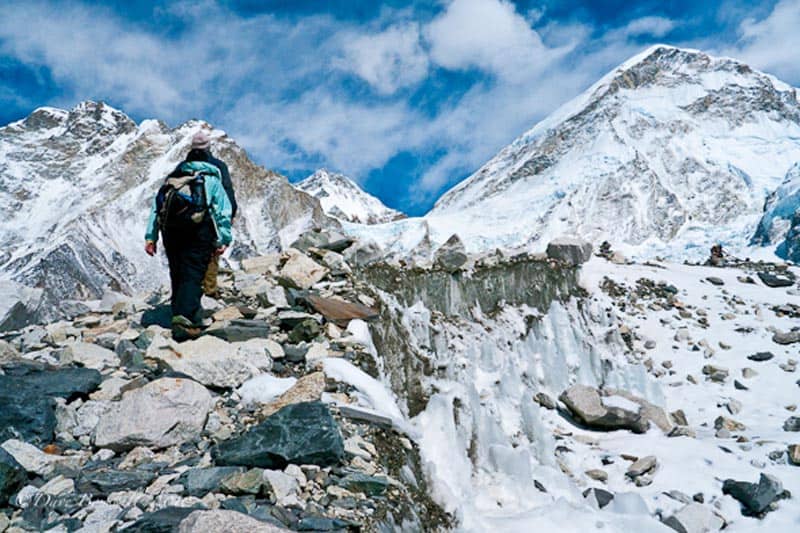
There are no ATMs in Lukla or Namche Bazaar. Exchange rates are also very dismal so bring rupees with you at least $200 worth.
2. Pack your own tea
Tea is very expensive on Everest and it is cheaper to buy hot water and use your own tea bags. Bring a variety of teas as well for more enjoyment. See our full Everest base camp packing list
3. Buy your gear in Kathmandu
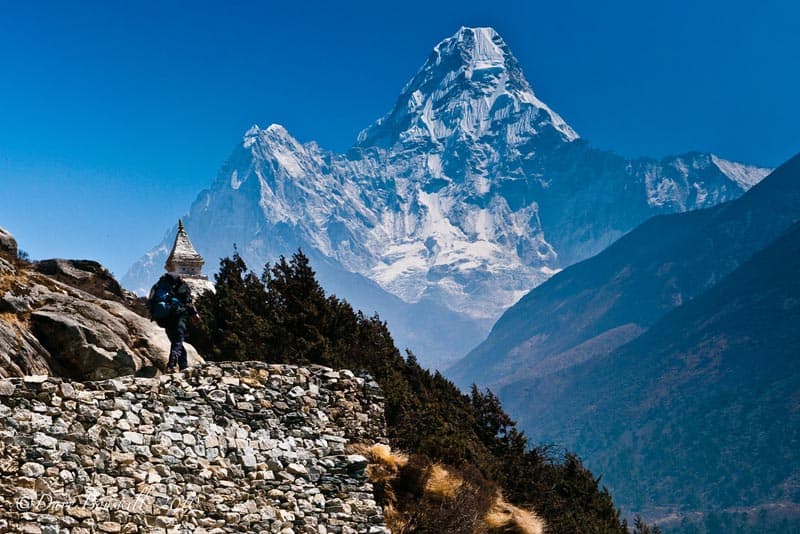
Trekking poles, hats, gloves, socks, down jackets, sleeping bags, chocolate and even medications can be bought in Kathmandu. Everything is cheap cheap cheap. There are fake brand names as well as good quality authentic North Face, Mountain Hardwear, and Marmot clothing at discount prices.
There are also authentic stores for proper mountaineering equipment. Mountain Hardware and North Face authentic store that offers great deals. Everything you could possibly need to climb to Everest Base Camp is available in Nepal. If you need it or forgot it, you can get it.
4. Pack chocolate and any extra treats that you want
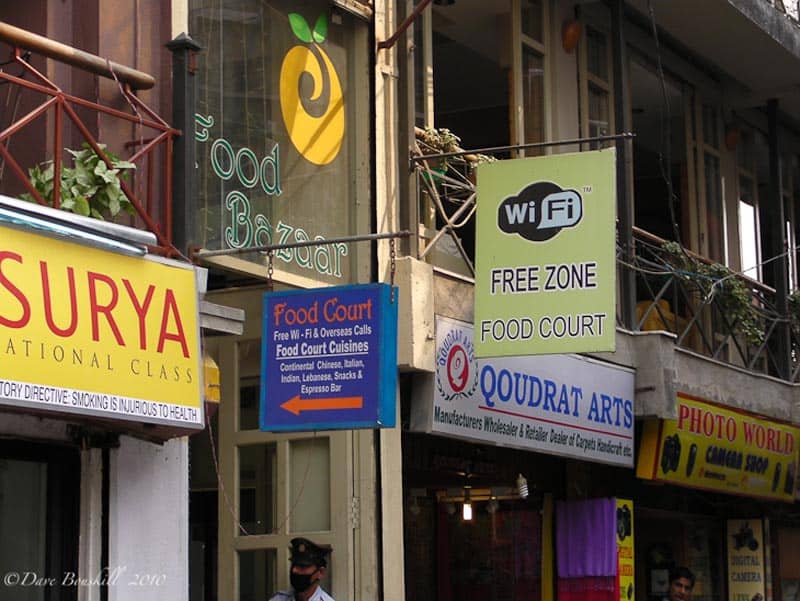
This is our very important tip for trekking to base camp! Pringles and chocolate are expensive on the trek to base camp and having your own little stash for treats that you bought in Kathmandu is a nice perk.
Sometimes when the altitude gets to us, the only thing that feels good going down is chocolate. I can’t stomach a full meal at times, but a little chocolate or salty chips makes eating easier. Once I have had a bit of chocolate and settle my stomach, I can eat a meal. Meals are very important to keep up your energy when trekking. If you don’t eat, it can lead to accelorating altitude sickness.
So, go to the shops in Kathmandu and buy a few chocolate bars, chips and trail mix to have for snacks along the route.
5. Book Your Trek with a Local Tour Company
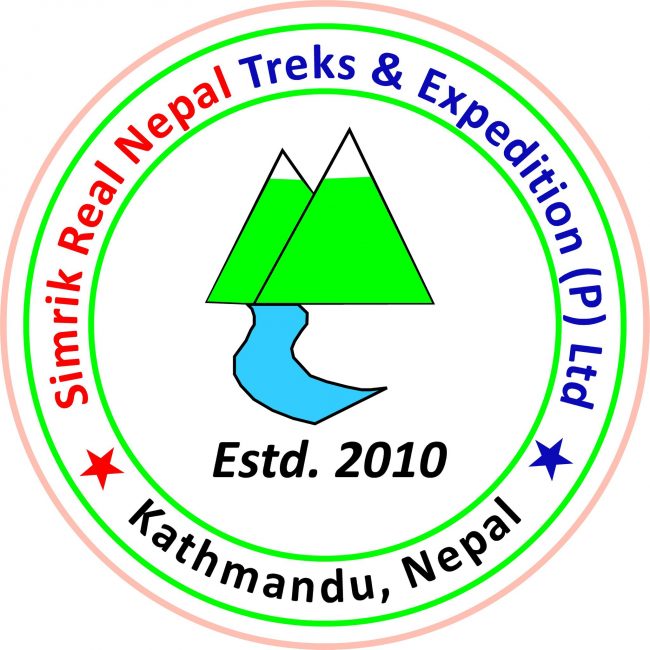
We trekked with local guide Dipendra of Simreak Real Nepal and he has become a great friend. We had a private trek at a fraction of the cost of booking with someone like Intrepid Travel. We didn’t have to pay the costs of international offices or payroll for executives and employees overseas. The cost for our Everest Base Camp trek went directly to the local economy and guide because we didn’t have to pay a middle man.
Dipendra took great care of us and we still keep in touch. With nearly 20 years of guiding experience in the Himalayas, you will be in good hands with Deep. He also hired a local porter from the Everest Region.
You can either book with him through his website, or if you have the time, you can search for tour companies in Kathmandu. The way we found Dipendra was by simply walking from trekking company to trekking company and interviewing people until we found someone we were comfortable with. As backpackers, we had the luxury of time.
Everest Base Camp Treks, Mustang, Annapurna and more with Simrik Real Nepal . Tell him Dave and Deb sent you.
6. Pack Powdered Tang or Gatorade
Pack some Tang which you can purchase in Kathmandu. Or you can bring Gatorade from home to flavour your water. Water can get pretty boring day after day but you have to stay hydrated at altitude.
Flavoured water helps you to drink more and is far more enjoyable than just water all the time. Plus, if you use an energy drink, you will replenish your electrolytes as well keeping you healthy on the Everest Base Camp Trek.
See our entire packing list: Packing List for Everest Base Camp
7. Purify Your Water
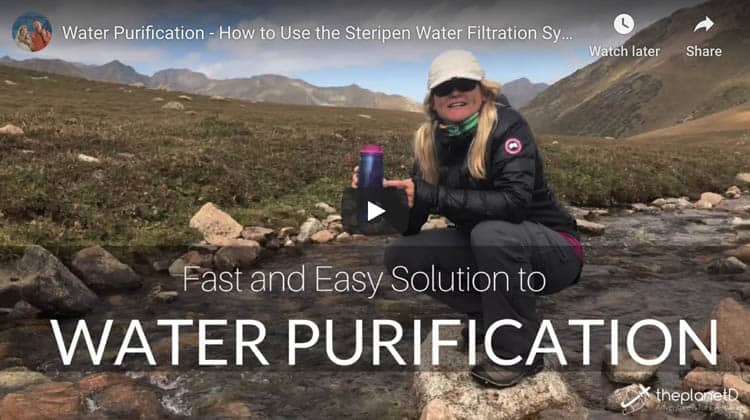
When we trek, we pack a steripen to purify our water. There are plenty of ways to purify water such as a LifeStraw, Steripen and water purification tablets.
Help save the environment and your wallet by not purchasing bottled water on the trek. There are filling stations along the route and places to get water. With the Steripen, we just fill up our water bottles as we you go for free anywhere. Steripens work great using ultraviolet light to purify water in 30 seconds.
8. Pack a paperback book
Trekking to base camp takes several days and it can get a little boring at times. You may only have the energy to lay in bed and read a book, so bring a good one. You can buy books in Kathmandu and at Namche Bazaar.
We recommend Lonely Planet’s Trekking in the Himalayas. and National Geographic’s Everest Region Adventure Map
9. Pack an Everest Region Map and EBC trekking Guide books
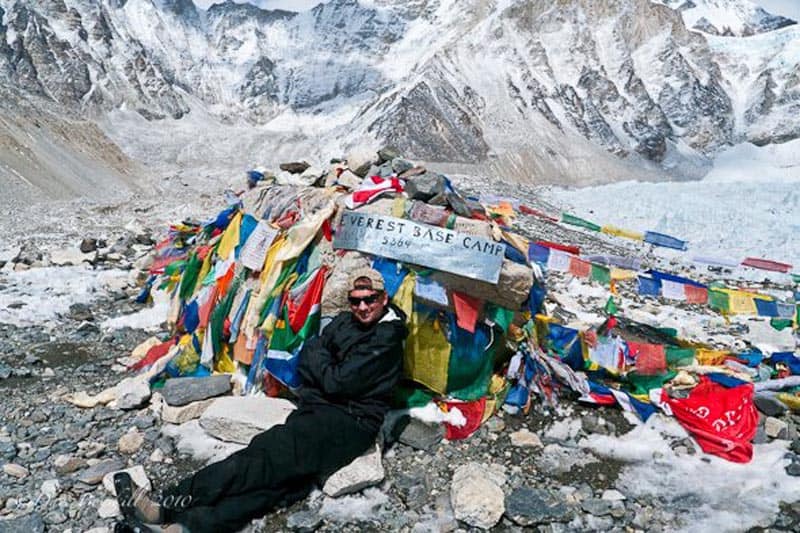
You will want to reference regularly to see where you are and where you are going. Plus, having an Everest Base Camp Trek guide book offers valuable advice for checking altitude symptoms and illnesses. Plus, you’ll want to read about what to look out for on your route and what to expect each day.
10. Pack Handi-wipes
You won’t be showering much showering muchon the Everest Base Camp Trek. Namche Bazaar will be one of the last places you’ll find a hot shower. That you will have to pay for by the way.
But don’t worry, you won’t be alone, nobody showers often on Everest, and we all smell.
Showers are not very appealing at -10 degrees Celcius. Especially when showers are at higher altitudes in cold temperatures and all you have is a bucket of cold water. So you can go for days without proper washing.
Handiwipes and hand sanitizer at least helps keep you healthy. And the handiwipes feel so good to wipe those sensitive areas. Follow that with a sprinkle of Gold Bond powder and you’ll feel fresh and comfortable. We like Gold Bond Powder over baby powder as it is medicated helps relieve itch, rashes and sticky skin.
11. Book the Best Seat on the Flight to Lukla
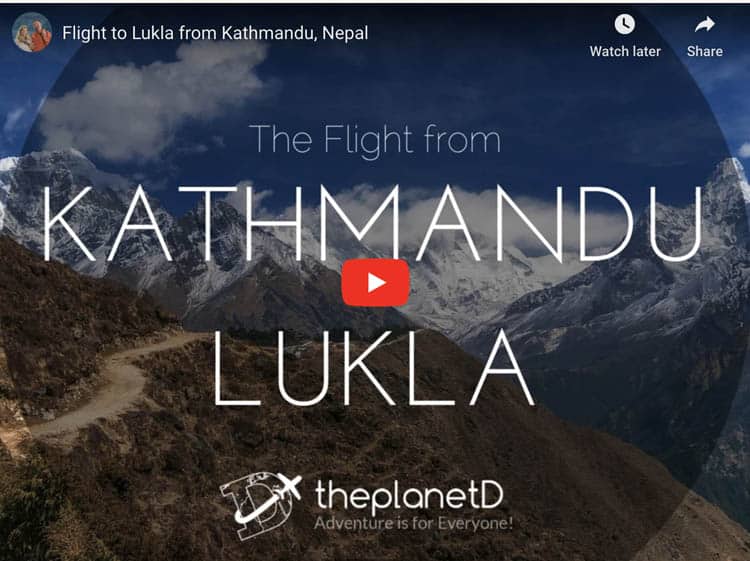
When flying to Lukla from Kathmandu, sit at either the front or back of the plane on the left-hand side. These offer the best views of the mountains .
The Himalayas are on the left and the front and back are not obscured by the wings of the plane. Sit here for your first glimpse of Mount Everest before your trek. It will help to build the excitement and the view is awe-inspiring.
12. Don’t eat meat after Namche Bazaar
Meat is carried up the mountain. They do not kill the animals on site. Sherpas trek the meat in for days and it is not guaranteed to be fresh.
13. Don’t Fear the suspension bridges on the EBC Trek
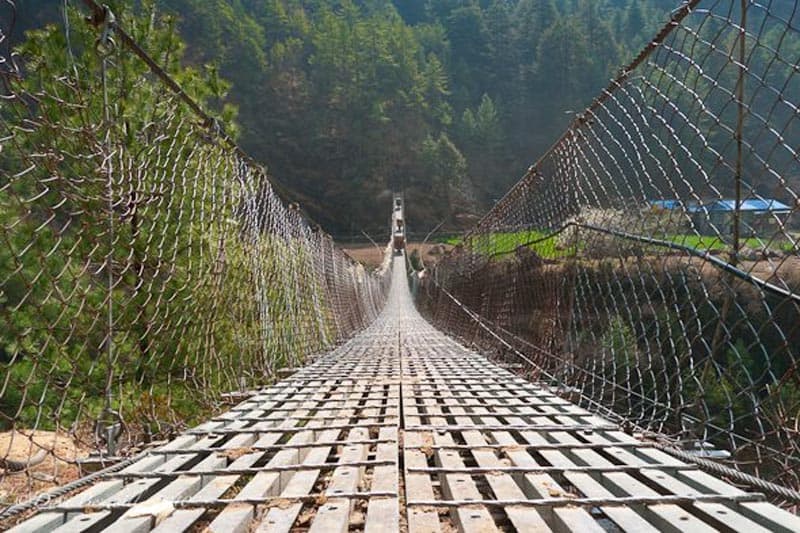
Ok, this may seem like a weird tip, but I had heard about the bridges to Everest being terrifying and freaked myself out. They are safe and in great condition.
I actually enjoyed walking along the bridges and the gorges. It was beautiful. I think that years ago it was scarier when the bridges were rickety, but now they are well made and maintained.
14. Give Yaks and Sherpa’s the right of way at all times
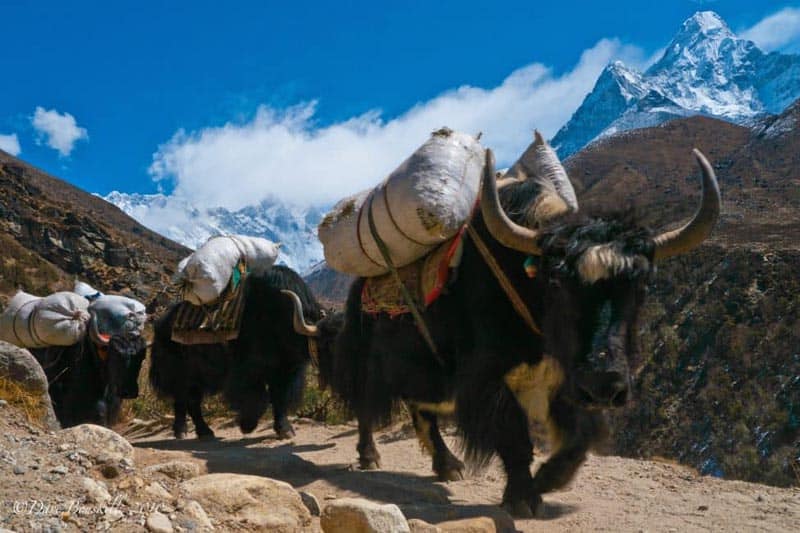
When a yak train comes, move to the mountainside to get out of the way. You don’t want to be nudged off a cliff by a yak. I cannot stress this enough. Do not stand on the ledge side of the trail on the trek. You could be knocked off the side of the cliff.
Sherpa’s and porters work hard on Everest, they are constantly taking supplies up and down the mountain. Help make their life easier by staying out of their way.
15. Keep batteries close to your body at all times
Electronics lose juice quickly at altitude and in the cold. Camera batteries and cell phones will go dead quickly during the day, so keep them close to your body and under your jackets and coats when trekking. The cold drains batteries quickly, extend their life by keeping them warm.
At night, sleep with them in your sleeping bags. So they keep their charge. And then put them close to your body as soon as you get dressed to keep them warm. Your body temperature will keep batteries charged.
Cost of Charging Batteries on Everest Base Camp Trek
- Charging batteries is very expensive per hour ($5-$10 per hour)
- Costs for charging batteries near or below Namche Bazaar 100-150 NPR/hour
- Closer to Base Camp 300 NPR/hour
16. Pack a Portable Power Bank
Pack a couple of portable power banks to charge your electronics. We like a power bank that has at least 20100mAh Portable Charger with Dual USB Ports. That way you can charge two things at a time and you will have at least 4 charges.
We also portable used solar chargers that we attached to our daypacks when trekking and the sun charged them during the day, so as our power banks rand out of juice, we had a back up with our solar chargers.
1 7. Stay Overnight at Tengboche
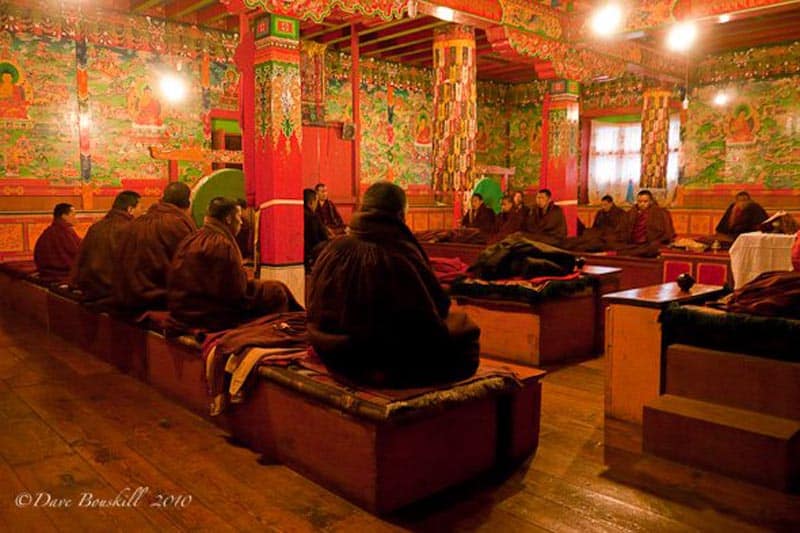
When you arrive at Tengboche, make sure to go and see the monks chant at 06:00 am and 15:00 pm, it is very cool. A visit to the monastery is a nice break from trekking to give your mind a break and listen to the music of the monks chant.
It clears your senses and lets you relax for the day ahead. It is also an incredible cultural experience. Every climber of Mount Everest stops at Tenboche Monastery to be blessed by the monks.
18. The best views of the Himalayas are in the morning (at least when we were there)
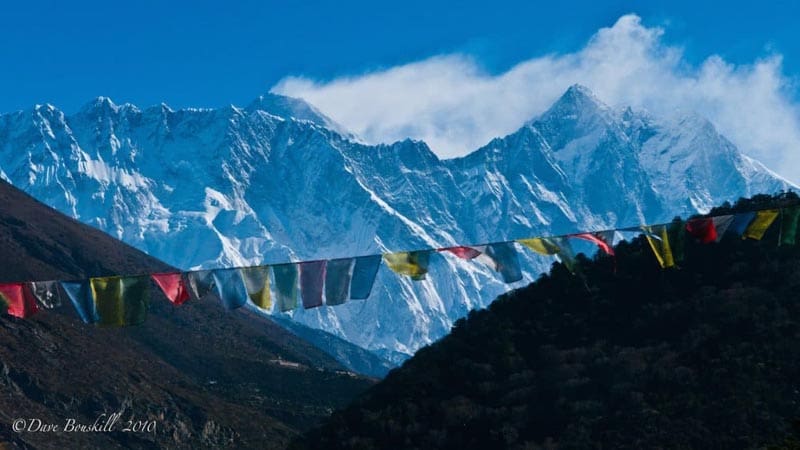
The clouds roll in quickly and obscure the panorama views of the mountains on the Everest Base Camp trek, so take your photos early in the day..
You can see Mount Everest from a few points on the Everest Base Camp trek and it is an incredible site.
From Namche Bazaar and at Tengboche are two awesome views so make sure to ask your guide to show you. In Namche Bazaar, you have to trek to the Mount Everest Hotel Lookout on your acclimatization day so don’t skip this and go see it. Plus, you’ll see all the other 7000 meter peask in the region as well.
The other amazing view of Everest Base Camp is from Tengboche. Sir Edmond Hillary spent time at Tengboche to survey Everest because it is such a clear view.
So before you leave Tengboche, go to the Everest lookout point and take your photos early for memories to last forever.
19. Best Places for Lunch Before Namche Bazaar
Stop for lunch at Jorsale just past the suspension bridge for lunch before reaching Namche Bazaar. It is the final place for any food or water until Namche which is 2 hours straight up!
Plus, it is a beautiful scene and the weather will probably the warmest balmiest weather you’ll have. Sitting in the sun while enjoying a good meal will give you the energy you need for your energy for this climb.
20. Go shopping in Namche Bazaar
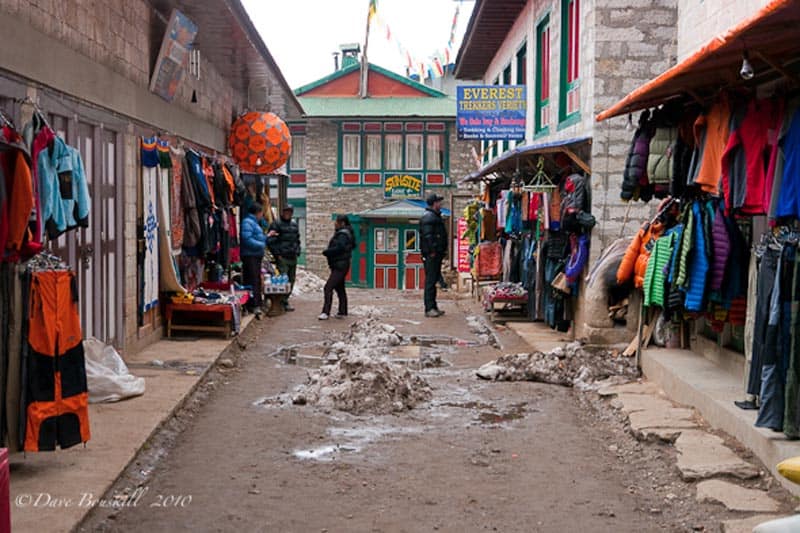
We found some great deals that rivaled Kathmandu prices contrary to popular belief. We bought most of what we needed in Kathmandu, but we noticed we needed a few more things while trekking to Everest Base Camp.
- Booties – We bought down booties to help keep our feet warmer at night.
- Sherpa Hats – We found that we didn’t pack warm enough hats by the time we reached Namche Bazaar and got a great deal on Sherpa hats.
The Sherpa Store was one of our favorite places to shop in Namche Bazaar and a portion of the sales go to help the Sherpas and Porters in the Everest Region.
21. Take your time each day
It is not a race and nobody is judging how quickly you get up the hill. Acclimatize properly, drink plenty of water, and if you need to take an extra rest day do it. The great thing about booking locally and having a private guide is that our trip was very flexible. We didn’t have to follow a group tour.
Nobody is going to ask you how long it took you to get to Everest Base Camp when you get home, they are just going to be amazed that you did it.
Your guide and porter will not mind if you hire them for an extra day or two. They will be glad for the work. Treks are flexible on Everest if you book in Kathmandu or when you arrive in Lukla, so skip booking that organized tour at home and go local.
22. Give yourself a few days after the trek before you have to fly home
Flights were delayed from for 3 days near the end of our trek. We heard rumours of long delays while trekking down the trail and we were worried that we would be stuck in Lukla for a few days.
For us, it didn’t matter because we were staying in Nepal for a few more weeks, but many people book flights home from Kathmandu immediately after their trek.
If you are stuck in Lukla for 3 days waiting with no way out, you are not going to make your flight home. There are many people who had to flight booked home the next day and missed their flight.
23. Everything you need for Everest can be bought in Kathmandu
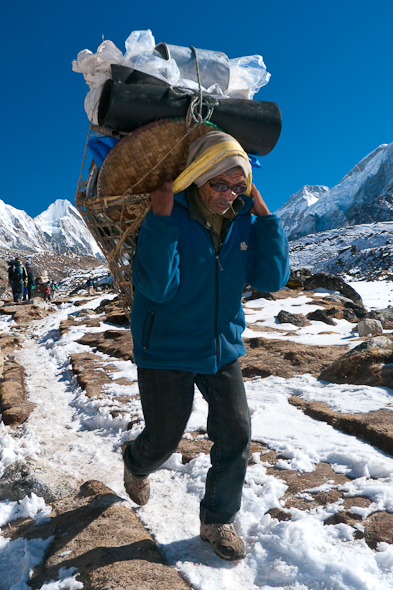
From Tang to tea and from medication to books and maps. Don’t stress too much if you forgot something at home. Whatever you need for trekking to Everest can be bought in Kathmandu.
We had been traveling around South Asia for several months before our trek to Everest Base Camp and didn’t have any gear. We bought everything in Kathmandu except for our trekking boots.
Boots should be very well worked in before trekking to Everest. You don’t want to ever climb or trek in new boots.
24. Pack a good first aid kit
The one thing you will need to have stocked on the trail is a good first aid kit. Days are long and unless you are in Namche Bazaar and possibly another village or two, first aid medication and equipment will not be readily available.
What to Pack in Your First Aid Kit
- Diamox is a must for altitude symptoms. Follow the directions and take 1/2 of a 500 mg tablet twice a day.
- Decongestants
- Advil or your choice of pain reliever
- lip balm and sunscreen is a must.
- Nasal lubricant – I had a woman give me salve for my sinuses to moisten them. My nasal cavities dried out and I suffered from severe nose bleeds which were quite scary. I will always have a lubricant for my nose from now on.
- Moleskin and Bandaids – Blisters are a real problem
- antiseptic cream
- alcohol wipes
- See our full travel first aid kit – Packing a Travel First Aid Kit For Long Term Travel
25. Pack Light and Smart
For our packing a list for Everest trekking, check out tips here at Packing List for Everest Base Camp Trek
26. Bring two pairs of sunglasses
I had a pair of sunglasses break when climbing Mount Kilimanjaro and it could have easily happened on Everest. At high altitudes, snow blindness is a high possibility so you don’t want to take the risk of not having protection for your eyes.
In addition to sunglasses, pack a peak hat as well as the sun reflects and comes in from all directions. It helps to protect your face from getting burned and offers extra protection for your eyes.
27. Respect the local culture
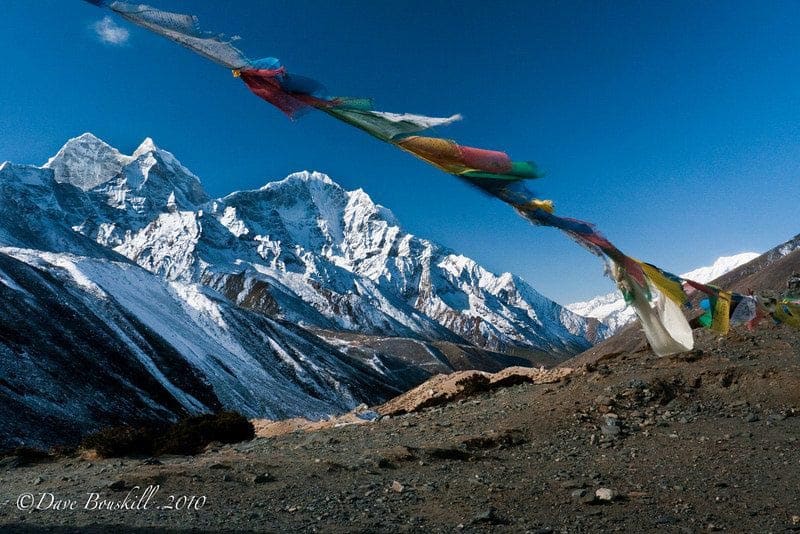
When trekking to Everest Base Camp, prayer rocks, prayer walls, prayer wheels and prayer flags are meant to be kept to the right at all times. You walk to the left and religious symbols are on the right. Meaning you are in the right hand of good. It is a custom to follow what the local people believe.
Also, ask before people taking any photographs, many people do not want their photos taken and it is their right. Respect their wishes.
28. Braid your Hair if it is long
If you have long hair, put it in a braid early on in the trek. I walked with my hair down wearing a hat and a few days in I had full-on dreadlocks by the end of the trek.
If I would have put it in a french braid or a couple of braided pigtails at the beginning of the trek, I would have saved my hair and not have had to cut off four inches after the EBC trek!
29. Hire your porter or guide in either Kathmandu or Lukla
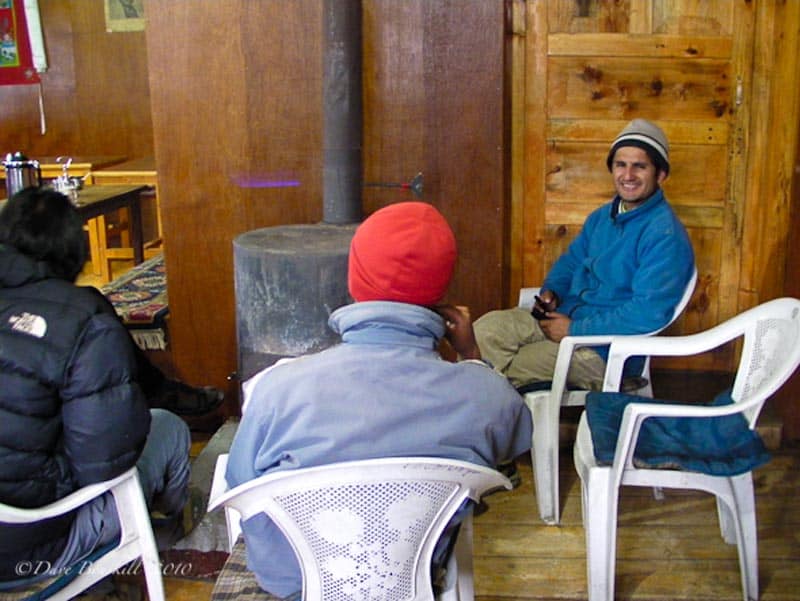
Prices are expensive when you book from your own country and if you book your guides in Nepal, you can be sure that more money is going directly to them as opposed to large corporations.
There are many porters and guides that will meet you at the plane when your flight arrives in Lukla that are very experienced and capable. Plus, you have the added bonus of being able to interview them.
If you book a trek once you arrive in Lukla, you can save money by not having to pay for their flight from Kathmandu. You are taking a chance, but if you have time, you can save a lot of money.
We climbed Dipendra who is based in Kathmandu. He hired a porter in Lukla, so we saved on a flight of our porter. You can book tours with Dipendra at Simrik Real Nepal
30. There is free wifi in Lukla and Namche Bazaar
If you want to bring your laptop you can use it on the trek. You can always leave gear at a teahouse in Namche Bazaar and pick it up on your way down.
Internet is very expensive up on the mountain.
- Lukla wifi location – Internet at “Starbucks” Coffee
- Namche wifi location- Everest Bakery
- Regular costs of Internet with slow connections – 10 NPR/minute below Namche Bazar 25 NPR per minute above Namche Bazaar
- (72 NPR = $1 USD)
31. Relish the experience of the EBC Trek
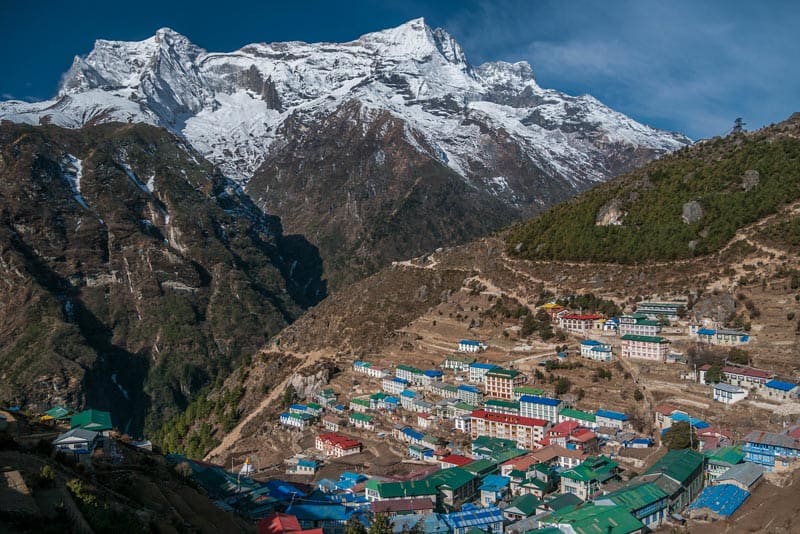
Climbing to Everest Base Camp is one of the most rewarding and memorable experiences you will ever have in your life. Yes, you may be tired and may suffer a bit, but be sure to take a moment and soak it all in.
You are one of the few lucky people in the world that gets to experience this, enjoy every moment and appreciate every moment you can.
Do you have some helpful tips or advice to climb to Everest Base Camp or even some things that you have learned from other treks that you have done? We would love to hear them.
Read More About Everest Base Camp Trekking
- Everest Base Camp Trek – All You Need to Know from Start to Finish
- Remarkable Everest Base Camp Trek in Photos
- Flight to Lukla – A Scary Thrill Ride to Everest
- Packing List for Everest Base Camp Trek
Check out More of Nepal and the Himalays
- Nepal Travel Guide
- Top Places to visit in Kathmandu, Nepal
- Where to Eat in Kathmandu – Eight Great Spots to Indulge After Your Trek
- 18 Things to do in Bhutan – A Comprehensive Guide of What Not to Miss
- Bhutan Trek to Laya – A Himalayan Adventure to the Remarkable and Remote
- 24 Reasons to Travel to Tibet in Photos
- 32 of The Tallest Mountains in the World by Continent
Travel Planning Resources
Looking to book your next trip? Why not use these resources that are tried and tested by yours truly.
Flights: Start planning your trip by finding the best flight deals on Skyscanner
Book your Hotel: Find the best prices on hotels with these two providers. If you are located in Europe use Booking.com and if you are anywhere else use TripAdvisor
Find Apartment Rentals: You will find the cheapest prices on apartment rentals with VRBO .
Travel Insurance: Don't leave home without it. Here is what we recommend:
- Allianz - Occasional Travelers.
- Medjet - Global air medical transport and travel security.
Need more help planning your trip? Make sure to check out our Resources Page where we highlight all the great companies that we trust when we are traveling.
You May Also Like
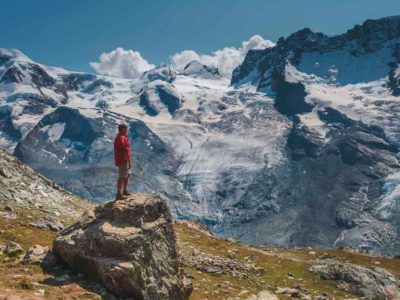
30 Beautiful and Best Hikes in the World
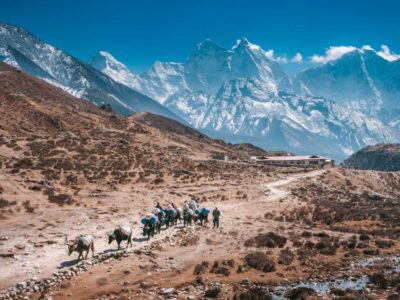
Everest Base Camp Trek – Ultimate Guide For 2024
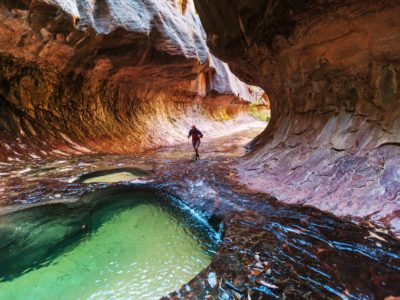
24 Best Hikes in the USA to Add to Your Bucket list
About The Planet D
Dave Bouskill and Debra Corbeil are the owners and founders of The Planet D. After traveling to 115 countries, on all 7 continents over the past 13 years they have become one of the foremost experts in travel. Being recognized as top travel bloggers and influencers by the likes of Forbes Magazine , the Society of American Travel Writers and USA Today has allowed them to become leaders in their field.
Join thousands of others who get our monthly updates!
Leave a comment cancel reply.
Save my name, email, and website in this browser for the next time I comment.
95 thoughts on “Tips for Planning and Trekking to Everest Base Camp”
I am somewhat of a newbie to blogging. So with that being said, I am very glad that I found this blog post. I plan to stay connected to your blog. Can’t wait to see what you’re going to write next. Thanks
Number one on most people’s wish to make Everest base camp trek. Mount Everest trekking is one of the fabulous trekking routes in the world. Thank you so much for sharing your great blog. keep sharing, your positivity is infectious.
great blog, very informative, from now onwards would keep in mind all things while going for trekking .
Fantastic blog!Love it!!
Can i have a phone or email address for the local guide please
Sure. His name is Dipendra and you can reach him at [email protected] or +977-01-4891126. Let him know we sent you 🙂
Hello. Thanks for tips! They are really helpful. I have to take my laptop, I will need it after trekking, but to go up with that will be very hard for me. So, Im thinking to leave it somewhere in Namche. Could you please give a little info about the place where we can leave some of our stuff in Namche Bazaar? Thanks in advance!
Well, travelers should rely on the experience and even better- tips. Really enjoyed how travelers are presenting Everest and what to expect during the trekking.
You guys are doing great jobs and thanks for visiting Nepal. We love you guys.
Very Good advice and briefing about Everest Base Camp Trekking. Nice Pictures.
Hi! We did the Everest Basecamp trek with a guide and porter in May last year and were really excited. Although very exhausting passages had to be mastered, it has paid off in any case! Your tips are great. Can confirm similar experience, however, we noted, that in Namche Bazaar are ATM’s available and a bank is operating at Lukla (exchange rates of course apply).
Awesome lists! loved it!
These 30 tips are wonderful. Thanks for sharing them here. It would be always great to go on a trek with amazing trekking equipment so that the trek becomes memorable. Keep up the good work!
Cheers, Team Mutterfly
thanks for the detailed info of Everest Base Camp Trekking. I am planning to hike for coming March so definitely, I will take care of your trip.
Adventure Gives you full of enjoy of your soul. do it once in your life time. Trekking to mother earth in to Mt Everest is life time adventure. thanks for your proper information.
Thank you so much, Dave & Deb, to sharing the great article about Everest Region all in details.
nice info, 21 years before we did same trekking from Jiri, it was the long and nice trek to Everest base camp.
Really good advice for the Everest Base camp Trekkers in Nepal. Your Experience is great… please follow this instruction it will be good for u
This is wonderful tips for trekking to EBC. Thanks for the post.Very Helpful !!! Just don’t miss to climb Kala Patthar to see the scenic views of Mt. Everest.
Very Good advice and briefing about Everest Trekking. Nice pitures
Thank you so for theplanetD for such a great information with lifetime experience of Everest Base Camp Trek. This is the place where we born and work long time as a trekking porter and became trekking guide. This mountain region is everything for us. If you wanna make this trip then might be we will be your partner; see more on http://www.communitytrek.com/trek/everest-base-camp-trek/ Thank you.
Very helpful and useful tips, going in May 2014 and can’t wait.
This is an interesting tips for the people wish to travel in EBC. Being part of travel industry, i am well aware of these point but sometime we only realize the necessity during our travel expedition. I will keep sharing your article with our customer who wish to go for EBC trekking.
Great tips: we recommend to have safety back up like having a Portable Altitude Chamber ( PAC) a life saving device in case of Acute Mountain Sickness ( AMS) along with medical trained guides: seen many rescue helicopter flying over. Details: http://www.mountainmonarch.com
We are leading Nepal Hotel Booking Agency, Nepal Hotel Booking with Hotel Booking in Nepal. Hotel Booking in Nepal. No Booking fee Pay at check-out time
Thank you for Your Excellent Article !
This tips definitely helps to everyone who are planning to Everest base camp trek. Many thanks again !!!
Thanks for this great post!
We plan to arrive 11.Oct 2013 in Lukla, therefore peak saison. Is it also possible/easy to find a porterguide in Lukla during peak saison? I don`t want to find myself without porterguide as we plan to do the three passes trail.
The agencies ask for 20-25$ per day for a porterguide (plus flight!). I would prefer to pay less and give a really good tip directly to the porterguide at the end of the trip. What I found on the internet the rate should be around 8-15$, is this correct?
Hi, how big was your group when you trekked? Did you have problems with other trekkers? Also, do you think it’s safe for a women to to travel alone to Nepal?
Your blog is very interesting and informative. I already bookmarked it in my browser. I especially like that you both seem to be nice and down-to-earth people. I read other blogs/reviews about Everest Base Camp trek where I read nothing but complaints.
Hey Vanessa, it was just Dave and I trekking with Deep. I think I have his link in this post. If not, I’m going to add it so that people can get in touch with him. Traveling alone was probably cheaper than going in a large group and we had so much fun just being together. The great thing was, you’re never lonely because you meet up with people at night at the teahouses where you stay. We honestly have no complaints.
Nepal is the best destination for trekkers. The sites and regions in Nepal are full of adventures for adventure seekers, spiritual trekkers and nature lovers. Trekking can be one of the most exciting experiences in Nepal to develop insight, to gain knowledge and to have thrilling adventures. Nepal is popular in the world for trekking with varieties of options to stay in this small mountainous country.
Trekking in Nepal is recently advancing although it has been continue from ancient time. Nepal has some of the unique features like ancient monuments, unspoiled cultures, challenging mountains, unexplored areas, fantastic beautiful sites and so many preserved heritages. Trekkers come to visit to explore and experience these elements while staying in Nepal. Mountaineering and high altitude trekking are widely preferred treks in Nepal. Spiritual and religious pilgrimage trekking are also equally increasing.
newly opened the Ganesh Himal Ruby valley trek is famous for diverse culture and beautiful natural scenery. Ganesh Himal Ruby valley trekking route crosses the three passes, Ruby valley and three Kunda of the Ganesh Himal region. On the way there are several villages of different ethnic people such as Tamang, Gurung, Chhetri and Brahmin where you where you can known and experience the diverse culture and way of life of different ethnic people. There are other attractions of Ganesh Himal Ruby valley trek like Buddhist monasteries, Hindu temples, calm ponds, stunning glimpse of numerous beautiful mountains of Annapurna, Langtang, Ganesh Himal and Manaslu regions, different species of herbal plants, cheese factory, beautiful landscapes, crystal, ruby and zinc mining, different species of birds, beautiful forests including rhododendron and different types of rare and non rare wild animals such as Thar, Ghoral, barking deer, Red pandas, snow leopard, Bear, Tiger, wolf, pheasant, many kinds of monkeys and musk deer . During Ganesh Himal Ruby valley trek you will get the best natural and cultural experiences. further more http://www.trekkingtoeverest.com/tripDetail/106-Ganesh-himal-ruby-valley-trek.html
Ganesh Himal Ruby valley trek is famous for diverse culture and beautiful natural scenery. Ganesh Himal Ruby valley trekking route crosses the three passes, Ruby valley and three Kunda of the Ganesh Himal region. On the way there are several villages of different ethnic people such as Tamang, Gurung, Chhetri and Brahmin where you where you can known and experience the diverse culture and way of life of different ethnic people. There are other attractions of Ganesh Himal Ruby valley trek like Buddhist monasteries, Hindu temples, calm ponds, stunning glimpse of numerous beautiful mountains of Annapurna, Langtang, Ganesh Himal and Manaslu regions, different species of herbal plants, cheese factory, beautiful landscapes, crystal, ruby and zinc mining, different species of birds, beautiful forests including rhododendron and different types of rare and non rare wild animals such as Thar, Ghoral, barking deer, Red pandas, snow leopard, Bear, Tiger, wolf, pheasant, many kinds of monkeys and musk deer . During Ganesh Himal Ruby valley trek you will get the best natural and cultural experiences. Ganesh Himal Ruby valley trek is one of the best home stay trek routes of Nepal because during this trek you will go through the many villages of diverse ethnic people such as Darkha Village, Jharlang Village, Borang Village, Sertung village, Somdang Village and Gatlang village where you will get the taste of local foods, honey and wine. After short drive from Kathmandu Ganesh Himal Ruby valley trek starts from Dhading. From Dhading you will follow the route of many villages such as Darkha Village, Jharlang Village, Borang Village, Sertung village during this journey along with beautiful natural scenery you will see the diverse culture and way of life of many ethnic people. After crossing the Pangsang pass you will reach to Somdang village around this village you will explore Lari metals and Ruby mine. Finally you will reach to Syabrubesi via Gatlang village which is the typical Tamang village. Trek to Everest offer romantic, cultural, informative and scenic Ganesh Himal Ruby valley trek. We designed Ganesh Himal Ruby valley trek by including all the important villages and places of the region with minimum required days. This trek is also can be starts from Syabrubesi. During Ganesh Himal ruby valley trek, Trek to Everest provides experienced guides, good accommodation and foods.
further more http://www.trekkingtoeverest.com/tripDetail/106-Ruby-valley-home-stay-trek.html
Hi Dave! these tips are quite outdated and needs to be update. However you have included lots of things. But you need to change dollar rates, internet costs and to get flight from KTM-Lukla is very difficult and one should take care of this…
Thank you for all the great infos. Very helpful. I’m planning to trek to Everest Base Camp. I will definitely try to book it through Simrik Real Nepal Treks& Expedition Ltd. Simrik’s reasonable prices makes my dream come alive. 🙂 I can’t wait for the time to come.
Peace, Brigitta
Leaving on the 19 Mar 2013… so amped!
Really great advise! Me and my brother are planning to trek up Everest base camp when we go travelling this year but you hear a lot of stories that put you off! This has helped sway me though! One question though, how much is it typically to hire a Sherpa locally?
It would be about $18 a day for guide and $14 would be a porter. Please email us if you need more information.
Thanks for the update.
Love the down to earth tips (flavoring water etc). Need all the help I can get!
Any advice on minimum trip length to avoid altitude sickness? I got mild symptoms at 3000+m in South America but still want to try Everest base camp if I can.
Hi Marianne, just take your time. You will be flying in to Lukla and landing over 3000 metres so you’ll be feeling the altitude immediately. Take extra days to relax. There is no hurry to get up there and it’s nice to hang out at some of the tea houses for a day to relax, read and drink plenty of water. Aim for at least over 10 days. Good luck and have fun
thank you for that!
Thanks! We’re doing this next month, insha’allah, so it’s brilliant to have your list. Do you mean oral decongestants or something like a Vicks inhaler?
I would take that along, there is a good possibility of congestion. If I were to do it again, I’d bring a nasal lubricant. My sinuses dried out and I had a bloody nose a lot which ended up causing a lot of problems.
I noticed you wearing gators in one picture but you didn’t mention them in you packing list. Did you find they weren’t necessary? I really needed them on Kili for all the dust and am debating whether or not to bring them on EBC.
We didn’t find the gators to be needed but you never know. If you have different weather, you may find the snow to be deeper closer to Base Camp or even the trail muddier. We had them on early expecting dust and loose rock, but in the end we didn’t need them. gators are such a small part of the gear, that it wouldn’t hurt to pack them anyway since they take up very little space. Hope this helps.
This has been a very useful site for me. Thanks guys. After much contemplation while here in Kathmandu, I have decided to just go to Lukla and see how things rock from there. I will be prepared to carry my own stuff if required. Your site has given me some of the enouragement I needed. Cheers.
Have a great time! You are going to find Everest to be one of the most fulfilling experiences of your life.
We did two great treks with Simrik Real Nepal Treks & Expeditions – Everest Base Camp and Annapurna Circuit. They both exceeded our expectations. Dipendra, our guide, was wonderful. He was warm and friendly, yet professional. He took very good care of us, watching out for us at all times making sure we were safe and that we were enjoying ourselves. He knew the names of the mountains & the rivers, the animals & the birds. He pointed out things of interest along the way. His sharp eyes spotted a Musk Deer, a Paradise Pheasant (Nepal National Bird), and fresh paw prints of a Snow Leopard, all of which are protected and endangered species. His enthusiasm for and knowledge of the areas added excitement and interest to our journey. We had a very warm welcome and farewell at the Airport where we were met and taken to and from our hotel. I highly recommend Simrik Real Nepal Treks & Expeditions. In fact I would not trek with anyone else.
We had an amazing time trekking in the Everest region and I would like to thank everyone at Simrik Real Nepal for making it possible. Nothing quite prepares you for the beauty of the Himalayas until you arrive and see it for yourself, but I found the friendliness and helpfulness of the Simrik staff very pleasing. Before leaving they took the time to explain everything in detail so we would be fully informed of what we could expect.
“I would highly recommend anyone to experience what we did as it is an immense experience!”
I would highly recommend Simrik Real Nepal trekking company. I went trekking in Nepal last year with Dipendra, the owner of the company, and he was a fantastic and attentive guide. He made sure that our trek to Annapurna Base Camp went smoothly and provided delicious fruit salad even at 4000 metres! His knowledge of the area, patience, tireless energy, and ability to talk with us in English about all aspects of Nepalese culture was great. If you are planning to travel to Nepal and need a guide you will be in safe hands with Dipendra and his company.
we have just finished our trip of a life time. . . we had heard really amazing things about Nepal, and we weren’t disappointed. . . our trip was just one spectacular day following another, amazing vistas and wildlife sightings. Simrik real nepal treks & expedition (P) Ltd organised everything superbly, and looked after us from the second we arrived in Nepal to the second we left. We felt very at home and comfortable and easy. Dipendra is a superb guide, very professional, warm, friendly, reliable with much experience and a can do attitude . We would love to come back again an trek with him. And we would highly recommend Simrik Real Nepal Treks & Expedition (P) Ltd.
Nice Post and i liked it Nepal Trekking – MountFujiAdventure
Nice Post and i liked it
Rhododendron trek happening now.
Rhododendron trek in Nepal you may start beginning of March to still end of April then able to see rhododendron forests all the ways to famous Himalayan Viewpoint of Poon Hill in full bloom. Enjoy magnificent mountain views with Dhaulagiri, Annapurna, Hiumchuli, holly Mount Macchapuchare and Lamjung Himal.
Great info . I am 64 with plans to go to Everest base camp next spring. Have spent three years researching the trek and even though some apprehension about altitude sickness I am sure that other people my age have gone and not gotten ill.
I will be 64 next year. For the last three years I have been preparing[reading ,videos,attending lectures] for a trip to EBC. Lots of reservations about the possibility of altitude sickness Yet, this blog gives me a sense of comfort. As a physician I would not be so quick to use Diamox. Rather than that there are some alternatives like Advil and just common sense. It did cross my mind to search for seniors who have done the trek.
Really good advice for Nepal Trekking ! Those are some great tips for the Everest Base camp Trekkers in Nepal.
Good Blog. Its enjoyable to read.
i reading and nice blog..
Good job with the writing. Enjoyed it.
I enjoyed reading this blog. thankx !
Great list! But I’m not interested to do so. I’m afraid of heights and I can’t stand the cold! Even if its only climbing a ladder, my knees shivered!
I am always able to provide excellent service to my valuable clients according to Dave & Deb’s recommendation. I am standby in Nepal to serve Mount Everest Base camp Trekking for whole season of the year. Trekking Guide & Friend of Dave & Deb Deependra Simkhada (Deep) 009779849430866
Simrik Real Nepal Treks & Expedition (P) Ltd, Is one of the renowned and popular Nepal tour operators, organize tours, everest base camp trekking, other mountain expeditions and trekking in Nepal, Tibet, Bhutan and India. Established in 2008, our professional everest base camp trekking, other mountain trekking and mountain guides are at the top of their field with a decade of guiding and high altitude experience. Simrik Real Nepal installs new standards of services in the tour industry, have always been on the forefront of incorporating new ways to increase the comfort levels of it’s guests and giving them the best deals in the cheapest rates for travel and trekking in Nepal.
It was my good fortune in the life to be Guide of Dave & Deb for Everest Base camp Trekking.
hi, after reading this i really want to do it…i am from australia, do i just book flights to kathmandu and look for local porters/guides there…..what if i go there and they are all booked out? how much did you pay for the everest base camp trekking package?
your help will be priceless, thank you =)
warm regards michelle
When did you’ll do this treck? didn’t come across the dates?
Where do you book your flights to Lukla from? There doesnt seem to be that much information on this on the web. Can you just go to a tourist agency in Thamel or do you need to book at the airport itself?
Hi Rich, you can book a flight at a Tourist agency in Kathmandu for a flight to Lukla. Cheers.
Thanks very much!
as a Nepali i like this reference of the Mt Everest Base Camp Trek, thanks Dave and Deb, all the wishes from magic Himalayan country of Nepal and Nepalese family, regard simbir ghale
Hi Simbir, you have a beautiful country and we are honoured that you stopped by. Thank you and best wishes to you too!
How much did it cost to you do the trek?
It was under $1000 each. I am afraid that I can’t remember 100% exactly, but I’ll look through my records and see if I can find the price. Booking locally was very reasonable. When I look at the prices online today I can’t get over how much it costs and we only did this trek 2 years ago.
These information are very useful for my upcoming trek to Everest base camp thank you
Hey, i was just wondering is it advisable to wait until i get to kathmandu to book the trek and how much does it cost? I assume its a lot cheaper to book it when i get there but i dont want to arrive and have it all booked up!
Hi Conor, Yes, it is better to wait until Kathmandu. We know of a couple of guys that could give you a good deal. If we were to do it again, we’d fly to Lukla before booking a guide and hire once we land for the EBC Trek. There are a ton of porters waiting at the airplane each day ready and willing to take trekkers for a great deal. Take your time and interview them and see who is good at English and what kind of deal they’ll give you. It is much cheaper to book when you get there. A lot of people did it on their own as well, but booking a guide is cost effective. We didn’t have to worry about food or accommodation and when we talked to people that had to haggle and barter each day when they got into the next village, they ended up paying a lot. In comparison, I think we paid less for a porter and guide with meals and accommodation than the people that did it on their own and carried their own packs. Send us a message through our contact form and we’ll give you some information. Cheers.
This advice will help a lot.I also use this advice when i go for a Gorilla Trekking .again thanks.
Such valuable advice!Thank you so much,i’ll be going for the EBC trek next week.May i know the rough temperature above namche if you know please.Do i need a down jacket,or a fleece is good enough?
Really good advice for the Everest Base camp Trekkers in Nepal. Your Experience is great… please follow this instruction…
Thanks for the advice. I’m headed out next month to travel for a year and Nepal is a must hit destination for me but I’m worried about an Everest Base Camp trek. I tend to get altitude sickness when I ski (at much lower altitudes) and normally lose a day of skiing each trip. After I get past that one day I’m fine but the base camp trek has me worried. Did you see a lot of people with problems on your trek?
Hey Scott, Thanks for stopping by. Altitude sickness is a real concern on the Everest Base Camp trek. We had been to altitude before and had an idea of how our bodies would react. But we still took Diamox to help with the altitude. It seems to me that you know the symptoms and when it occurs. My advice would be to take it really slow and schedule in some extra rest days so that if you do get symptoms you can walk down a bit and then continue when you feel up to it.
Those are some great tips. But I have to say it – bring a book? I can hardly keep my eyes open after a day of tramping with my young kids here in NZ (LOL); well done for being able to read a book 🙂 .-= Merav | AllWays Rental´s last blog ..Give Your Senses a Boost of Dramatic Scenery and Chocolate =-.
Haha, Actually I think a book is better for inspiration while you are at home. It is better to save your energy while you are traveling
Excellent! We just went to EBC on the Tibet side. It definitely sounds much better on the Nepal side.
I don’t know Ninfa, I think that the Tibet side would be amazing! Far less people and probably more authentic? What do you think?
This trek is on my list too and I read your tips with an earnestness I usually reserve for grocery store labels (I am aergic to wheat). Thank you so much — your list is heartfelt, thorough and practical. Another reason why this is one of my all time fave blogs!
Thanks for this post, it’s useful for me but about travelling to south america, it’s also great 😉 __________________ Latino Guy Latino Portal
Great advice. Although, I think that some of it would apply to a lot of places such as bring a book or sunglasses, but the other stuff was interesting. It gave a good description of what it is like there with all the tips on giving Yaks the right of way and the tip on eating meat. .-= Steve´s last blog .. Sandboarding =-.
Very true Steve. Although I want to reiterate that we wrote to bring extra sunglasses. Our porters sunglasses broke and we lent him a pair. Snow blindness is very real up there.
Very very good tips! Great to know about sleeping with the batteries to keep them warm for longer life, and for #10, I definitely neglect showers at all times when doing anything related to outdoors, sounds like a fit! .-= Migration Mark´s last blog ..Rules of Engorgement: Burger Hut Nairobi =-.
Mark, we always seem to neglect the showers too. In Africa we went 6 days through the desert without washing and regularly miss our daily showers when doing anything sports related. When we came back from Africa we actually had a hard time getting back in the routine of showering daily.
Really good advice! I’ve definitely added this adventure to my “bucket list” – don’t know when I’ll get to it, but I will, and when I do I’m going to follow your advice to the letter! 🙂 .-= Trisha Miller´s last blog .. Review: Understanding Google Analytics =-.
Thanks Trisha. Glad to know that advice helped. We learned a lot during our two weeks up there and can’t wait to go back to tackle the 3 passes.
- Nepal Everest Treks Annapurna Treks Off the Beaten Path Short Treks Climbing Peaks Bhutan Bhutan Tours Bhutan Treks Snowman Trek Tanzania Kilimanjaro Climbs Camping Safaris Tented Camp Safaris Luxury Safari Camps Lodge Safaris Zanzibar Cruises Antarctica Cruise Galapagos Cruises South America Patagonia Chile Argentina Peru Ecuador North America Grand Canyon Alaska Jet Ski Yellowstone & Tetons
- Core Adventures Everest Adventures Kilimanjaro Adventures Patagonia Adventures Climbing Peaks Wildlife Safaris Multi Adventures Cultural Adventures Cruise Holidays Special Interest Fly Fishing White Water Rafting Amazon Jungle Adventure + Luxury Private + Groups Family Adventure Trips Team Building Trips Private + Charter Trips College Trips
- Everest Base Camp Packing List Lukla Flights Trekking Tips Training Patagonia W vs. O Trek Best of Patagonia Packing List El Chalten (Argentina) Kilimanjaro Route Overview Packing List Trekking Tips Training Ecuador Galapagos: Land vs. Cruise Galapagos Seasons Best of Ecuador Safaris Migration Safaris Camping vs Lodge Peru Inca Trail Tips Best Treks of Peru Antarctica Ship Options Tips for Cruising
- Meet the Team Why Book Contact Us
34 Tips for Trekking to Everest Base Camp
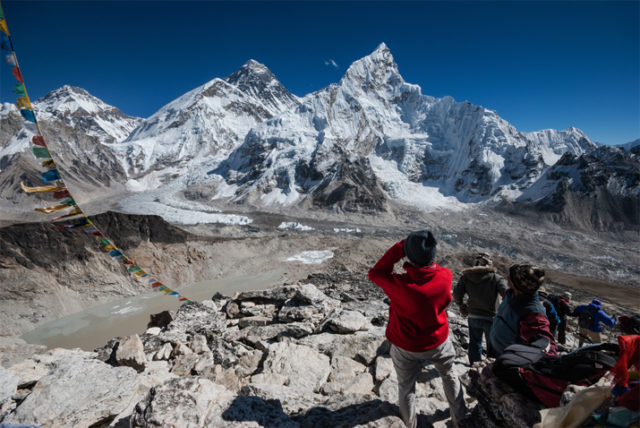
Are you considering trekking to Everest Base Camp? This trip is a journey of a lifetime for most people and can be both a challenging and memorable experience! Standing at the base of the Himalayas is breathtaking. You’ll see Everest soaring high above you against a vast, blue sky. At that moment, it will hit you—you’ve followed the footsteps of legends to one of the 7 natural world wonders.
The trek to Everest Base Camp is full of beauty and culture. You’ll wander through villages fluttering with prayer flags, explore the Nepalese culture, see the famous Khumbu Ice Fall, and finally stand at the base of the majestic Mount Everest.
Collectively, our local Everest Base Camp team has traveled to Everest Base Camp thousands of times. We’ve put together a list of tips for trekking to Everest Base Camp that will help you save time and money during the planning process and enjoy a smoother, more enjoyable trek.

34 Tips for Your Everest Base Camp Trek
Below, our Everest Base Camp adventure guides have pooled their tip tips, tricks, and travel hacks to help you plan and enjoy your trek to Everest Base Camp.
Tip 1: Budget Accordingly
Treks in the Everest Region are relatively affordable, especially when you consider most trips to this area last 14-21 days. This makes this grand adventure accessible even for the most prudent of budgeteers.
Your roundtrip airfare and trekking team will likely be your biggest expenses on the trip. Plan around $3000-$4250 per person. This includes:
- $1000-$1500 Roundtrip Airfare (learn how to save money on flights to Nepal in this article)
- $1400-$2000 Trekking team & all-inclusive trek accommodations (including guides, porters, fees & passes, flights between Kathmandu/Ramecchap and Lukla, tea house accommodations, and meals)
- $150-$200 Travel Insurance
- $200-$300 Cash for extra expenditures, food, & souvenirs
- $140-$200 Guide & porter tips
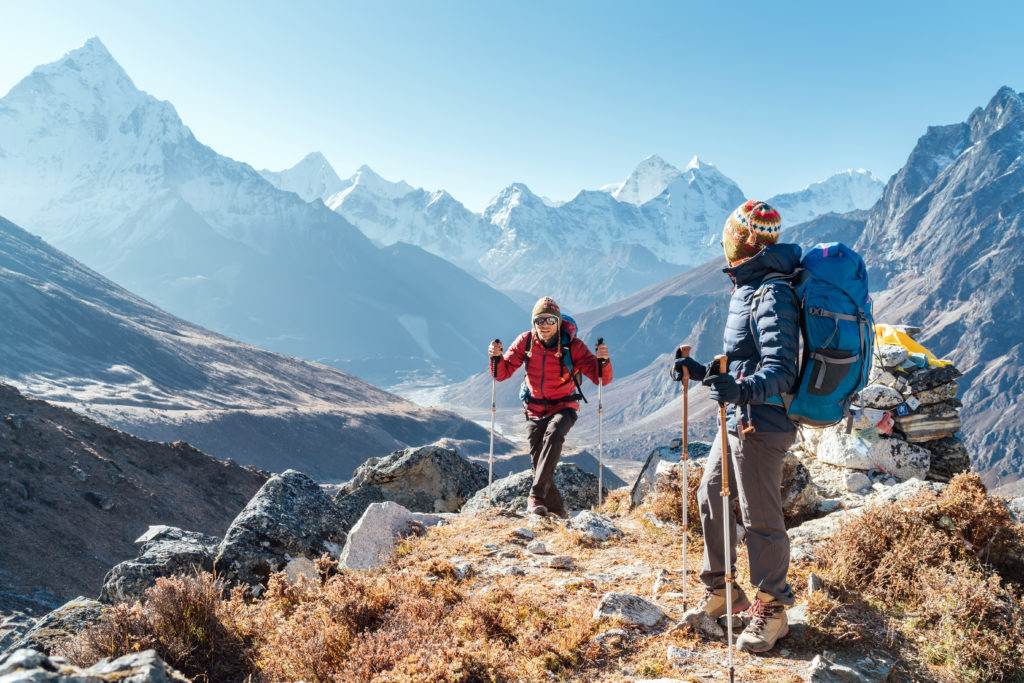
Tip 2: Know What to Expect from All-Inclusive Packages
Planning for all the moving pieces for a trek like Everest Base Camp can be tricky, especially when many of those accommodations may not have an easy way to communicate with ahead of time if you’re not local. Choosing an all-inclusive trekking company means everything is organized beforehand so you don’t have to wonder where you’ll sleep or worry about missing a flight.
All-Inclusive packages should include:
- Two nights of accommodation in Kathmandu (for before and after trek)
- Roundtrip airfare between Kathmandu/Ramecchap and Lukla where you will begin your trek
- Tea house accommodations during the trek
- Meals during your trek
- Airport transfers
- Everest trekking permit and TIMS (traveler security) card
- Guides & porters
- Local and government taxes
This package likely will not include:
- Accommodation for additional days you may choose to add unless agreed upon beforehand
- Last-minute helicopter transportation (this can be scheduled beforehand through your Everest Base Camp tour company—emergency helicopter transportation should be covered by your travel insurance)
- Snacks—trekking is exhausting so be sure to pack plenty!
- Tips for guides and porters—prepare for 10% of the cost of the trek
- Travel insurance
Tip 3: Choose a Reputable Trekking Company
Trekking with the right company can make or break your experience trekking to Everest Base Camp! Two of the biggest challenges with trekking in the Everest Region is the weather and the altitude. Weather can delay flights between Kathmandu/Ramecchap and Lukla for hours—or even days. Local Everest Base Camp trekking companies usually have very good relationships with the airports and can often handle these delays faster and more efficiently than single guides or individual trekkers can manage on their own.
Acclimatization is also very important on your trek, as you’ll be ascending to an altitude of 5,364m (17,598 ft). Some people are more sensitive to altitude than others, and there really is no training that can prepare you for that aspect of the journey (though we do recommend strength and aerobic training to help prepare for the physical exertion of the trek).
The best ways fend off altitude sickness are to have a good acclimatization schedule in place, catch symptoms early and adjust your trip accordingly, and to accommodate a fast descent if altitude sickness escalates. Experienced Everest Base Camp guides are well-trained and highly experienced in this area and in most cases can help the trekker make adjustments to overcome the symptoms and complete the trek—or help the trekker get down the mountain safely.

Tip 4: Choose a Trek Through Phortse
There are two primary routes to Everest Base Camp. The traditional or “Classic” route treks through Tengboche to Everest Base Camp. However, a little-known tip is to trek to Everest Base Camp through Phortse . This trek travels from Lukla to Phortse Thanga before reconnecting with the classic Everest Base Camp trail. The benefit of this route is that on your ascent you will skip many of the crowds often experienced between Namche and Tengboche. Instead, you’ll experience beautiful scenery that many trekkers do not have the chance to see.
Tengboche is best known for the Tengboche Monastery, which is why it is a popular route to Everest Base Camp. However, when you trek through Phortse, you will travel through Tengboche through your descent so you can still appreciate that memorable cultural experience.
Tip 5: Pick the Best Trekking Season
September to November is the most popular time to trek Everest Base Camp as the weather is best at this time. March to May is also a popular season as the weather is ideal and May is one of the warmest months of the year. This is also the time when Everest Base Camp climbers can see Everest Peak climbers at Base Camp. June to August is monsoon season which can make it very difficult to trek Everest Base Camp. December through February is cold, but it can be a great time to make the trek as the trails are virtually empty and the skies are generally sunny.
Tip 5: Train Ahead of Time
While trekking to Everest Base Camp doesn’t take the technical climbing skills required to ascent Everest itself, Everest Base Camp is strenuous and requires a good physical condition and endurance to complete—and enjoy—the trek.
We recommend doing several practice hikes, doing light strength training, and walking on an incline (treadmills work fine) while doing intervals on stairs (a stair-stepper machine works fine) until you’re comfortable walking at an incline for several hours at a time.
Tip 6: Break in Your Hiking Shoes
This tip for hiking Everest Base Camp probably goes without saying: Break in your hiking shoes beforehand. Starting your trek with chafed skin and blisters can seriously dampen your enjoyment during your journey. Make sure you break in your hiking shoes before you set foot on the Everest Base Camp trail. Blisters can be easy to prevent with the right preparation and equipment but can be difficult to heal and prevent discomfort with once they’ve formed—especially if you still have multiple days of trekking ahead of you.
Break in your hiking shoes by wearing them around the house or on errands for a week or two, then wear them on at least a couple hikes—the best breaking in happens off the pavement.

Tip 7: Prepare your Gear
The gear you use and wear the most is worth preparing and breaking in ahead of time. After all, an ill-fitting pack on the trail can make an otherwise wonderful trek gloomy! Choose a good, comfortable pair of hiking boots with ankle support. Make sure these do not pinch or chafe when you walk and be sure to break them in ahead of time (see tip above).
Also, choose a daypack that is comfortable to carry. Before leaving on your trek, practice carrying it on hikes with increasing increments of weight. You will also want to make sure you’ve worn your base layers before and that they don’t chafe or itch when you hike.
Some gear may be purchased in Kathmandu inexpensively. This area has a LOT of hiking gear shops, which helps keep prices low. We recommend purchasing items that require a great fit and breaking in ahead of time (such as thermals, base layers, and hiking boots). However, other gear and clothing can be purchased in Kathmandu for a great price!
Tip 8: Plan Extra Days at the End (Not Beginning)
If you’re planning to add any extra days to your trip, put them at the end of your trek—not at the beginning. The weather in the Himalayas often holds up flights from Lukla to Kathmandu. If your flight is delayed, having extra time as a buffer can help prevent missing your international flight back home.
Tip 9: Know Your Luggage Limits
When you book with an Everest Base Camp company, they’ll probably send you a packing list for Everest Base Camp as well as information about pack limits. The flight from Kathmandu to Lukla has strict weight regulations. Your main pack can only weigh 10kg (22 lbs) and your carry-on can only be 5kg (11lbs).
If you choose to trek with Adventure Hero, your main pack is the duffle bag we provide. This will be carried by your porters up the mountain. This will contain your sleeping bag, clothes, travel pillow or pillowcase, toiletries, and other supplies. Your carry-on will be your daypack, which will be packed with items you will need on the trail such as snacks, cameras, sunscreen, sunglasses, a headlamp, toilet paper, a water container, first aid/toiletry needs, etc. You can find a full packing list on our website.
Additional luggage not needed on your Everest Base Camp trek can be left at the hotel.
Tip 10: Prepare for Flight Delays
Although your professional Everest Base Camp Trekking Company will do their best to ensure your trip goes as smoothly as possible, the Himalayas have unpredictable weather that usually translates into flight delays for guests. In addition, Nepal is a developing country which often means communications between airports can be disorganized.
It is not uncommon for flights to be delayed for a few hours. In cases of extreme weather, this delay may be even longer. Prepare ahead of time for these delays. Schedule extra time between flights (see tip #8) and prepare with a book, snacks, and other comforts to make your wait less stressful.
Tip 11: Understand the Ramecchap Flight Diversion
While most flights to Lukla used to take off from Kathmandu, construction and flight volume at the Kathmandu airport has led to most flights being diverted to Ramecchap. You’ll know about this flight diversion ahead of time so your trekking company can prepare the 4-6-hour drive to and from the airport from Kathmandu.
Adventure Hero has a team member staying in Ramecchap to help make sure you get to your flights on time and to help arrange helicopter flights if preferred.
Tip 12: Enjoy Your Guides
One of the unique parts of traveling with a locally-based Everest Base Camp trekking company is getting to have a personalized view into the culture and customs of the Nepalese region. Your guide isn’t just there to show you the way up the mountain; they’re there to help make your trip more enjoyable and to provide you with information about the region and culture.
Tip 13: Purify Your Water
The water quality in Nepal isn’t the best, despite the glacial streams and lakes you’ll see. Bring a water filtration system and water purification tablets to avoid stomach bugs.
Tip 14: Ramp Up Your Health Habits
If you’re no stranger to traveling abroad, you probably already know to take extra precautions with washing your hands and avoiding tap water. On your Everest Base Camp trek, this is extra heightened since a stomach bug means having to trek several miles a day when you’re not feeling well.
Wash your hands and use hand sanitizer regularly. Make sure to purify your water with a water purification system or purification tablets.
Tip 15: Shower Early
Most water for showers on the trek will be heated by solar. This means you’ll have a better chance at hot water if you shower right when you reach the tea house instead of waiting until after dinner. Many people opt for using wet wipes on the trail instead of taking showers. This is because it can get quite cold in the tea houses, and damp hair can make you quite chilly!
Tip 16: Bring Cash
If you’re trekking Everest Base Camp with an all-inclusive tour company, you won’t have a lot of needs on your actual trek. However, there’s no denying that you may occasionally crave a stack of chips, a chocolate bar, or that you may have forgotten an essential toiletry item. There are shops in the villages along the trek, and you may even be able to find an ATM—but it is rarely in working order. Save yourself disappointment and hassle by bringing cash along for extra expenditures.
Tip 17: Stay Hydrated
This tip for hiking Everest Base Camp also probably goes without saying, but it’s important to stay hydrated on the trail. Even though you won’t be hiking in sweltering temperatures, hiking at this altitude and distance takes a toll on your body. Staying hydrated helps you keep your energy up while helping stave off altitude sickness. Often, when you’re not feeling well and aren’t in the “mood” to drink water, this is the time your body probably needs it the most.
If you don’t tend to be a water drinker, opt for tea or flavor your water with electrolyte tablets.
Tip 18: Bring a Thermos and Tea
This brings us to our next tip: Bring a travel thermos! While cool water is nice and hydrating, nothing beats some hot tea on the trek. It warms you up while also fulfilling the duty of providing hydration, which is essential for keeping yourself healthy and energized on the trail.
Tip 20: Set Bathroom Expectations
While the tea houses do a great job of offering a clean and comfortable place to stay while you’re trekking, the bathrooms in this remote and rugged area may surprise some visitors. Expect that the bathrooms likely won’t meet your standards of cleanliness, and plan to squat. These toilets often require manual flushing (pouring water from a bucket). You will also want to come prepared with toilet paper, hand sanitizer, and biodegradable wipes—some sinks are outside and very cold.
Tip 21: Bring Earplugs
You’ll be surprised by how comfortable the tea houses are and how well you sleep after a long day of trekking. However, the walls between rooms in the tea houses are quite thin and noise carries easily. If you’re a light sleeper, earplugs can help you get a good night’s sleep.
Tip 22: Avoid Ordering Meat on the Mountain
It’s wise to avoid eating meat on the mountain. The local culture forbids slaughtering animals in the area, which means any meat offered has been flown into Lukla then walked on the mountain, which means it’s unlikely the meat you eat will be fresh. Do yourself a favor on your trek and choose the vegetarian option whenever possible.
Tip 23: Bring Lots of Snacks
While all of your meals are included in an all-inclusive trek, you’ll have to carry your own snacks for the trail—and we recommend bringing plenty. Trekking is hard work! Give your body the fuel it needs by consuming calories along the trek. Combining protein and carbs is a great way to have a longer-lasting snack. Smart carbs like whole grains, fruits, or veggies will give you some fast energy while protein can provide you slower, more sustained fuel.
Tip 24: Bring a Treat
It can be tempting on a rigorous adventure trek to stick only with ultra-healthy snacks, but we’ve been on the Everest Base Camp trek enough times to predict that about halfway through we’re really going to be craving a chocolate bar after a long day of hiking. The villages along the Everest Base Camp trek have a small selection of snacks for these cravings, but they can get expensive and may not be the same brand or quality you’re accustomed to. It can often be worth it to prepare ahead of time with some of your favorite treats.
Tip 25: Be Open With Your Guides About How You’re Feeling
It’s important to find a balance while trekking Everest Base Camp of pushing yourself during this exciting challenge and being cautious about afflictions like altitude sickness. Keep your guide apprised of how you’re doing during the trek. If you have a persistent headache, let your guide know. They can help determine what may help ease your symptoms and help watch for signs that it may signify altitude sickness.
Tip 26: Know Your Headaches
A headache can be one of the first signs of altitude problems when trekking Everest Base Camp . Small headaches are common and should not worry you or keep you from trekking. However, you should mention any headache to your guide so they can better keep tabs on your wellness. If your headache gets progressively worse or you have other signs of altitude sickness, it’s time to stop ascending or even head down. Altitude sickness, when caught quickly, can be reversed fairly easily but can become serious if allowed to progress. In many cases, Adventure Hero can arrange additional days on the mountain for acclimatization when needed. ( Please see our Terms of Service ).
Tip 27: Eat Enough at Each Meal
We provide three meals a day on the trek and a hot drink with each meal. If you’re especially hungry, order the Dal Bhatt as this is served all-you-can-eat. This is the traditional Nepali dish that consists of rice, dal, a vegetable, papad (fry bread), and pickle. Here is a good video showing the typical food and menu options: ( View here ).
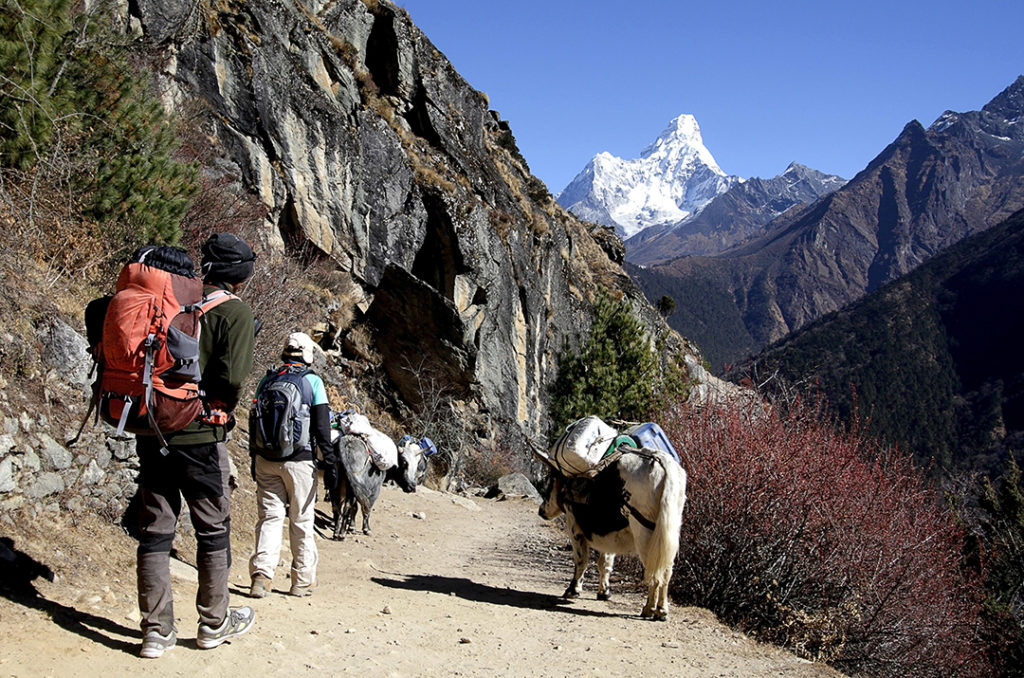
Tip 28: Don’t Carry Too Much
It can be tempting to overprepare when you’re trekking up the mountain, but it will make your trek more enjoyable if you’re not carrying too much weight on your trek. We recommend only packing your essentials in your daypack and keeping the rest of your gear in your duffel bag to be carried by porters.
Your daypack should include your valuables, prescriptions, extra layers, rain gear, water, camera, snacks, and sunblock.
Tip 29: Use Sun Protection
Since you’re hiking in cold weather, many people don’t think about using sun protection. However, at those high altitudes, sun protection is especially important. Not only do you have less atmosphere protecting you from UV rays, but a sunburn would seriously dampen your enjoyment of your trek.
Make sure to have good sunscreen for exposed skin, sunglasses to protect against sun glare, and a brimmed hat to protect your eyes, face, and neck from sun rays.
Tip 30: Take Care With Batteries
While cellphones, cameras, or other rechargeable batteries can be charged at tea houses for a fee, this is often very expensive, usually between $5-10 USD/hour. Batteries drain faster at colder temperatures, so you can extend battery life by keeping batteries or other electronics close to your body. Many trekkers choose to put these devices in their sleeping bags while they sleep to keep them warm during the night.
Tip 31: Brush up on Your Card Games
Bring card games with you on the trek and brush up on the rules of your favorite games before you leave. You won’t have modern entertainment at tea houses such as laptops, television, or (reliable) internet, so prepare to entertain yourself the old-fashioned way.
You’ll meet trekkers from all over the world at tea houses, and a favorite way to pass time is to play card games together. This may become among your favorite memories along the trek.
Tip 32: Trek Slowly & Steadily
If you’re fit and active, your first comment to your trekking company or guides may be wondering about the number of miles you’re expected to trek each day. You’re probably used to be able to cover more distance—faster—than you’ll be scheduled to do on the Everest Base Camp trek. However, this pace is intentional to allow for important acclimatization. If you’ve never hiked at these altitudes before (and most people haven’t) then you have no idea how your body will respond to the acclimatization—and, unfortunately, physical health and endurance are not indicators for whether or not you’ll be affected by the altitude.
A slow and steady pace is the biggest factor in optimal acclimatization and the best way to maximize your chance for successfully completing the trek. So even if you prefer to hike more quickly at home, slow down and enjoy the views. Your body will thank you for it!
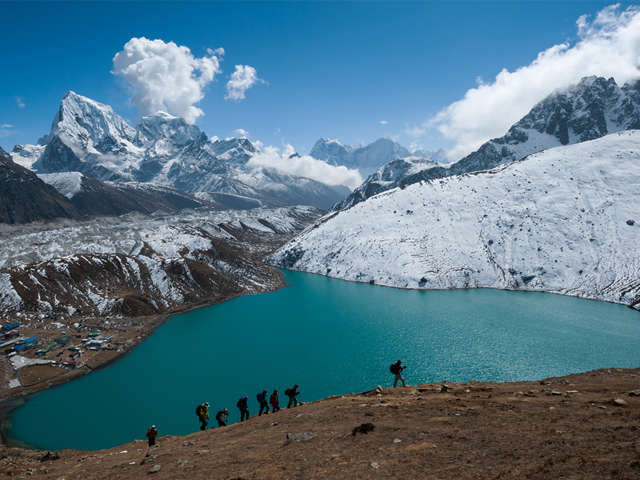
Tip 33: Add on Gokyo Lakes if You Have Time
If you can add a few extra days to your trek, you won’t regret adding on Gokyo Valley. The gorgeous lesser-traveled Gokyo landscape is nestled in a hidden valley of the Khumbu region. You’ll experience tranquil lakes traditional villages, and breathtaking landmarks such as the glistening ice trail of Cho La pass and the famed Kala Patthar black rock. Trekking Everest Base Camp & Gokyo Lakes only takes and three days longer than the traditional Everest Base Camp trek and is well worth the journey.
Tip 34: Bring a Camera
Hiking to Everest Base Camp is an accomplishment! While it seems obvious to bring a camera to document your success and to take photos of some of the stunning views, you’d be surprised how many people forget to pack a camera. Make sure you bring extra batteries and take care to keep them charged for the best moments of the trek (see tip #30 above).
How Can We Help?
Do you have any questions about trekking to Everest Base Camp and how to best prepare for your journey? Let us know! Reach out today to speak with one of our Adventure Specialists.
Rob is an outdoor enthusiast and traveler who got tired of staring at the mountains from his desk, he now spends every minute he can on them instead. He fell in love with Nepal on his first visit and has looked for every opportunity to get back to the Himalayas ever since. He helps our guests find and plan their perfect Himalayan adventure.
Popular Adventures
What’s Hot

- Antarctica (7)
- Argentina (1)
- Charity (1)
- Galapagos (1)
- Kilimanjaro (15)
- Annapurna (3)
- Everest Base Camp (4)
- Español (1)
- Staying Healthy (1)
- Tanzania (10)
- Travel Updates (3)
- United States (3)

- El Chalten & Los Glaciares 5 Day
- Ushuaia Explorer 5 Days
- Bhutan Highlights 4 Days
- Druk Path Trek 11 Days
- Snowman Trek 29 Days
- Antarctica Air Cruise 8 Days
- Antarctica Express Air Cruise 6 Days
- Polar Circle Air Cruise 10 Days
- Ecuador Explorer 8 Days
- Discover Galapagos 7 Day Tour
- Classic W Trek 5 Days
- O Circuit Torres del Paine 8 Days
- Classic Inca Trail 4 Days
- Galapagos & Machu Picchu 13 Days
- Annapurna Base Camp 14 Days
- Annapurna Circuit 18 Days
- Everest Base Camp & Gokyo Lakes 17 Days
- Everest Base Camp Trek 14 Days
- Island Peak Climb 17 Days
- Kilimanjaro Machame 8 Days
- Kilimanjaro Lemosho 9 Days
- Kilimanjaro Marangu 7 Days
- 5 Day Camping Safari
- 3 Day Camping Safari
- Holiday Cruise
- Kayaking Adventures
- Adventures and Luxury
- Multi-activity Adventures
- Patagonia Self Guided Treks
- Snowshoeing Tours
- Summit Adventures
- Trekking Adventures
- Wildlife Safari
- Packing List
- Lukla Flights
- Trekking Tips
- W vs. O Trek
- Best of Patagonia
- El Chalten (Argentina)
- Route Overview
- Galapagos: Land vs. Cruise
- Galapagos Seasons
- Best of Ecuador
- Migration Safaris
- Camping vs Lodge
- Inca Trail Tips
- Best Treks of Peru
- Ship Options
- Tips for Cruising
- Privacy Policy
- Terms & Conditions
Amazing Treks & Climbs
Get our free monthly newsletter highlighting some of the worlds best treks and climbs.
Get our free monthly newsletter highlighting some of the worlds best treks and climbs. Get Inspired by amazing photos and our practical trekking advice.
Hrmm. Looks like you're using an older browser, which means some site features may not work they way they should. For the full gadventures.com experience, we recommend upgrading to the most recent version of your browser . It's worth it! Honest!
View all tours
North America
Central america & caribbean, south america, north africa & middle east.
Few travellers make it to this icy continent, but the lucky ones who do get to explore a frozen Eden ruled by the elements and teeming with wildlife.
G Adventures Land
G adventures sailing & cruises, g adventures private travel.
Whether it’s a family retreat or a girls trip, you can surround yourself with a hand-picked crew and customize a tour that fits you all perfectly.
The Geluxe Collection
Our new line of premium active adventures is officially here. With perfectly paced itineraries, one-of-a-kind accommodations and elevated dining, this is adventure at its finest.
National Geographic Journeys
Go deeper into the cultures and habitats of the places we explore. More is included and you’ll enjoy greater hands-on exploration, interactions with local experts, and freedom to roam.
National Geographic Family Journeys
Are you an adventure-loving family in search of meaningful ways to discover the world together? These tours are specially designed for travellers seven and up and their inquisitive families.
Jane Goodall Collection
Step deeper into the animal kingdom while respecting all of its inhabitants. Our incredible collection of 20 wildlife-focused tours is endorsed by the world-renowned ethologist.
Roamies by Hostelworld
The thrill of adventure. The awesomeness of hostels. Get ‘em both on these immersive small group trips for 18 to 35-year-old travellers.
Why choose us
As the leader in small group travel for 30 years, we know how to do it right: flexible itineraries, freedom to roam, safety, peace of mind, and locally based guides.
Change the world just by having the time of your life. When you travel with us, you become a force for good by acting responsibly and creating positive impact.
Together with our non-profit partner, Planeterra, we ensure local communities touched by our tours benefit from our visits in as many ways possible.
Trees for Days
Leave your destination even greener than you found it! For every day on tour, we’ll plant a tree in your honour and ensure that our forests get to live their best lives.
Travel resources
Last minute deals.
Looking to have the time of your life in the next 90 days or so? You can save big if you’re ready to book now.
Loyalty discount
Back home from a G Adventures tour? Submit a quick trip evaluation to save 5% on your next tour with us.
Student discount
Got proof that you’re pursuing higher learning? Then we’ve got a travel voucher with your name on it.
All travel deals
New ways to save pop up all the time. Here’s where you’ll find every hot deal in one easy place.
Everest Base Camp Trek
15 days, kathmandu to kathmandu.
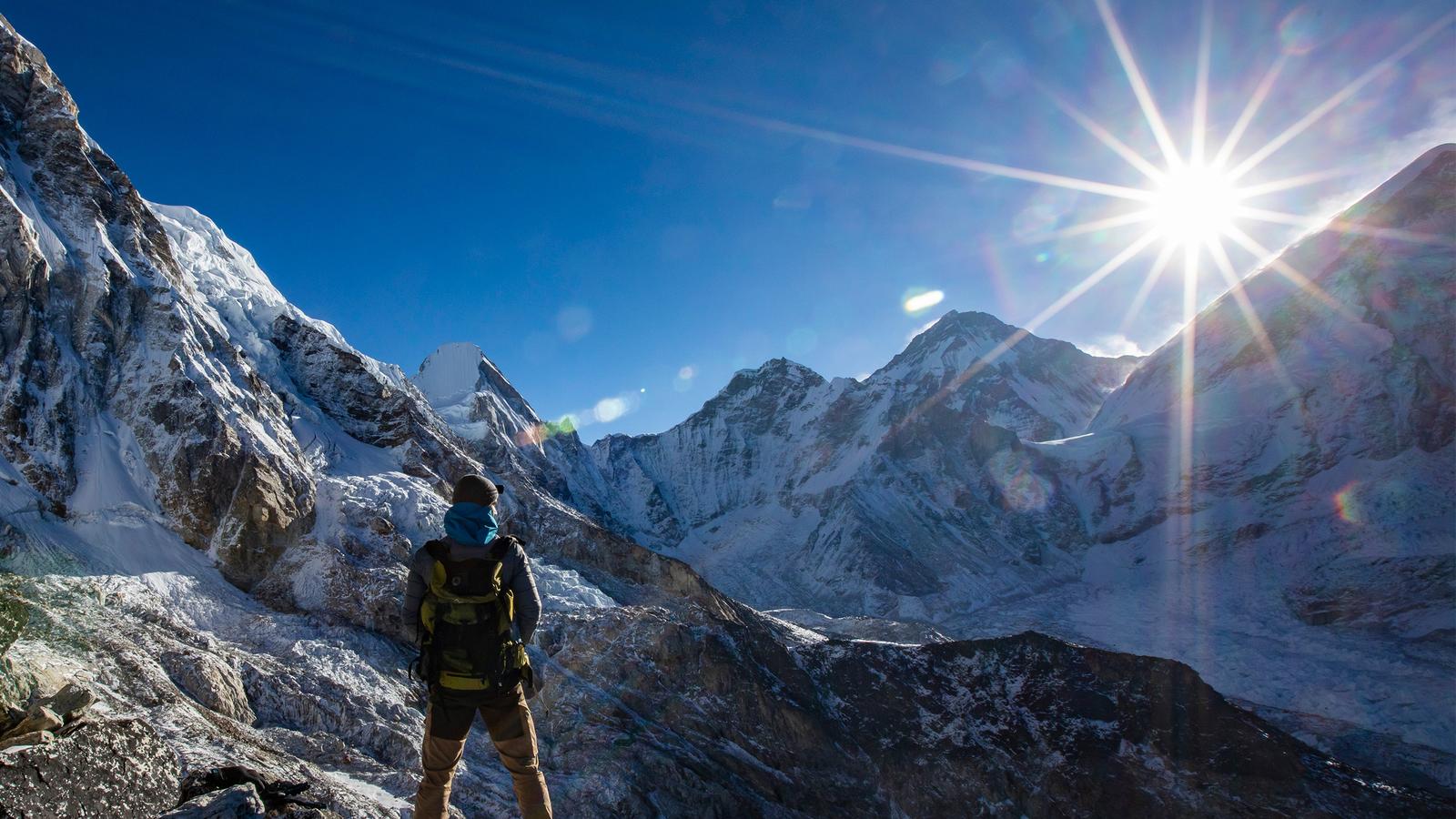
- Full itinerary
- Tour details
Everest is more than a mountain and the journey to its base camp is more than just a trek. Along a route dubbed by some as "the steps to heaven," every bend in the trail provides another photo opportunity — beautiful forests, Sherpa villages, glacial moraines, and foothills. For active adventurers not afraid to break a sweat, our full trekking support staff will bring you close to local cultures before opening a window to the top of the world.
Kathmandu to Kathmandu
Special offers, is this tour for me, travel style: active.
Hiking, trekking, biking, rafting, and kayaking adventures all over the world, made for outdoor types.
Service Level: Basic
Simple and clean hotels and hostels; affordable public and private transport; lots of optional activities.
Physical Rating: 5 - Challenging
Serious high-altitude hikes, cycling, or other instances of heavy exercise. Come prepared to sweat a bit.
Trip Type: Small Group
Small group experience; Max 15, Avg 10
Age requirement: 12+
All travellers under age 18 must be accompanied by an adult.
Check Your Visa Requirements
Before booking, use our handy entry requirements tool so you know which documents you need to enter and travel through the countries on your trip.
See how your trip uplifts communities
In a number of impactful ways, your adventure directly benefits the local people and places we visit.
Help us spread love around the world — with trees! Together with Planeterra, we'll plant one tree in your name for every travel day.
Trees planted for this trip: 15
Ripple Score
Want to create ripples that change lives? The higher the Ripple Score percentage, the more money stays in the local communities you visit.
Ripple Score for this trip: 100
More from Everest Base Camp Trek

Places visited
Ready to hike the Himalayas? Get familiar before you go.
Day 1 Kathmandu
Arrive in Kathmandu at any time. Attend the group welcome meeting.
Exclusive Inclusions:
Day 2 kathmandu/phakding.
Catch the mountain flight to Lukla, enjoying stunning views of the Himalayas. Meet the Sherpas and begin the trek to Phakding.
Day 3 Phakding/Namche Bazaar
Hike to Namche Bazaar, gateway to Everest Base Camp and spend two nights acclimatizing for the trek. The group will hike mostly uphill today from Phakding and it will take around 6 hours to reach Namche Bazaar.
Day 4 Namche Bazaar
During today's acclimatization day the group will hike up to Syangboche at 3860m. Weather permitting, you will be able to spend some time here and enjoy tea or coffee while viewing the mighty Himalayas and of course Everest Peak. Return back to Namche where the remainder of the day is yours to rest as you please.
Total time spent hiking today will be around 3 hours.
Day 5 Namche Bazaar to Tengboche
Set out on a 5–6 hr trek through pine and rhododendron forests before arriving in Tengboche. Tengboche is a small village, and home to the famous Tengboche Monastery, the largest monastery in Khumbu region.
Day 6 Tengboche to Dingboche
Trek to Dingboche, crossing bridges and rivers with sweeping views of the Himalayan region. Walk through forests and alpine meadows and search for wildlife along the way. The group will spend 2 nights in Dingboche to acclimatize.
Day 7 Dingboche
Today is an acclimatization day. Opt to hike to Chhukung or Nagarzhang Peak.
Day 8 Dingboche/Lobuche
Hike through alpine meadows and summer yak pastures towards the end of the moraine of the Khumbu Glacier to Lobuche, which has spectacular views of Nuptse. Today the group will walk for around 5 hours gradually following the trail uphill along a glacial river and through small settlements at Dughla and Thukla.
Day 9 Everest Base Camp (Gorak Shep).
Today includes a challenging climb past the Khumbu Glacier, arriving in Nuptse. From there the group will cross the Changri Glacier to Gorakshep, and then finally enjoy the highlight of reaching Everest Base Camp.
Day 10 Gorak Shep/Pheriche
Enjoy an early morning trek to Kala Pattar for stunning sunrise views of Everest and surrounding vistas. Later, trek to Pheriche along a mostly downhill route.
Day 11 Pheriche to Kenjuma
Today the group descends through Pangboche, the highest permanent settlement in the region, with its great gompa. The trek finishes in Kenjuma. After a long day on the trail, the evening will be spent resting and recouping
Day 12 Kenjuma to Monjo
Continue our trek, following a path that has both ascents and descents. The group will finish today’s downhill trek in the evening upon arrival to the small village of Monjo.
Day 13 Monjo/Lukla
The final day of our trek takes us back to Lukla, where we have a chance to relax after the rigorous adventure we just undertook.
Day 14 Lukla/Kathmandu
Catch the short flight back to Kathmandu, where the rest of the day is free for shopping, sightseeing, or relaxing in one of the many rooftop cafés.
Day 15 Kathmandu
Depart at any time.
What's Included
- Your Welcome Moment: Welcome Moment - Meet Your CEO and Group
- English-speaking local guide and assistants for the trek
- All necessary permits for trekking
- Porters included on the trek
- Trekking to Everest Base Camp
- Internal flights
- All transport between destinations and to/from included activities
Accommodations
Hotels/guesthouses (2 nts), teahouse lodges (12 nts).
No meals included Allow USD360-470 for meals not included.
Transportation
Plane, bus, walking.
Staff & experts
CEO (Chief Experience Officer) throughout, trekking support staff.
Make it a private tour
Book this tour as a private departure, with your own CEO and all the benefits of a G Adventures group tour.
Check Our Risk-Free Booking Policy View Details
No recent searches!
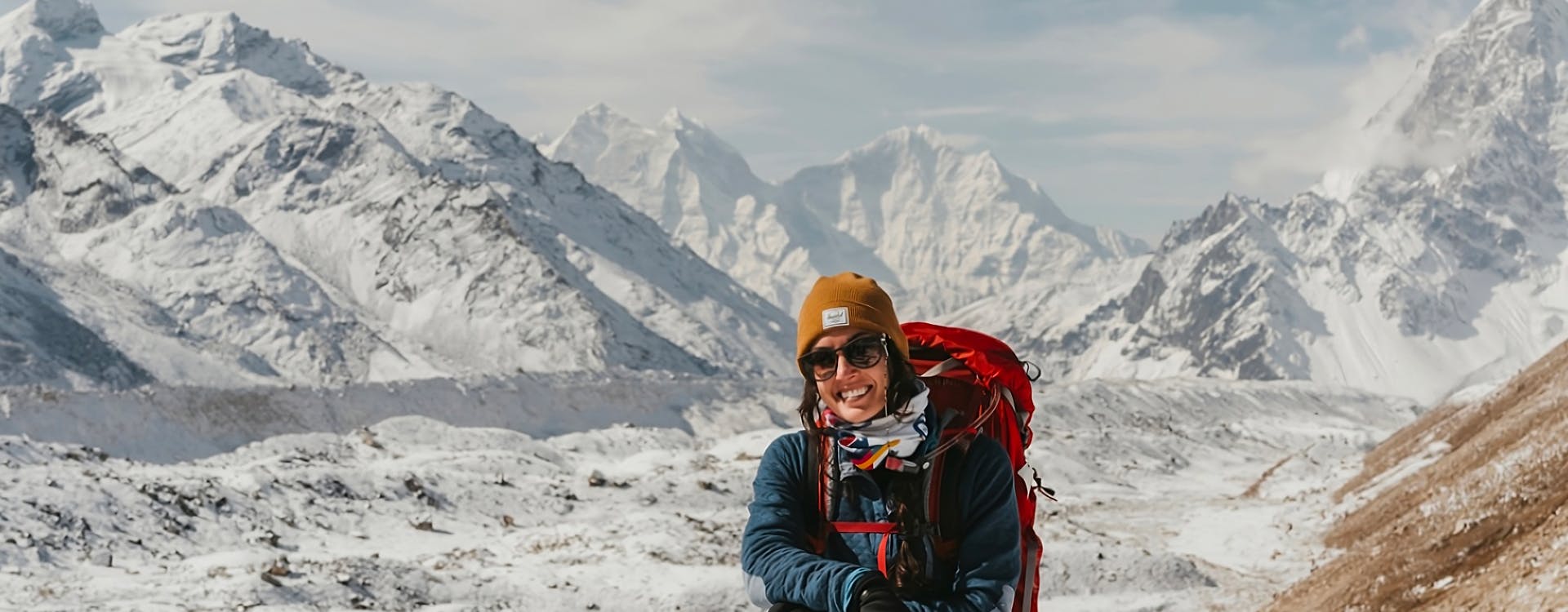
Everest Base Camp Trek
- Customize Trip
- Includes/Excludes
Are you looking for a once-in-a-lifetime adventure? Then, Everest Base Camp Trek is just the thing for you. This trek will guarantee the thrill and excitement of this Himalayan region as long as you are looking for a challenge to reach the foot of the world's highest peak.
At a Glance
Destination, trip difficulty, accommodation, hotel/lodges, max.altitude, march - may & sept - dec, message regarding flight to/from lukla.
During the peak seasons for the Everest Base Camp Trek (March to May and September to November), all the Lukla flights will be operated from the Manthali Airport due to congestion at Tribhuvan Airport.
Trip Overview
The Everest Base Camp Trek is one of Nepal's most exciting and sought-after routes in the Himalayan region. This trek is a 16-day adventurous journey to the foot of the Mount Everest. It is also the highest peak in the world, towering above 8800 meters above sea level.
When you start the trek, you enter through the Sagarmatha National Park, the country's first UNESCO natural heritage site. Within its pristine natural beauty, you can view a forest of Rhododendron and Juniper plants in its all-natural habitat. Despite the flora, you might see some wildlife such as Impeyan pheasant, bearded vulture, snowcock, and alpine chough.
You'll also get a mesmerizing view of the Mighty Everest as well as some other mountains such as Nuptse (Elevation of more than 7000m), Lhotse (Elevation of more than 8000m), and Ama Dablam, which dominates the eastern sky for anyone trekking to the Everest Base Camp.
You will also become familiar with the local Sherpas, one of the Tibetan Ethnic Groups, where they offer modern infrastructures for all global trekkers. You will be able to see the ethnic culture of the Sherpa community and also see their lifestyle living up to high altitudes.
Major Highlights of the Everest Base Camp Trek
- Everest got its fame when Sir Edmund and Tenzing Norgay summited it in 1953 AD.
- You'll climb to the foot of the tallest mountain in the world, towering at 8848 meters.
- Enjoy stunning views of all mountain ranges from Hotel Everest View, the world's highest hotel.
- On your EBC trek, marvel at the peaks of Ama Dablam, Lhotse, Nuptse, and Thamserku.
- Visit Sagarmatha National Park, a UNESCO World Heritage Site, to explore diverse Himalayan flora and fauna in a pristine environment.
- Tengboche Monastery, a Tibetan Buddhist monastery affiliated with the Sherpa community, lies on the route to Everest Base Camp.
- Visit Namche Bazaar's Sherpa Museum to learn about the diverse culture, traditions, and lifestyle of the Sherpa Community.
- Kala Patthar offers a sunrise that strikes Mount Everest, and its sunset turns the horizon golden.
- The EBC trek offers a 360-degree panoramic view of the entire Himalayan range, including Ama Dablam, Mount Nuptse, and Everest itself.
- Lukla Airport is one of the highest-altitude and most dangerous airports. Landing there can give you a sense of thrill and achievement.
- Reaching Everest Base Camp is the ultimate goal of the trek, giving a sense of extraordinary accomplishment. Your Journey to the Everest Base Camp
Your Journey to the Everest Base Camp
Your Everest Base Camp Trek will start when you arrive at the Tribhuwan International Airport (TIA) in Kathmandu (KTM), Nepal, where you will be received by the Nepal Hiking Team (NHT) member. Then, you will be guided to a hotel in Kathmandu, which is centrally located near the tourist hub and perfect for exploring the surroundings on foot, doing some shopping, and discovering eateries & restaurants.
After spending two nights in Kathmandu, you will fly to Lukla from either Kathmandu Domestic Airport or Manthali Airport in Ramechhap, depending on the season. Your 'Everest Base Camp Trek' begins at Lukla Airport.
The trek follows the Dudh Koshi River through Sagarmatha National Park. After spending a night in Phakding, the journey continues towards Namche Bazaar, where you stay for two nights to acclimatize by strolling to the Hotel Everest View, the highest-placed hotel, and admiring ancient stupas, Sherpa museums, and Memorial Stones. Equipment or data plans can be purchased in Namche for a smooth internet connection at the foot of Everest.
Then, continuing your walk-through of the trails to a monastery at Tengboche Village, you can take your time to adore the mesmerizing view of Everest, Nuptse, Lhotse, and Thamserku. After arriving at Dingboche, you will be awed by the spectacular Ama Dablam and walk towards Nangkartshang Peak.
Keep following the EBC route, you'll reach Gorak Shep after twists and turns through the Khumbu Glacier, and then finally, you will reach the Base of Mount Everest. You can witness how the Khumbu Icefalls mesmerize you as it unwind the timeless beauty of this region. After a few moments of admiration, you will descend to Gorak Shep for an overnight stay.
The next day, you hike to Kala Pathhar to watch the sunrise rising from Everest. After that, you will descend to Pheriche, retracing through Tengboche, Phunki Tenga, Kyangjuma, Namche, and Phakding, where you aim to conclude your trek by reaching Lukla again.
For any customized EBC trek as per your preference and experienced Everest guide, Contact the Nepal Hiking Team.
Day 01: Arrival at Tribhuvan International Airport, Kathmandu, followed by a transfer to your Hotel
Upon arriving at Tribhuvan International Airport, one of our representatives or guides will greet you with “Nepal Hiking Team” signboard. He will be waiting for you outside and opposite the terminal hall. He will then take you to the hotel.
Day 02: Rest and prepare for your trek
Today is your rest day for the jet-leg recovery. We will brief you regarding your trip, review your itinerary, collect your travel documents (a copy of your passport and insurance), and pay for your trekking package. We will introduce you to your trek guide and provide complementary gear, such as a down jacket, sleeping bag, trek map, duffle bag, etc.
Day 03: Flight from Kathmandu or Manthali Airport to Lukla, followed by a trek to Phakding (2,652m/8,699ft). Walking Distance: 8 km, Duration: 3 hours
The day begins with an exhilarating flight to Lukla, either from Kathmandu or Ramechhap Airport, depending on your travel season.
Upon reaching Lukla, we hike towards Phakding, crossing over Chauri Kharka, Choplung and Ghat. These are some of the Sherpa villages that can be found on the trail to the Everest Base Camp. We spent the night at a guest house in Phakding.
Day 04: Depart Phakding and trek to Namche Bazaar (3,440m/11,283ft). Hiking Distance: 10 to 12 km, Duration: 6 hours
This day’s hike will be more challenging than the day before. You will begin hiking after breakfast. On the way, you will come across more Sherpa villages like Benkar and Chumo on your way to Monjo - the checkpoint to enter Sagarmatha National Park.
Before reaching Monjo, the trail will become steeper as you climb uphill toward Jorsalle village. However, the tiring hike will then lead you to a stunning view of the mountains, Kusum Kanguru (6,367 m), Thamserku (6,608 m), Everest (8,849 m), and Nuptse (7,861 m).
You will reach the Namche Bazaar by hiking up the steep hill with spectacular mountain views in the background. You will spend the night at a guest house.
Day 05: Acclimatization Day – From Namche to Everest View Hotel and back, Walking Distance - 3 to 4 km, Duration: 3 to 4 hour
Today is your first acclimatization day. To ensure your body adjusts to the elevated height, you will spend the day hiking to Hotel Everest View (the highest hotel in the area, at 3880 m).
Hotel Everest View is a popular hotel in the Everest Region. From this point, you will get a unique 360-degree view of mountains such as Ama Dablam (6,812 m), Thamserku (6,608 m), Everest (8,849 m), Nuptse (7,861 m), Kwangde Ri (6,187 m), Kangtega (6,782 m), Lhotse (8,516 m), Taboche (6,495 m), and Khumbila (5,761 m).
After the hike, you will return to Namche town and spend the night at the guest house.
Day 06: Depart Namche and trek to Tengboche (3,860m/12,660ft). Hiking Distance: 10 to 11 km, Duration: 5 hours
The journey will become smoother after the acclimatization day at Namche Bazaar, as the trail will lead through dense rhododendron forests and occasional Sherpa villages.
Hike to Tengbuche is one of the most scenic parts of the Everest base camp trek, for it offers a marvelous mountain view to trekkers walking along this route. Walking above Dudh Koshi River, you will reach Phungi Thanga village.
Crossing over the Imja Khola - a tributary of the Dudh Koshi River, the trail will become more strenuous as it will be an uphill walk to Tengbuche.
Tengboche is a small Sherpa settlement located under a crescent-shaped ridge. It is famous for Khumbu’s largest Buddhist monastery - Tengboche Monastery.
Day 07: Depart Tengboche and trek to Dingboche (4,410m/14,464ft). Hiking Distance: 11 to 12 km, Duration: 5 hours
You will start the hike from Tengboche early in the morning. On today’s hike, you will come across a few more villages of the Khumbu region, such as Pangboche, Somare, and Orsho. The day’s trek will end after arriving at Dingboche village.
Dingboche is the highest settlement area of the Sherpas. At such a height, it is essential to stay hydrated and a good rest. From here you will be ascending to higher elevations.
Day 08: Acclimatization Day hike to Nangkartshang Peak (5,083m). Walking Distance - 5 to 6 km, Duration: 4 to 5 hours
This is our second acclimatization day. Due to increasing altitude, you will have another day to rest and acclimate. A short hike to Nagargun Hill (5100 m) will help you adjust to the new elevation and keep you feeling active.
The trail leading to Nagarjun Hill is steep and tiring but the view you get after reaching there is worth the hike. You will see stunning pictures of gigantic mountains like Mt. Makalu, Ama Dablam, Lobuche, Lhotse, Nuptse, Cholatse, and Kangtega. After spending some time on the hill, you will return to Dingboche.
Day 09: Trek to Lobuche (4,910m/16,105ft). Hiking Distance: 11 to 12 km, Duration: 5 hours
Today, you will begin trekking towards Thukla. The area becomes desolate and barren from here onwards. You will find only a few alpine shrubs on the trail leading uphill toward Khumbu Glacier.
The trek is more strenuous as it is a steep uphill ascent on the ridge. Once summiting the ridge, you will then reach Thukla Pass. The Pass is adorned with many stone shrines built in memory of those climbers who perished.
After the Pass, you will walk through grassy valleys and rocky terrain to Lobuche village, which generally consists of teahouses catering to trekkers. There are no permanent settlements in this area. You can get a good view of Taboche and Nuptse looming over the tea houses from here.
You can spend your evening hiking to the narrow gap between the moraine and the mountain wall to see the Khumbu Glacier.
Overnight at Guesthouse, Breakfast, Lunch, and Dinner included.
Day 10: Lobuche - Gorak Shep - Everest Base Camp (5364m/17594ft) and back to Gorakshep, Walking Distance - 14 to 15 km, Duration- 8 hours
The day starts with a morning hike towards Gorak Shep, from where you ascend to the foothills of Mount Everest. Apart from the excitement of reaching the base camp, you witness Mt. Everest, Mt. Nuptse, and Mt. Lhoste beautifying the surroundings. At the EBC, you may see ambitious climbers preparing for further ascension to the summit.
After reaching the Everest Base Camp, you experience the ultimate joy of overcoming all the hardships along the rocky trails of the Everest region and making your way up there.
The base camp of Everest holds precious opportunities for you to receive unique rewards: the attractive sight of Khumbu Glacier and Khumbu Icefall, Nuptse (7,861m), Pumori (7,161m), and Lhoste. Take the beautiful memories away with you forever. Click beautiful pictures to show your family and friends before you return to Gorak Shep and spend a night there.
Celebrate your win with the guides and exchange your trek experience with fellow trekkers. We’re glad to have a team to support and guide you through the Everest trek.
Day 11: Gorakshep - Kala Patthar (5545m/18190ft), then trek back to Pheriche (4,210m/13,810ft) — walking Distance - 13 to 14 km, Duration - 7 hours
You will begin the day before sunrise hiking up to Kala Patthar (5,545 m). This will be an opportunity to witness the sunrise from the peak of Kala Patthar. Although the trail is short, it is a steep and rocky climb and, hence, strenuous.
Kala Pathhar is the highest point on the Everest Base Camp Trek. The summit view from here is spectacular. You can capture the first rays of the sun lightening the peaks of the Himalayas and enjoy a panorama of the highest mountains of the world, such as Mt. Everest, Nuptse, Lhotse, Ama Dablam, Thamserku, Pumori, and more.
You will then return to Gorakshep and have breakfast before descending to Pheriche.
On returning to Pheriche, you will walk across a rugged trail towards Lobuche and Thukla Pass. Once descending the steep ridge of Thukla Pass, you will reach a short bridge over a glacial stream, crossing which you will get Pheriche.
Pheriche is a small village with several lodges/tea houses. The Himalayan Rescue Association Clinic of Periche is a voluntary non-profit clinic that helps rescue trekkers and mountaineers who get stranded and injured during their trek.
Day 12: Trek Back to Namche, Distance - 14 to 15 km, Duration- 7 hours
Continuing the descent, you will head down to Namche Bazaar early in the morning. You will revisit some places you bypassed at the Everest Base Camp, such as Tengboche, Phunki Tenga and Kyangjuma. On reaching Namche, you will rest for the day.
Day 13: Return to Lukla, Distance - 18 to 19 km, Duration - 7 hours
Today is the last day of the trek. You will leave Namche in the morning and retrace your steps back to Lukla along the same route of Jorsalle, Monjo, Phakding and Choplung. By this time, you will end your Everest Base Camp Trek. It is almost time to bid goodbye to the majestic site.
Reaching Lukla, you will be taken to your guest house to recuperate.
Day 14: Lukla to Kathmandu
You will board a flight from Lukla Airport to Kathmandu or Ramechhap Airport early in the morning. Then you will be driven to your hotel.
REGARDING THE LUKLA FLIGHT As per the decision of the Civil Aviation Authority, Lukla flights will commence via Ramechhap during the peak season, i.e., March to May and Oct-November, due to the air traffic congestion at the Tribhuwan International Airport (TIA), to/from Lukla flights will be held via Ramechap Manthali Airport. Ramechhap/Manthali Airport is 132 km from Kathmandu, around a 3–4-hour drive. We will have to leave from Kathmandu approx. 2:00 am to get the flight to Lukla from Ramechap/Manthali airport. Flight from Manthali – Lukla flight: Wake up around 2:00 am, drive to Manthali by shared tourist vehicle for about 3-4 hours, and fly to Lukla (20 minutes). Applicable for the peak trekking month of March, April, May, October, and November. Flight from Kathmandu – Lukla flight: Wake up around 5 to 6 am and drive to the domestic airport in Kathmandu for about 30 minutes and fly to Lukla (35 minutes). Applicable for the remaining months, except peak trekking months. We will arrange a transfer between Kathmandu to the other airport without extra cost. We use the sharing vehicle.
Day 15: Reserve day in Kathmandu
We have kept this day as a buffer day to deal with unexpected delays and cancellations of flights due to weather changes. This will avoid the hassles of changing international flights.
Alternatively, if there are no delays and the plan works out as scheduled, you can use this day to relax. You can go on a city tour, get a massage, or do any other fun activities in the city.
Day 16: Tour Ends/Departure
This is the final day in Kathmandu. One of our staff will escort you to Tribhuvan International Airport 3 hours before your departure time. Breakfast included.
If the above Everest Base Camp Trek itinerary does not meet your needs, we can design individualized travel plans based on your preferences and specifications.
Cost includes.
- All ground transport in a private vehicle, including airport transfers.
- Four nights' accommodation with breakfast at a 3-star category hotel in Kathmandu.
- Three daily meals with tea/coffee (breakfast, lunch, and dinner) during the trek.
- Best available twin-sharing lodge for accommodation during the trek. Private bathrooms with hot showers are provided at Phakding, Namche, and Lukla.
- Snacks of seasonal fruits during the trek.
- One highly experienced, helpful, and friendly guide. Porters (1 porter for two people) including their food, accommodation, salary, and equipment. Accident insurance for all staff.
- Round-trip to/from Lukla, including transfers. (Flights operate via Ramechhap Airport during peak season).
- Use of down jacket and sleeping bag while trekking.
- Duffle bag for trekking.
- Trekking map and trip achievement certificate.
- First aid medicine kit including oximeter to monitor oxygen level and heartbeat.
- Sagarmatha National Park Permit fee.
- TIMS Fee- Trekkers' Information Management System (Please bring two passport-size photos for the permit).
- Government taxes & office service charge.
Cost Excludes
- Lunches and dinners while in Kathmandu.
- Personal travel insurance.
- International airfare.
- Nepal entry visa. Upon arrival at Tribhuvan International Airport in Kathmandu, a visa can be obtained quickly. A multiple-entry tourist visa for 30 days is available for US $50 or equivalent in foreign currency. Similarly, a multiple-entry tourist visa for 90 days can be obtained for US $100. Please bring two passport-size photos.
- Soft drinks, including water.
- Snacks and other personal expenses.
- Hot showers during the trek, except in Phakding, Namche, and Lukla.
- Personal trekking equipment.
- Wi-Fi internet and phone calls unless they are free.
- Tips and gratuities for trekking staff and drivers.
Cost and Date
Start Dates refer to your arrival date in Nepal. End Dates correspond to your return date from Nepal.
The Everest Base Camp Trek set departure dates are tailored for the group joining option. If the - days Everest Base Camp Trek departure dates don't fit your schedule, we can include alternative dates that better suit your needs.
Trip Route Map
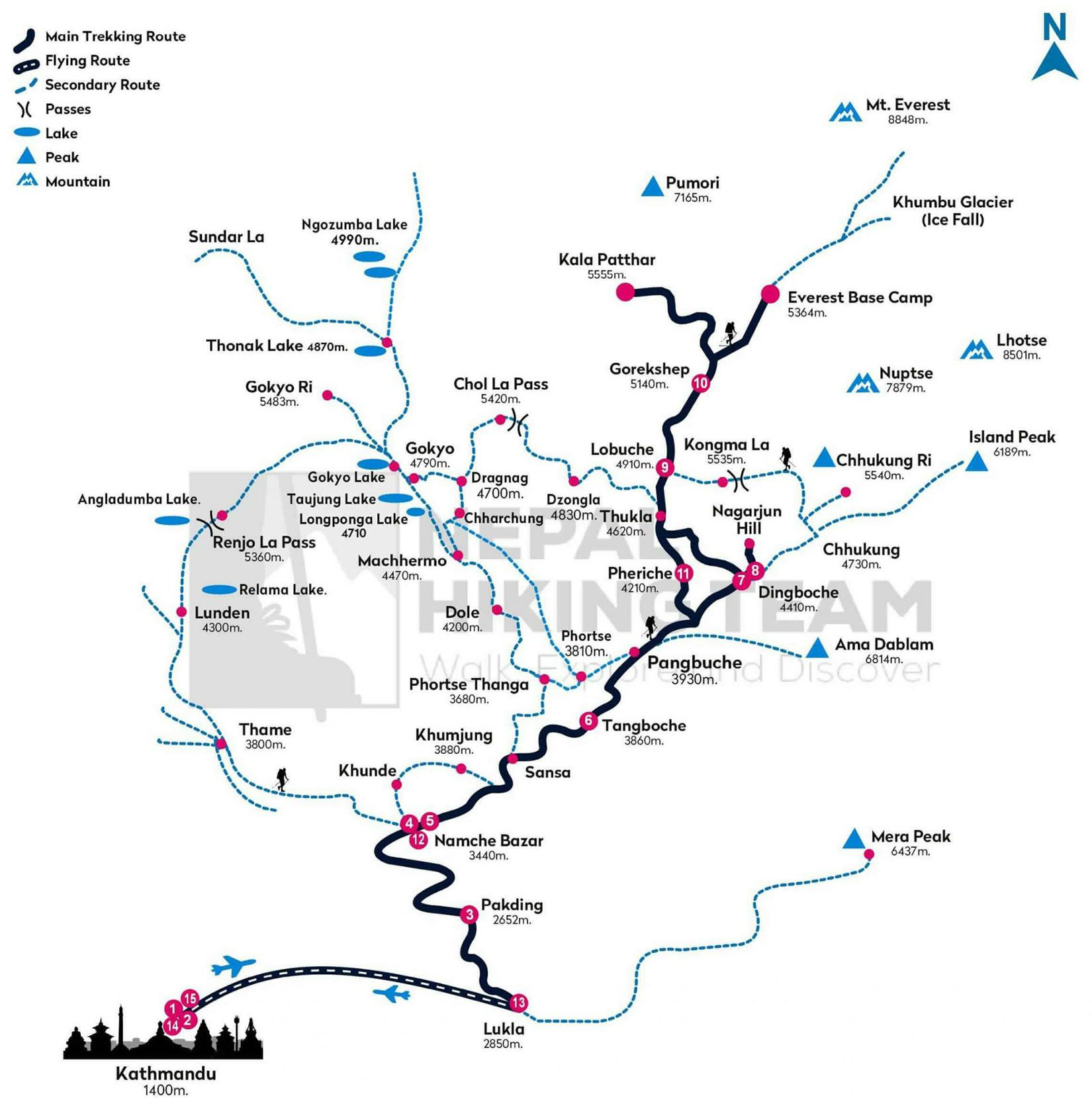
Media Gallery
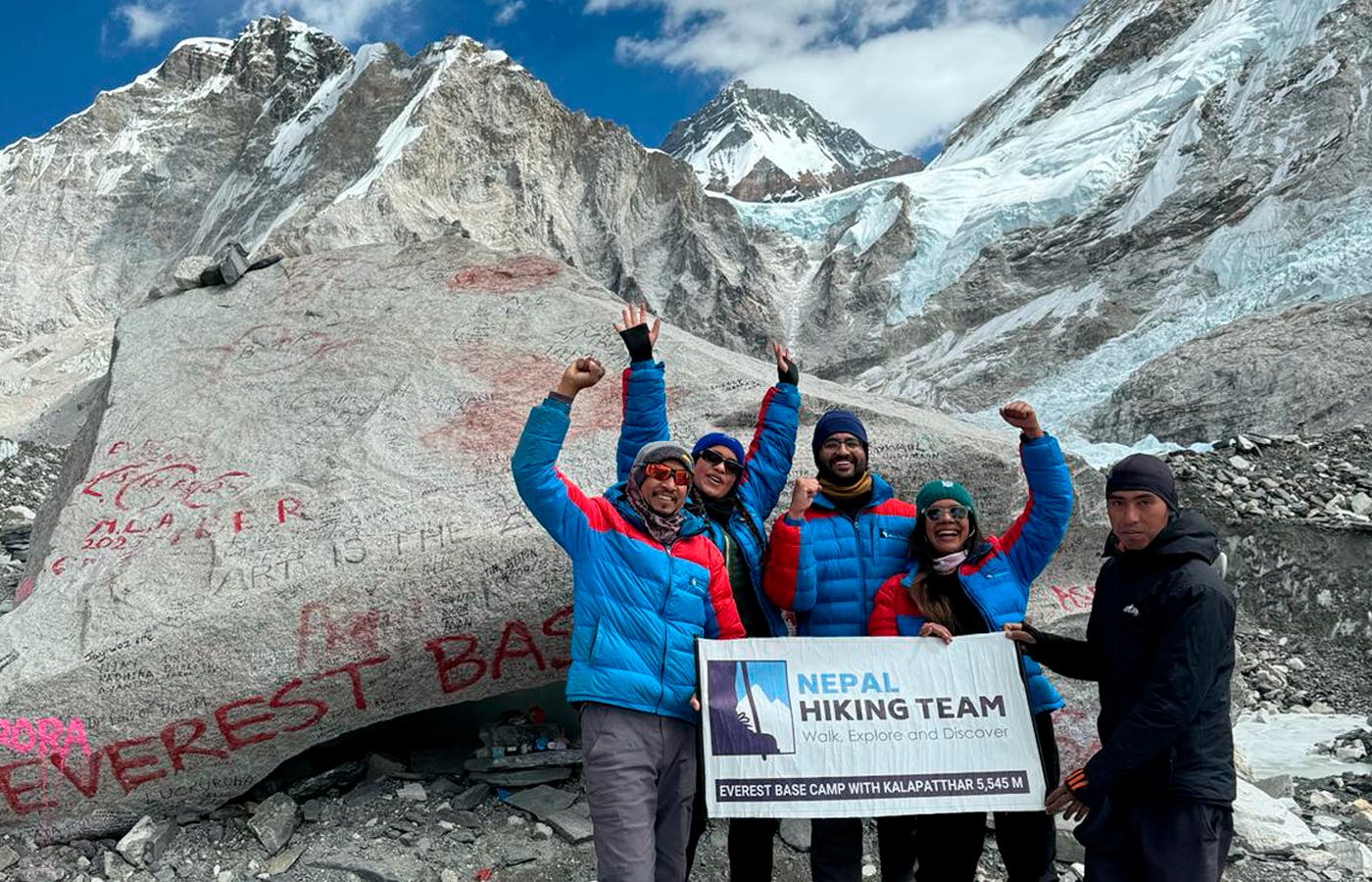
Good to Know
Nepal visa information.
All foreigners require visas, except people from India.
Requirements for the visa application are as follows:
- You will require a valid passport with a 6-month validity, a blank page for the visa stamp, and a passport-size photo.
- Apply for your visa here before 15 days of reaching Nepal. The system will automatically delete your information after 15 days.
- Pay the fee via card or credit card. A 30-day multiple-entry tourist visa costs USD50 or its equivalent in foreign currency. A 90-day multiple-entry tourist visa costs USD135.
- People from Nigeria, Ghana, Afghanistan, Zimbabwe, Somalia, Cameroon, Swaziland, Iraq, Ethiopia, Liberia, and Palestine may contact their local Nepalese embassy for visa application because they won’t get visas from immigration in Nepal.
- Contact the Nepal Embassy or Nepal Consulate in your country in advance for any visa-related concerns.
Everest Base Camp Trekking Permits 2024
You need two permits for the Everest Base Camp Trek (Included in the package)
- Sagarmatha National Park Entry Permit
- Khumbu Pasang Lhamu Rural Municipality Permit
Best Time to Trek Everest Base Camp
Nepal Hiking Team highly recommends Autumn (Sep-Nov) and Spring (Mar-May) as the most favorable time to trek the Everest Base Camp.
Autumn is the best option for clear skies and festive vibes. Choose spring for the refreshing aura of blooming flowers and mild temperature. Monsoon and winter offer crowd-free and serene atmospheres for peaceful trekking, and the weather becomes quite challenging during the seasons, with risks of heavy rainfall and avalanches. Know more about the best time to trek in Nepal .
Tips for Everest Base Camp Trek
- Prepare yourself physically and mentally, as consulted by our trekking leaders, 2-3 months before venturing for the trek.
- Carry protein bars and dried fruits for snacking up in the mountains. Hot lemon, green tea, lemon tea, or garlic soups are great options for hydration at higher elevations.
- Be responsible for your travel. Avoid bottled water and other plastics for ecological safety and to maintain the beauty of the place.
- Not necessarily to mention, but remember to take pictures via camera with a beautiful background of the Everest region.
- Never let your body face dehydration and digestive discomfort; avoid junk foods, alcohol and dairy products at all costs.
- Follow the expert guidance and take enough time for acclimatization. If you face symptoms of Acute Mountain Sickness or AMS, contact your guide ASAP.
- Take personal responsibility for your valuables; store them in your backpack or rucksack.
- Explore the Nepali culture and traditions through our guides and local people.
- For internet access, buy the Everest Link Card for USD 2 - 4, cheaper than Airlink. Make sure to buy a sim card too from Nepal Telecom or Ncell.
- For charging your device, you have options of two and three-pin plug points at USD 1-4 per hour. The electrical standards of Nepal are 230Vvoltage and 50 Hz frequency.
- Device charging facilities are in high demand during peak seasons. So, do carry power banks as an alternative, and to save money in charging.
- Carry cash of NPR 18000-20000 (Roughly USD 180-200) per person for extra expenses like shower, device charging, and Wi-Fi during the EBC trip. Visit one of the money exchange centers or use ATM stations available 24/7 in KTM.
- Feel free to appreciate your guides with tips, for their support – a common practice in Nepal.
- Feel free to extend your travel plan with one of our tour packages leading to Kathmandu, Bhaktapur, Patan, or Chitwan.
- You can choose a private or group trip to Everest Base Camp. You can benefit from our competent guides, sales, and logistics personnel who will cater to your needs.
Customer Testimonials
The Nepal Hiking Team has received excellent reviews on social media and Trip Advisor, Tour Radar, and Trust Pilot. NHT has received over 99% positive reviews on Trip Advisor. Moreover, there are 180+ reviews on TourRadar, 100+ on Book Mundi, and 150+ on Google.
Support and Assistance
Need more support or guidance? You’re just a call or an email away.
Contact our representative at +977 1 4989212 (office landline, 8 am to 6 pm), or send an email to [email protected]
For additional support, feel free to call or send a WhatsApp message to Ganga at +977-9851058678.
Everest Base Camp Trek Video
Key Information
Is the nepal hiking team different from others.
- NHT is a trusted company with a 99% success rate. Most clients are repetitive due to our core values of transparency and honesty.
- The company is run by co-founders Ganga Thapa and Balaram Thapa, with over three decades of professional and hands-on experience in the field.
- The company has won the Travelers’ Choice Trip Advisor Certificate.
- NHT has been serving clients like family members since 2009.
- The NHT professional guides are trained from TAAN and NATHM and have 10+ years of experience.
When is the best time for trekking?
March to early May and September to November are the most suitable times for trekking in Nepal. You can consider treks from December to February to evade too many people on the trails, but the temperatures are colder. We would recommend you not to choose the time from June to August, as it is the rainy season, and mountain views are obscured by clouds. Also, there is a high chance that fights to Lukla can be delayed. Trekking routes, too, can be wet and slippery, creating risks while walking. However, if you have a time constraint and can only trek in winter or monsoon, please write to us, and we will respond accordingly.
I have trekking experience. So, do I need a guide?
We strongly recommend a qualified guide during the trek. In remote areas like Everest Base Camp, the guides help to resolve urgent problems that may arise unpredictably. Besides keeping you on the right track on the Everest Base Camp route, they create alternative plans to ensure the success of your trek. We recommend a well-trained guide. Attend an orientation given by them.
Do the guides speak English?
Yes. Some are fluent, but everyone can converse well in English. They also aid in communication with local people.
Do I need previous trekking experience?
No. However, the experts recommend cardiovascular exercises, gym workouts, and hiking practice before ascending the Everest zone. You should eat food with enough protein, carbohydrates, and essential vitamins and minerals to support your physical training. The trek preparation is crucial for avoiding altitude sickness and remaining in good condition.
Is it safe for female travelers to trek solo?
Yes. The Nepal Hiking Team supports solo female travelers wanting to hike the Everest Base Camp with individual consultation, guides, and porters. For more security, travelers can opt for NHT’s trustworthy partners in lodging and food.
Food and Accommodation
What meals can i get during the ebc trek.
The local teahouses serve various fresh and nutritious meals along the trails. You can also get vegetarian, vegan, and gluten-free meals. Menus consist of both international and local cuisine. Please review https://www.nepalhikingteam.com/food-during-the-everest-base-camp-trek for more information.
The local teahouses serve various fresh and nutritious meals along the trails. You can get a mix of local and international cuisine. Nepali Dal-bhat is a good choice because it is a good source of carbohydrates and protein. If you’re vegetarian or require gluten-free meals, we can accommodate your diet choice during the EBC Trek.
Please review https://www.nepalhikingteam.com/food-during-the-everest-base-camp-trek for more information.
What kind of toilet facilities are available during the EBC Trek?
Teahouses at lower elevations usually have western-style toilets and good water supply. Bathrooms are generally shared and only luxury lodges have attached bathrooms at lower elevations. Teahouses higher up have the Asian style toilets.
What type of accommodation is available on the EBC Trek?
You will find teahouses, lodges, and guesthouses along the EBC trails and they offer comfortable rooms. Note: usually, two trekkers occupy a room.
How do I access drinking water?
You can buy mineral water or boiled water in the teahouses. On the trails, you can get water from public taps or springs, but you must treat it with water-purifying tablets. Bottled water pollutes the environment, so we possibly suggest you use treated water, as it will help to keep the Everest region clean.
Besides, as you go higher, the cost of bottled or boiled water increases.
Note: You can use water purification tablets that our guide will carry on the trek.
What kind of toilet facilities are available during the EBC Trek?
Teahouses at lower elevations usually have sitting toilets and a good water supply. Our itinerary includes private bathrooms, available only in Lukla, Phakding, and Namche. Teahouses at higher elevations have squat toilets, and they are shared.
Booking and Payment
Do you require a deposit to confirm my ebc trek.
Yes, you have to make a 20% deposit of the total cost to confirm your EBC Trek with us.
How do I book my EBC Trek with you?
In order to book your trip with us, please follow these guidelines step-by-step.
First, you must check the itinerary on our website, as recommended in our email correspondence. We can also customize the itinerary as per your preferences and requirements.
If the itinerary meets your needs and requirements, please contact us to learn about its availability. Also, check our departure dates.
Upon confirming with us, you now need to complete your reservation form either via the departure date (book now bottom) or by sending us a direct booking link.
After that, you can deposit 20% of the total cost and pay the remaining amount once you arrive in Kathmandu (either by card or cash in US dollars). You will receive a payment link via email.
What is your cancellation policy?
We have a simple and straightforward cancellation policy. If you are required to cancel your trip, please send us a trip cancellation request, and we will process it. Keep in mind, the 20% deposit is non-refundable. However, we do offer the option to reschedule, allowing you to apply your deposit as a credit for a future trip that better fits your schedule.
How do I pay my remaining balance on my arrival in KTM?
You can pay your remaining balance either in cash or with a credit card. However, with credit cards, we charge a 3.5% fee, so we recommend you pay in cash if possible.
Practical Information
I would like to learn about the flight to lukla.
Nowadays, most of the flights to Lukla have been redirected from Ramecchap. Especially during the peak season, it has become necessary, as flights from Tribhuvan International Airport (TIA) to Lukla often face air traffic holds, delays, and an increased risk of cancellations.
Ramechap/Manthali Airport is 132 km from Kathmandu, approximately a 4-hour drive away.
If the flight to Lukla gets canceled or delayed, what are the options?
If the flight gets canceled or delayed, the options are to take another flight the next day or reschedule a flight from Ramechap and stay the night there. FYI, we only fly to Lukla when the weather is clear and in favor of travel. Thus, we advise you to keep a couple of extra days in the itinerary for this situation so that you can return home on time if unpredictable weather or emergencies occur. If available, we can also arrange a helicopter to Lukla, which will cost extra.
Should I tip my guide and porter?
Tipping your guide and porter is a great way of expressing your thanks and appreciation. They have worked hard to provide you with a wonderful and fulfilling trek and were your key companions in times of joy and difficulties. Though not compulsory, we recommend tips to trekking staff, a common and practiced norm in Nepali culture.
Can I extend my trek with extra days?
Yes, you can if you have booked a private trek with us. The private trek is highly flexible, unlike group treks, and we can customize your itinerary to your preferences and requirements.
Will there be other extra costs in Nepal?
Yes, there will be extra costs like for showers, extra snacks, charging of electrical devices, Wi-fi, etc. Also, in case your Lukla flights get canceled or you decide to hire a helicopter, you must have funds in cash or on a credit card. Tips for guides and porters are also extra costs.
How much cash do I need to carry on the trek?
You should carry extra cash for other expenses (showers, Wi-Fi, snacks, mineral water, etc) on your trek. NRS. 18000-20000 (Roughly US$ 180-200) per person is a good amount and teahouse/lodge owners accept only Nepalese currency.
Can I withdraw money from ATMs in Nepal
Yes, most of the places in Nepal facilitate the convenient use of credit cards. Locations such as Kathmandu, Lukla, Phakding, and Namche Bazaar are well-equipped with ATMs, simplifying cash withdrawals for trekkers. Utilizing a credit card is not only practical and secure, but it also means carrying less cash.
Who is Eligible?
Is there any age limit to trek in nepal.
There’s no age restriction for anyone considering trekking in the Himalayas. If you are moderately physically fit, you can do any of our treks. We have different packages for all age groups, and we can personally design a package to suit your needs and requirements. You don’t need to feel worried about your plans not working because of the age limit.
You do not require prior trekking experience. As long as you prepare well, you can complete trek to Everest Base Camp. You will walk six to seven hours daily, so we advise you to take up physical training such as cardiovascular exercises, gym workouts, and hiking to nearby hills. You should also eat nutritious diets, which have a good protein and carbohydrate base supplemented with vitamins and minerals.
Is it safe for female travelers to trek solo?
We ensure that females can trek solo accompanied by our guide. The local people in the Himalayas are also welcoming and hospitable. Besides, our guides are alert and aware of our guests during the trek, so feel confident that solo female trekkers are safe in the mountains.
Is it okay to join a group as a solo traveler?
Yes, you can join a group as a solo traveler. We organize several small group-joining treks, so you don’t need to worry about your planned trek being disrupted. The departure dates are guaranteed, and you can be assured that they all occur on the specified dates.
Trekking Fitness
Is trekking in ebc difficult how many kilometers (or miles) is the everest base camp trek.
The EBC trek is challenging in terms of distance and acclimatization. With good preparation, be ready to walk 6-7 hours a day.
The EBC trek is 80.8 miles (Roughly 130 km) long. We trek via Luka – Namche – Dingboche – EBC – back to Lukla. It sounds quite daunting, but it is achievable, as you will cover approx. 15km (9.32) a day, and we complete our trek with an eleven-day walk. The shortest walk of the hike is about 3 - 4 km a day, and the longest would be 20 km of the journey.
How do I get fit for trek?
If you are planning a trek, it is advised to prepare physically at least a couple of months ahead. Cardio exercises such as running, jogging, distance walking or swimming are highly recommended. Also, hiking near your place is a good way of building up your stamina, strength, and endurance.
How can I be confident in knowing I am fit to do the EBC trek?
You should do a physical health examination if unsure about your physical condition. If you suffer from serious health problems that impact your breathing, coordination, balance or other things, you must consult your physician and get feedback.
Trekker’s Well-Being and Safety
Is it necessary for me to carry a first-aid kit.
First-Aid Kits are essential on any trek, and our guides always carry them. The kits have all the required medication, including an oximeter. So, you should carry your own medicines.
What is the Khumbu cough? How can I prevent having it?
During your ascent on the EBC Trek, you may get the Khumbu or hacking cough. Many trekkers get it when they are continuously hiking at high altitudes.
So, it’s important that you
- Keep your neck, mouth, nose, and chest protected,
- Cover your mouth and nose with a buff,
- Ensure your chest and neck are kept warm,
- Use a scarf or balaclava to protect your neck when you sleep at night
- If needed, suck throat lozenges
- Make sure you’re drinking warm water, and
- Adopt a slow pace while taking regular breaks.
Will I get sufficient acclimatization time with the trekking itinerary?
Yes, you will get enough time to acclimate on the EBC Trek, as the itinerary has been carefully planned to prevent Acute Mountain Sickness (AMS). It commonly happens at upper altitudes, and, as a trekker, you need to walk at a steady pace so that your body can gradually adapt to the higher altitude.
If I experience symptoms of altitude sickness, what do I do?
If you experience any symptoms such as headache, nausea, dizziness, vomiting, or shortness of breath, you must immediately inform your guide. They will quickly assess the situation and decide the best steps for you. Sometimes, you will be taken to a lower altitude to lessen the symptoms.
Our guides will also be checking your oxygen level regularly with an oximeter. Upon advice, you can take Diamox for altitude sickness.
What are your safety measures/practices? Are your guides qualified to handle medical emergencies?
Our highest priority during a trek is your health and safety. Our guides will be monitoring you closely, observing any signs of altitude sickness, etc., and measuring your oxygen level regularly. They will have first-aid kits and rescue equipment and, with their phones, can contact the office team in Kathmandu in emergencies.
During the trek, if you get sick, we will arrange for you to take a day’s rest. But if you can’t continue the trek, our guides will arrange for you to be taken to Namche, Pheriche or Lukla, where the nearest healthcare center or clinic exists. If the situation is serious, however, a helicopter will transport you to a hospital in Kathmandu.
Our guides have undergone comprehensive first-aid training and are experienced in high-altitude rescue. Be assured that you are in safe hands to confidently and comfortably enjoy your trek.
What immunizations are necessary?
Vaccination are not require but you can refer to CDC Standard vaccinations are normally recommended. Please look up the CDC link (https://wwwnc.cdc.gov/travel/destinations/traveler/none/nepal. You need to inform us if you have any previous medical conditions when you make the deposit.
Arrival in Nepal and Visa
Who will pick me up at the airport on my arrival.
You'll see one of our staff at the Tribhuvan International airport. He'll be easily spotted as, he'll be holding a “Nepal Hiking Team” display board. In case you have difficulty finding him, please do call us at our emergency contact numbers: 0977-98510 58678 (Ganga) or 0977-9851058667 (Balaram).
Note: Please be attentive and cautious on the arrival outside the arrival building. People here may offer to help you with your luggage or transportation and ask for money. Wait for our staff to pick you. They will never ask for money.
Upon arrival at the airport, can I get a visa for Nepal?
Getting your visa for Nepal on arrival at the airport is possible. Depending on the rush, it takes about 20 minutes to an hour. Please note you need to fill up the application form online before you arrive at the entry point.
Important Notes
- The immigration office at the Kathmandu airport is open 24/7.
- To apply for a visa in Nepal, you need to have a passport with a validity of at least six months and your passport needs a blank page for the visa stamp.
- You can pay visa fees either by cash or credit card.
- Please remember that travelers (citizens), namely from Nigeria, Eswatini, Ghana, Afghanistan, Zimbabwe, Somalia, Cameroon, Iraq, Syria, Ethiopia, Liberia, and Palestine, must obtain a Nepal Visa before arriving in Nepal. They are NOT eligible for an ON-Arrival visa.
- Indian citizens do not need to apply for visa for their trip to Nepal.
Please visit Visa Information on our website, which provides detailed information (visa application, visa fee structure, etc.)
Which hotel will I stay at in Kathmandu?
We will arrange for you to stay at a comfortable and centrally located 3-star hotel. Located on the outskirts of Thamel, usually, we use Woodapple Hotel and Spa or similar and has easy access to closeby markets and restaurants. However, if you have any particular hotel (4 – 5 stat category) in mind, please let us know, and we’ll do our best to meet your needs.
Can I book extra hotel nights in Kathmandu?
Yes, you can book extra hotel nights in Kathmandu. Generally, three-star hotels charge US $55 for double/twin rooms and US $50 for a single room. We recommend the Woodapple Hotel and Spa, which is located on the outskirts of Thamel and convenient for shopping and eating out.
Electricity, Gadgets, and Internet Availability
Can i charge my mobile phone and other devices during the trek .
Yes, you can charge your devices in teahouses, as they have electricity. The two-pin and triangular three-pin varieties are common plug points. Charging services are usually US $1 to $4 per hour. We recommend power banks especially during the peak season, so that you can charge at your convenience.
Will I be able to access Wi-Fi during the trek? Can I use mobile data?
Yes, you can use the internet, as many teahouses provide Wi-Fi. If you want to purchase the Everest Link Card along the way, it costs $2 to $4. Airlink is also available, whch charges NRs. 700 (US $6-7) for 24 hours and NRs. 1200 (US $9-10) for 48 hours. You can use mobile data too, but you need to first purchase a SIM card and data packs from Ncell and Nepal Telecom.
Travellers‘ reviews
Review (s) summary, video reviews: everest base camp trek.
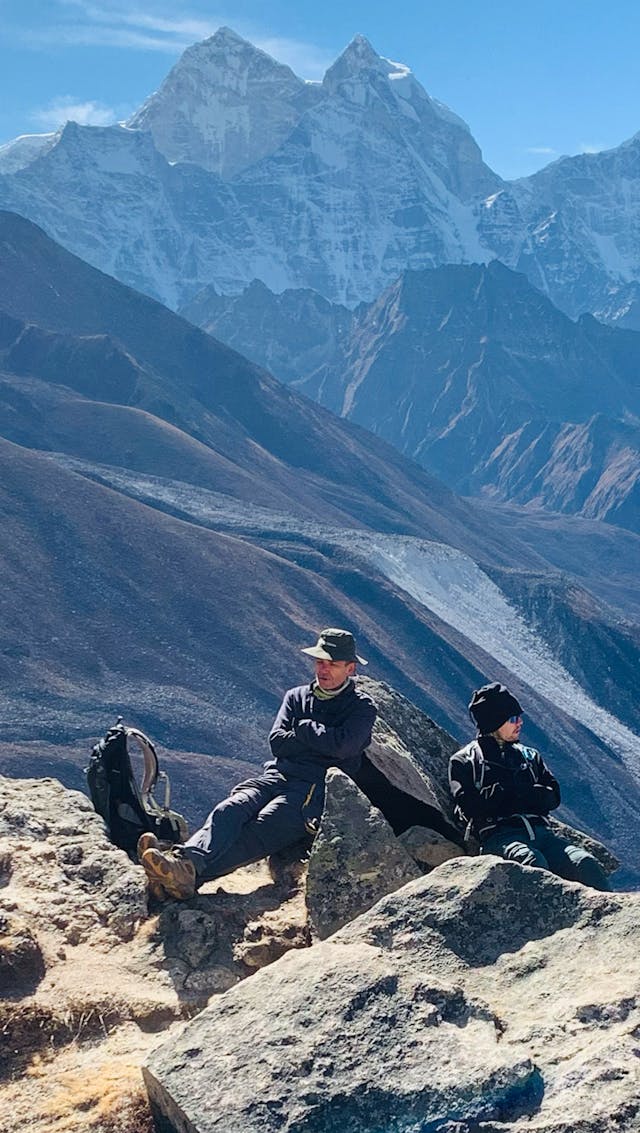
Incredible view of the Khumbu Glacier. #Mike
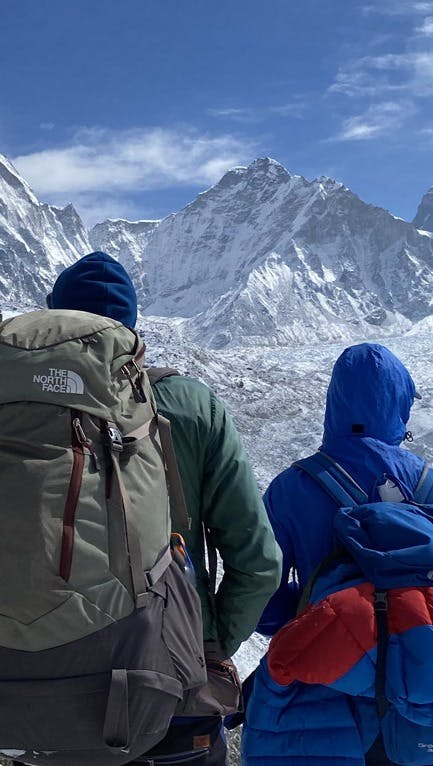
Everest Base camp Hiking
NHT - Everest Base Camp
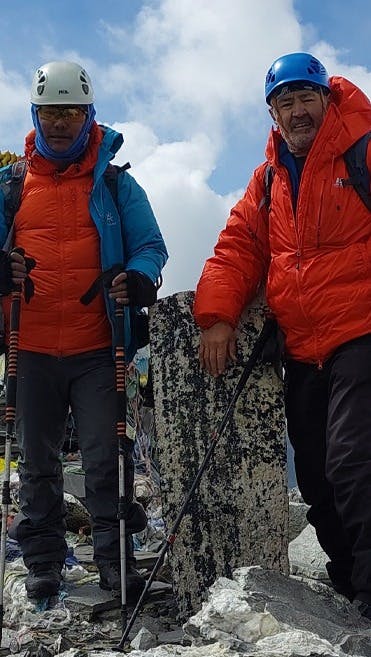
EBC Trek #nepalhikingteam
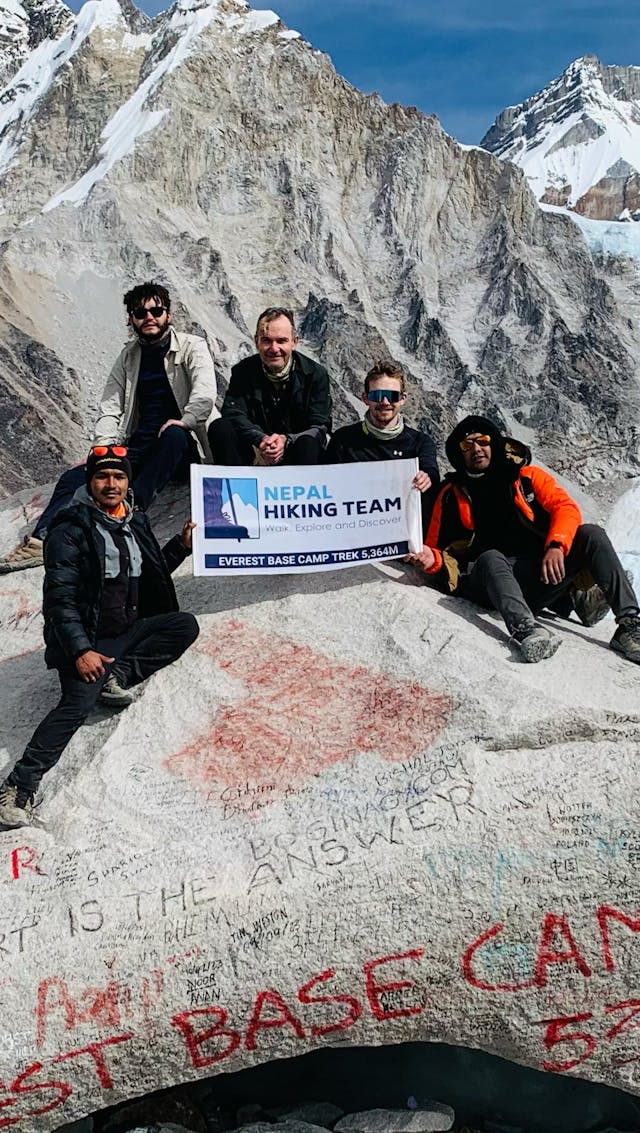
EBC trek in December
Thomas Bryanhealey, Australia
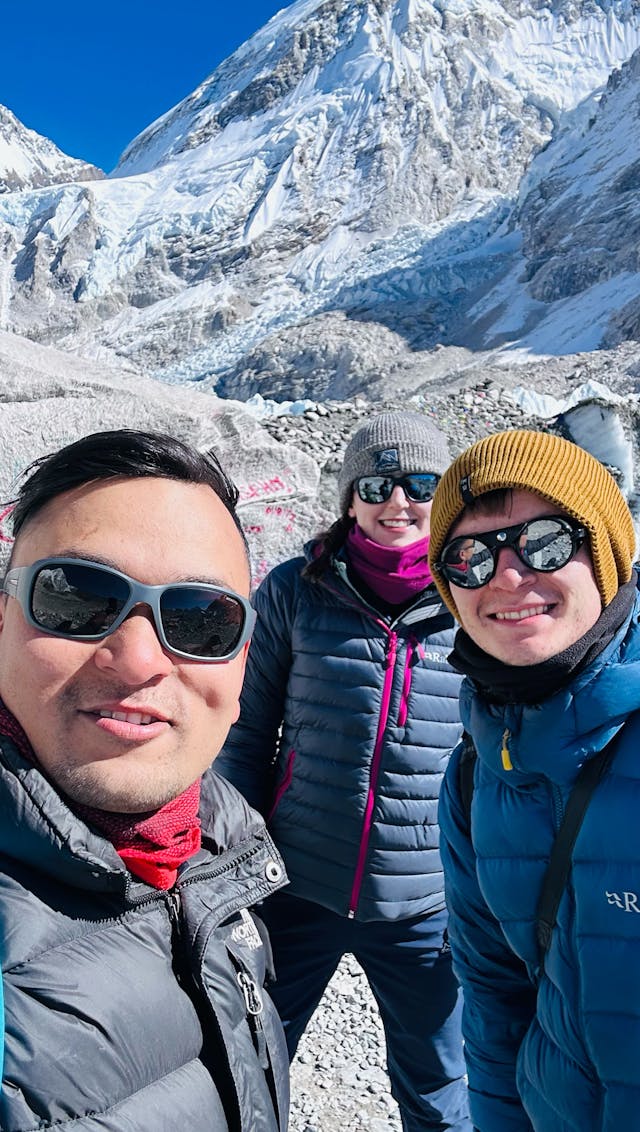
Everest Base Camp
Daniel Joseph Horner | England
Amazing experience
My experience with the Nepal Hiking Team on the EBC trek was nothing short of incredible.
Pawan and his team extended unparalleled patience and support. They enveloped every one of us in care, attentively ensuring all our needs were gracefully met.
Pawan, alongside the extraordinary assistant guides Nima and Shabeen, showed remarkable dedication throughout our journey. With Pawan’s guidance, we were encouraged to pace ourselves gently to stave off altitude sickness—a decision I’m convinced played a pivotal role in our entire group finishing the trek seamlessly and in good health. The accommodations were comfortable, and to my surprise, the food consistently delighted me, surpassing my expectations.
Once back in Kathmandu, boss Ganga proved to be an invaluable asset, always available and incredibly swift in responding to any queries I had regarding the trek.
With a heart full of gratitude, I wholeheartedly recommend the Nepal Hiking Team for the EBC or any trekking adventures in Nepal. Their empathy, expertise, and unwavering support have etched this journey in my memory, making it profoundly special.
Wonderful trek with Nepal Hiking Team Manoj
I recently returned from an unforgettable 12-day expedition to EBC , facilitated by the Nepal Hiking Team. From the moment I initiated contact for booking and inquiries, the Nepal Hiking Team was impressively swift in providing responses.
Our group of three was completely satisfied with every aspect of their service – from the essential information provided before our arrival, the smooth transportation arrangements to and from the airport, to ensuring our accommodations were comfortable throughout our stay, and much more.
Our guide, Manoj, was not only experienced but also exceptionally warm and knowledgeable, making us feel safe and well-cared-for on our journey with him. The thoughtfulness behind the itinerary was evident, featuring a manageable daily hiking schedule and sufficient time for acclimatization to the altitude, which was crucial for our health and comfort.
My happiness with choosing the Nepal Hiking Team for our trek knows no bounds, and I wouldn't think twice about booking with them again for my subsequent adventures in Nepal. Their attention to detail and the personalized care they provided made our experience truly remarkable, and I look forward to planning another trek with them, confident in the exceptional experience that awaits.
Epic EBC trek with seamless organization and an incredible guide! Loved it!
My husband, sister and I had an amazing trek to EBC, which was fully coordinated by the Nepal Hiking Team. They also helped us organize a helicopter for my parents to meet us at Gorekshep. Ganga, Balaram, and the full NHT team did an awesome job managing the many moving pieces (weather, hiking pace, helicopter schedules etc.) to make the whole experience come together so perfectly and seamlessly. We cannot thank them enough!
We also had the BEST guide in Arjun! He is a wonderful, humble, and incredibly knowledgeable guide who went above and beyond to make us as comfortable as possible throughout the trip. His stories about the mountains, the local culture, and his personal experiences added so much more context and understanding, bringing the whole experience to life.
With him, we truly felt like "we came as guests and left as friends". Arjun ji - thank you for bringing such a calming & fun energy to our trek! Good luck on all your upcoming adventures, hopefully we'll be able to join you on another one of them soon!!
Mrs. Romina Nair
Ebc trek in december 2023.
In December 2023 my friends and I embarked on a journey, to the Everest Base Camp alongside the Nepal Hiking Team. It was truly an experience although we did encounter some challenges in Kathmandu before we began our trek.
Ganga, one of the team members went above. Beyond helping us overcome these issues ensuring that our trip was enjoyable and successful. We are truly grateful for his efforts. Ultimately three of us managed to reach the Everest Base Camp on foot while one of our group members opted for a helicopter ride. The important thing is that we all accomplished our goal.
Throughout the trek, Arun served as our guide providing support along with Susan and Ram who carried our belongings as porters. Their dedication ensured that everything went smoothly. We were incredibly fortunate to experience weather in mid-December. It was chilly. With clear skies and plenty of sunshine.
The added bonus was the lack of crowds. Again I want to extend my thanks to Ganga and his team, for their incredible help, throughout this unforgettable journey. I wholeheartedly recommend them! Thumbs up all the way! 👍👍👍
Unforgettable Everest Base Camp Trek
Earlier this year, I went on a memorable trek to the Everest Base Camp with the help of the Nepal Hiking Team. My guide, Ramesh Adhikari, was really helpful and made the whole journey enjoyable. The places we stayed at were cozy and welcoming, and the team's planning made the trip hassle-free. I would like to give a special shoutout to our porter, Bange, for his amazing strength and positive attitude.
The Nepal Hiking Team showed great professionalism and dedication towards ensuring that we had a fantastic trekking experience. Despite the cold weather, the journey was worth it, and it gave us a chance to appreciate the beauty and power of high altitudes if you're planning to trek in Nepal.
I highly recommend the Nepal Hiking Team. They have the expertise and genuinely care about making your journey in the Himalayas an unforgettable experience!
Ms. Elli Hoskin
Make an inquiry, you may also like.
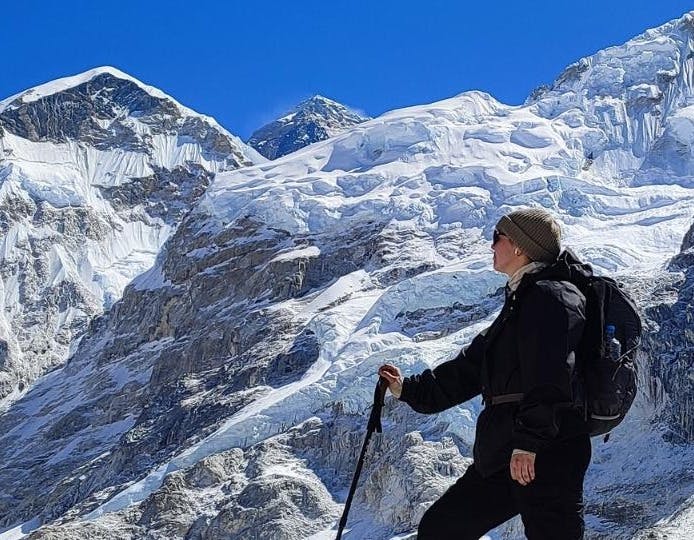
Everest Base Camp Trek by Road
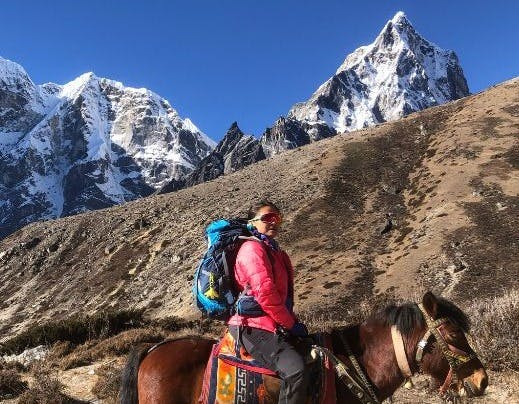
EBC trek on Horseback with Helicopter Return
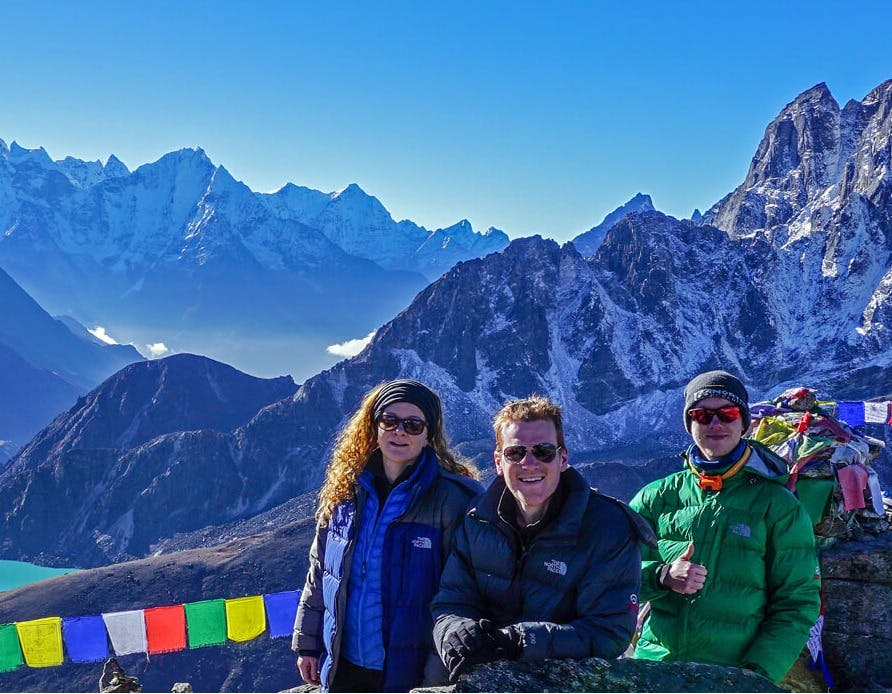
Gokyo - Everest Base Camp (No Chola Pass)
Subscribe our e-newsletter.
Sign up for Deals and Discount. Get News, Notifications and Updates about the recent Events and Offers.

British woman gored by Himalayan yak during Everest hike
A British woman was gored by a Himalayan yak while on FaceTime to her family as she trekked up Mount Everest .
Emma Keen, 42, was hiking to the Everest base camp with a group to raise funds for a kidney charity when she was attacked by the animal.
The shop manager, from south Wales, was left bleeding heavily and with a three-inch cut to her leg, but managed to finish the expedition on horseback after getting 10 stitches.
Ms Keen was four days into the 130km trip when she sustained the injury in Tengboche village, Nepal.
The hiker was speaking to her brother on FaceTime when she spotted the yak standing 6ft away.
She told Wales Online: “Without warning, I could hear the hoofs pounding towards me and then a sharp stabbing pain in the top of my leg. It threw me up in the air, around a metre, and I landed back down with a thud.
“Clutching my upper leg, I looked and the yak was dragging its hoof in the dusty ground ready to go at me for a second time with his horns down. I screamed and managed to raise my leg and shout.”
Fellow mountaineers rushed to Ms Keen’s aid, and she was then airlifted to hospital where her wound was treated.
Carl Marsh, a firefighter who was also on the trek, said he could see blood gushing from the leg injury and called for first aid.
Ms Keen was given 10 stitches at Lukla airport hospital. Despite her injuries, she vowed to finish the charity expedition and later rejoined her group to complete the final leg on horseback.
Ms Keen, who has raised more than £2,300 for Kidney Wales, said: “It was important that I continue with the trek, as it meant so much to me. Before I headed out for the flight, I could imagine myself at base camp – something I had been training for and looking forward to for over a year.”
She was raising money for the charity because her mother suffered from polycystic kidneys and her brother is on the transplant waiting list.
Ms Keen added: “My charity means a lot to me as my brother Peter is currently on the transplant list, desperately needing a kidney. When the accident happened, I just kept thinking of him and how he would feel if I got to base camp.”
Sign up to the Front Page newsletter for free: Your essential guide to the day's agenda from The Telegraph - direct to your inbox seven days a week.
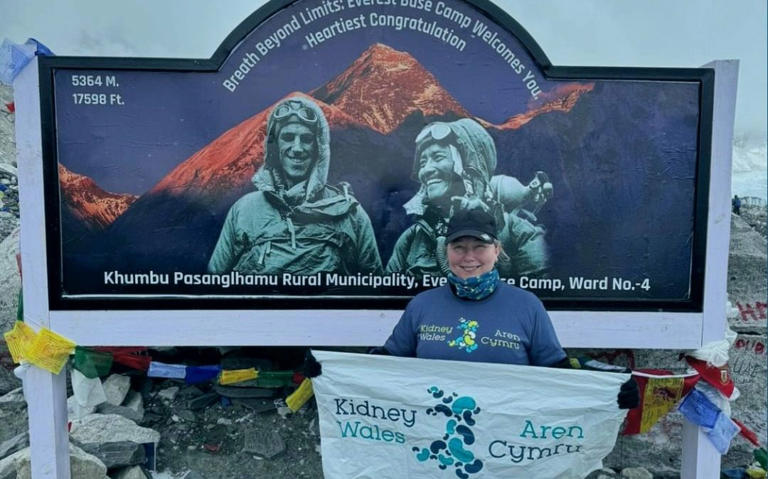

IMAGES
VIDEO
COMMENTS
Jiri to Everest Base Camp. This old-school route mirrors the route taken by the first Everest summiteers in the 1950's, starting with an 8-hour bus ride from Kathmandu to Jiri instead of flying into Lukla. From Jiri, you'll pass through the towns of Sete, Junbesi and Numtala in the Solu Khumbu region.
Everest Base Camp Tours & Trips. Find the right tour package for you through Everest Base Camp. We've got 403 adventures going to Everest Base Camp, starting from just 4 days in length, and the longest tour is 94 days. The most popular month to go is October, which has the most number of tour departures. Find here the best Everest Base Camp ...
The thing that makes the EBC trek tough is the altitude. Base Camp is at 5600m (18,373ft) and you will need to spend one or two nights above 5000m (16,404ft). Above 4000m (13,123ft) you are going to feel increasingly lethargic and out of breath as the amount of oxygen in the air decreases. Combine this with the cold, the discomfort of being at ...
Everest Base Camp & Gokyo Lakes Trek. 19 Days From $1,823. Take the ultimate trek. Walk in the Himalayas surrounded by some of the most incredible... View Trip. Ages 18 to 35.
Khumjung 56000, Nepal. Phone +1 682-558-3926. Web Visit website. Trekking to Everest Base Camp in Nepal's Sagarmatha National Park is the adventure of a lifetime. Although actually climbing Mount Everest is out of reach for many of us, anyone with enough grit and good enough fitness can reach EBC and the Khumbu Icefall, the starting point for ...
Doing the Mount Everest Base Camp trek, hiking on the Khumbu glacier through small villages over many suspension bridges looking at Mt. Everest and the Khumbu Valley is a fantastic round trip. This fascinating EBC trek combines both Buddhist and Tibetan culture following in the footsteps of Sir Edmund Hillary.
Trekking to 5,550m/18,204ft0 at its highest point (Kala Patthar), the two weeks Everest Base Camp trek (EBC trek) is the most loved and popular trekking route in the World. This amazing adventurous journey takes you around the foothills of the renowned World's highest peak, Mt. Everest (8,848.86m). The major attraction of the EBC trek is Kala ...
Photo by colour comet on Unsplash. The trek to Everest Base Camp is a 65 miles (105 km) out-and-back trail, and most hikers will take around 10 to 14 days to travel to and from Base Camp. This trip length will allow you adequate time for acclimatizing at a relaxed pace.
Hiking Guides; Travel Guides; Road Trip Itineraries; All Posts; OMAN. Road Trip Itineraries; Travel Guides; Camping; All Posts; KOREA. Travel Guides; Jeju Olle Trail; Teach English; ... EVEREST BASE CAMP (Return Hike) 6.3 km 2.5 hours: 255 m: 255 m: DAY 9 (Part 2) GORAK SHEP → DZONGLHA: 11.1 km 4 hours: 298 m: 633 m: 4825 m: DAY 10: DZONGLHA ...
DAY 10. Rest day in Louche, morning hike. DAY 11. Trek to Everest Base Camp, overnight at AC Everest Base Camp 5,300m/17,400ft. DAY 12. Base Camp to Gorak Shep Camp in the afternoon 5,165m/16,950ft. DAY 13. Gorak Shep Camp to Kala Patar 5,550m/18,209ft, descend to Pheriche or Dingboche. DAY 14.
Day 11: Everest Base Camp to Pheriche (14,340 ft / 4,371 m) - Today you'll retrace your steps towards Pheriche, hiking first towards Kala Patthar. Oxygen begins to increase and much of this portion is downhill, and you'll have the chance to take in the panoramic views with an easier trek.
6:30am start to the day. Cost: Breakfast 370, Lunch 400, Snack 400, Dinner 400, Coffee 150, Tea 150, Tea 150. Hiked to Gorak Shep at 5,160m (5 - 6 km or 3 hours) - this is normally where people stay after Base Camp. Then hiked Gorak Shep to Base Camp at 5,380m (5 - 6 km or 3 hours). Hiked back from Base Camp to Gorak Shep (5 - 6 km or 2 ...
Here's a breakdown of the trip duration for the Everest Base Camp trek: 1. Kathmandu to Lukla (Day 1): Most trekkers fly from Kathmandu to Lukla, a small town in the Khumbu region, which serves as the gateway to the Everest region. This flight usually takes around 30 to 40 minutes. 2.
Activity Level Level 4. On this 14-day trek, you'll hike up Khumbu Valley towards Everest Base Camp with amazing views of Everest and Ama Dablam, while avoiding higher altitudes. Explore fertile valleys, behold stunning views, and meet the beautiful local people. Trip Start: Kathmandu Trip End: Kathmandu. view trip USD $4999 /pp.
Base Camp. Two little syllables that conjure up dreams as immense and powerful as the Himalayan Mountains themselves. This 15-day trekking trip is your chance to make these dreams come true, to challenge yourself and discover both the majesty of the mountains and your own potential. Walk among giants of nature and revel in the sense of freedom ...
Trekking to Everest Base Camp Tips. Check out our Everest Base Camp Trek in Photos post. 1. Bring cash - Both USD and Nepal Rupees. There are no ATMs in Lukla or Namche Bazaar. Exchange rates are also very dismal so bring rupees with you at least $200 worth. 2. Pack your own tea.
Below, our Everest Base Camp adventure guides have pooled their tip tips, tricks, and travel hacks to help you plan and enjoy your trek to Everest Base Camp. Tip 1: Budget Accordingly Treks in the Everest Region are relatively affordable, especially when you consider most trips to this area last 14-21 days.
15 days, Kathmandu to Kathmandu. Overview. Full itinerary. Tour details. Everest is more than a mountain and the journey to its base camp is more than just a trek. Along a route dubbed by some as "the steps to heaven," every bend in the trail provides another photo opportunity — beautiful forests, Sherpa villages, glacial moraines, and foothills.
Best Time to Trek Everest Base Camp. Nepal Hiking Team highly recommends Autumn (Sep-Nov) and Spring (Mar-May) as the most favorable time to trek the Everest Base Camp. Autumn is the best option for clear skies and festive vibes. Choose spring for the refreshing aura of blooming flowers and mild temperature.
The Everest Base Camp Hike, popularly known as "the stairway to heaven" includes simple and rigorous climbs, making it ideal for explorers. Around 35,000 tourists explore Everest Base Camp each year, and about 1000 ascend Mount Everest, the tallest summit on the globe. ... This is the last day of our trip to Everest Basecamp. We leave for the ...
A British woman was gored by a Himalayan yak while on FaceTime to her family as she trekked up Mount Everest. Emma Keen, 42, was hiking to the Everest base camp with a group to raise funds for a ...
February 26 ·. The Everest base-camp trek takes days and over 100 kilometers of hiking. Along the journey, teahouses provide a hot meal and a warm bed. But the porters, who carry upwards of 45 kilograms each day, usually stay in separate lodging from the climbers who hire them. And at over 4,200 meters, getting anything to a teahouse, whether ...